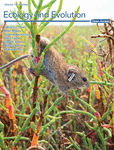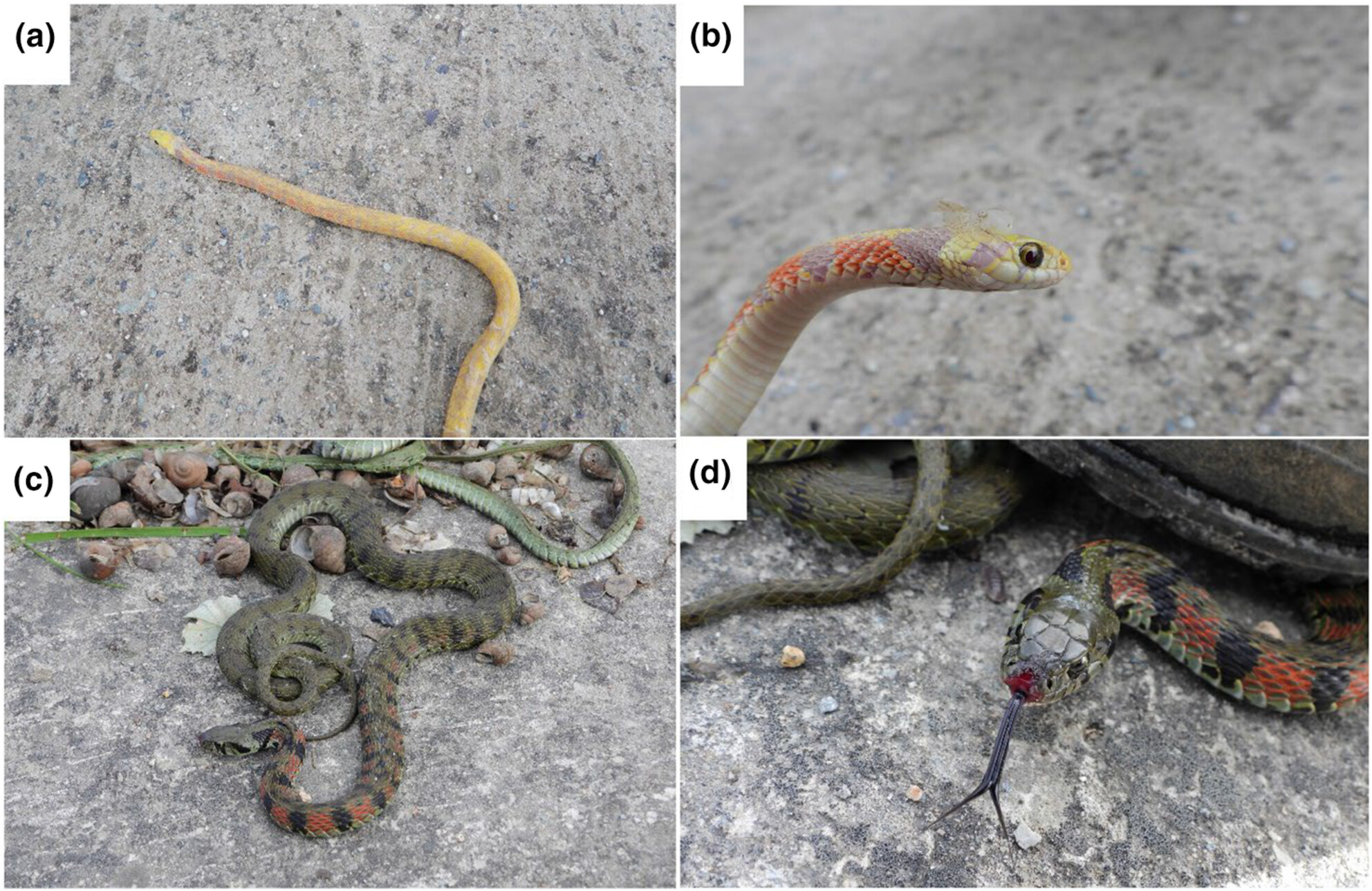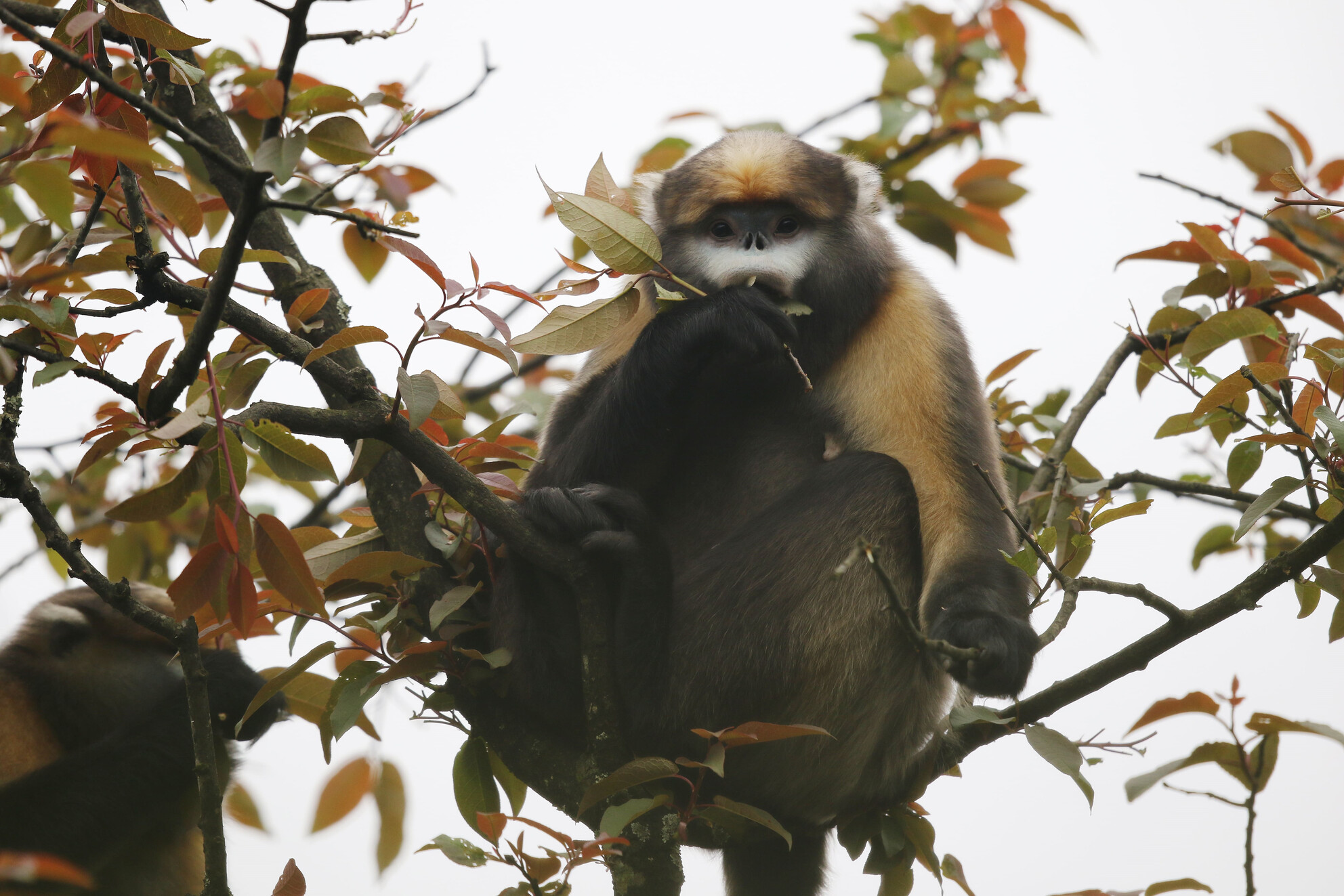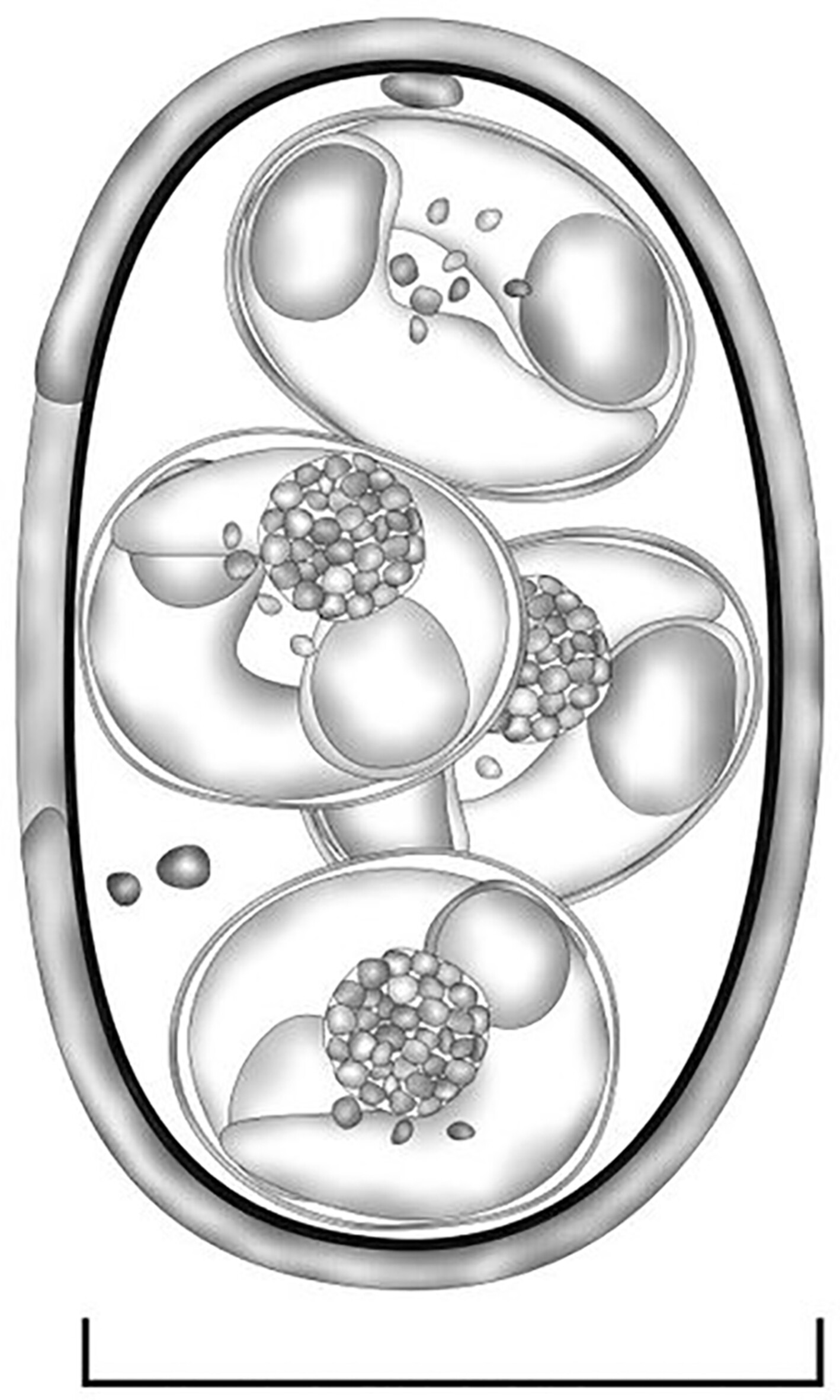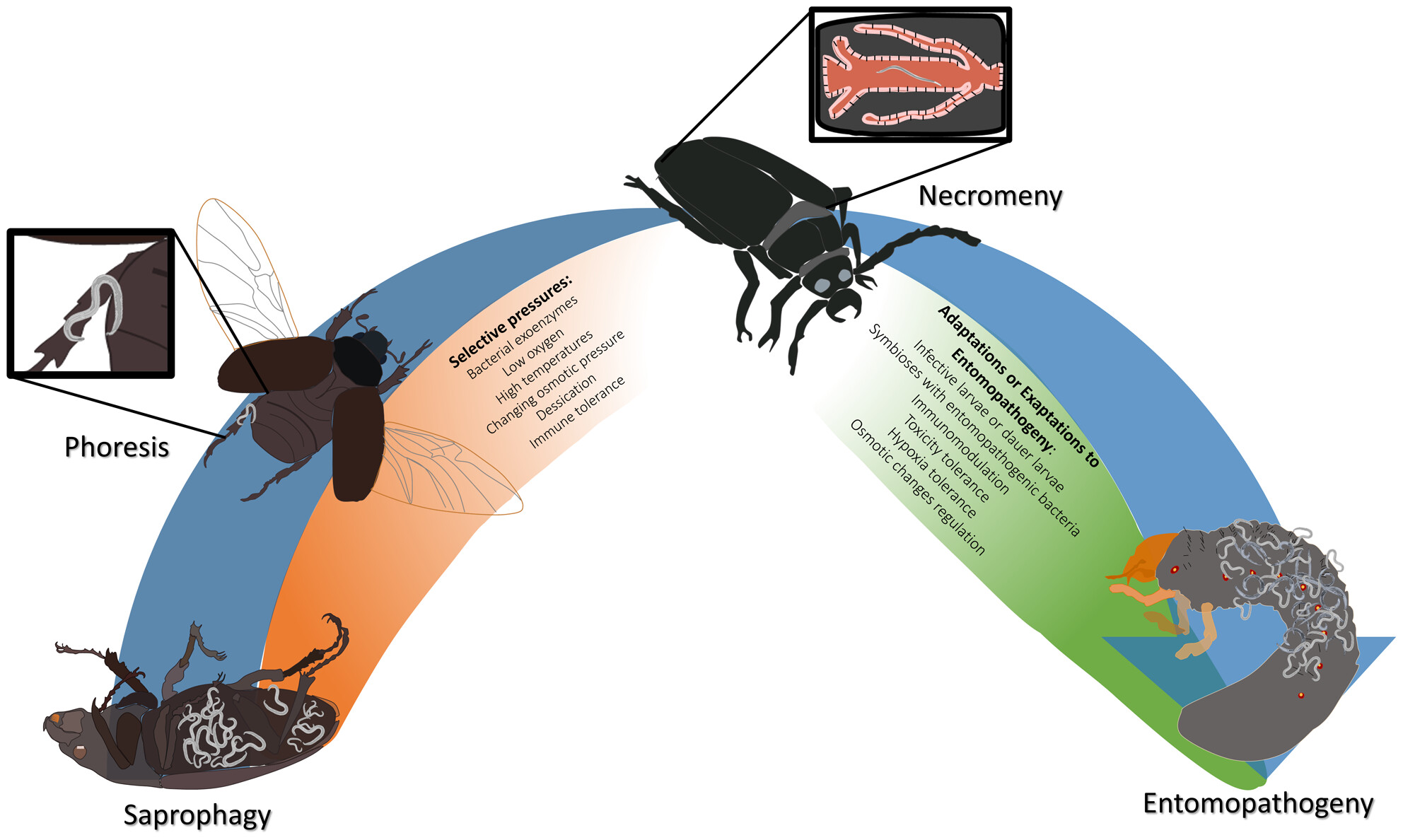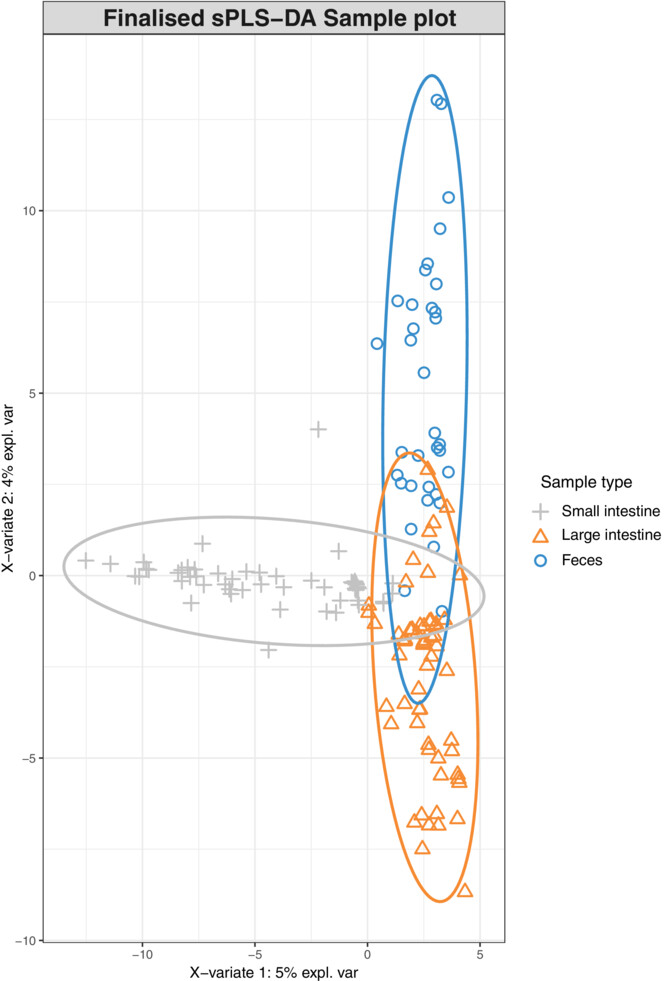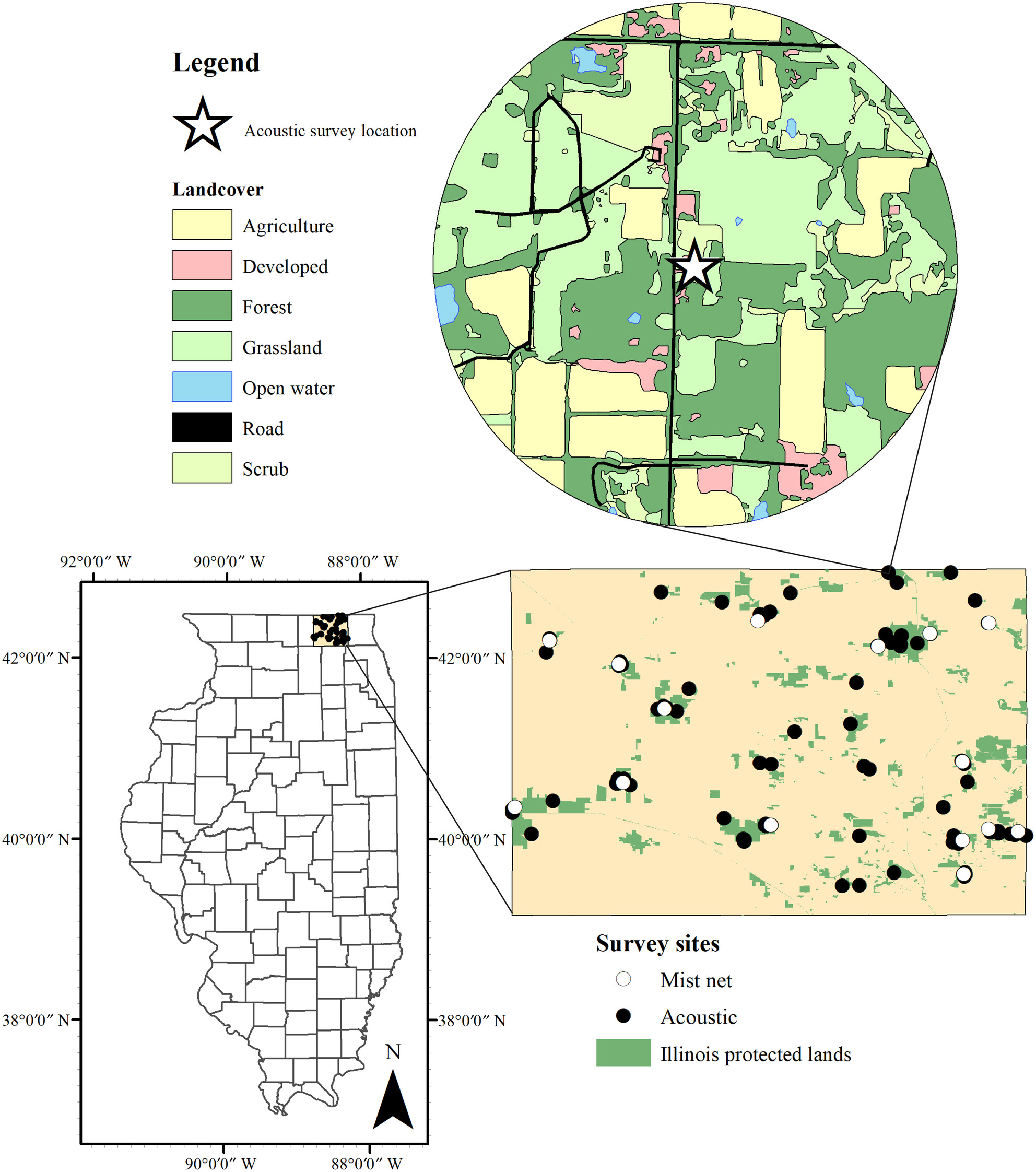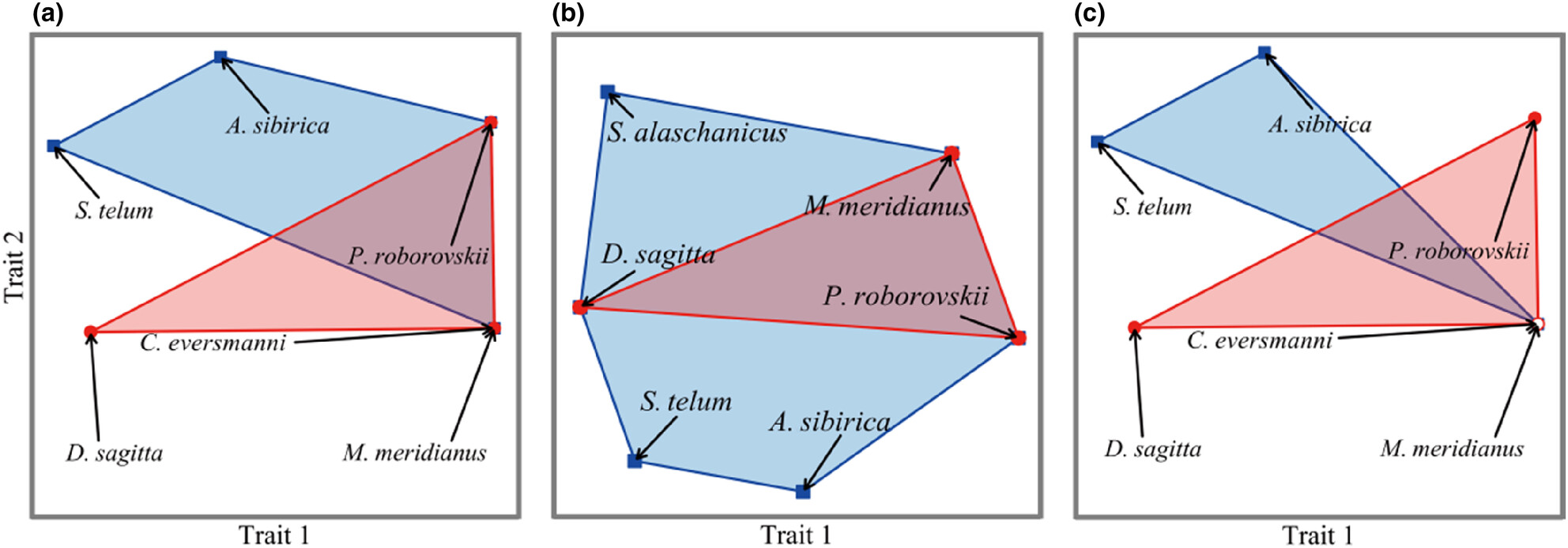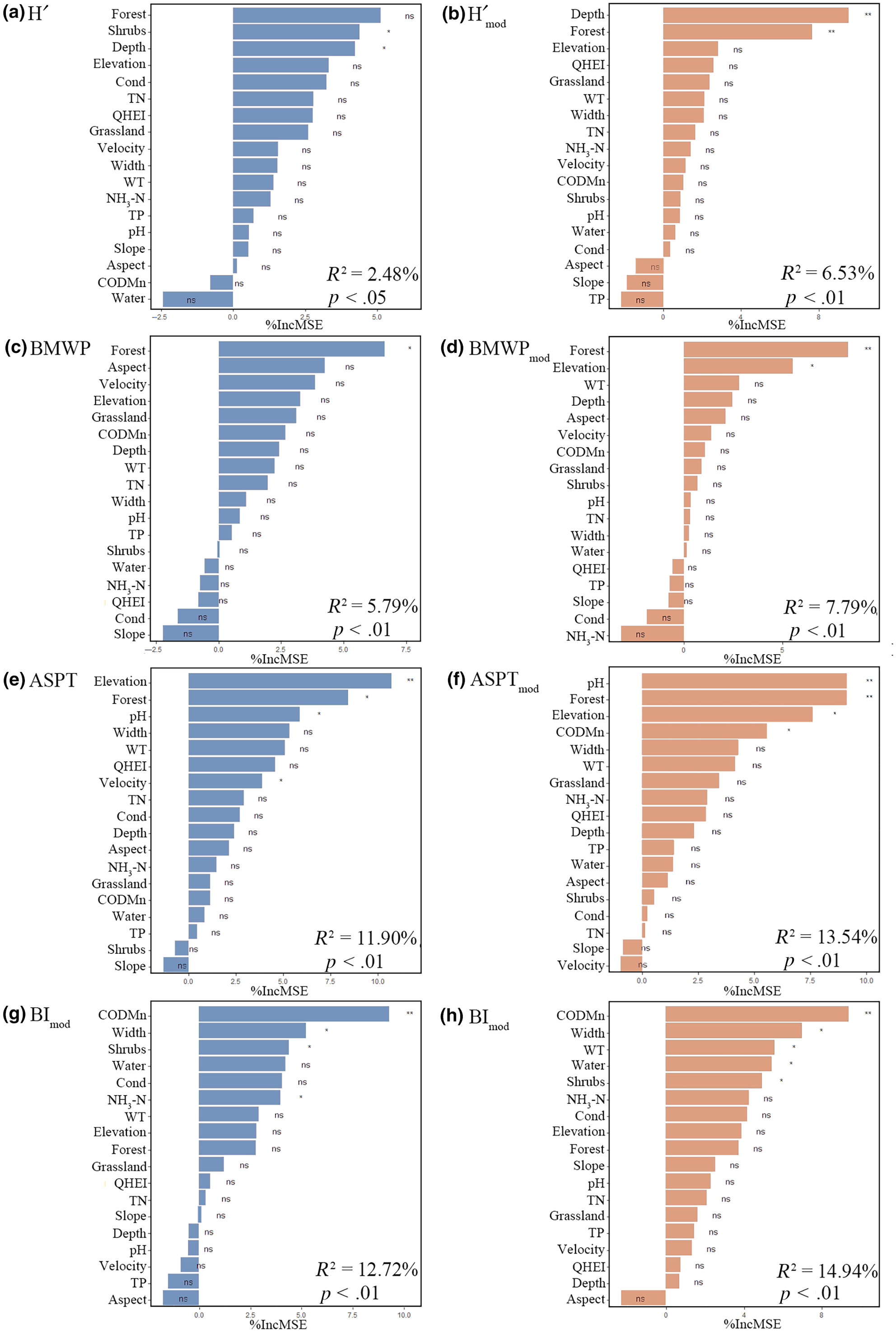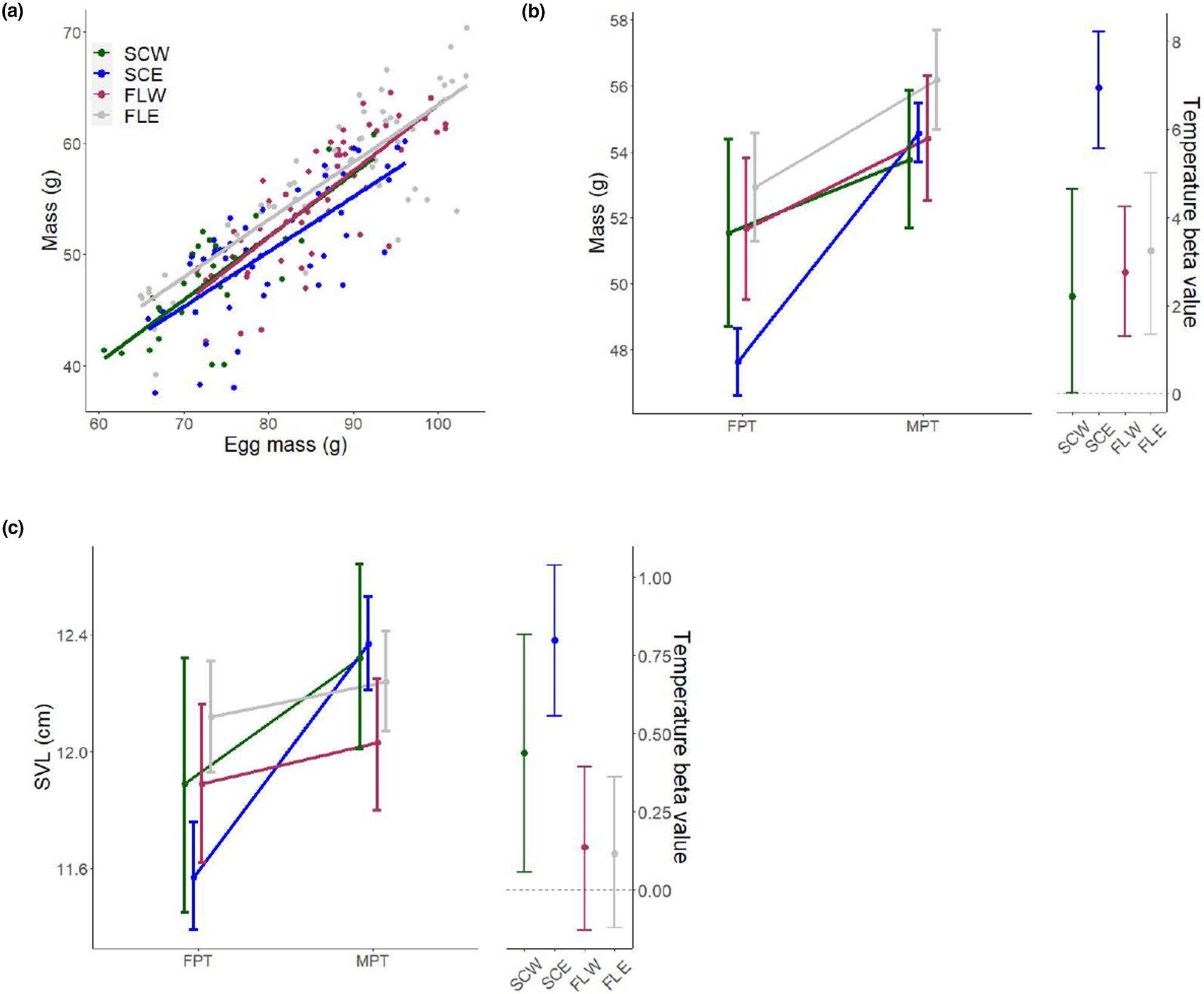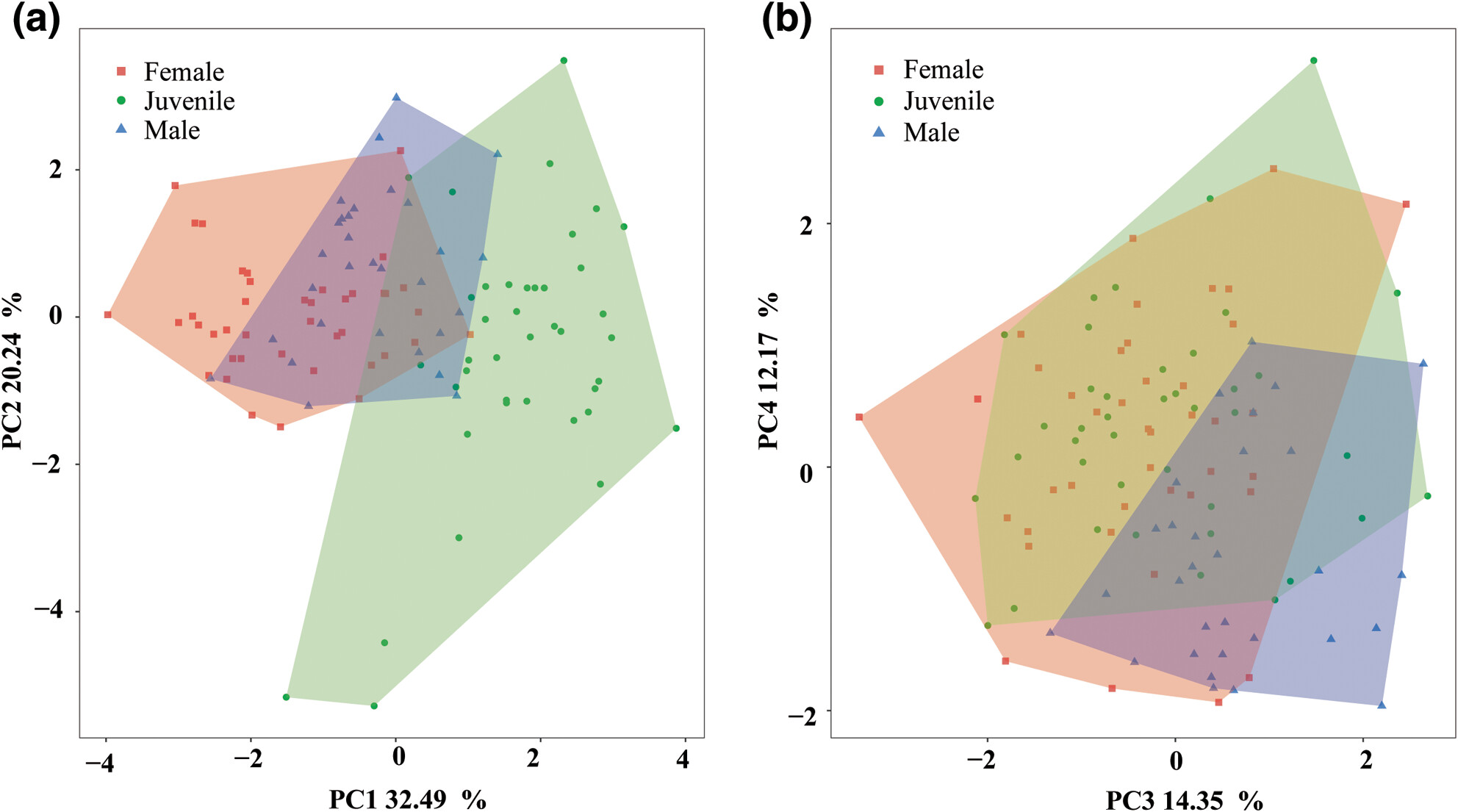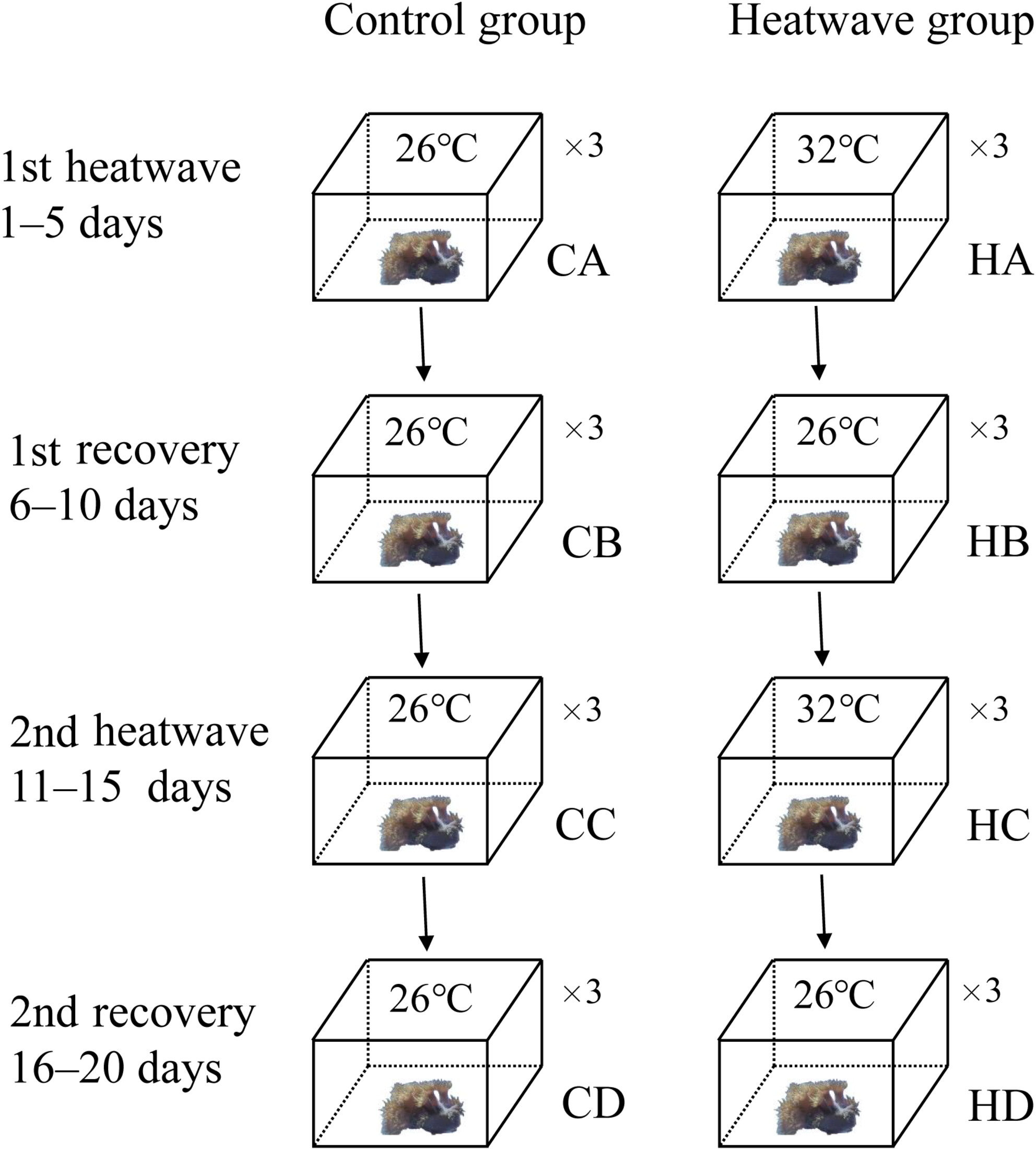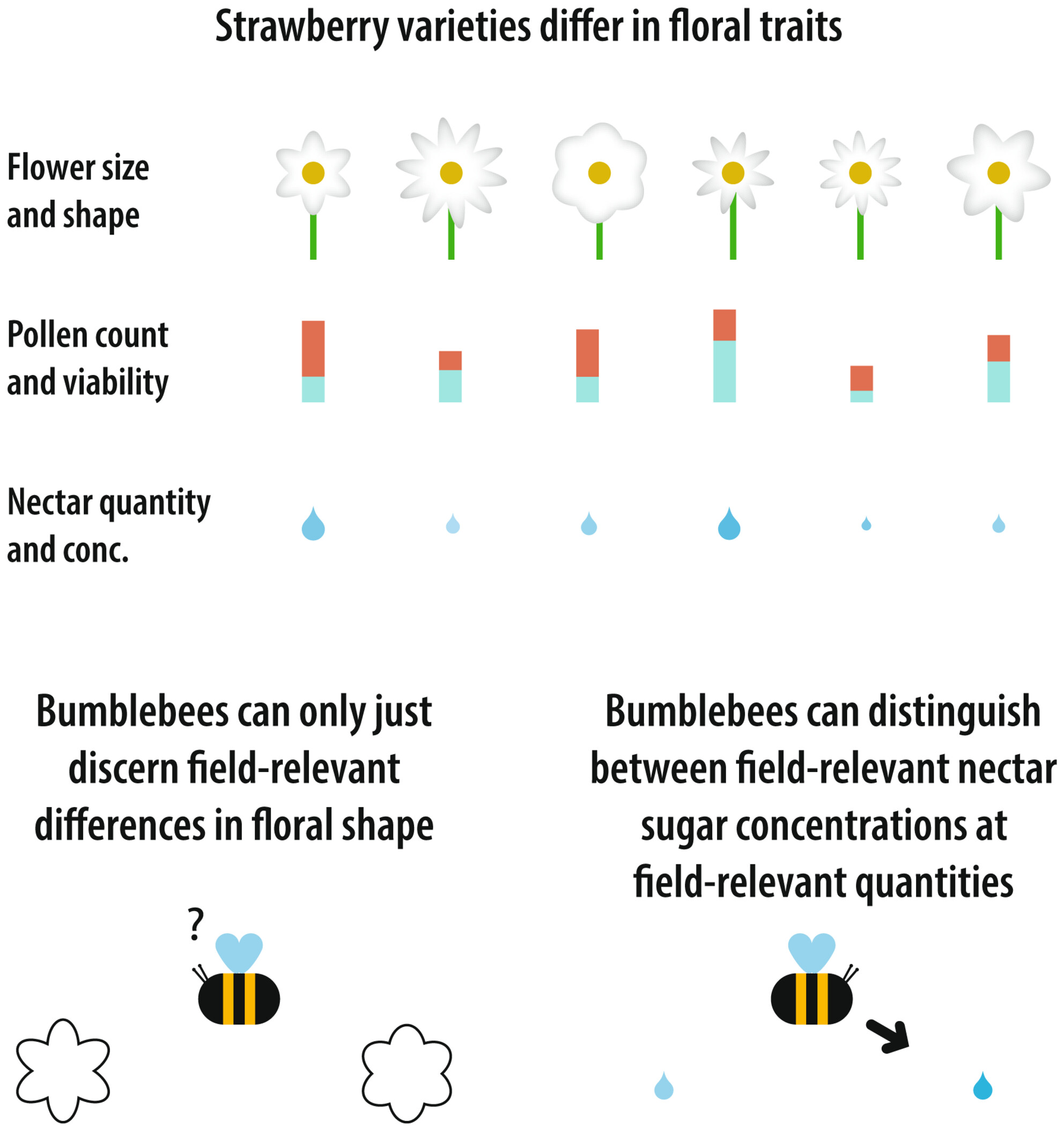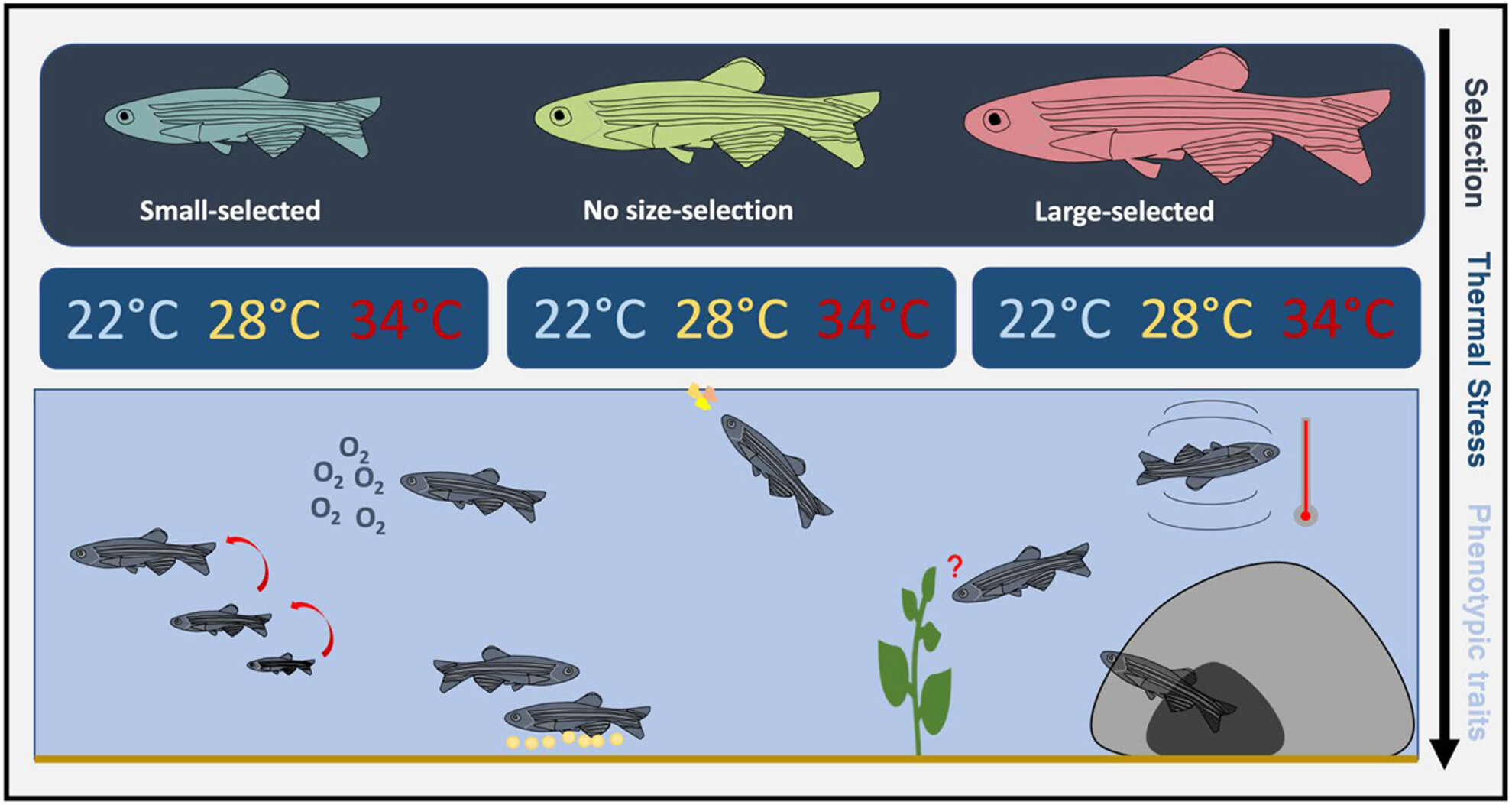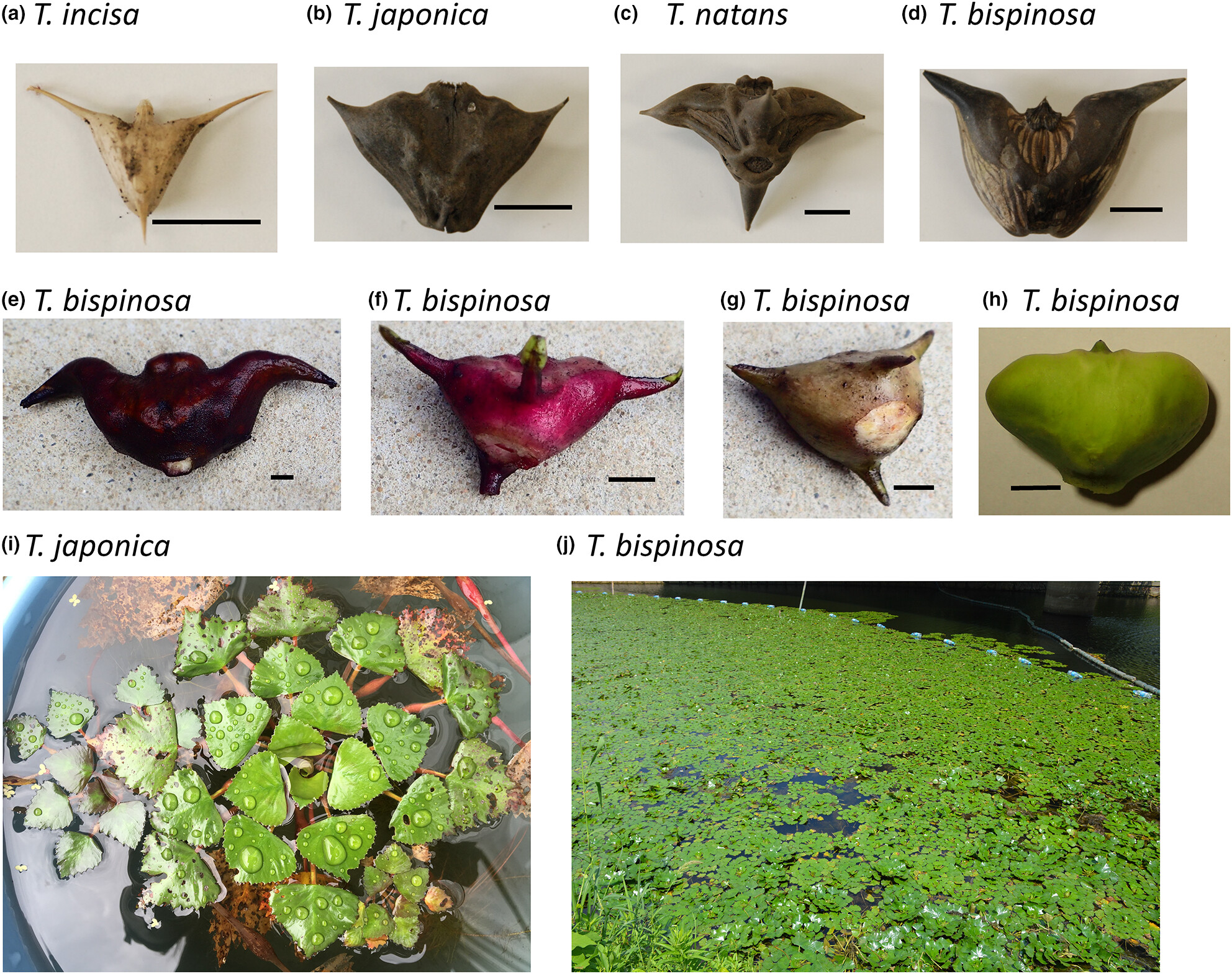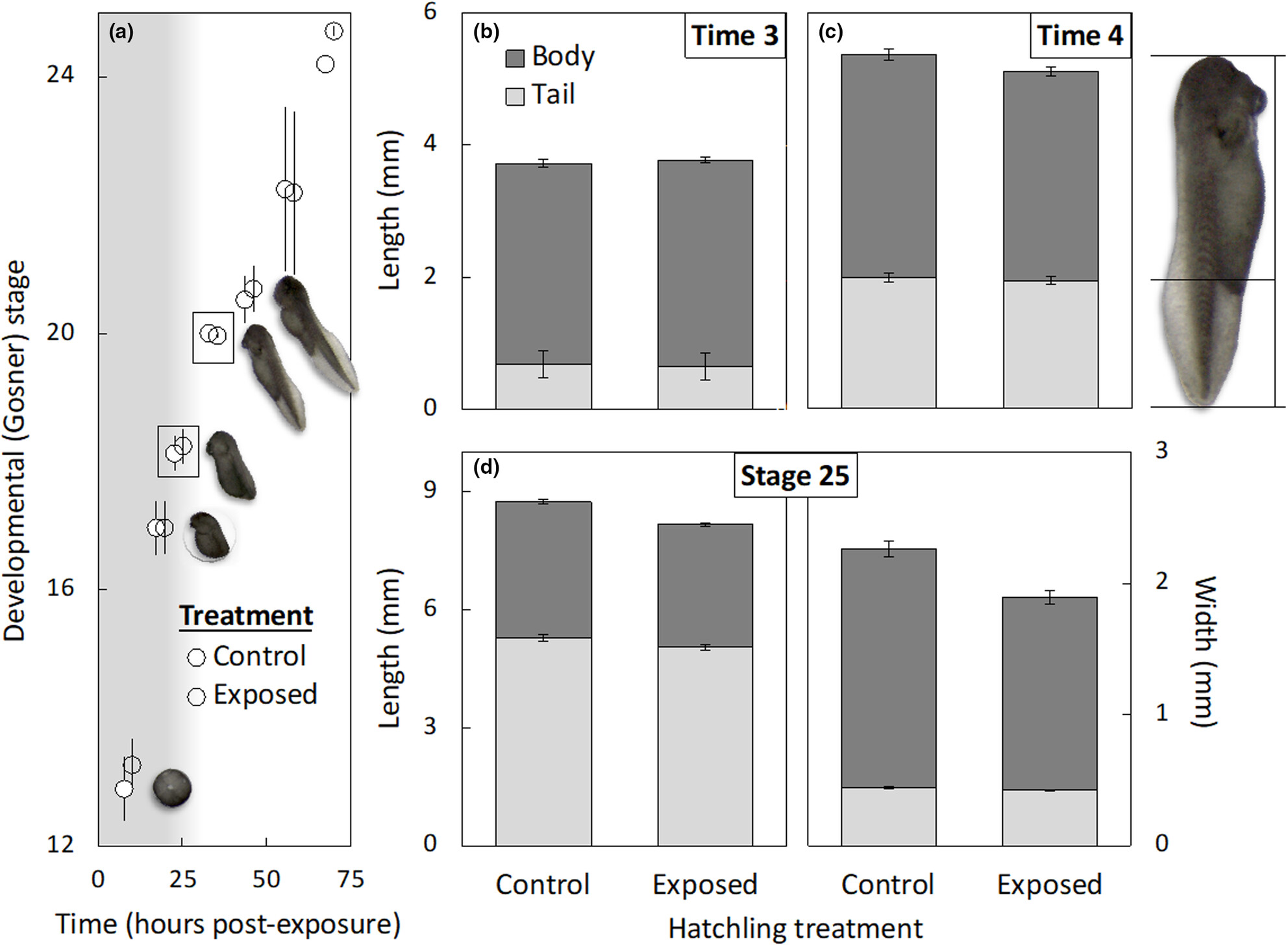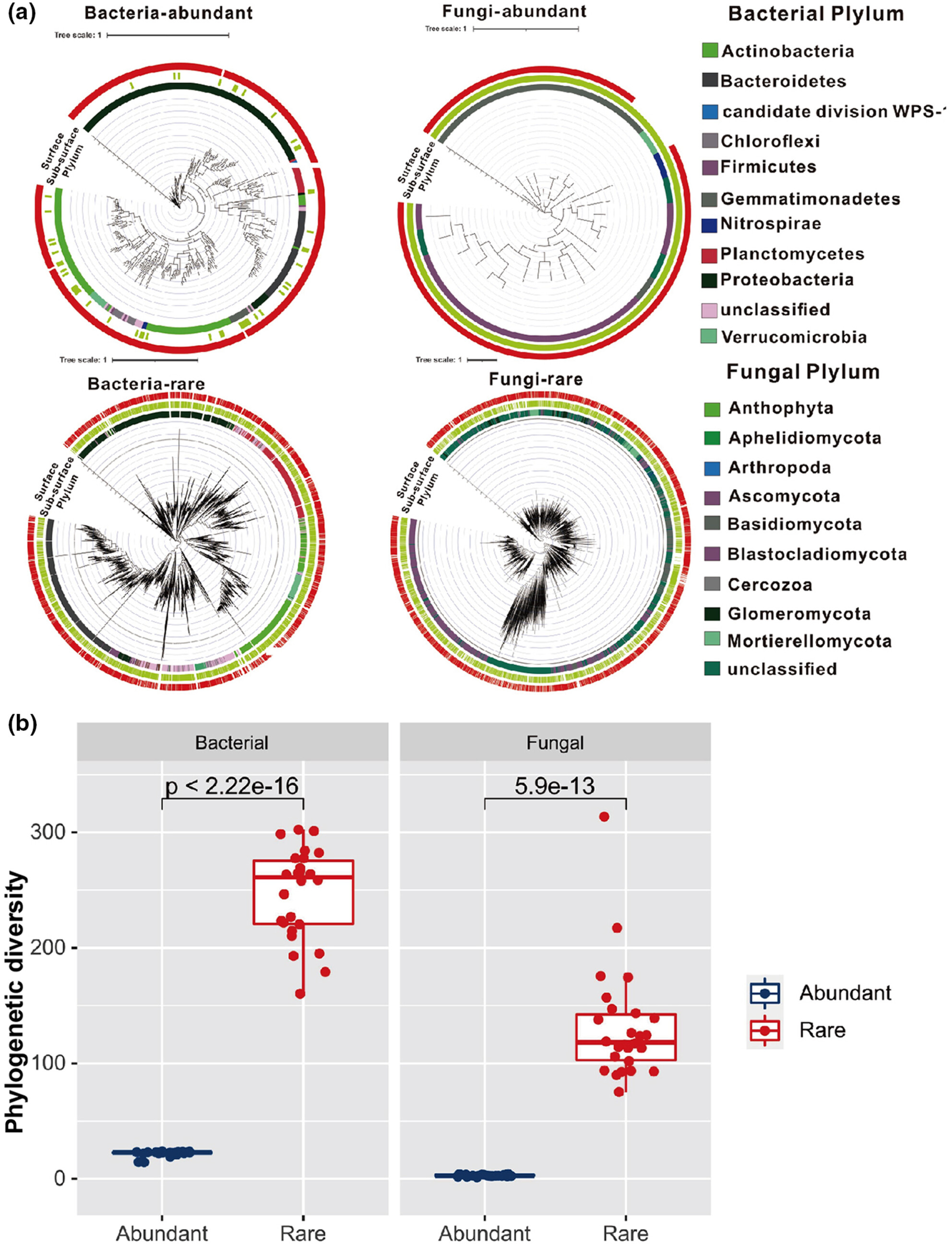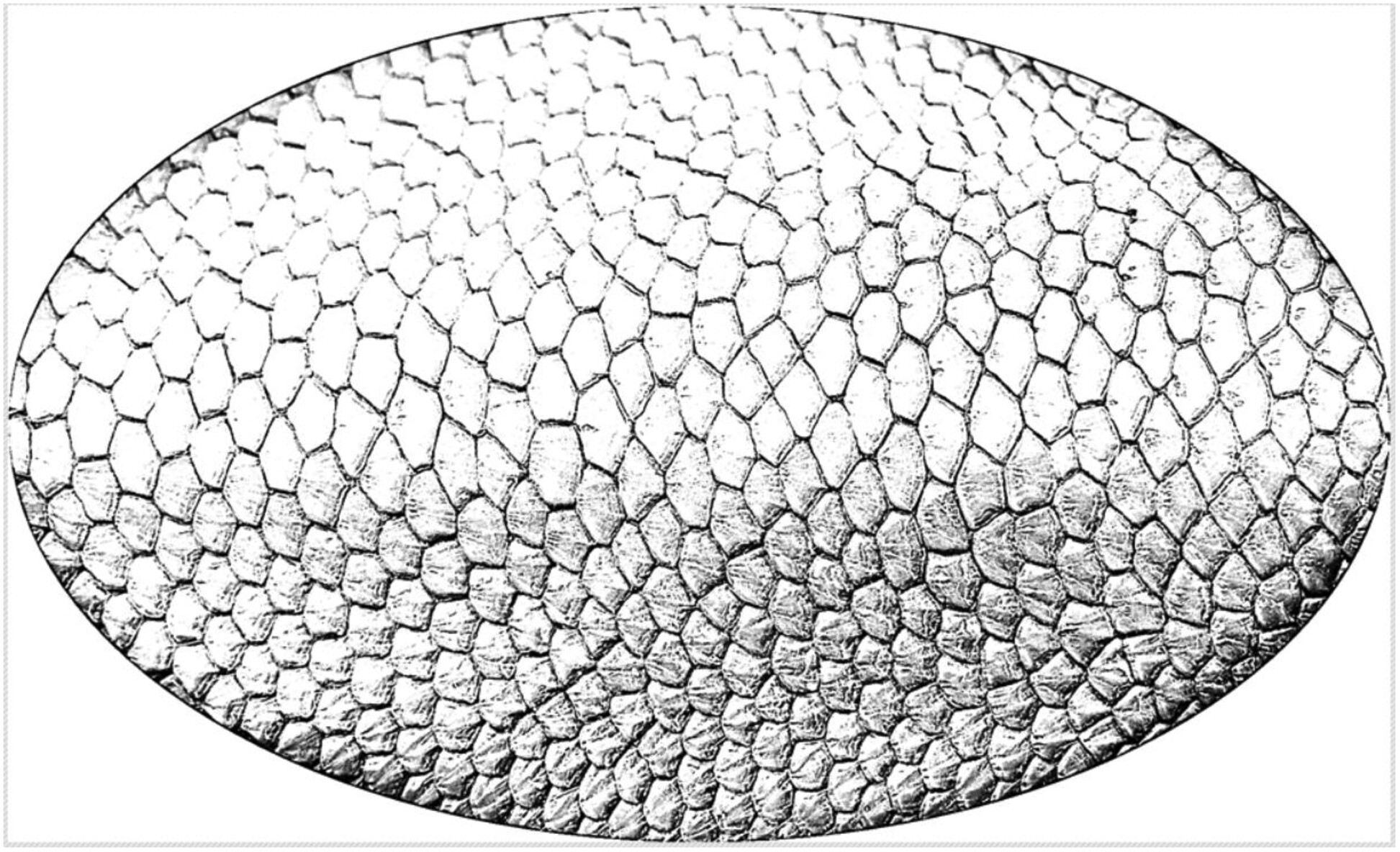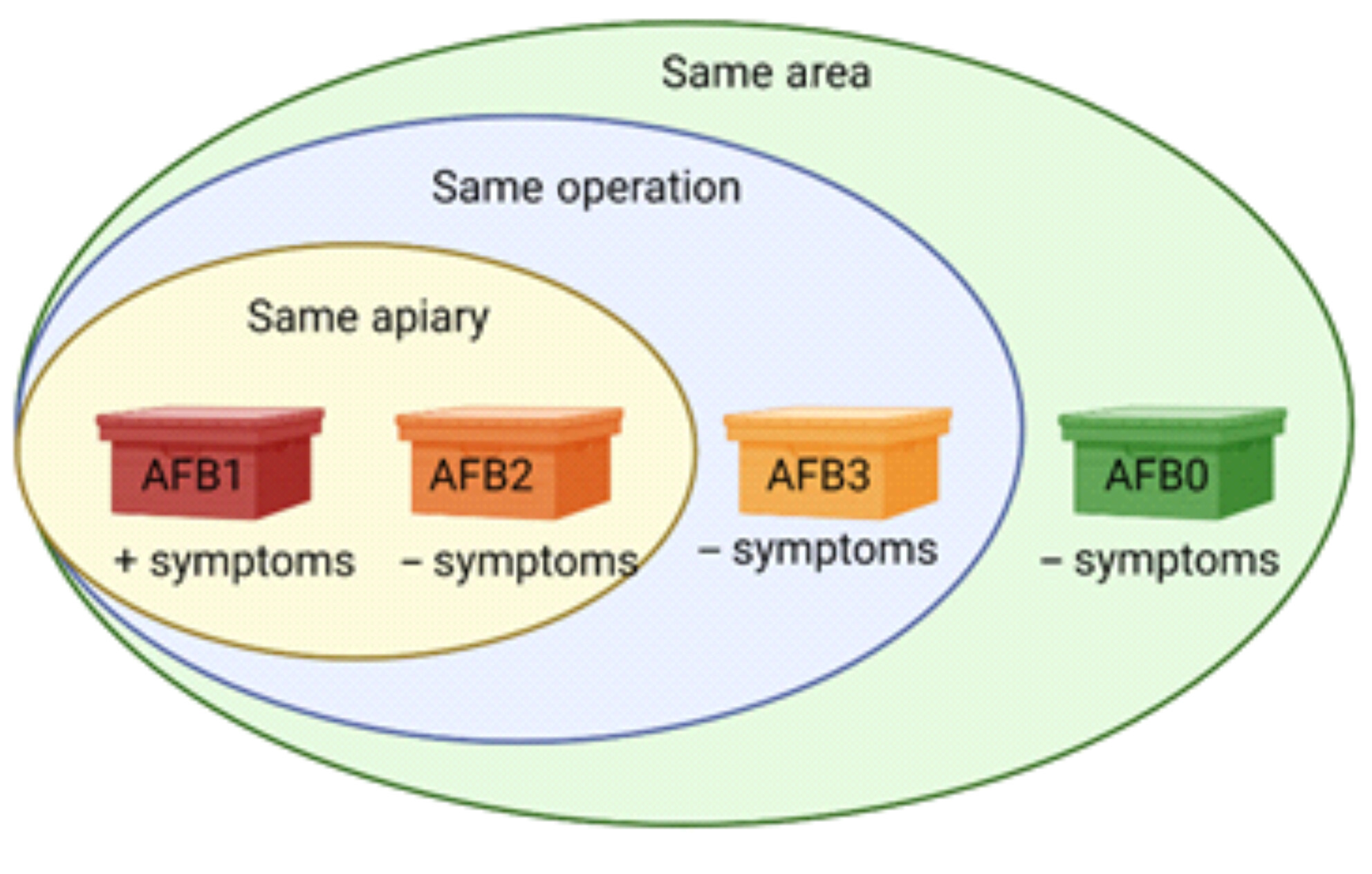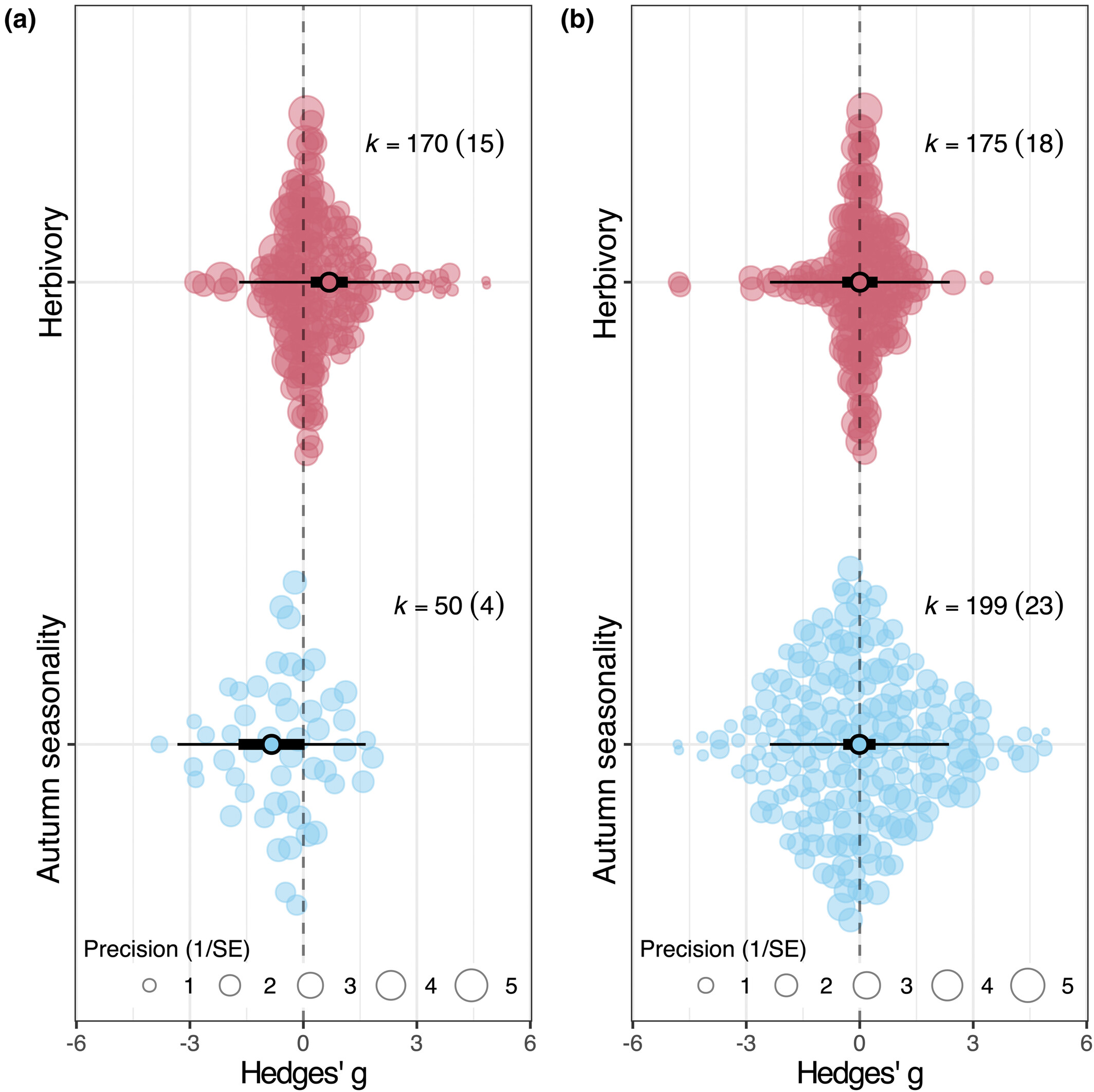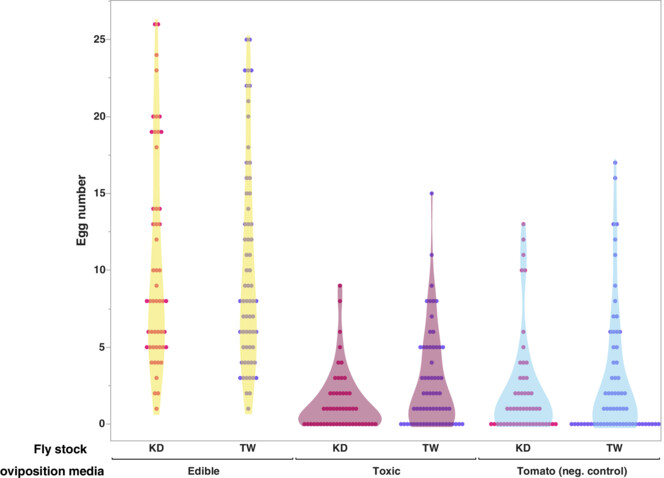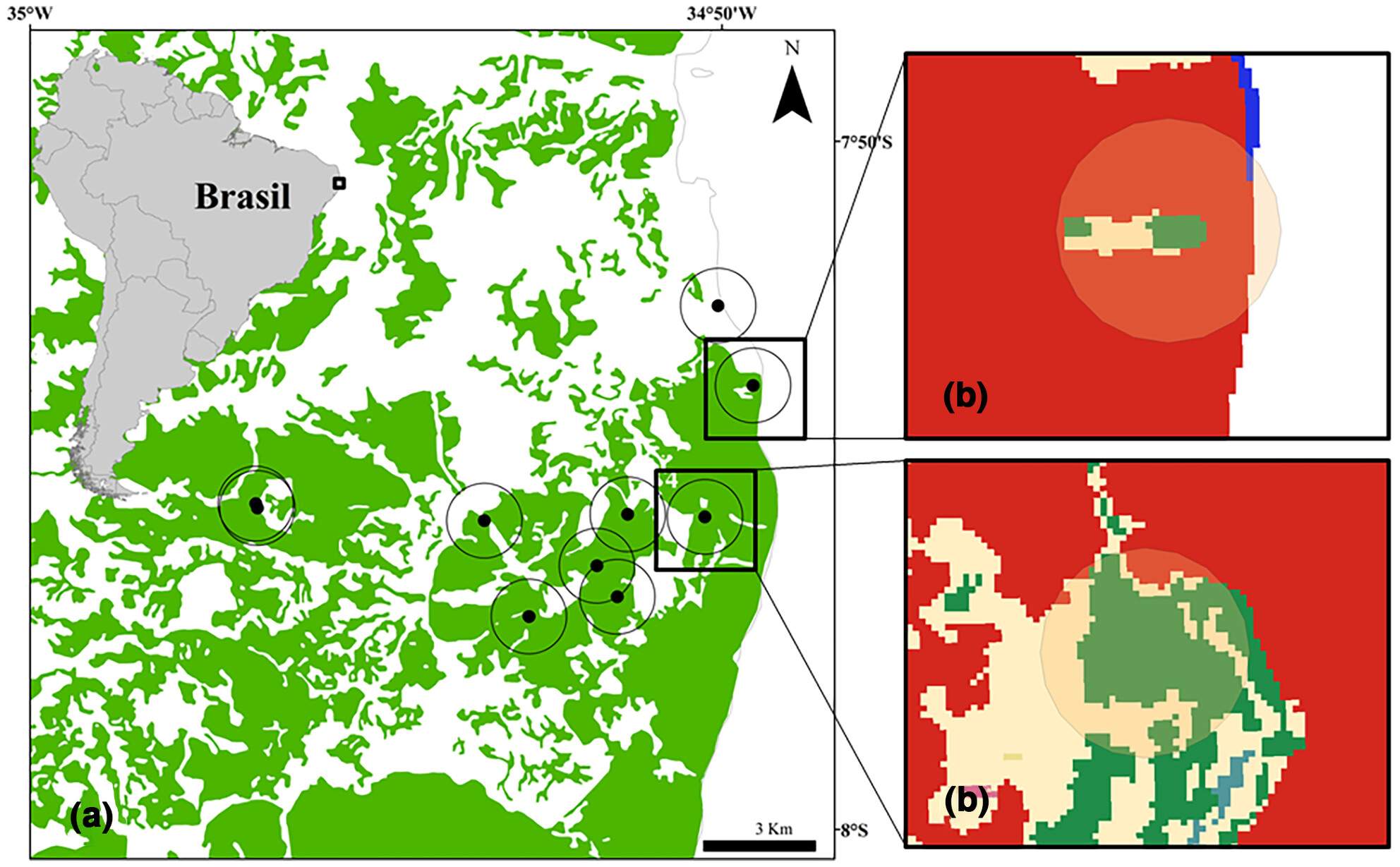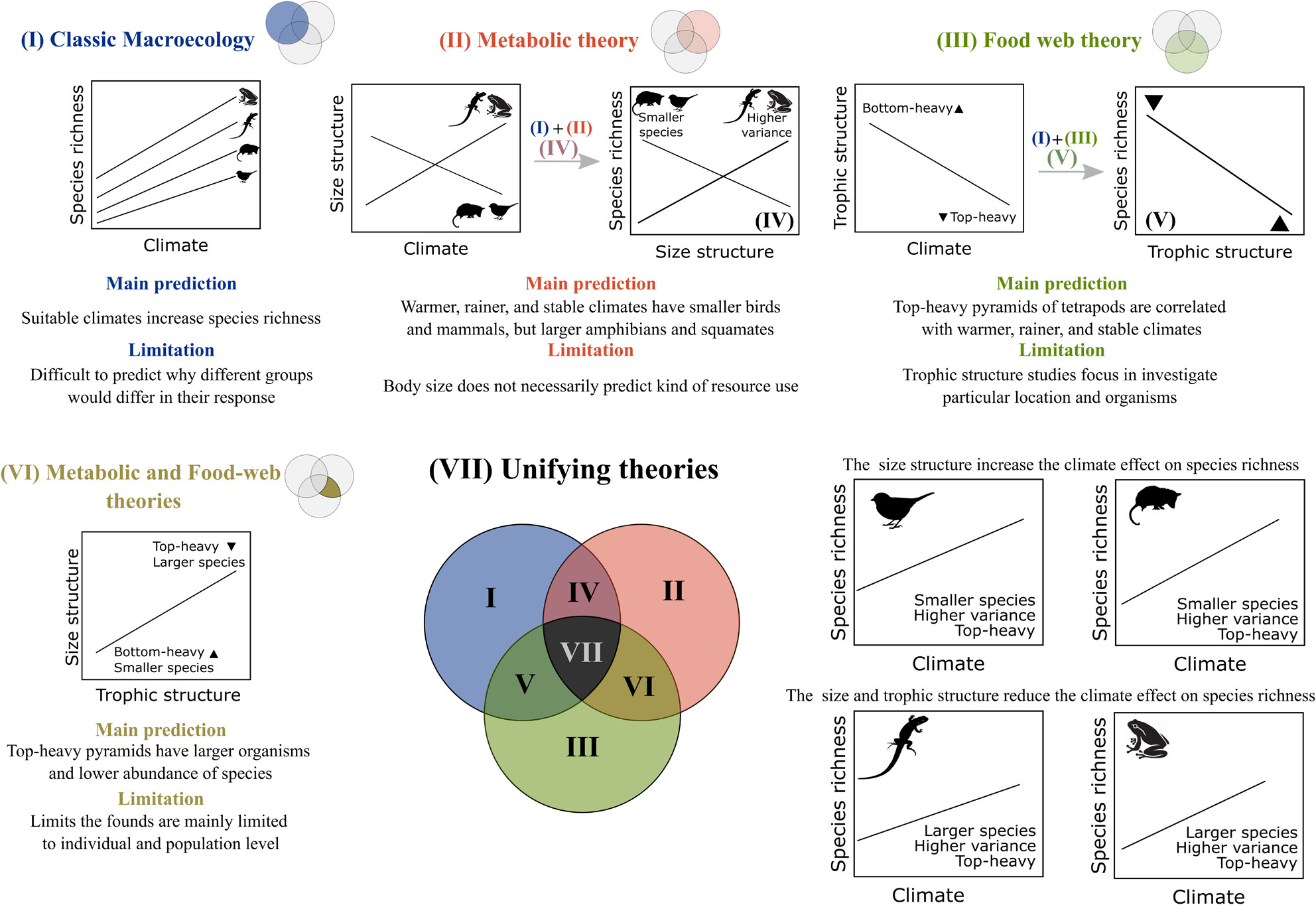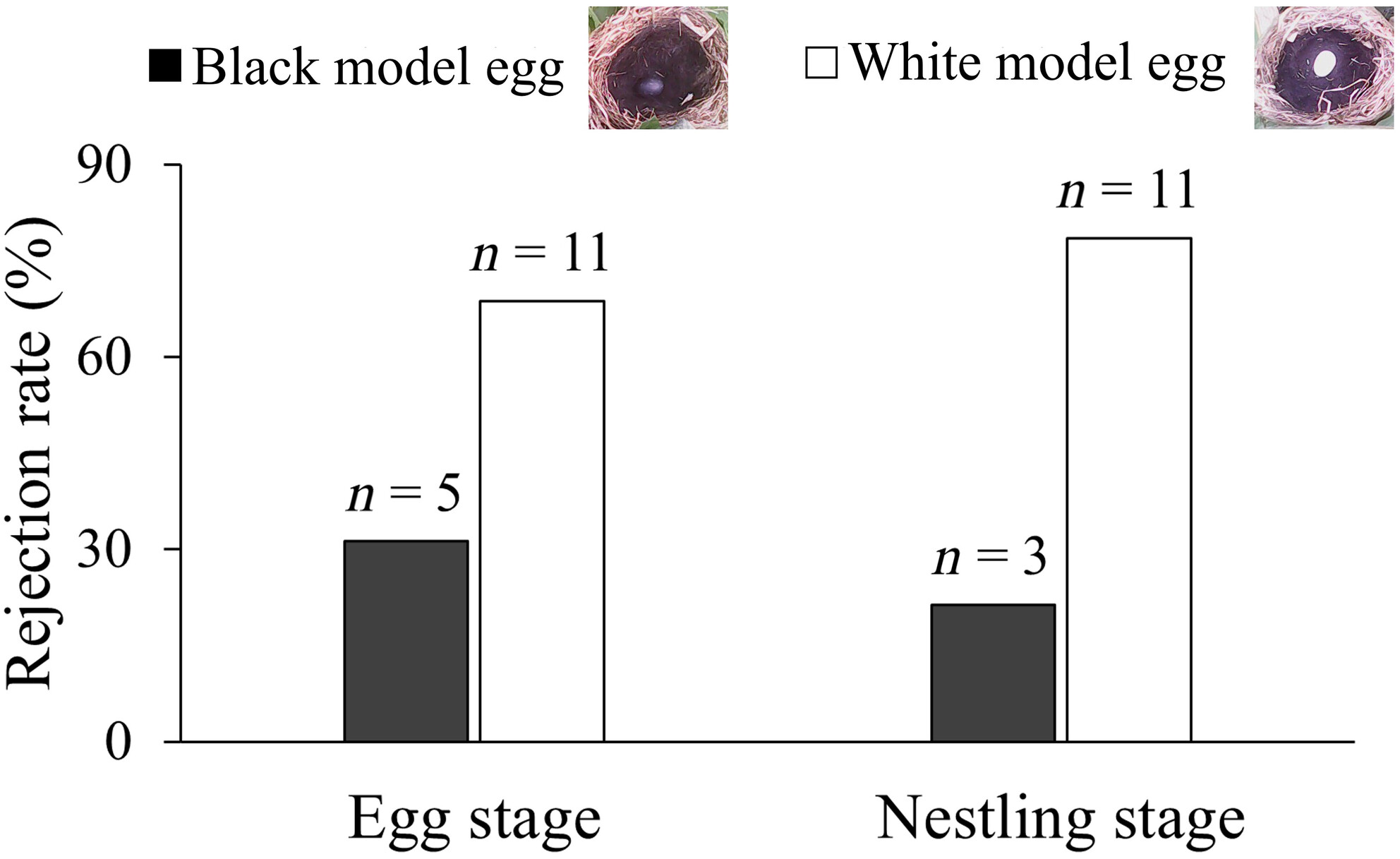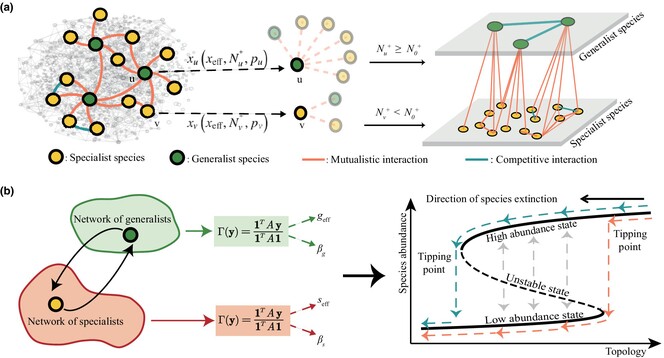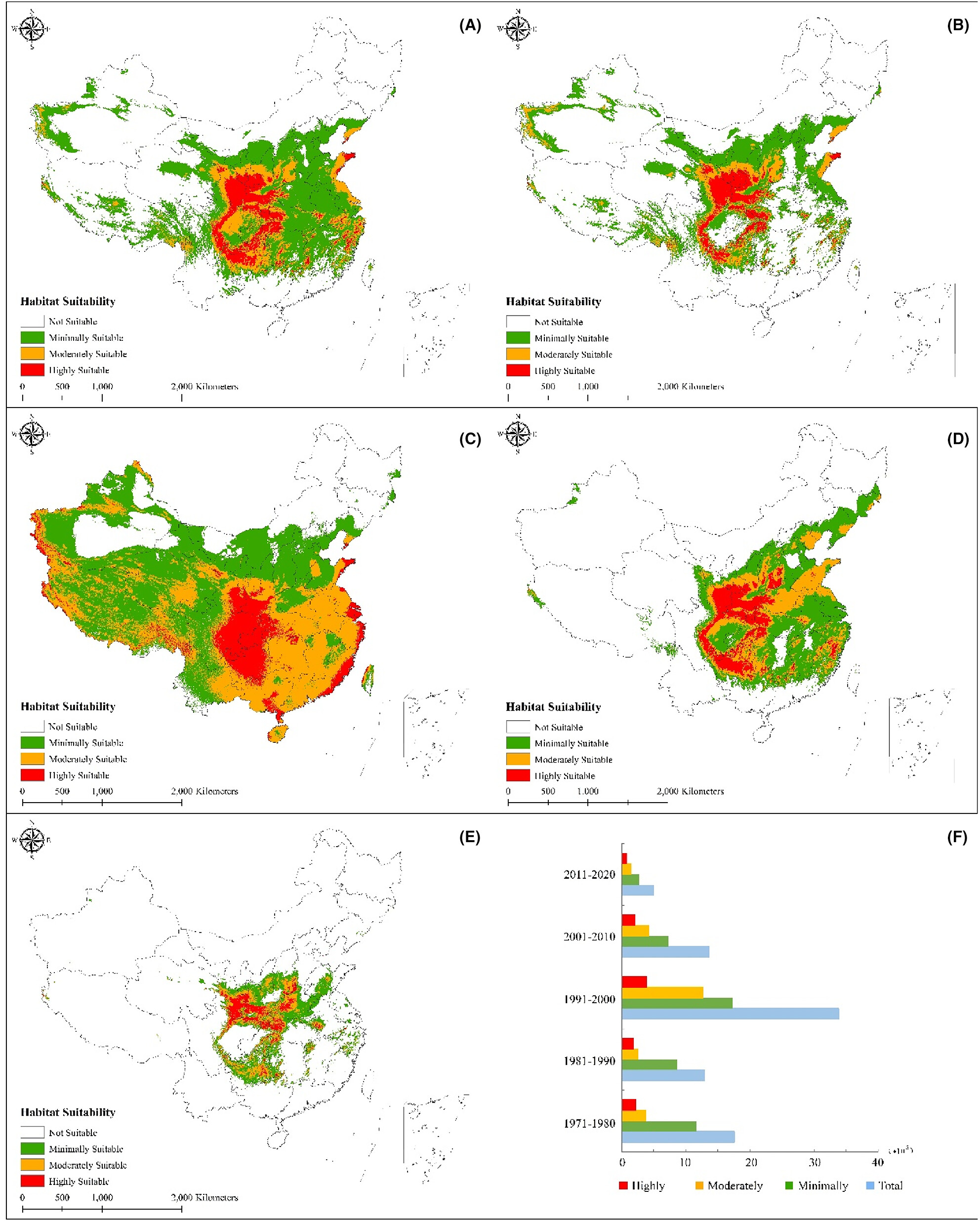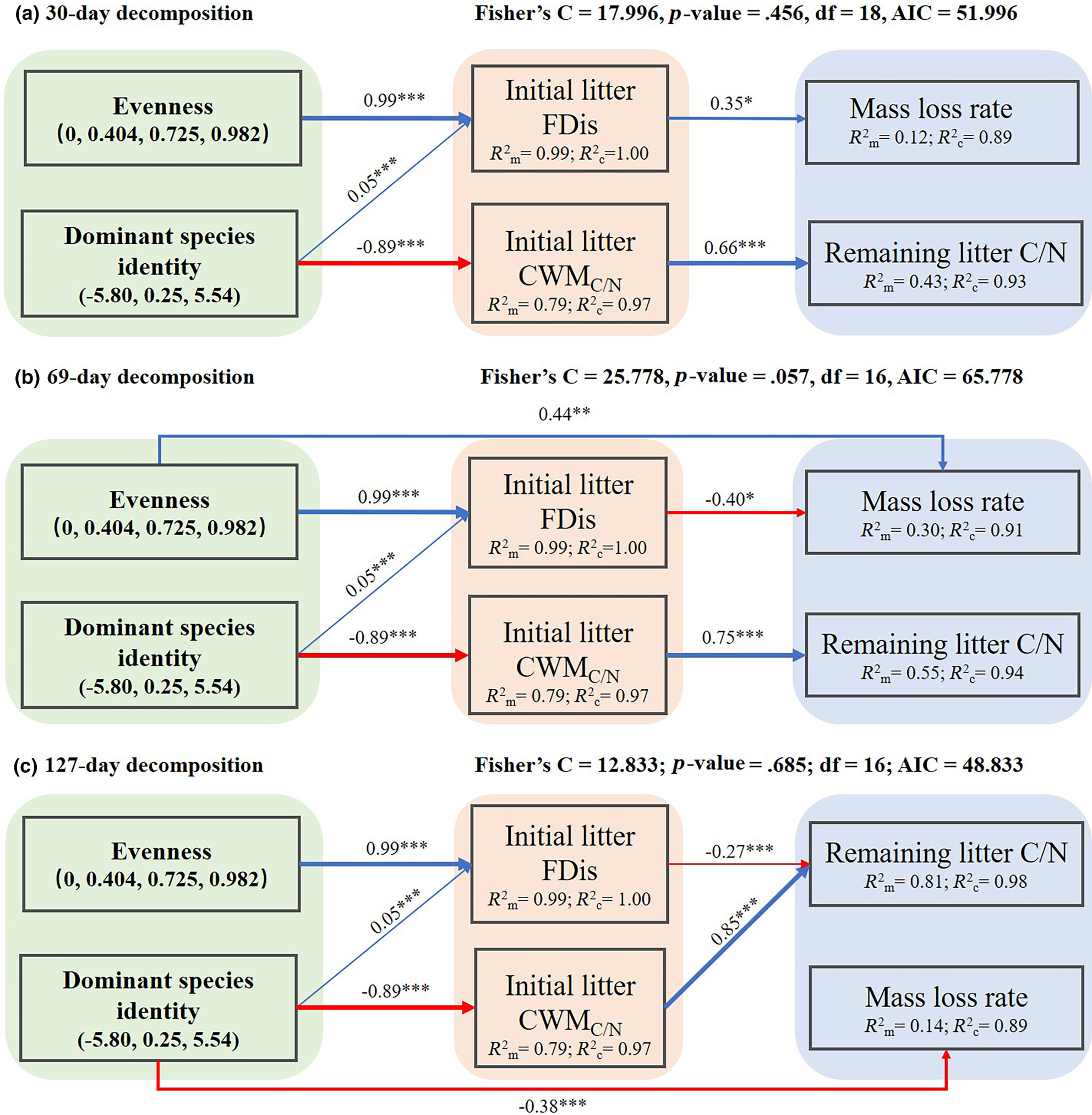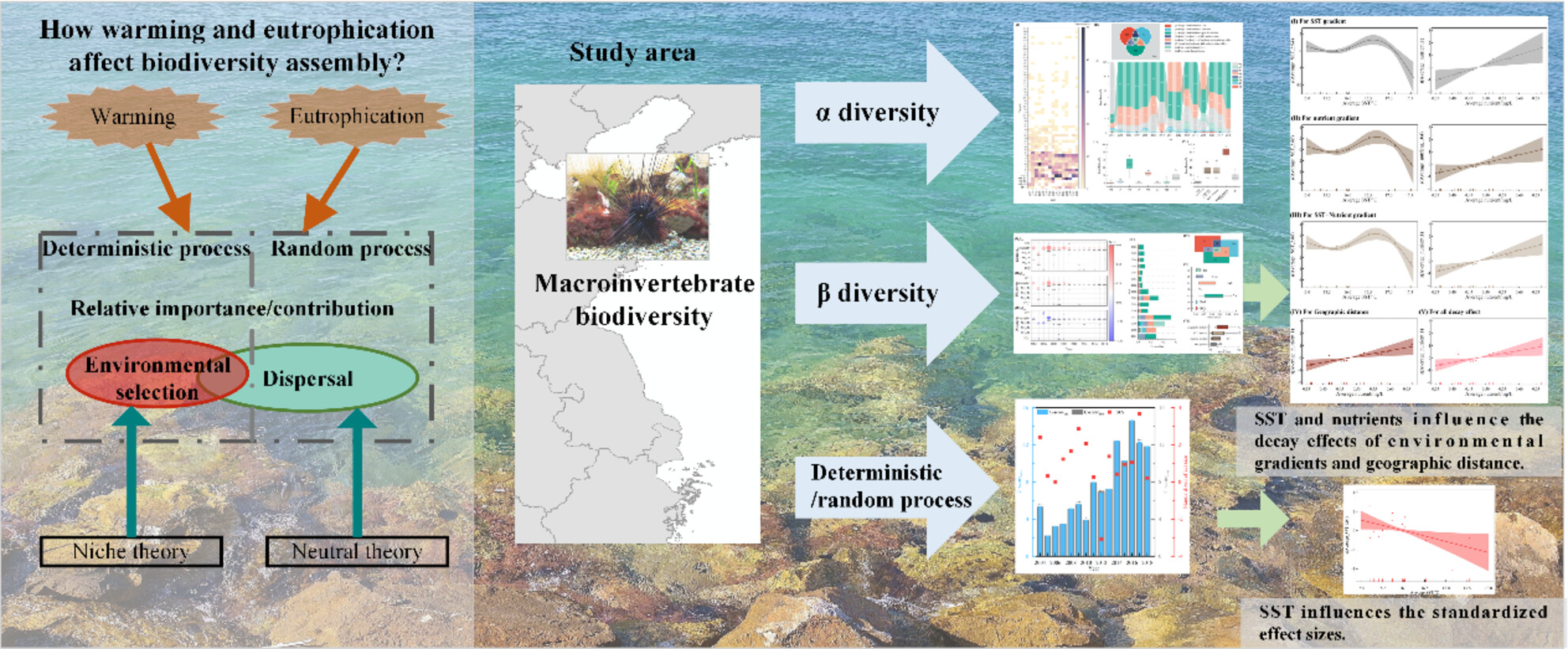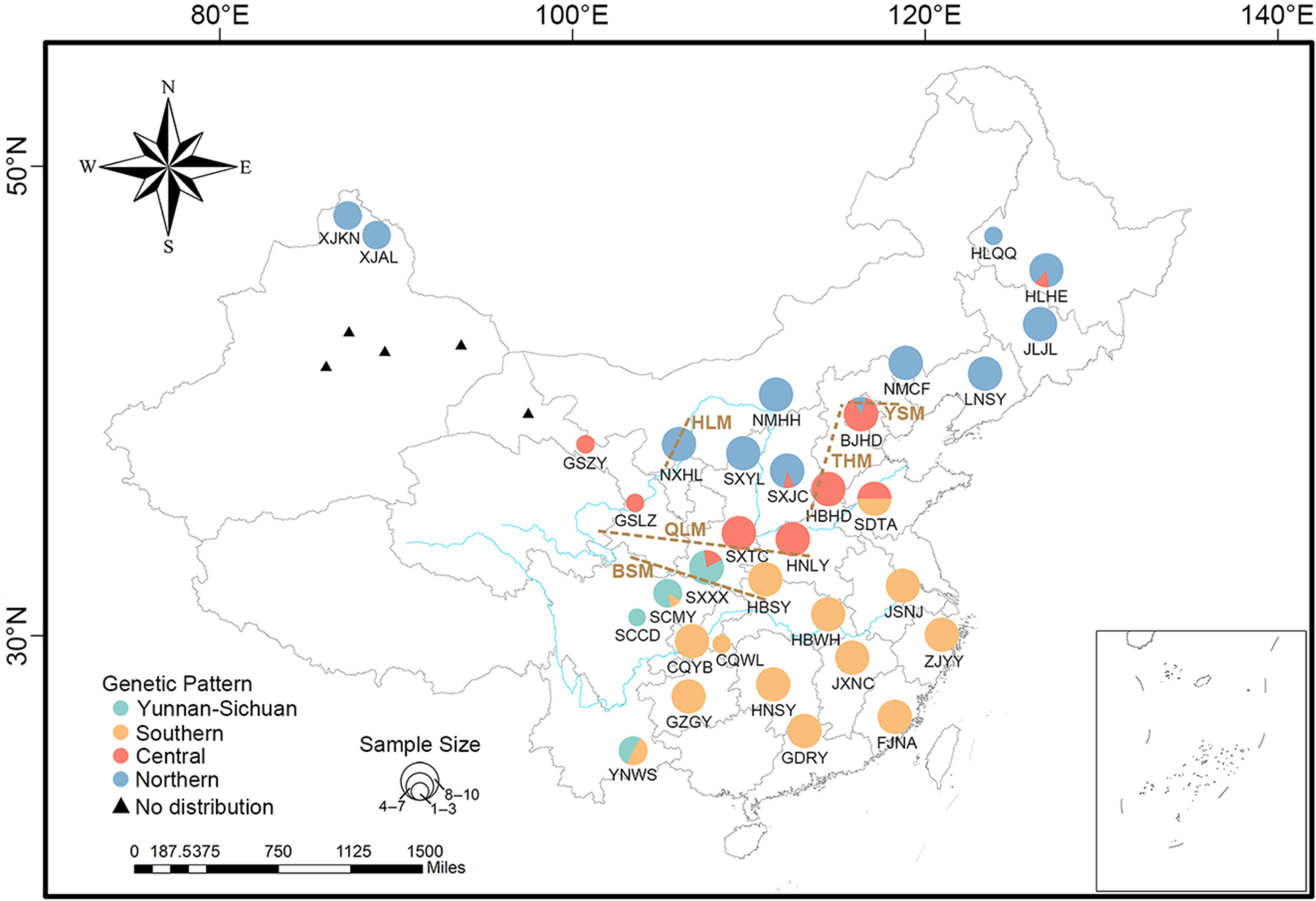Journal list menu
Export Citations
Download PDFs
ISSUE INFORMATION
GENETICS NOTES
Genetics Notes: A new category for descriptive genetics work
- First Published: 22 February 2024
ACADEMIC PRACTICE IN ECOLOGY AND EVOLUTION
Accelerating the open research agenda to solve global challenges
- First Published: 31 January 2024
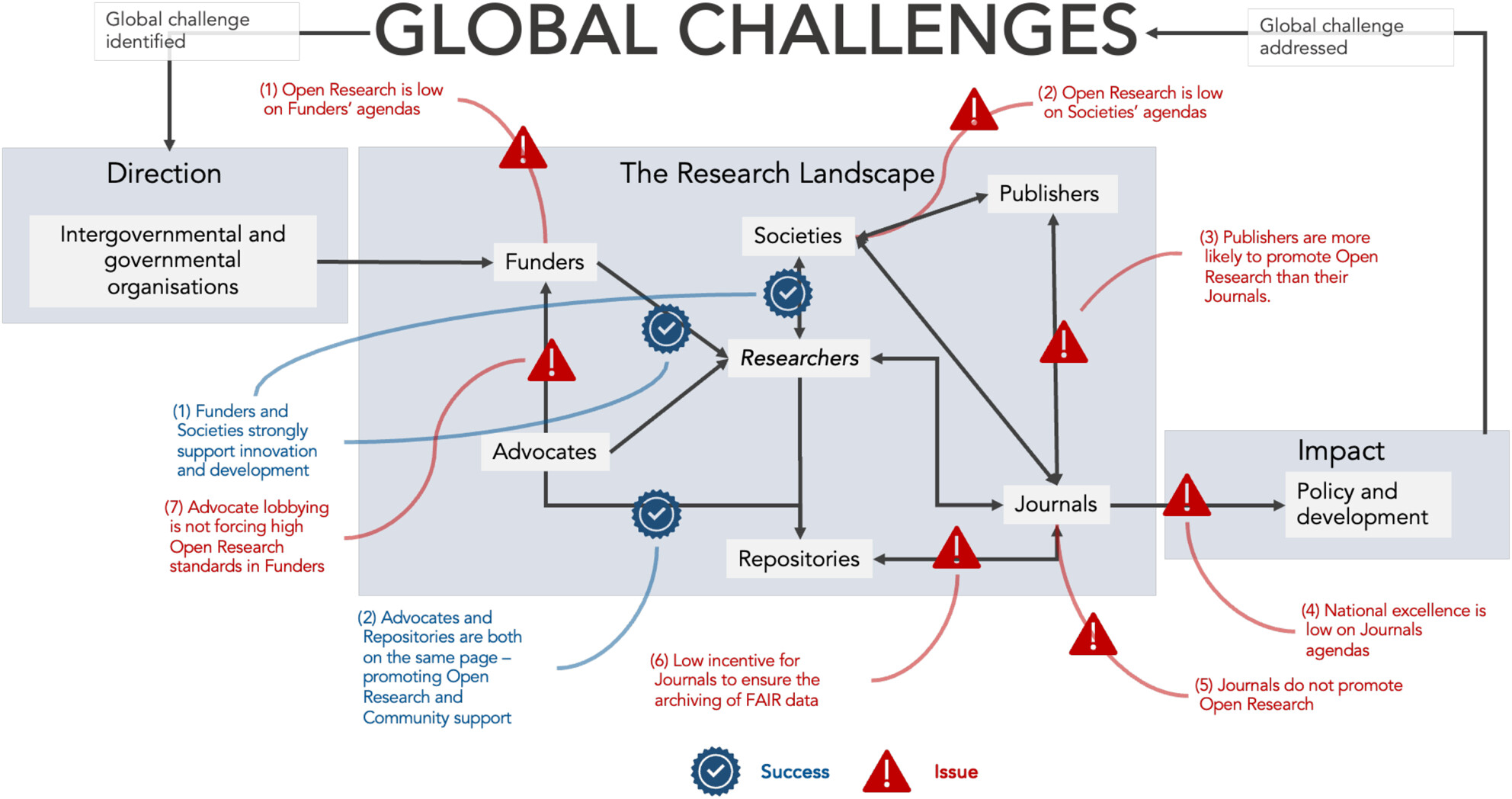
Open research principles underpin the effective science-based policy key to tackling global challenges; however, the uptake of these principles is likely constrained by the politicisation, commoditisation and conflicting motives of stakeholders in the research landscape. Here, using the mission and vision statements from 129 stakeholders from across the research landscape, we explore alignment in open research principles. We find that poor alignment between different stakeholders stifles knowledge flow within the research landscape, ultimately limiting the mobilisation of impactful science-based policy.
NATURE NOTES
Pedigree analysis in the mhorr gazelle (Nanger dama mhorr): Genetic variability evolution of the captive population
- First Published: 17 February 2024
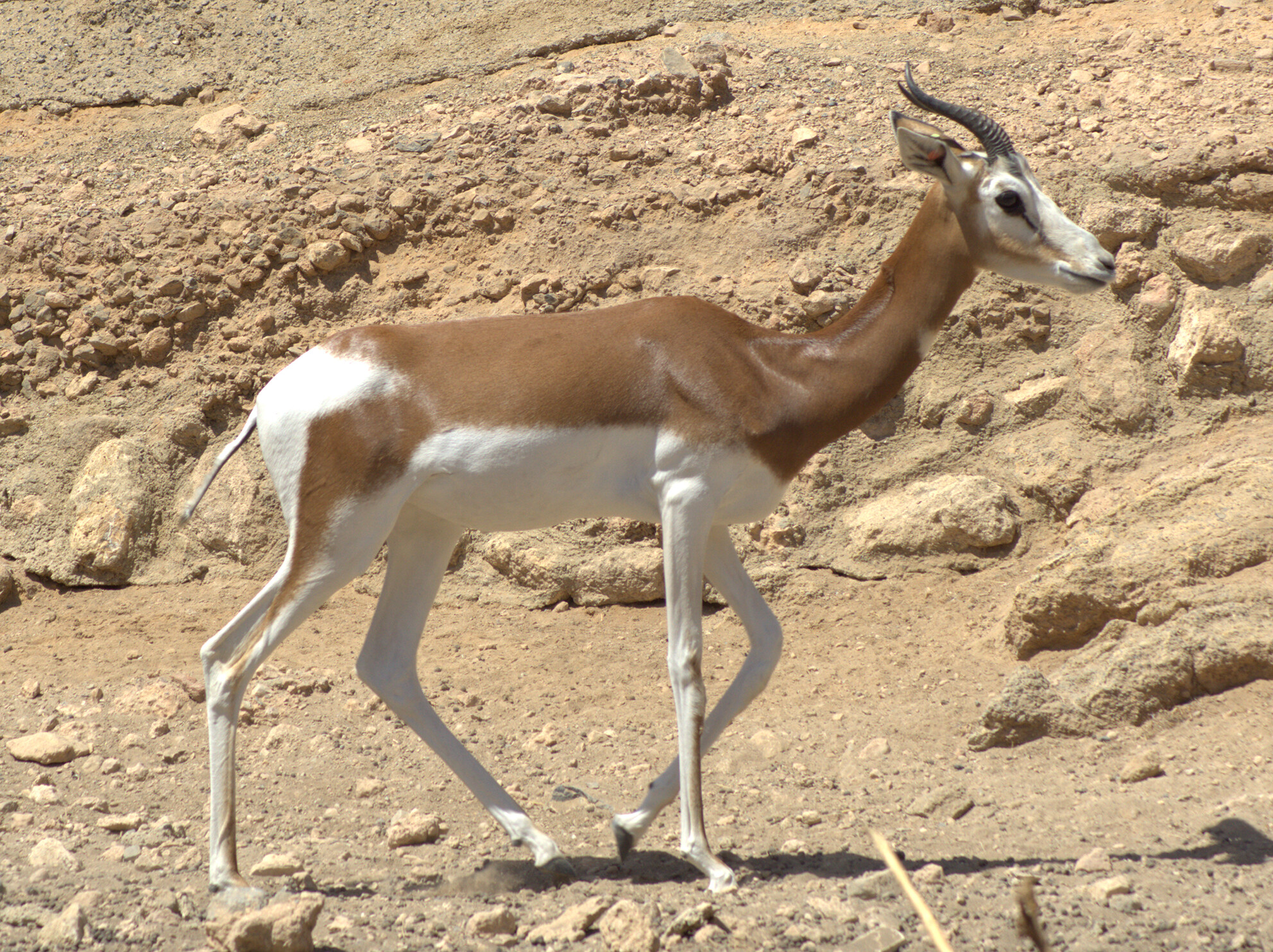
This paper describes the genetic characterization of the mhorr gazelle population in captivity obtained through pedigree analysis. The genetic variability evolution shows how the mating strategy used has allowed maximizing the genetic potential of the population despite the low number of founders. The study of two living reference populations has made it possible to know the level of current genetic variability.
The first record of leucism in the Rhabdophis tigrinus (Boie, 1826) (Squamata, Colubridae) in South Korea
- First Published: 22 February 2024
Ritualized ink use during visual courtship display by males of the sexually dimorphic cuttlefish Sepia andreana
- First Published: 02 February 2024
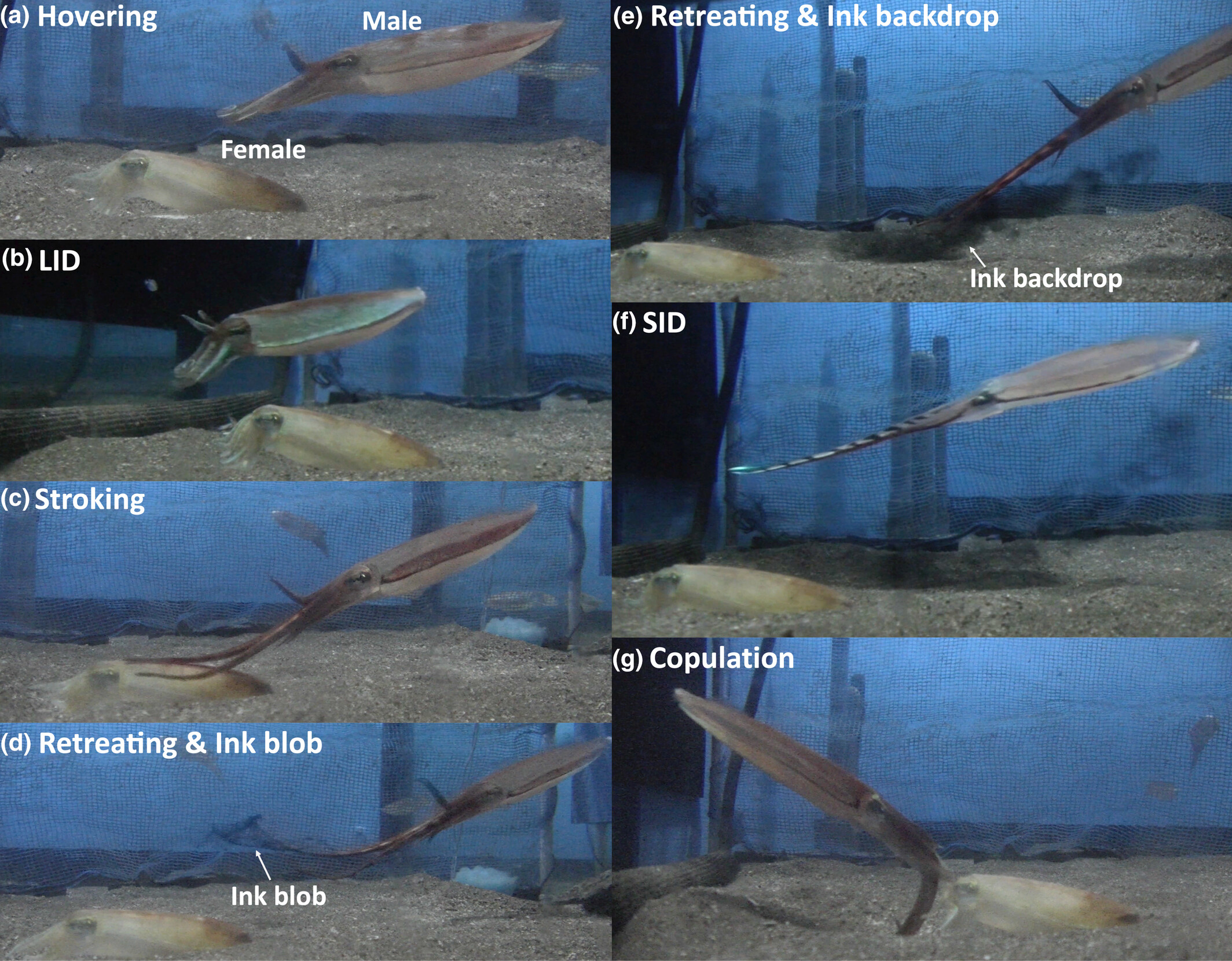
Cephalopods may release ink when attacked by predators, but we have discovered that ink is used as a part of the courtship display by males of the cuttlefish species Sepia andreana. Males of this species engage in a highly ritualized multi-modal courtship using a pair of markedly long sexually dimorphic arms, and at the climax of the courtship, the male releases a diffuse backdrop of ink near himself and then performs the specific courtship display in front of this ink backdrop. This novel use of cephalopod ink could potentially serve as a temporary modification of the visual environment for courtship display.
New species and new record of Statherotmantis Diakonoff, 1973 from China (Lepidoptera: Tortricidae: Olethreutinae)
- First Published: 31 January 2024
The reproductive biology of Ellochelon vaigiensis from the Vietnamese Mekong Delta
- First Published: 14 February 2024
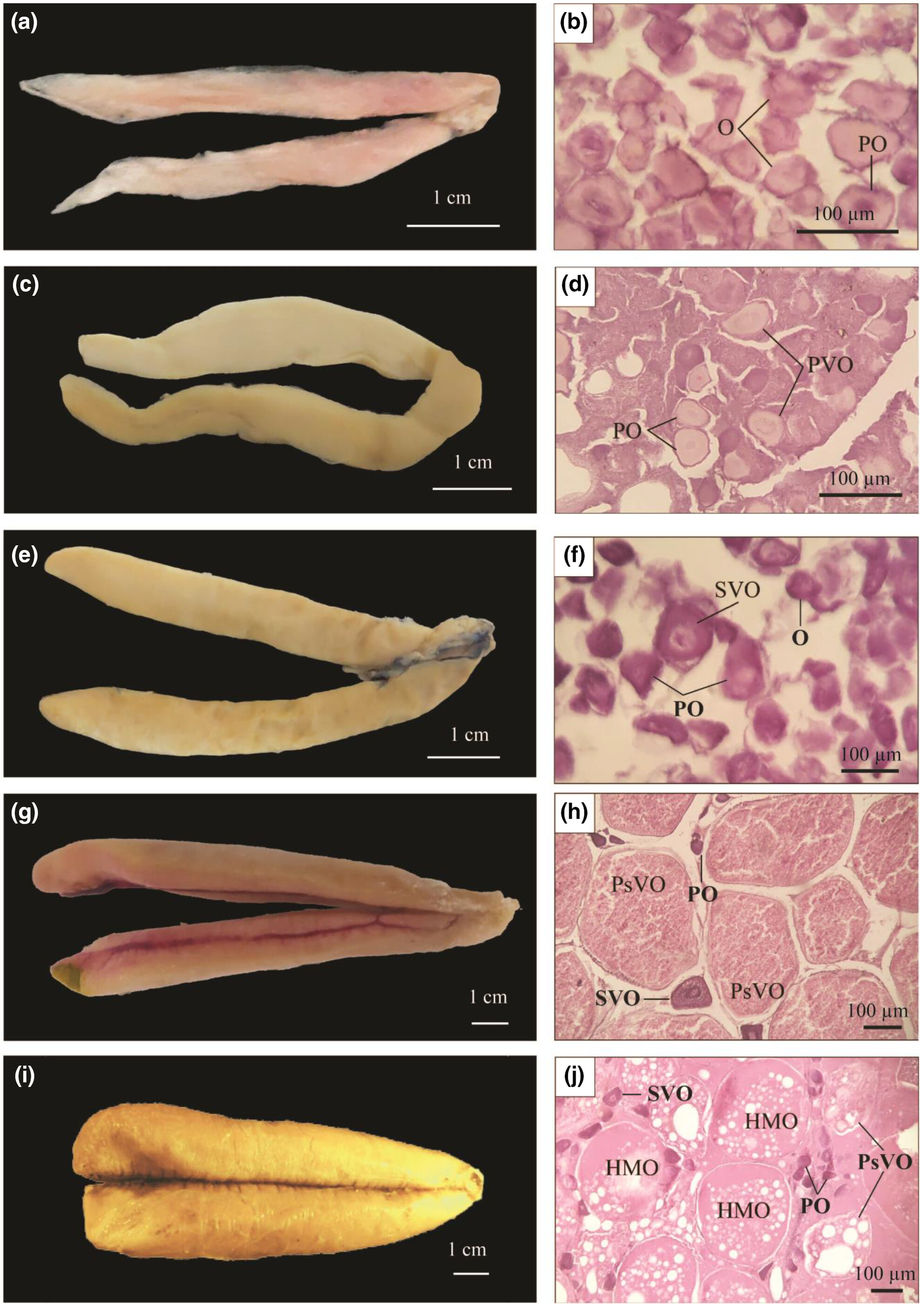
Ellochelon vaigiensis is a synchronous spawner, with peaks in reproductive activity from June to October. The length at 50% maturity for females is significantly higher than that for males at all sites and ranges from 10.6 to 19.3 cm. The diameter of the eggs examined for this species exhibited slight variation, from 0.43 to 0.54 mm. The potential fecundity ranged from 246,254 ± 35,878 to 411,970 ± 54,370 eggs, corresponding to female length and weight of 26.7–32.6 cm and 102.97–234.19 g, respectively. Relative fecundity values peaked at Thanh Phu, Ben Tre (6388 ± 605 eggs) and Dong Hai, Bac Lieu (6461 ± 637 eggs), followed by Tran De, Soc Trang (4729 ± 408), and were found to be lowest at Duyen Hai, Tra Vinh (3117 ± 223 eggs).
Analysis of winter diet in Guizhou golden monkey (Rhinopithecus brelichi) using DNA metabarcoding data
- First Published: 01 February 2024
Identification and genetic characterization of a novel species of Choleoeimeria Schneider, 1875 from a captive-bred bilby (Thylacomyidae; Macrotis lagotis) (Reid, 1837) in Western Australia
- First Published: 20 February 2024
An outsider on the Antarctic Peninsula: A new record of the non-native moth Plodia interpunctella (Lepidoptera: Pyralidae)
- First Published: 05 February 2024
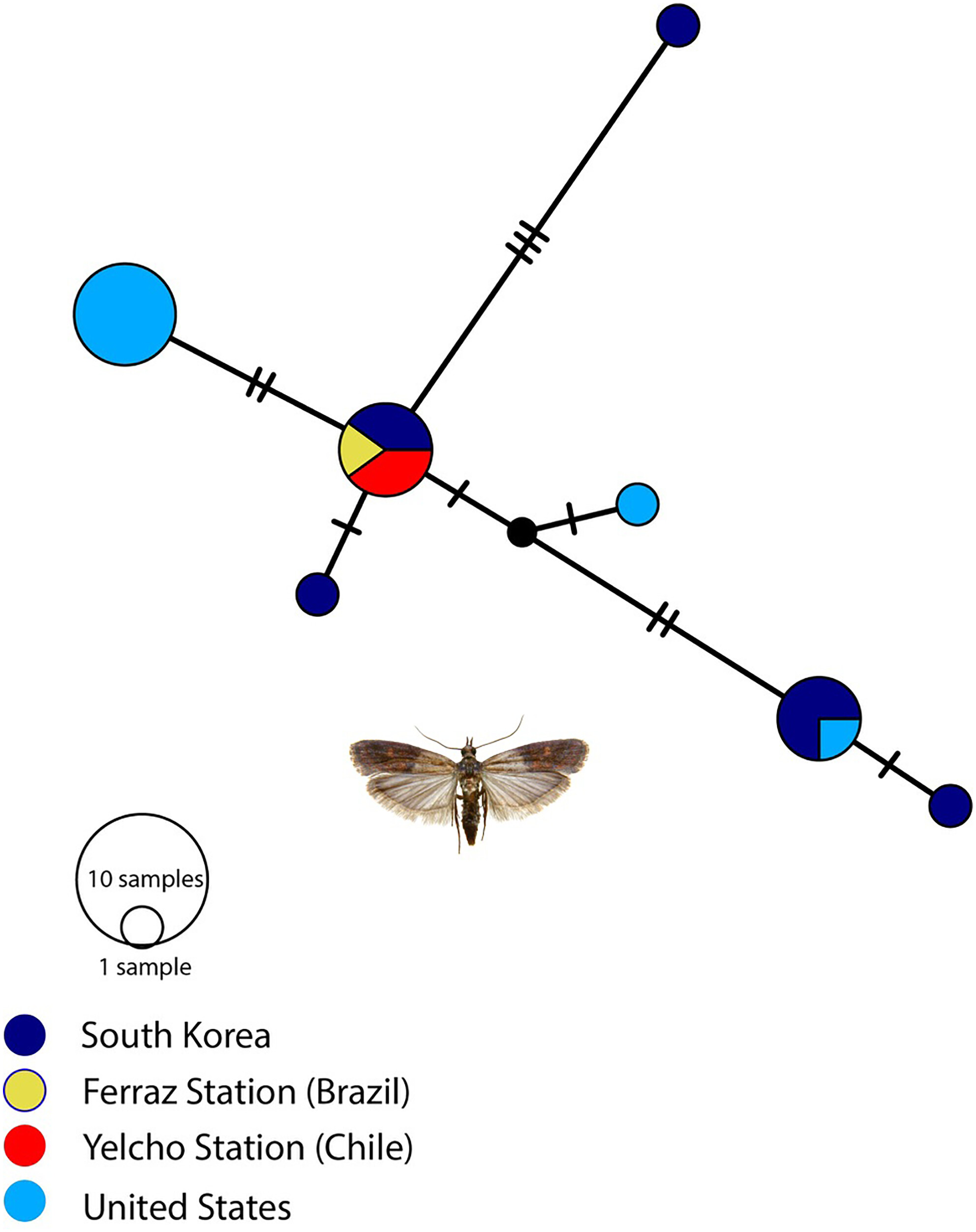
This text reports the discovery of the microlepidopteran Plodia interpunctella at the Chilean Yelcho scientific station on Doumer Island, near the west coast of the Antarctic Peninsula. Plodia interpunctella is a global pest known for surviving in stored food for extended periods. The text suggests that the insect may have initially arrived in Antarctica due to the challenges of food transportation and storage in the harsh Antarctic conditions. Non-perishable food items like grains and flour are commonly transported to Antarctic research stations, potentially aiding the insect's introduction. The presence of P. interpunctella in Antarctica, even within buildings, poses a threat to Antarctic biodiversity as an invasive species and a potential vector for other non-native species.
New insights into predator–prey dynamics: First evidence of a leopard cat hunting coypus
- First Published: 13 February 2024
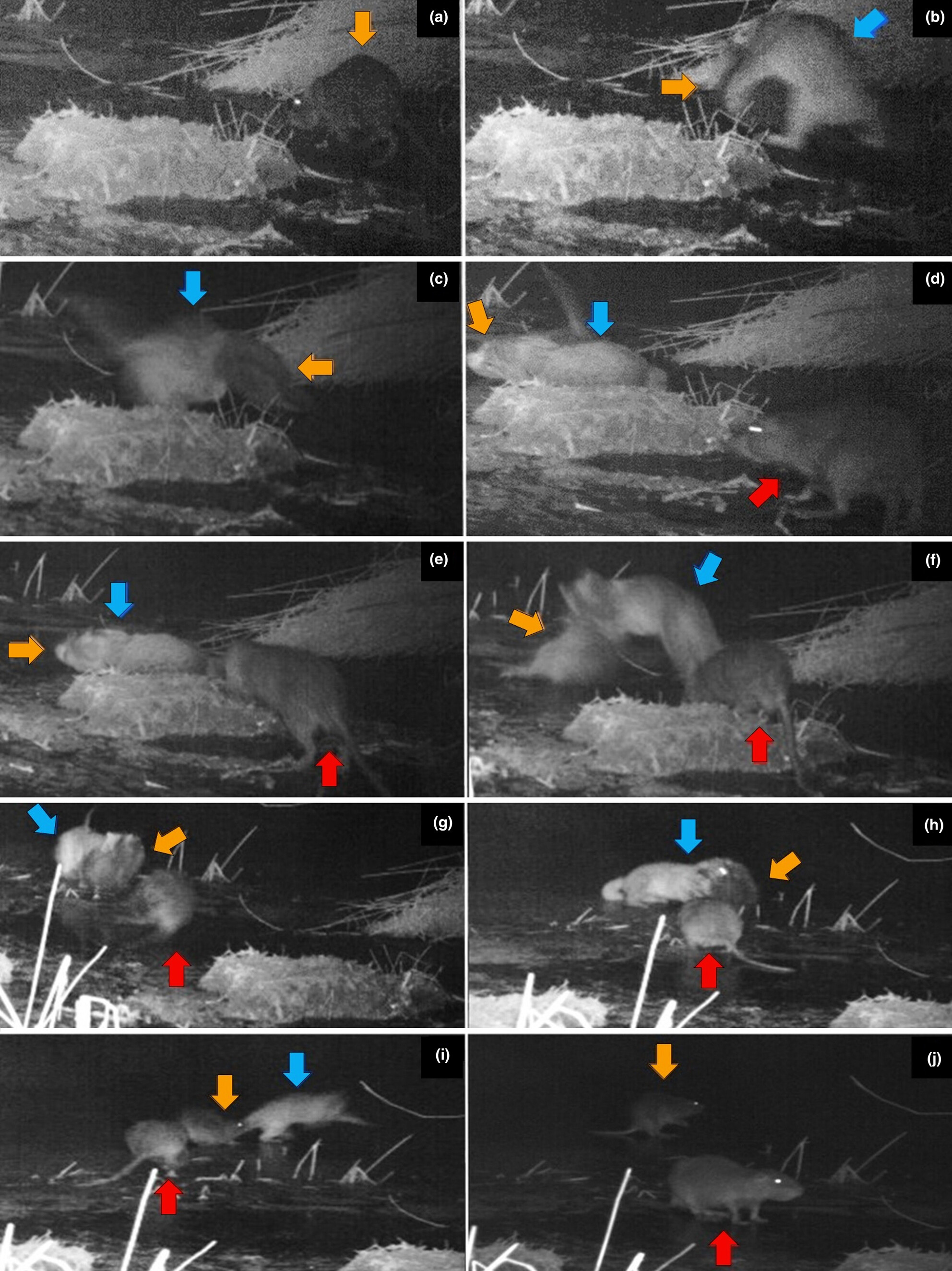
This study provides the first documented evidence of interactions between the native leopard cat and the invasive coypu in South Korea, observed in the Hwapocheon wetland park from May 2015 to April 2017. Through camera traps, the research unveils active predatory behavior by leopard cats against coypus and the cooperative defense mechanisms exhibited by the coypus.
Invasion by Cedrela odorata threatens long distance migration of Galapagos tortoises
- First Published: 13 February 2024

Maintaining long-distance elevational migration in the face of environmental change is important to ensure both the reproductive success and keystone ecological role of giant tortoises on Santa Cruz Island, Galapagos. Here, we show that rapid range expansion by Cedrela odorata, an invasive tree, threatens the last migration corridors of western Santa Crus Galapagos tortoises. Finding effective management solutions to Cedrela expansion is critical for conservation for critically endangered Galapagos tortoises and their ecosystem.
Penetrance interactions of colour pattern loci in the African Monarch and their implications for the evolution of dominance
- First Published: 27 February 2024
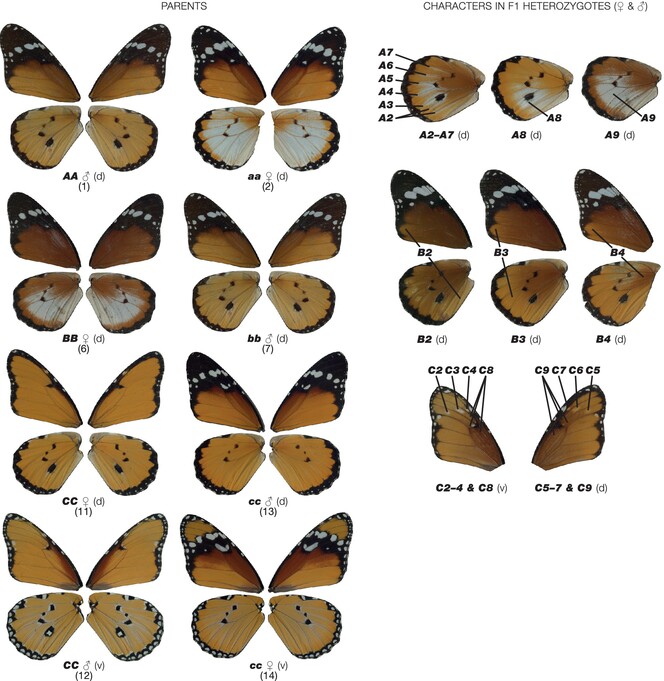
The African Monarch or African Queen shows intermediate dominance in the colour pattern heterozygotes formed across the broad East African contact zone. Here we quantify the level of penetrance of each heterozygote formed by interactions between the A, B and C colour pattern loci. We find that the A locus interacts with the B/C supergene and is thus an example of a genetic modifier.
REVIEW ARTICLES
Climate change and the biodiversity of alpine ponds: Challenges and perspectives
- First Published: 07 February 2024
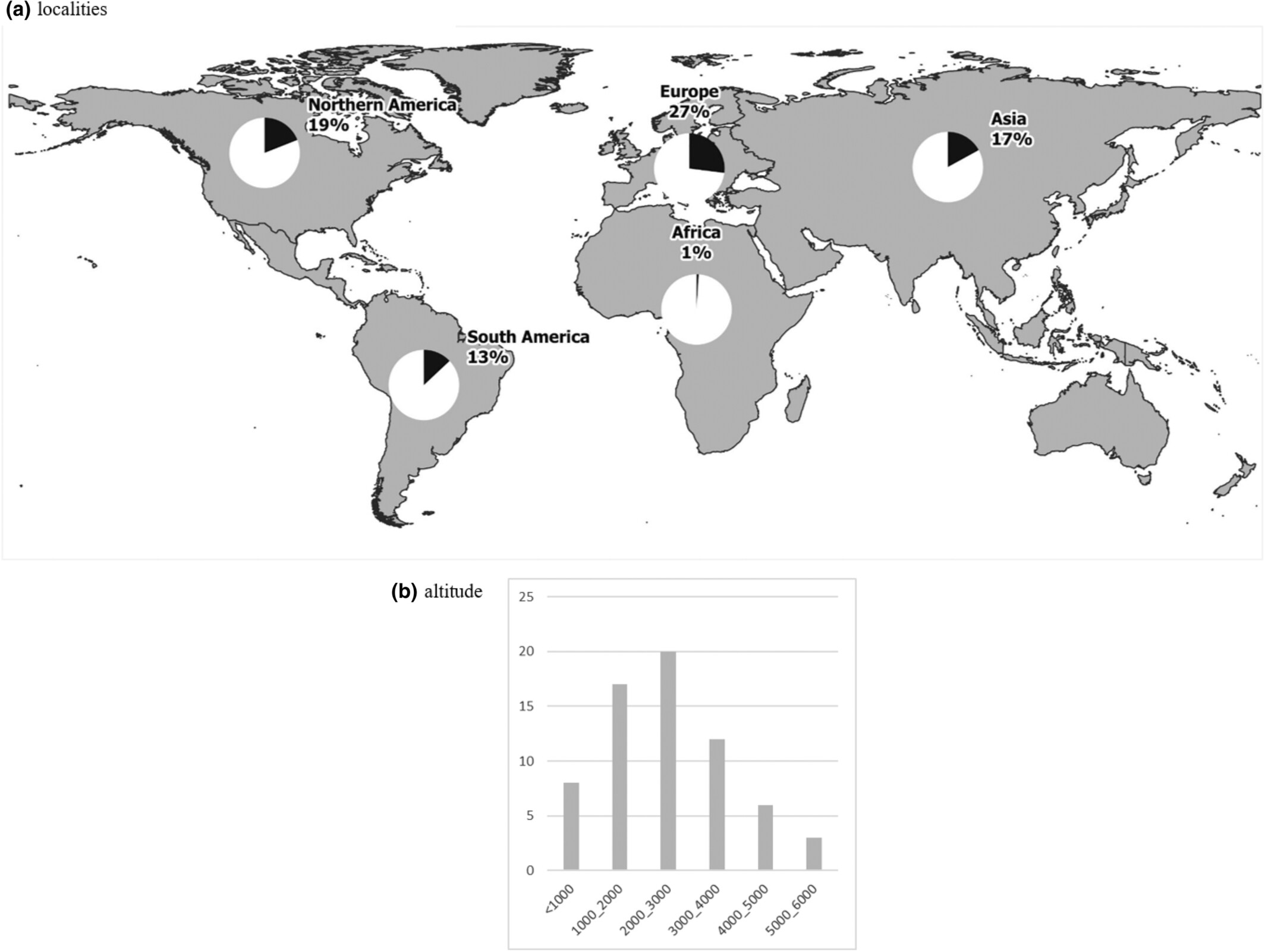
To understand the effects of climate change on alpine pond biodiversity, we performed a comprehensive literature review for papers published since 1955. Increased water temperature, reduced hydroperiod, and loss of connectivity between alpine ponds were the main drivers of biodiversity geographic distribution, leading to predictable changes in spatial patterns of biodiversity.
Conservation detection dogs: A critical review of efficacy and methodology
- First Published: 15 February 2024

Conservation detection dogs (CDD) can be effective and applied to possibly limitless conservation scenarios but moving forward researchers must provide more consistent and detailed methodologies so that comparisons can be conducted, results are more easily replicated and progress can be made in standardising CDD work. This review aims to summarise what is currently known about the use of scent detection dogs in conservation and elucidate which factors affect efficacy.
WORKING HYPOTHESIS
Dillenia (Dilleniaceae) pollen heteromorphy and presentation, and implications for pollination by bats
- First Published: 09 February 2024
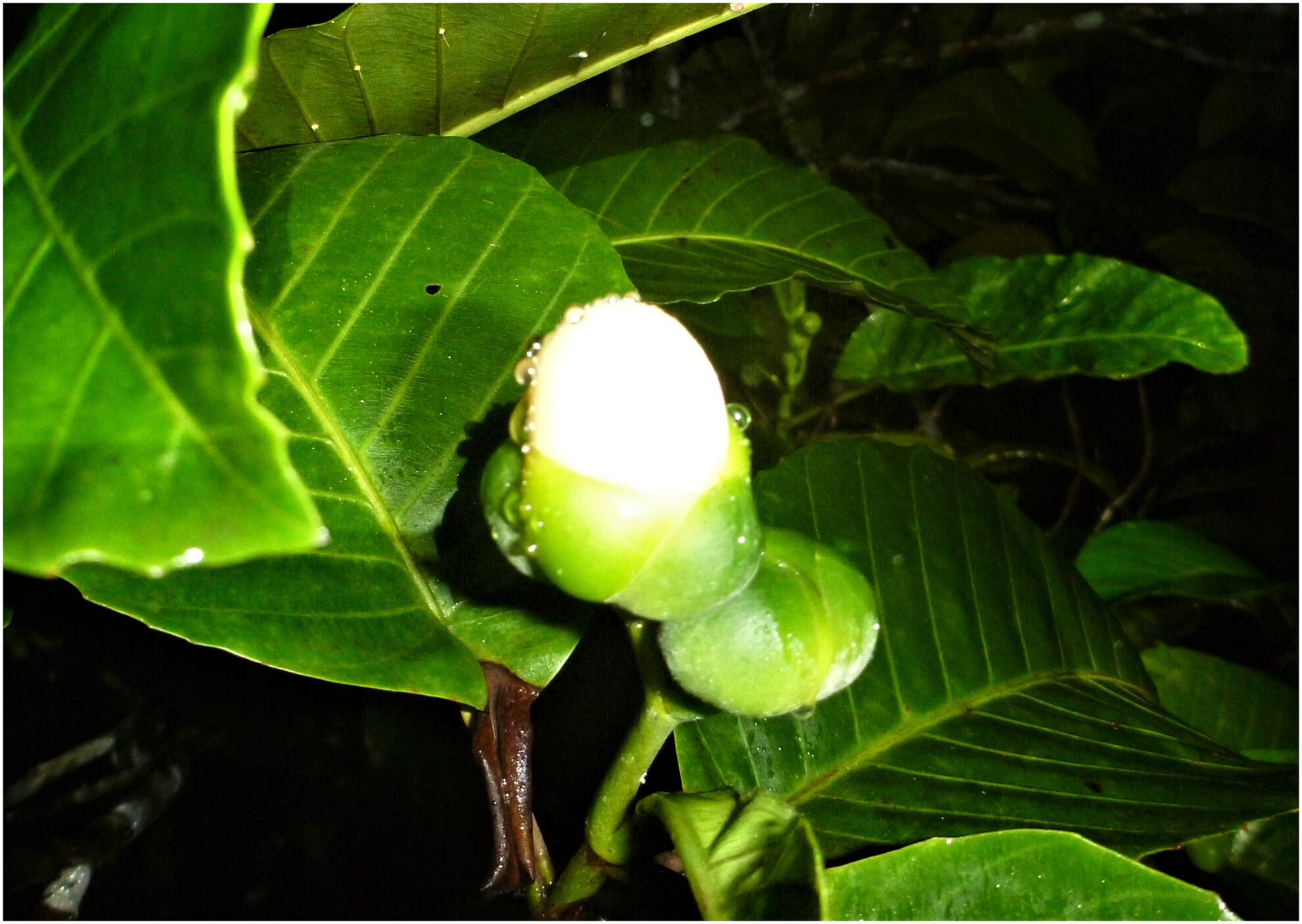
Dillenia species, like all members of the phylogenetically mysterious family Dilleniaceae, were believed to be nectarless and pollinated by bees until the discovery that D. biflora was pollinated by bats in Fiji. Uniform stamens and apical anther pores, dominant traits in species suspected to be pollinated by bats because their corollas do not open, add evidence that several Dillenia species, including threatened ones, may need bats for pollination.
Response to MHC-based olfactory cues in a mate choice context in two species of darter (Percidae: Etheostoma)
- First Published: 21 February 2024
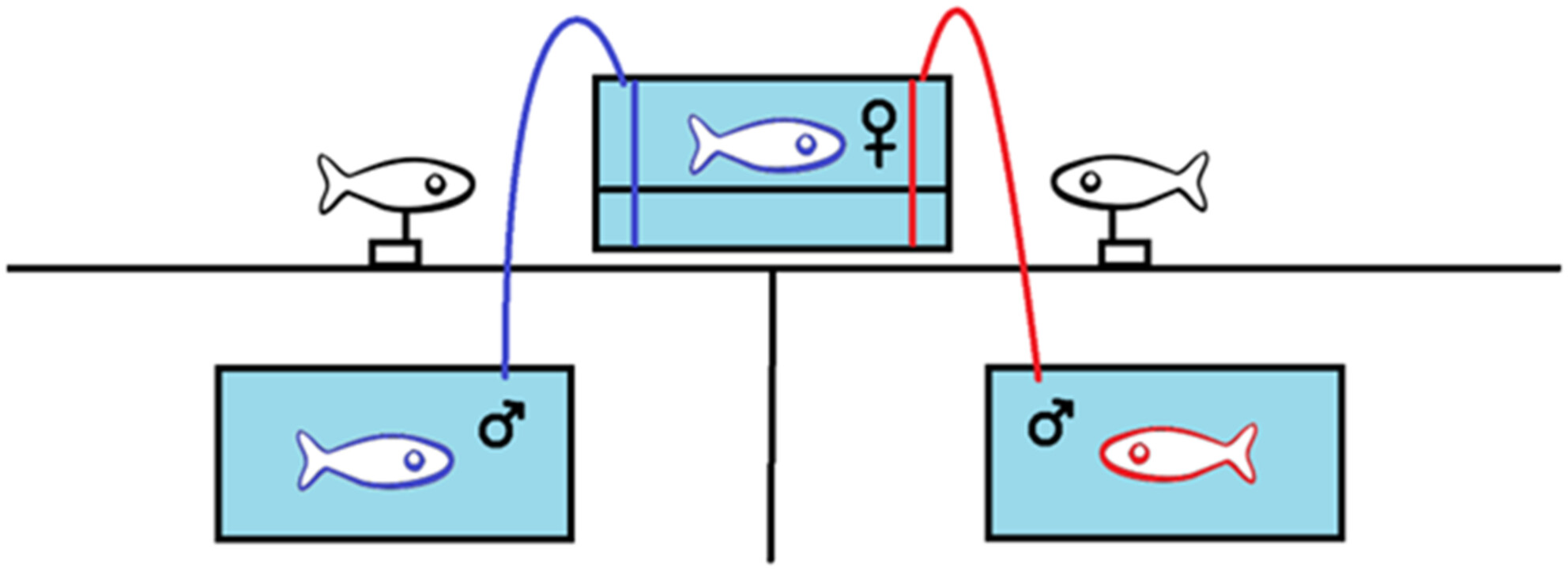
In this study we tested the “opposites-attract” hypothesis in two species of darter with known differences in female criteria used in mate choice: in the fantail darters (a paternal-care species), females prefer males with visual traits related to nest guarding and egg tending, while in rainbow darters (not a paternal-care species) female mate choice criteria are unknown. In dichotomous mate-choice trials, we presented females of both species with the scents of conspecific males with MHC class IIb genotypes that were either similar or dissimilar to that of the focal female. Our results do not support the “opposites-attract” hypothesis in darters.
REGISTERED REPORT
Are sub-alpine species' seedling emergence and establishment in the alpine limited by climate or biotic interactions?
- First Published: 13 February 2024
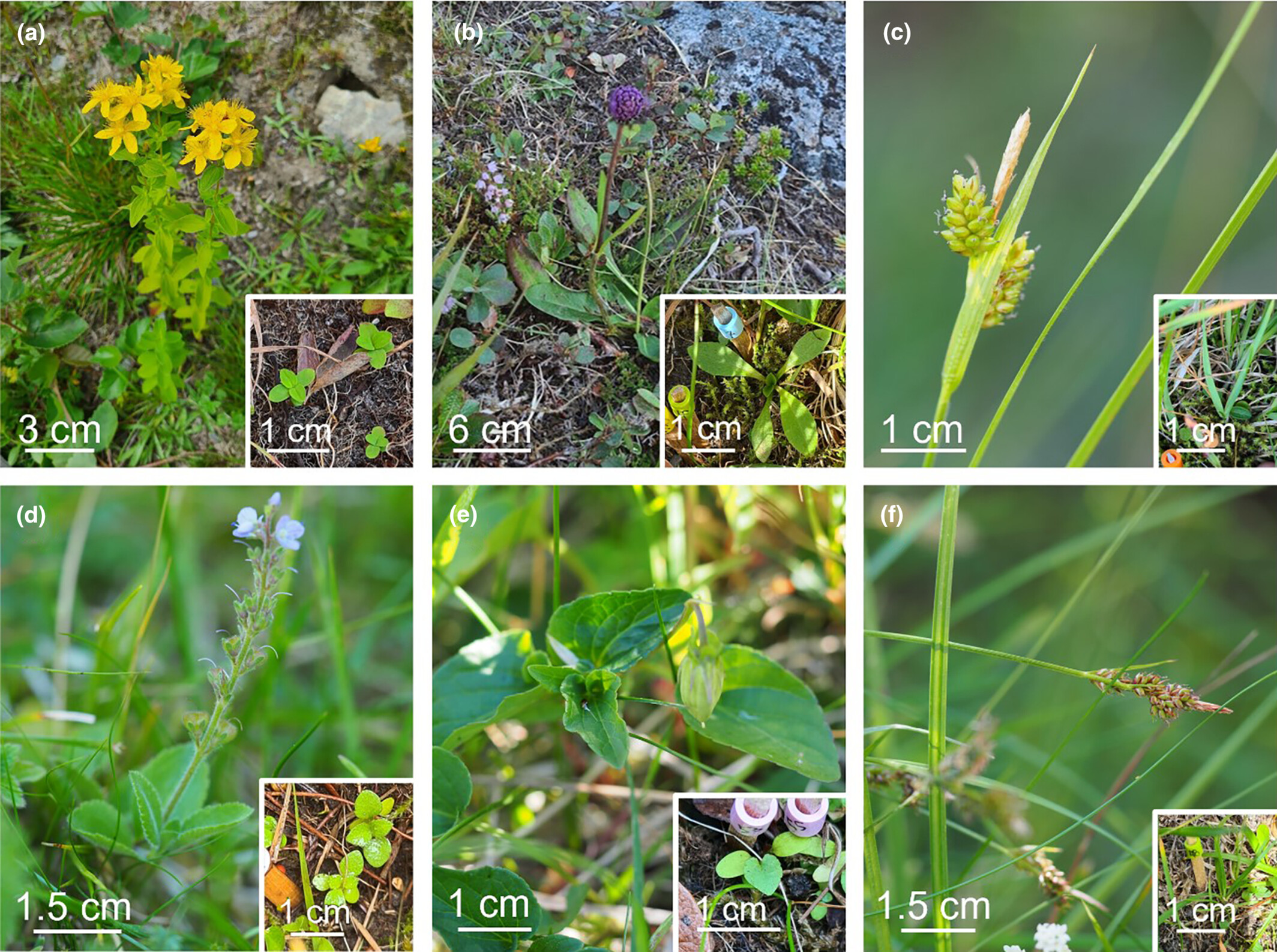
Plants are responding to climate change by shifting their ranges to higher elevations. There is a large variety in how fast and how far species spread, and we do not understand the factors that allow or restrict subalpine species from colonising new alpine locations. To explore the relative importance of abiotic and biotic factors, as well as species-specific life strategies, on these limitations, we performed a seed transplant experiment with and without experimental warming, crossed with manipulation of biotic interactions, replicated across a precipitation gradient, with three resource conservative and three resource acquisitive subalpine species.
RESEARCH ARTICLES
Sex-specific recruitment rates contribute to male-biased sex ratio in Adélie penguins
- First Published: 20 February 2024
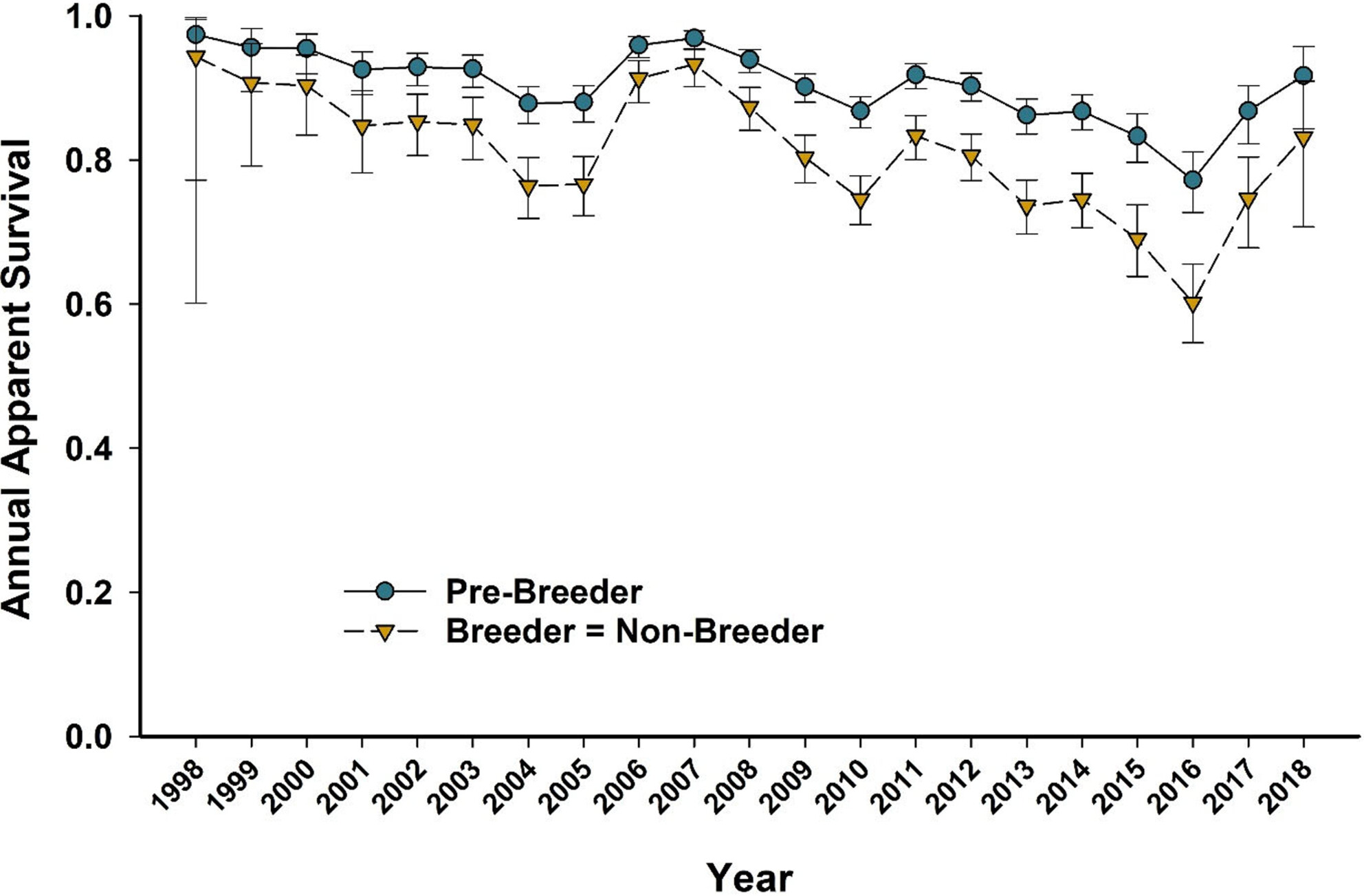
We detected no survival differences between male and female Adelie penguins, but the probability of recruiting into the breeding population was higher for females. In conjunction with the observed decrease in survival for birds of both sexes once they began to breed, females likely have shorter lifespans than males. These vital rate differences likely contributed to the male-biased sex ratio we observed in our study.
Co-occurring orchid species associated with different low-abundance mycorrhizal fungi from the soil in a high-diversity conservation area in Denmark
- First Published: 31 January 2024
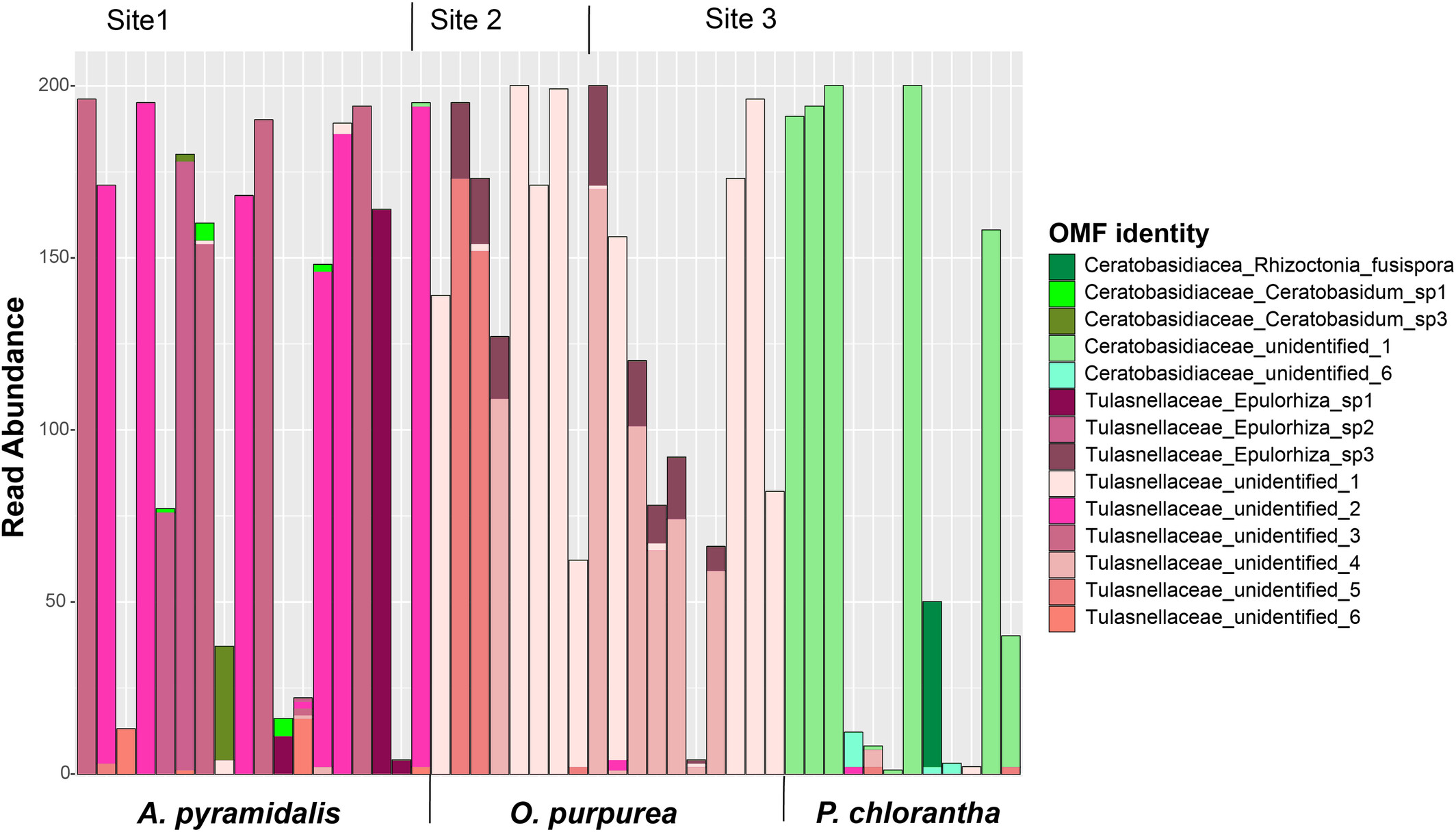
All orchids establish obligatory symbiotic relationships with specific fungi for germination and early growth, contributing to ecological niche differentiation. This investigation revealed that three co-occurring terrestrial orchid species engaged with distinct fungal partners. The identified fungi were detected at low abundance in the rhizosphere and appeared nearly absent from bulk soil, raising questions on the ecology and trophic mode of orchid mycorrhizal fungi beyond orchid tissues.
Potential impact of climatic factors on the distribution of Graphium sarpedon in China
- First Published: 06 February 2024
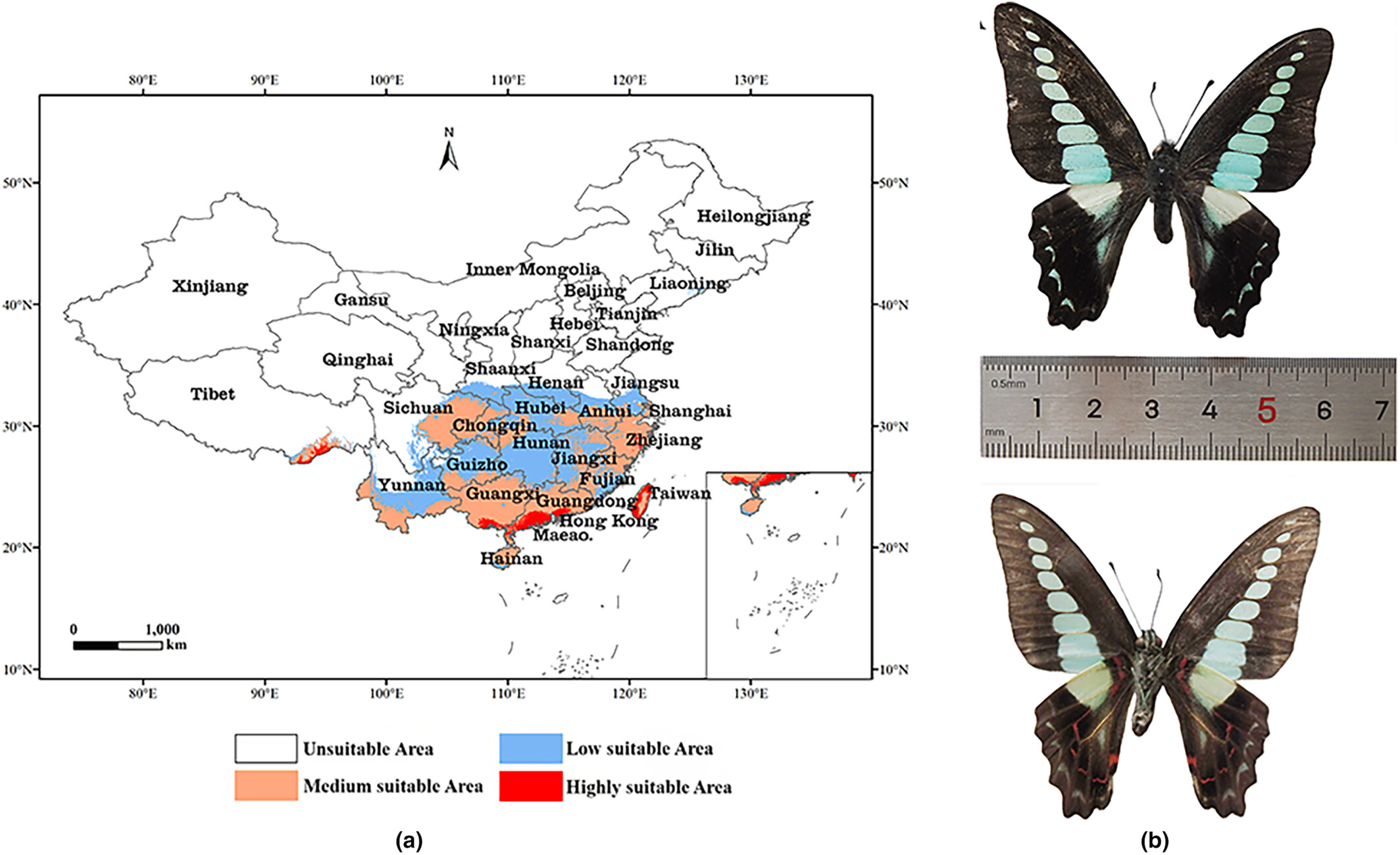
In this study, we analyzed the suitable distribution areas of Graphium sarpedon under current and future climate change (SSP1-2.6, SSP2-4.5, and SSP5-8.5) for two periods (the 2050s and 2090s) using the MaxEnt model. The analysis results showed that the high suitable areas are mainly distributed in southern Guangdong, southwestern Guangxi, western Taiwan, Hong Kong, and Zhejiang. Under different future climatic conditions, some of the high, medium, and low suitability zones for G. sarpedon increased and some decreased, but the mass center did not migrate significantly.
Are fecal samples an appropriate proxy for amphibian intestinal microbiota?
- First Published: 31 January 2024
Lesser prairie-chicken dispersal after translocation: Implications for restoration and population connectivity
- First Published: 31 January 2024
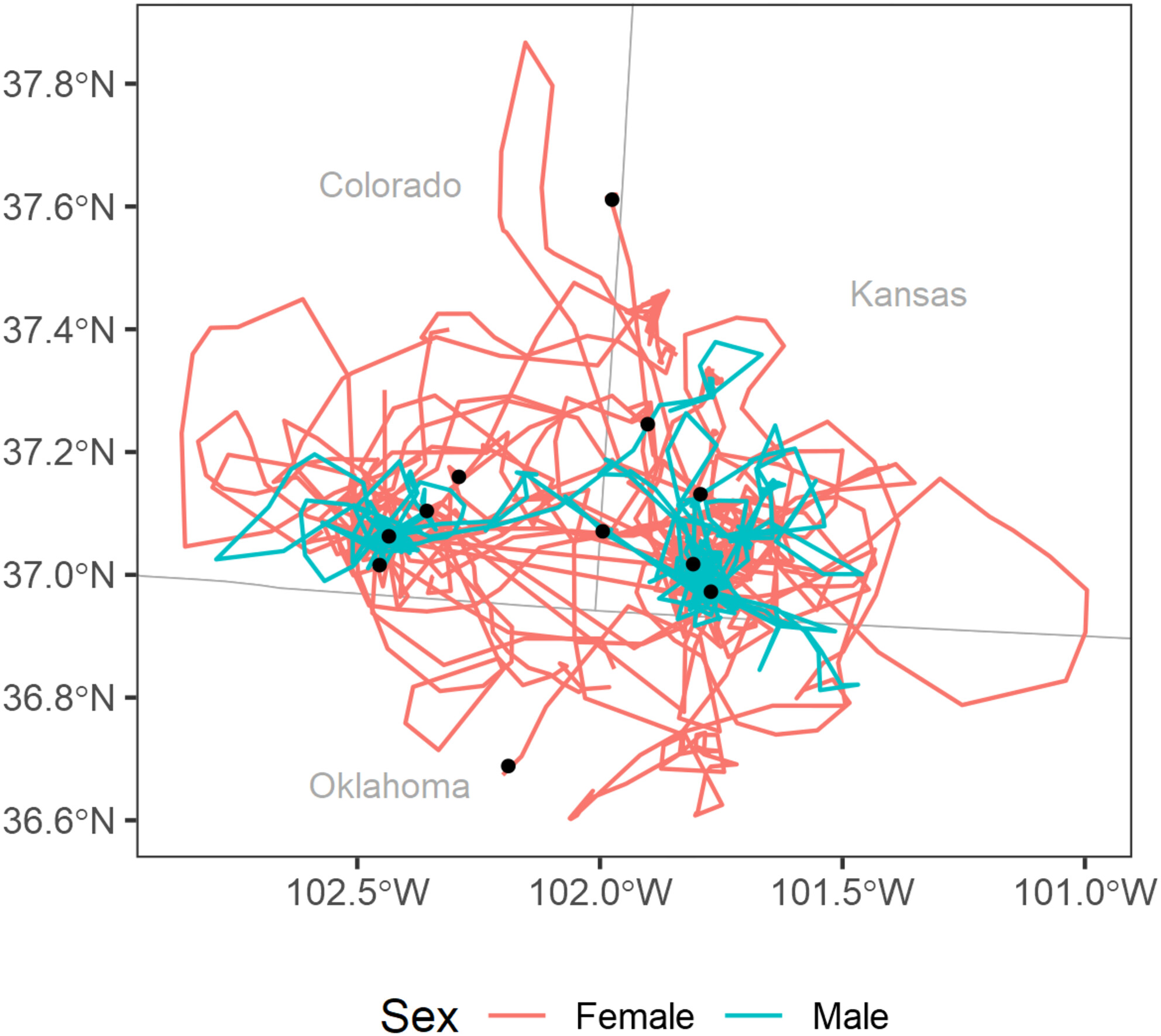
Lesser prairie-chickens translocated to southeastern Colorado and southwestern Kansas experienced almost universal dispersal away from the release site (96%). During dispersal movements, lesser prairie-chickens selected for steps that ended far from roads and in Conservation Reserve Program grasslands. Dispersal rates suggest that translocation is better suited to regional, rather than site-specific, population augmentation for this species.
Factors influencing the detection and occupancy of little brown bats (Myotis lucifugus)
- First Published: 31 January 2024
Cooler and drier conditions increase parasitism in a subtropical damselfly population
- First Published: 31 January 2024
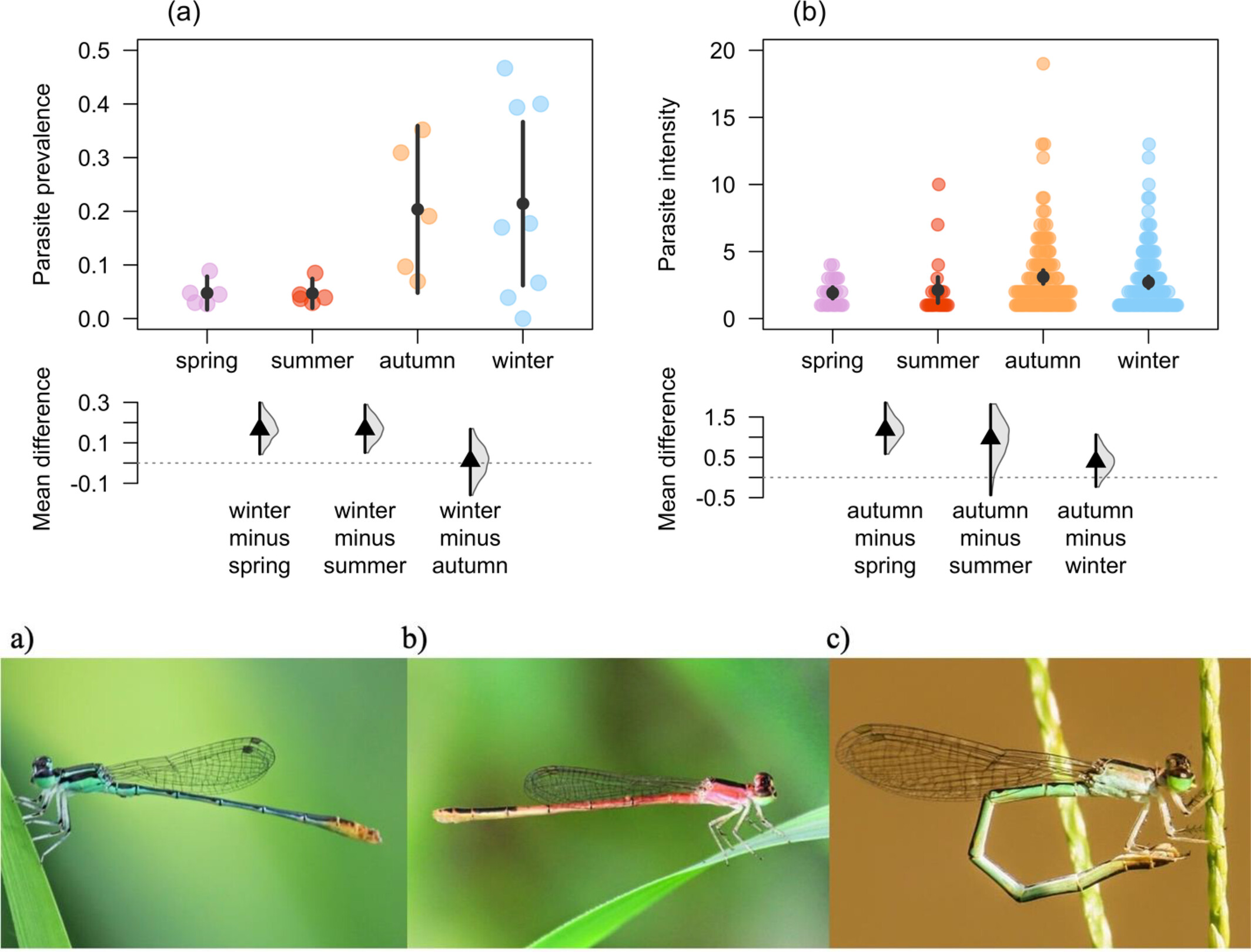
Understanding temporal variation of host–pathogen interactions might help to understand the impact of climate change on insect diseases. Here, we showed that seasonal variation of temperature and precipitation drives parasitism in subtropical climate. Our study highlights that climate change might increase diseases in subtropical climate which may contribute to further insect decline in the subtropics.
Red vision in animals is broadly associated with lighting environment but not types of visual task
- First Published: 31 January 2024
Accounting for unobserved population dynamics and aging error in close-kin mark-recapture assessments
- First Published: 07 February 2024
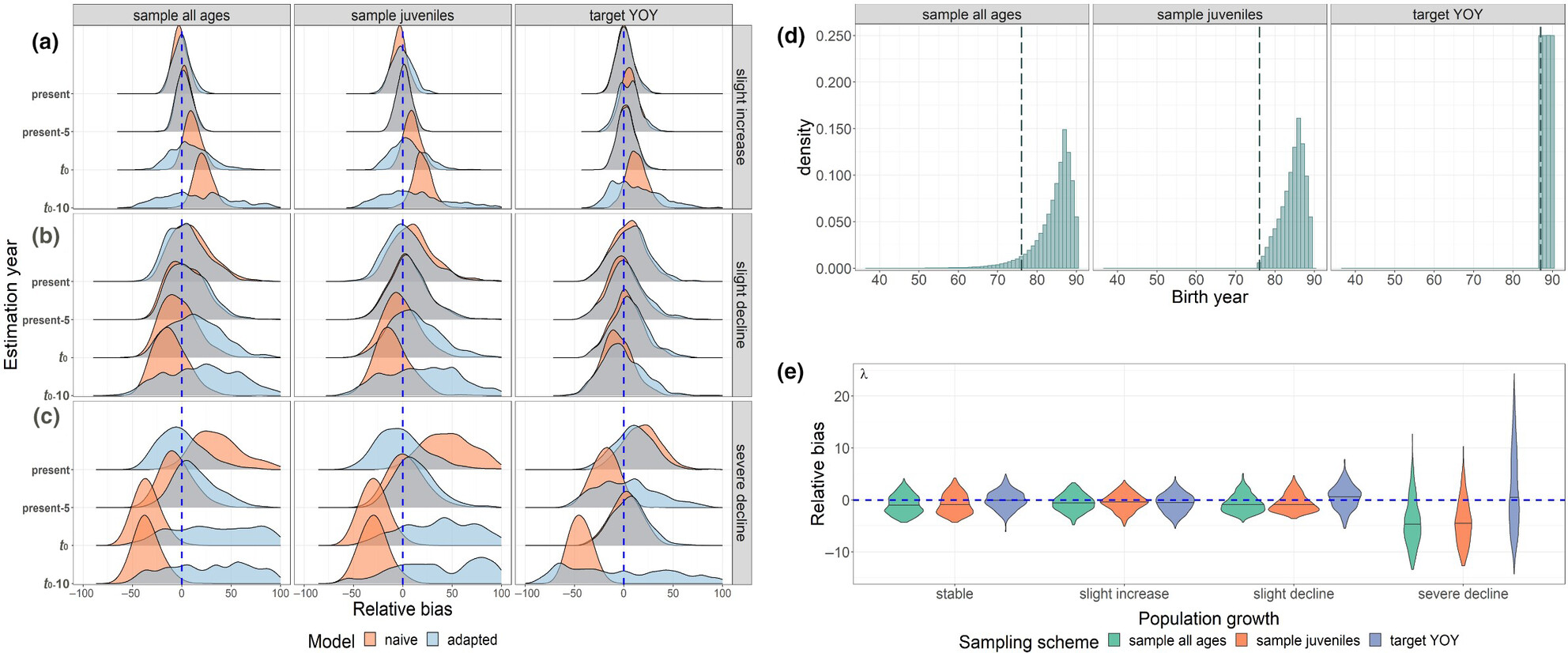
Here, we investigate the sensitivity of close-kin mark-recapture (CKMR) models to violations of underlying assumptions, and then propose and test modified approaches that correct the bias. We find that base-case CKMR models are sensitive to unmodeled population dynamics and measurement error including interannual fluctuations in population size, intermittent breeding dynamics, and aging error. We then present adapted models that account for the hidden population dynamics, and – using both simulation and real genetic data – show that targeted sampling of juveniles that can be reliably aged can eliminate the bias that arises from errors in aging.
Climate is changing, are European bats too? A multispecies analysis of trends in body size
- First Published: 07 February 2024
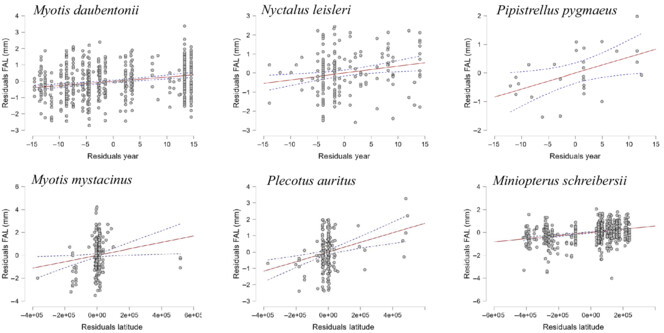
This study spanning over 20 years and involving 15 bat species in Italy challenges the expectation of a widespread increase in body size in response to climate change. Contrary to predictions, only three out of the 15 species exhibited a noticeable size increase, prompting a revaluation of bats as reliable indicators of climate change based on body size alterations. We identify temperature-related variables, sexual dimorphism, latitude, and altitude as crucial factors influencing bat body size dynamics, revealing a nuanced interplay that adds complexity to our understanding of how bats respond to environmental changes over time and space.
Realized thermal niche approach eliminates temperature bias in bioenergetic model estimates
- First Published: 14 February 2024

Bioenergetics models are routinely used to estimate food consumption or growth and are thus critical tools in applied science and decision-making in aquatic ecosystem and species management. Even though fish telemetry is widely used and has enabled researchers to accurately document in-situ temperatures aligned with dynamic fish behavior, that is, their realized thermal niche, the traditional use of lab-derived optimum temperatures based on the physiological optimum theory in models still persists. In this study, we contrasted optimum and field temperature data in models and quantified the effects on growth and consumption of two widely distributed salmonids that occupy both marine and freshwater ecosystems. We demonstrate that significant biases in the model estimates of growth and lifetime prey consumption produced using lab-obtained optimum temperatures could be eliminated by the adoption of realized thermal niche approach to bioenergetics modeling.
Asynchrony in terrestrial insect abundance corresponds with species traits
- First Published: 31 January 2024
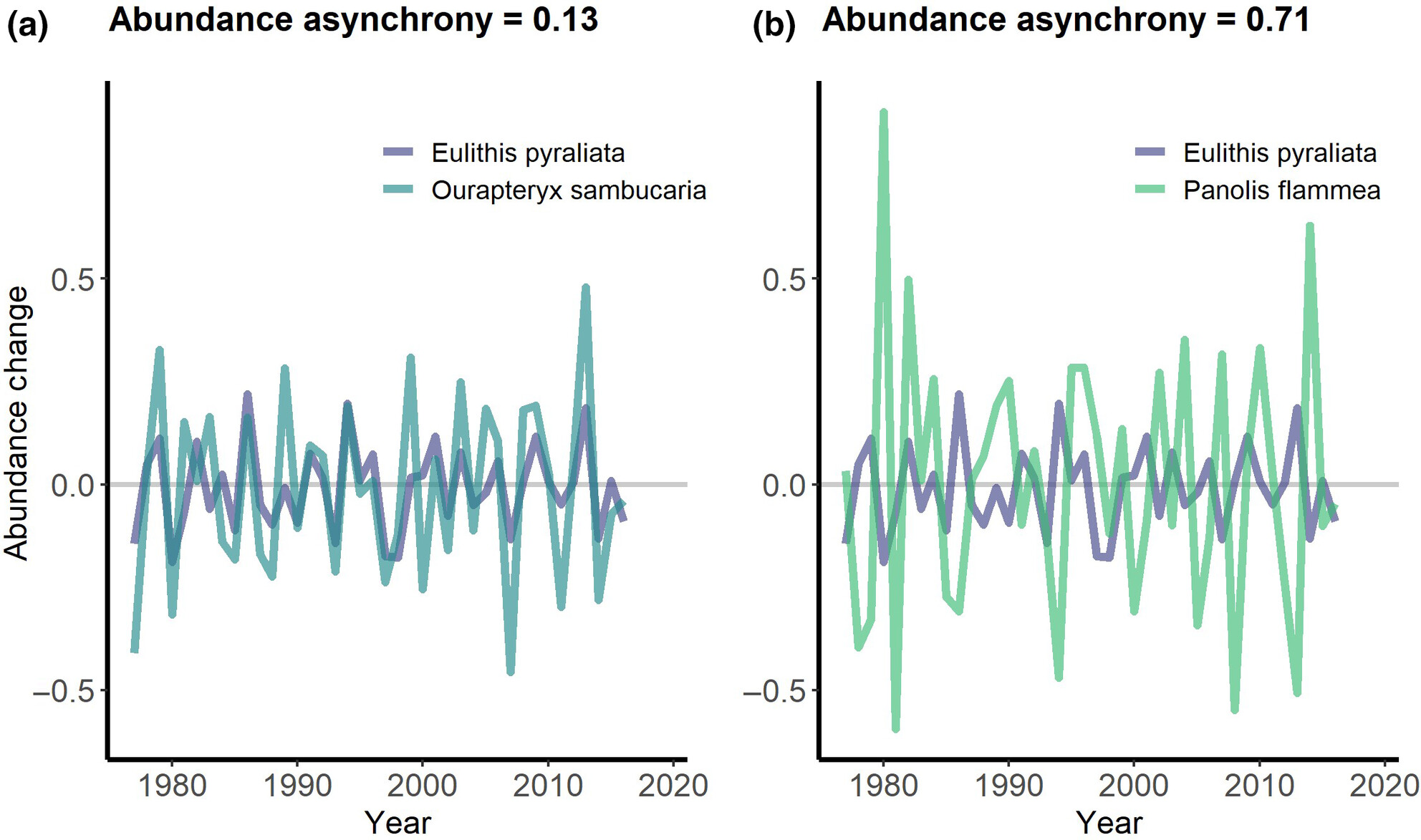
Using data from long-term monitoring scheme data and novel trait data, we explore the relationship between species trait dissimilarity and their population asynchrony amongst macro-moths, butterflies and bumblebees. We find that differences in certain traits that correspond with species' exposure to environmental variables, especially phenology-related traits such as flight period, particularly correlate with population asynchrony between species, giving us further insight into the mechanisms underpinning stability and resilience in insect communities.
A test of balanced fitness limitations theory: Pollen limitation in plants
- First Published: 31 January 2024
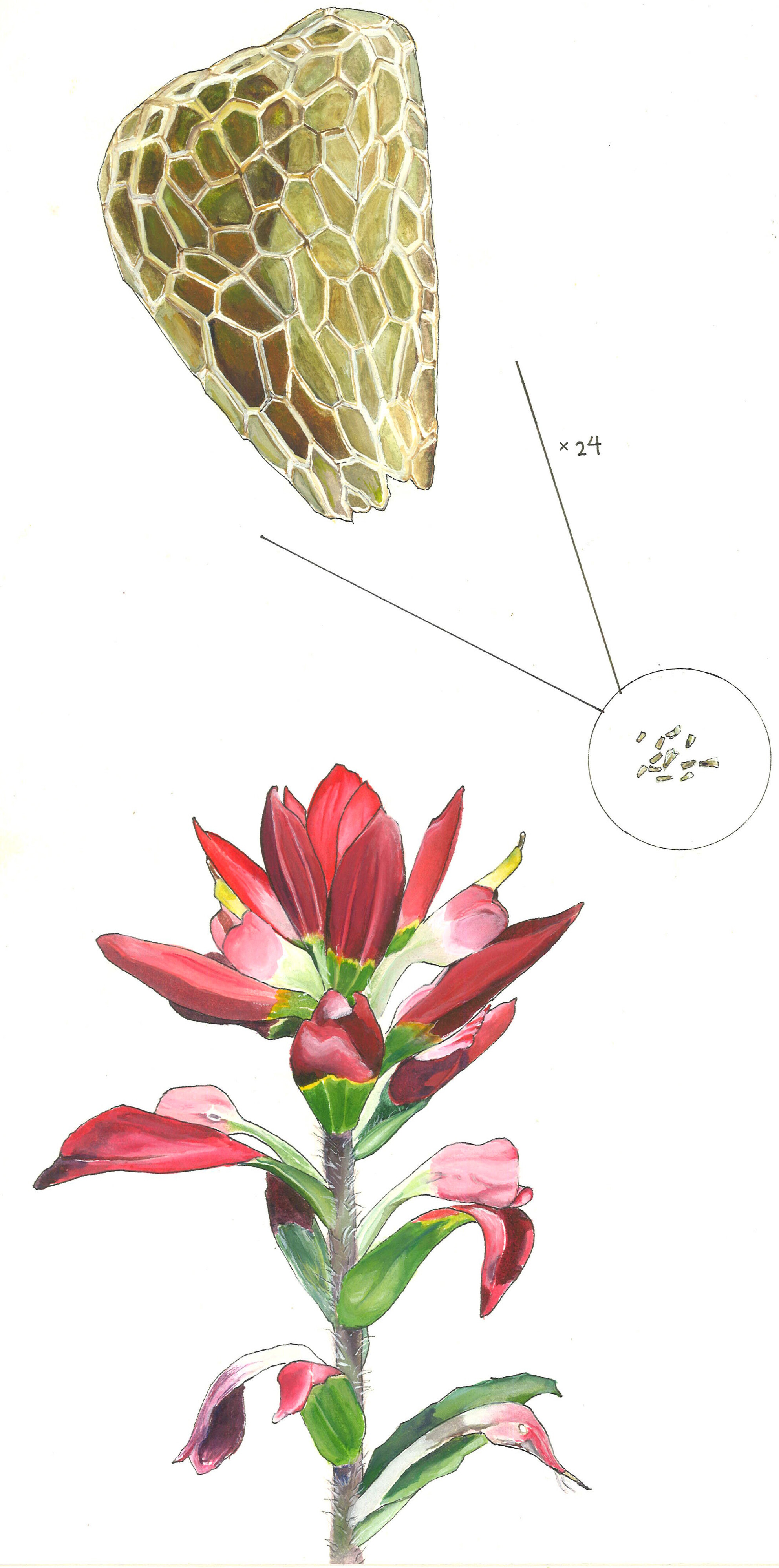
We assembled a comparative dataset of pollen limitation in plants to test a central prediction from the theory of balanced fitness limitations, namely that the cost of harvesting a particular resource shapes the likelihood that a shortfall of that resource will constrain realized fitness. We find no support for the prediction that plants that invest more heavily in pre-pollination costs are subject to greater pollen limitation.
Assessing adequacy of citizen science datasets for biodiversity monitoring
- First Published: 31 January 2024
Citizen science data are increasingly being used to monitor biodiversity, but datasets produced by citizen scientists come with a number of well-recognised challenges. In this paper, we develop several metrics to assess the adequacy of spatial observation data from citizen science projects and explore these metrics at the species level for Australia's terrestrial birds. We find that data adequacy for most Australian birds is increasing, but several gaps still remain in the spatial coverage of citizen science data across the Australian continent.
Effects of overgrazing on the functional diversity of rodents in desert areas
- First Published: 21 February 2024
IBRtools: An R package for calculating integrated biomarker indexes
- First Published: 01 February 2024
The role of large mammalian herbivores in shaping and maintaining soil microbial communities of natural mineral licks: A case study on sika deer at the firebreak adjacent to the Sino-Russian border
- First Published: 01 February 2024
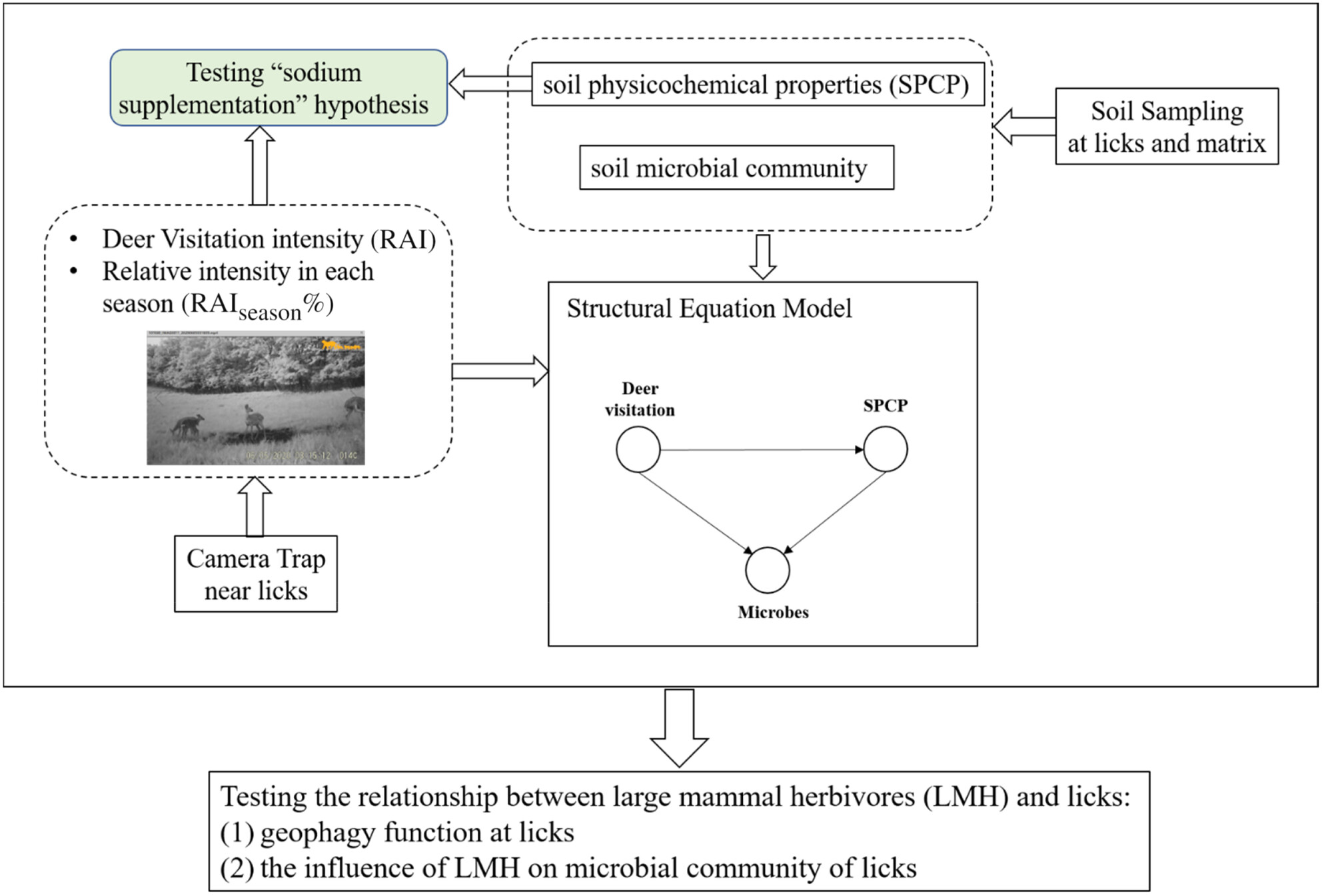
The geophagy of sika deer at natural mineral licks mainly involves supplementation with sodium during the growing season. Licks are vulnerable due to their unstable soil microbes and susceptibility to carbon and nitrogen perturbation. Sika deer play critical roles in shaping and stabilizing microbes at licks through multiple behaviors such as grazing, trampling, and excretion.
Heterozygosity is low where rare color variants in wild carnivores prevail
- First Published: 07 February 2024
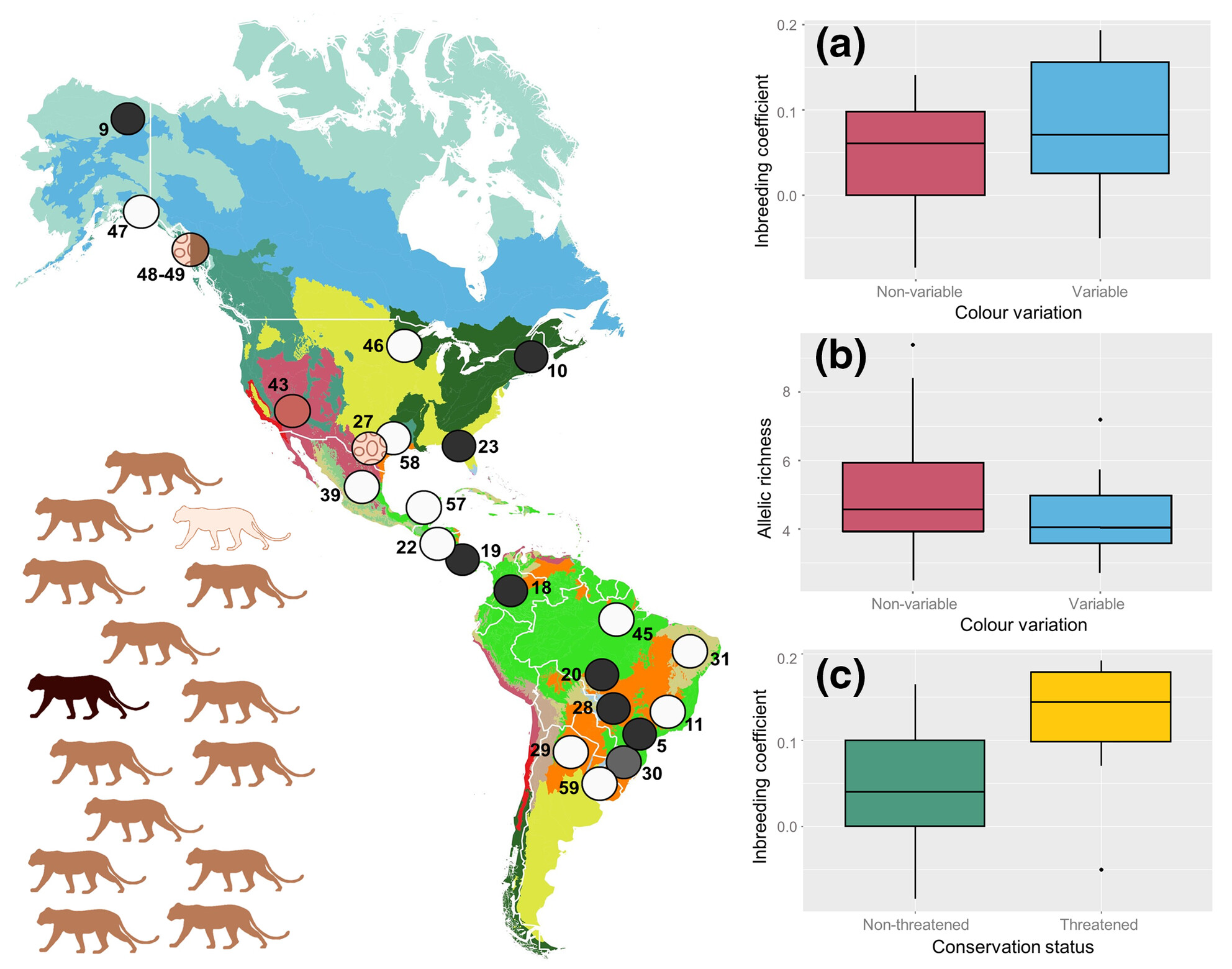
We present an overview of all rare color variants in the order Carnivora, and compiled demographic and genetic data of the populations where they did and did not occur, to test for significant correlations. We found that variable populations displayed a significant reduction in heterozygosity and allelic richness compared to non-variable populations across species. It is likely that small effective size had phenotypic consequences on the extant populations, and that genetic drift is locally overruling natural selection.
Temporal variations in female moose responses to roads and logging in the absence of wolves
- First Published: 01 February 2024
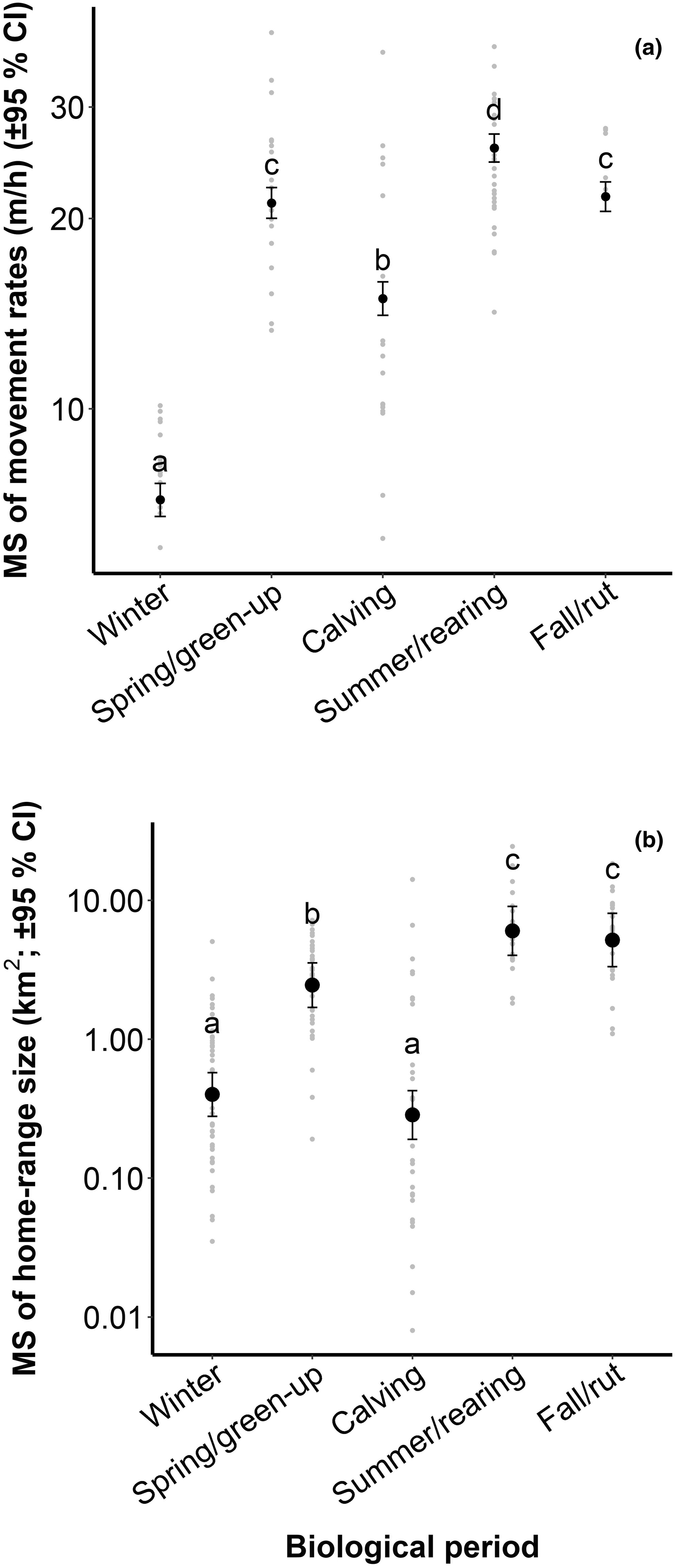
We characterized temporal changes in moose habitat selection and space use patterns near a road network in a wolf-free area located in eastern Canada. Our results reaffirmed the year-round aversive effect of roads, even in the absence of wolves, but the magnitude of this avoidance differed between day phases, being lower during the “dusk-night-dawn” phase, perhaps due to a lower level of human activity on and near roads. We found that moose behavior was similar to what was observed in landscapes where moose and wolves cohabit, suggesting that the risk associated with humans, perceived as another type of predator, outweighs that of wolf predation in heavily managed landscapes.
Enhanced dispersal capacity in edge population individuals of a rapidly expanding butterfly
- First Published: 01 February 2024
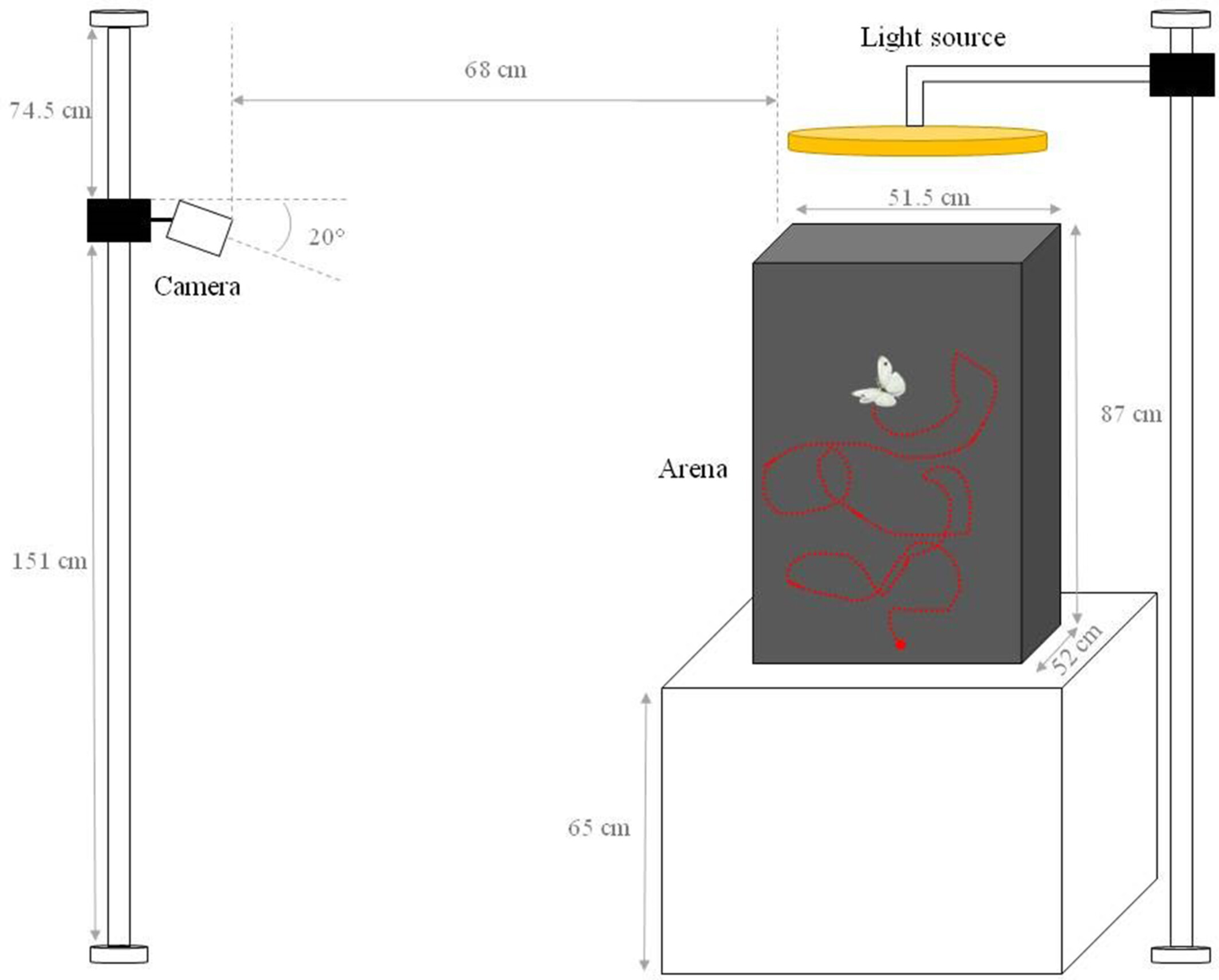
We investigated differences in flight performances between core and edge population of the Southern small white butterflies (Pieris mannii) currently expanding its range northward. We found higher movement capacity in the individuals from the newly colonized range suggesting a potential dispersal syndrome in the edge population, which likely contributed to the rapid range expansion of this species.
Application of lidar to assess the habitat selection of an endangered small mammal in an estuarine wetland environment
- First Published: 01 February 2024
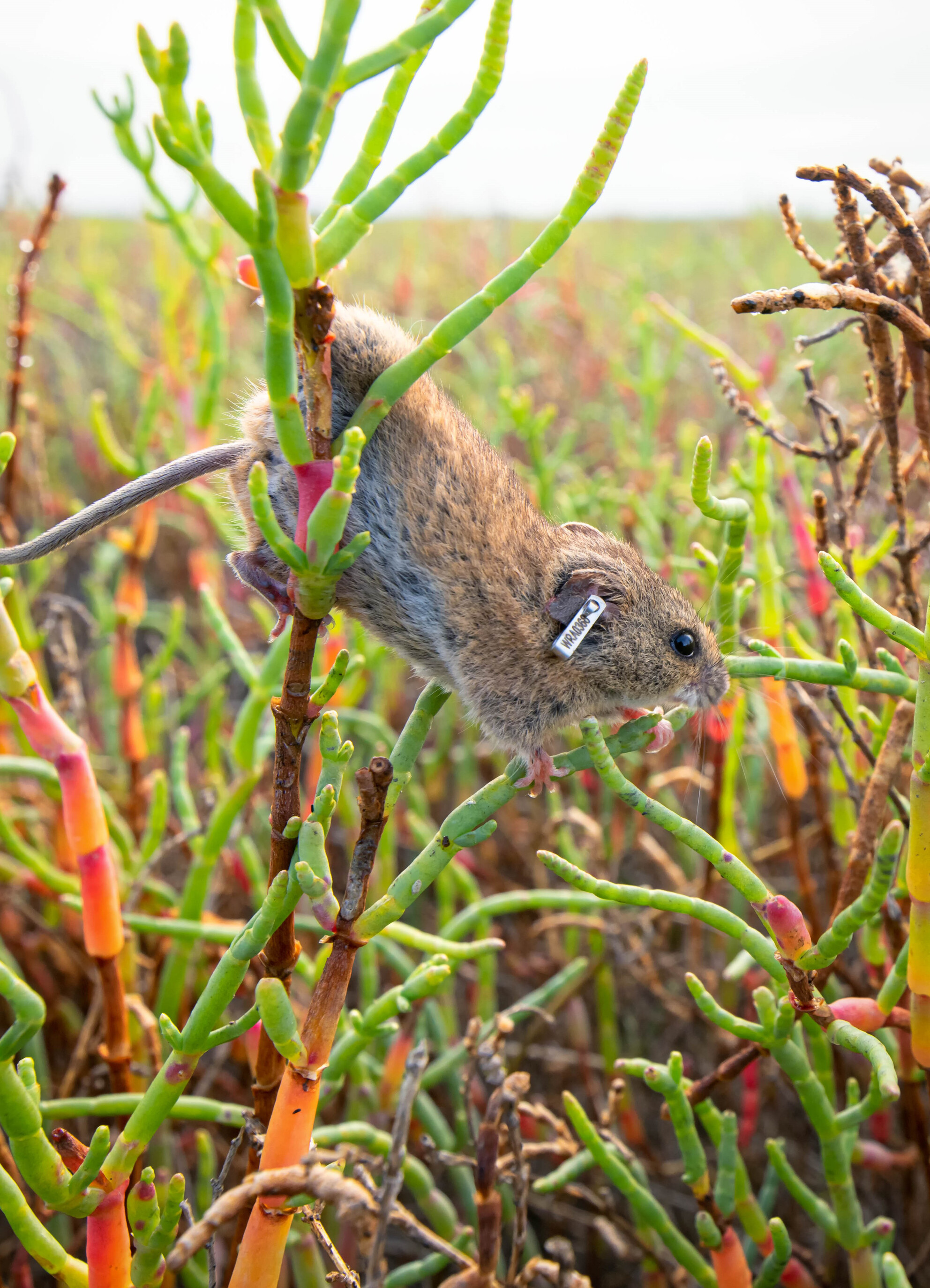
Light detection and ranging (lidar) has rarely been applied in wetland ecosystems or to study the habitat selection of small mammals. We demonstrate the efficacy of lidar in examining the role of vegetation structure in determining the habitat selection of the endangered salt marsh harvest mouse (Reithrodontomys raviventris) in a brackish wetland in California. We found that salt marsh harvest mice selected microhabitats with characteristics that provide refugia from tides and predators, such as taller and denser vegetation and proximity to levees. At the mesohabitat scale, salt marsh harvest mice were associated with a lower percentage of bare ground and pickleweed (Salicornia pacifica) presence. Preserving higher elevation wetland habitat features such as levees and supporting a heterogeneous mixture of shorter and taller vegetation types will benefit salt marsh harvest mouse populations.
TreeViewer: Flexible, modular software to visualise and manipulate phylogenetic trees
- First Published: 01 February 2024
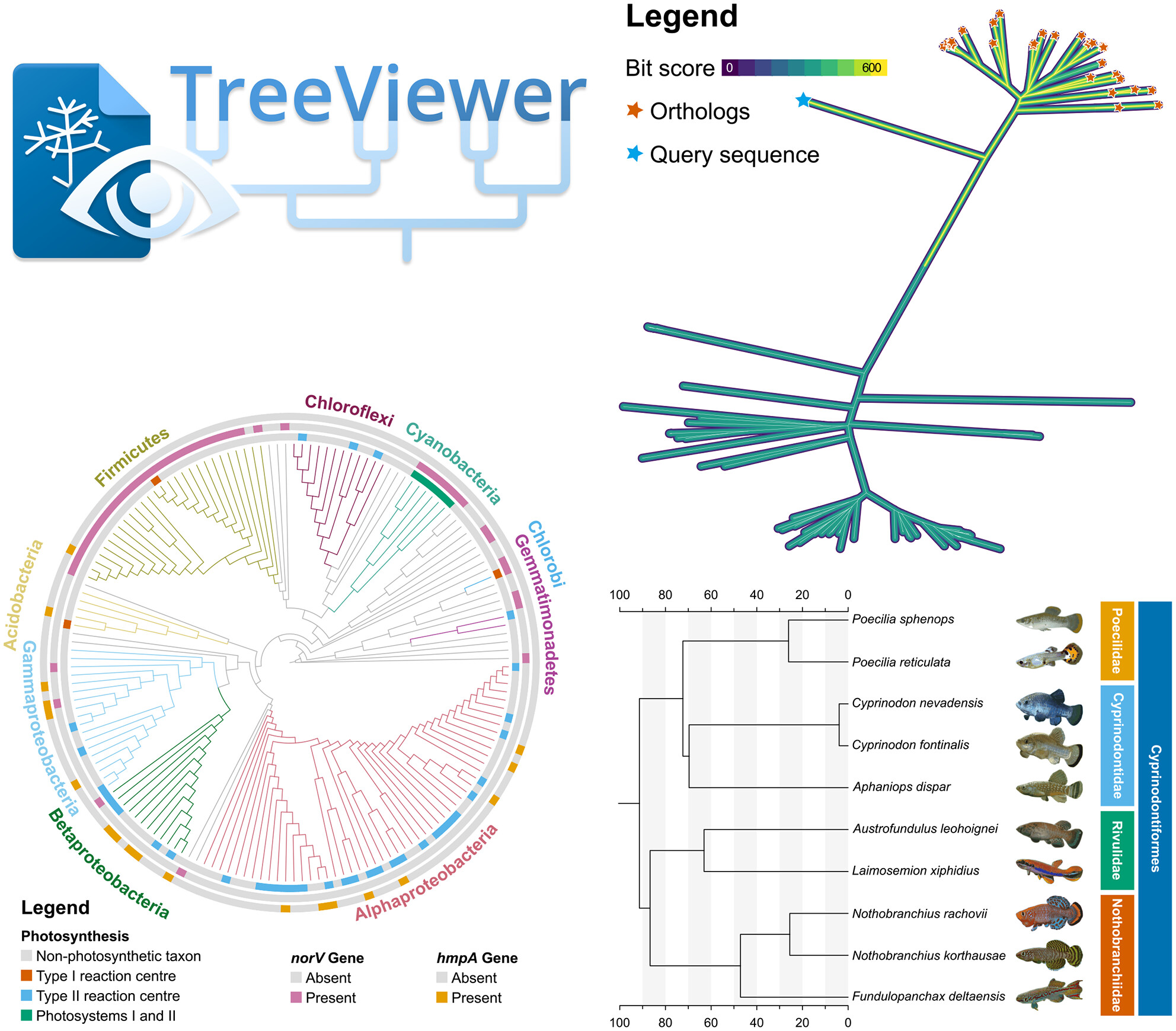
TreeViewer is a new software to draw phylogenetic trees that is flexible, modular, and user-friendly. Plots are produced as the result of a user-defined pipeline, which can be finely customised and easily applied to different trees. TreeViewer is mainly aimed at users wishing to produce highly customised, publication-quality tree figures using a single GUI software tool and is released under an AGPLv3 licence for Windows, Linux, and macOS operating systems.
Effects of mowing on body size patterns in spider assemblages of mesic meadows
- First Published: 15 February 2024
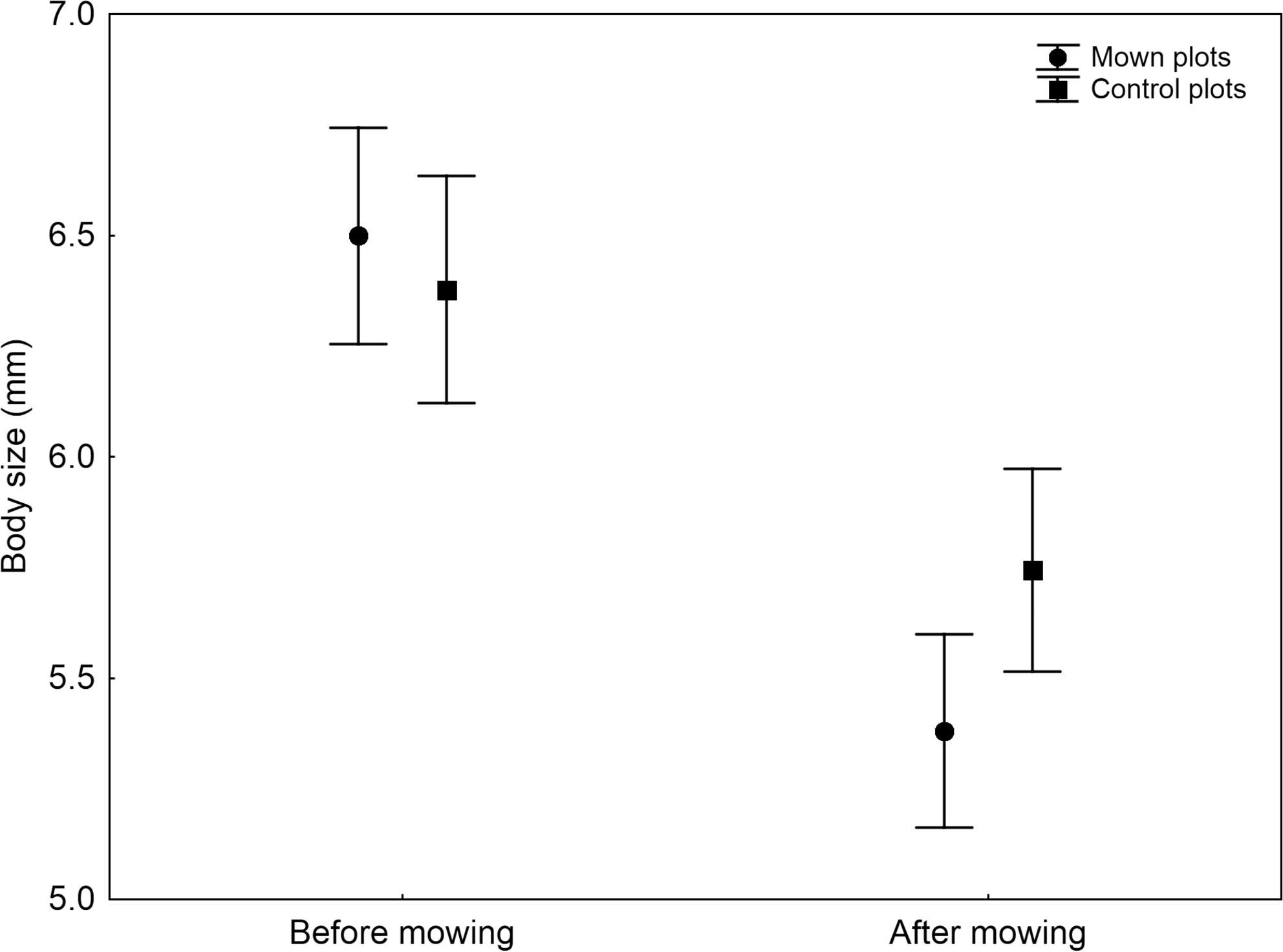
In the submitted paper, we described how mowing, as a strong habitat disturbance, influenced on mean, skewness and kurtosis of the body size in epigeic spider assemblages. We found that mowing had no significant effect on mean body size, skewness and kurtosis of the body size in epigeic spider assemblages. However, after the cut, mown plots showed, on average, significantly smaller spider species than unmown plots. Both the value of skewness and kurtosis significantly increased after mowing but to the same extent on both the control and mown plots.
Comparison of different macroinvertebrates bioassessment indices in a large near-natural watershed under the context of metacommunity theory
- First Published: 05 February 2024
The influence of incubation temperature on offspring traits varies across northern and southern populations of the American alligator (Alligator mississippiensis)
- First Published: 15 February 2024
Distribution of the Asiatic golden cat (Catopuma temminckii) and variations in its coat morphology in China
- First Published: 07 February 2024
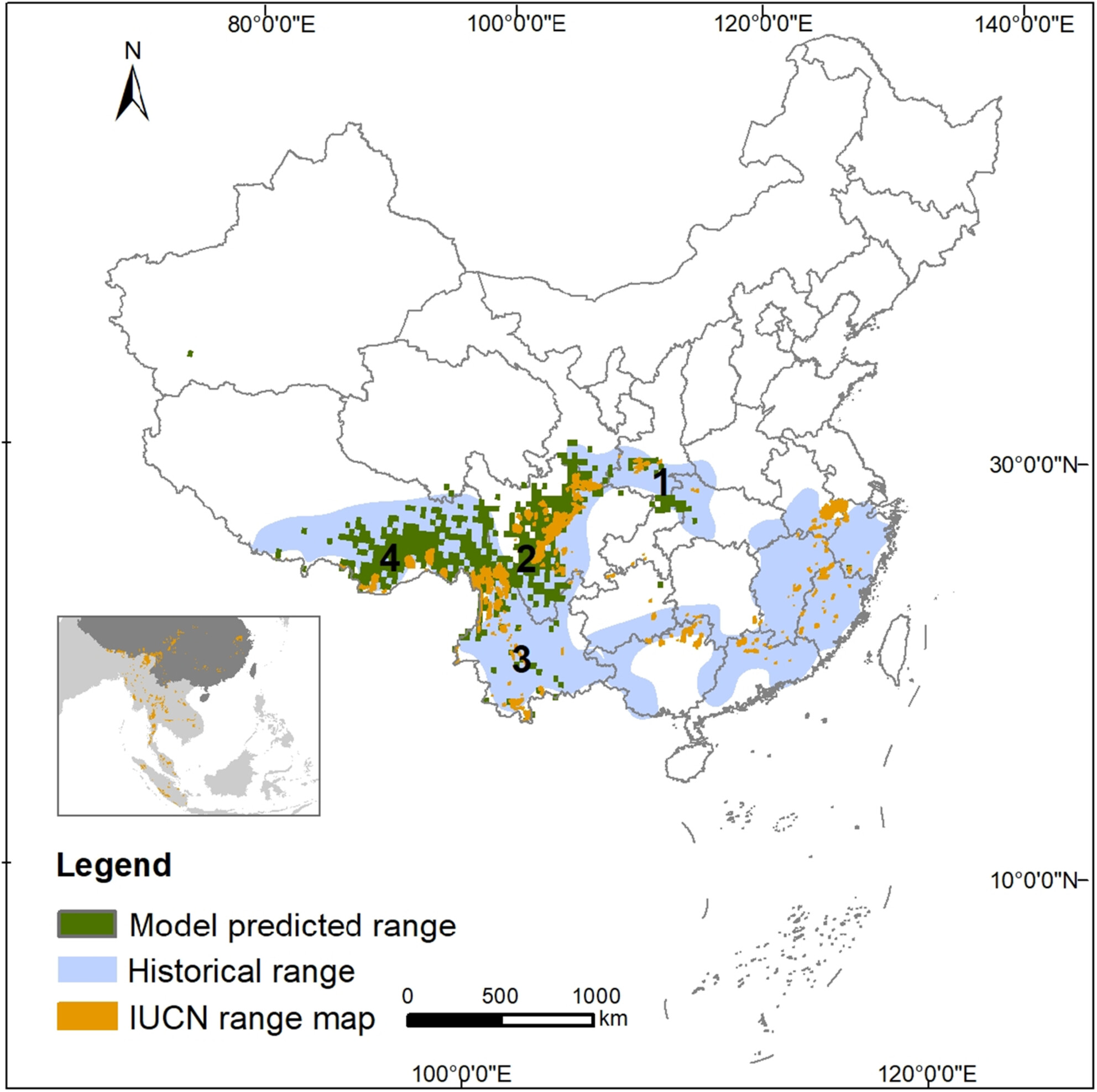
In this study, for the first time, we compiled the state-wide occurrence records (N = 409), mainly from the camera-trapping surveys, of Asiatic golden cats from 2008 to 2019, and predicted its current distribution across the country through species distribution modeling using random forest algorithm. The results showed that the predicted habitats were mainly located in southwest China. From the 287 camera-trapping detections with photographs and/or videos collected across all populations, we identified six coat morphs and found the complexity of coat morph composition within regional populations showed an increasing gradient from northeast to southwest.
Variations in root architecture traits and their association with organ mass fraction of common annual ephemeral species in the desert of northern Xinjiang
- First Published: 07 February 2024
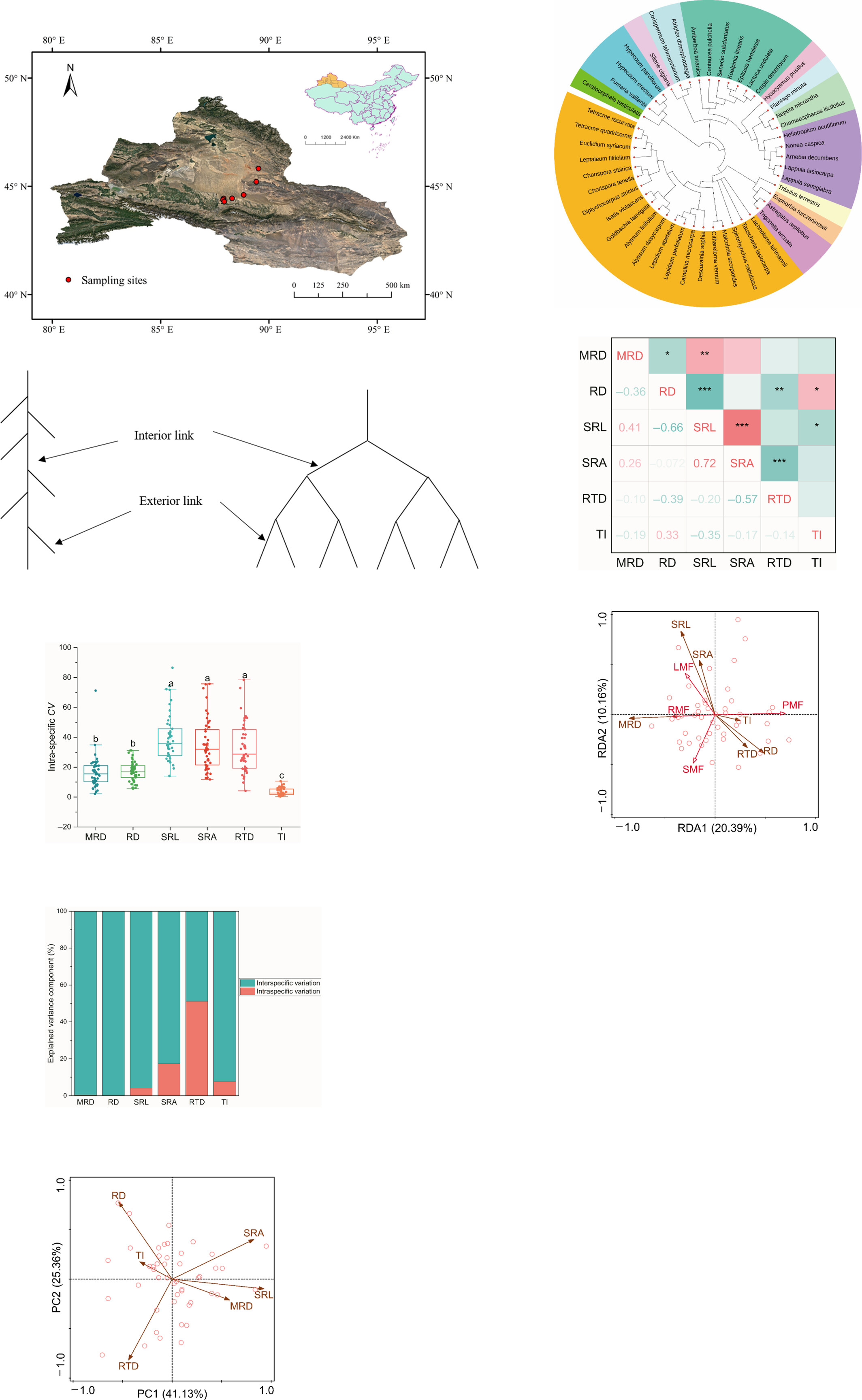
In the present study, biomass allocation and phylogenetic relationship affect the root system architecture and its variation patterns were investigated in annual ephemerals. Although we found that biomass allocation indicators and trait variation can reflect the adaptive strategies of annual ephemerals, the impact of phylogenetic relationships is equally important.
Effects of microhabitat features on the intraspecific variability of the distribution and functional traits in a highest elevational distributed lizard
- First Published: 15 February 2024
Temporal change in urban fish biodiversity—Gains, losses, and drivers of change
- First Published: 06 February 2024
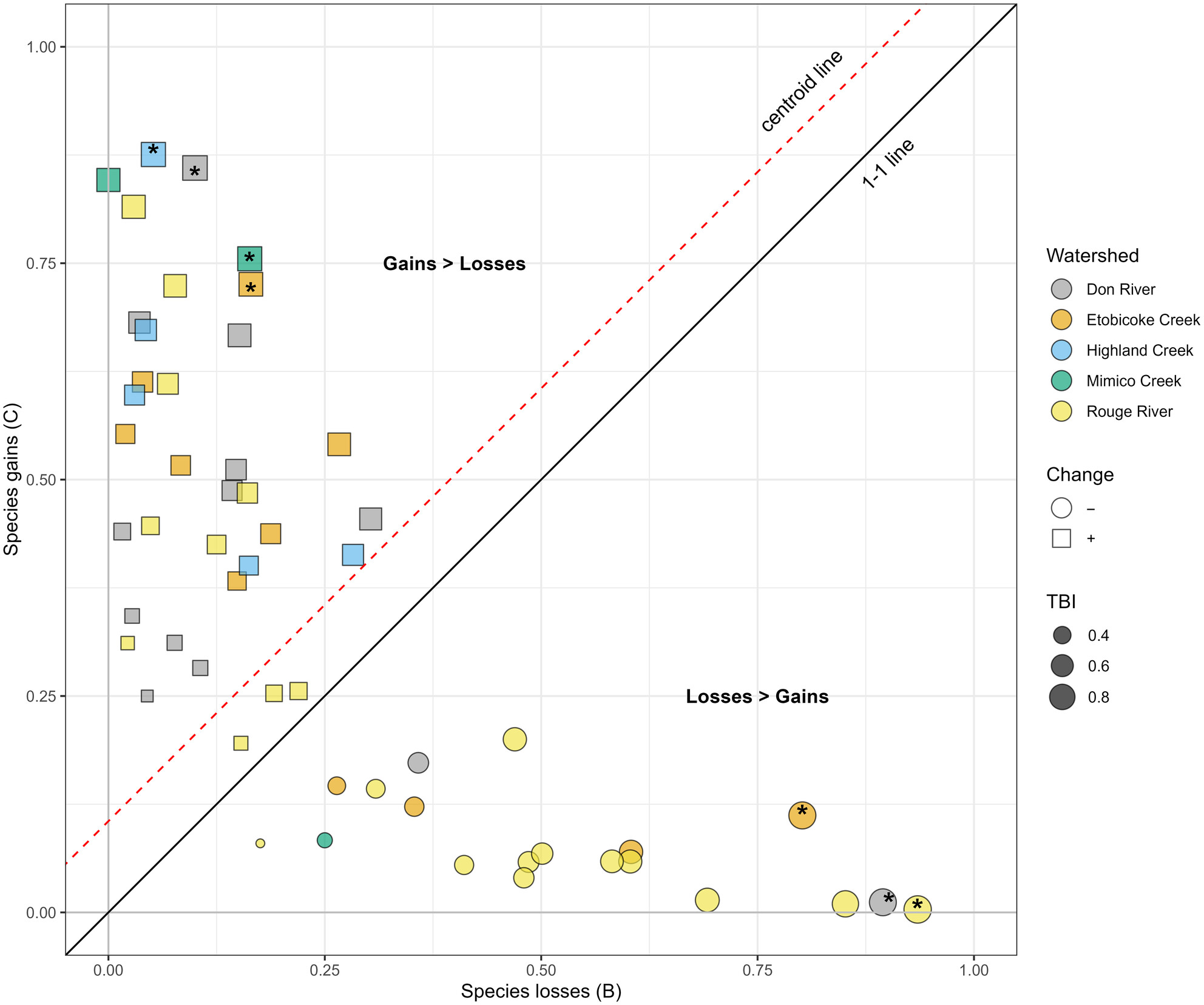
We assess urban fish community change over time and drivers of change related to urbanization including land cover change and connectivity. Using the TBI, species richness, Pielou's evenness, and Shannon diversity, we find that land cover and connectivity do not effectively explain community change. Overall, the TBI suggests there are more gains than losses in fish communities through time.
Independent and synergistic effects of microplastics and endocrine-disrupting chemicals on the reproductive social behavior of fathead minnows (Pimephales promelas)
- First Published: 06 February 2024
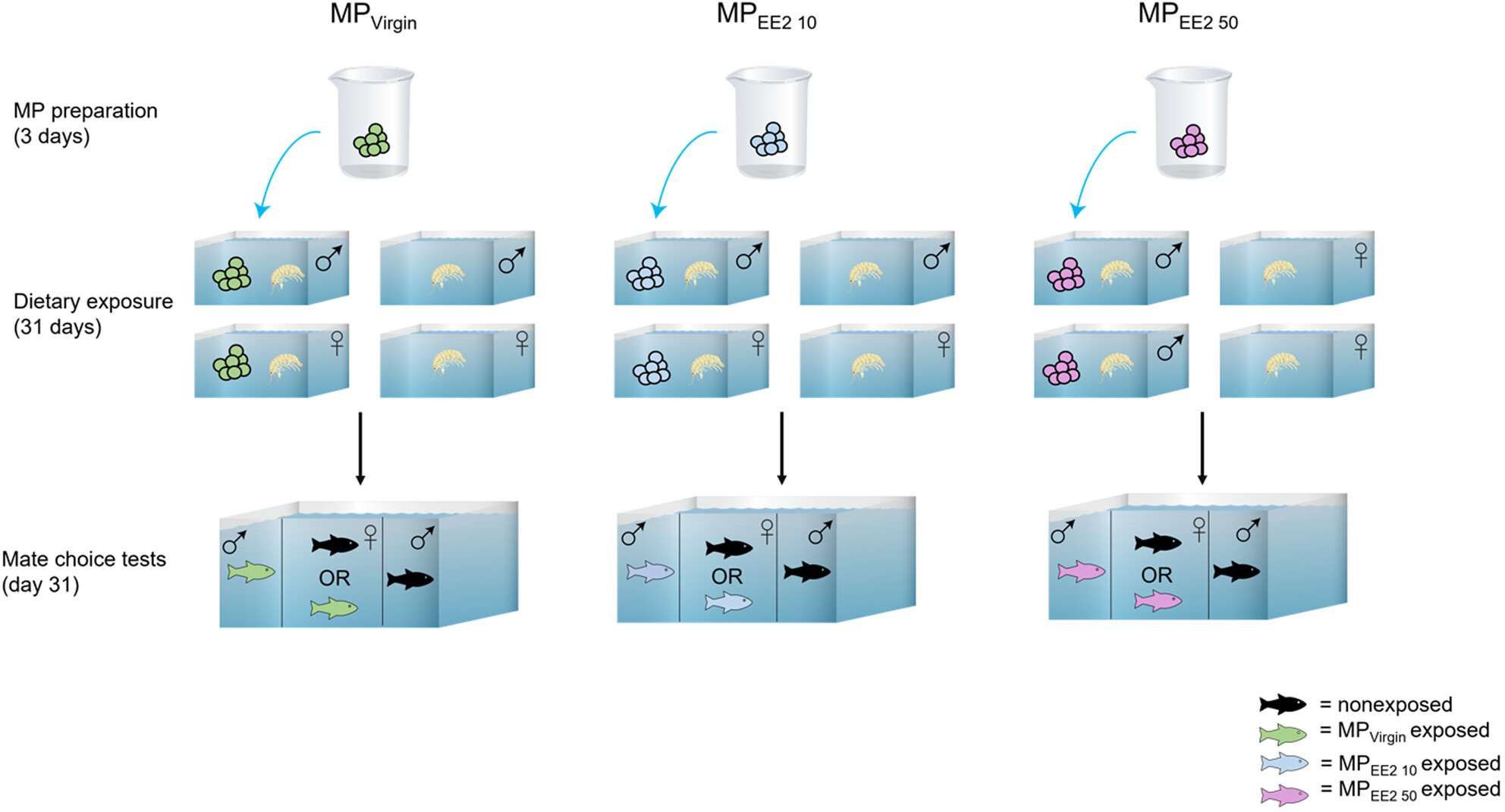
Microplastics (MPs) and endocrine-disrupting chemicals can alter the behavior of aquatic organisms, but this is little studied. This study evaluated the effects of MPs and estrogen on social interactions between male and female fathead minnows. Exposure to MPs, alone or in combination with EE2, had few observable effects on male behavior but non-exposed female fish discriminated against exposed males.
Physiological and microbiome adaptation of coral Turbinaria peltata in response to marine heatwaves
- First Published: 05 February 2024
Harem size should be measured by more than the sum of its parts: Phenology-based measurements reveal joint effects of intrinsic and extrinsic factors on a polygamous herbivore under non-stationary climatic conditions
- First Published: 05 February 2024

In our study we investigate harem size phenology and related variation in a large polygamous herbivore, the Przewalski horse, using a 15-year dataset from an introduced population in Hortobágy National Park, Hungary. Our results demonstrate that intrinsic population processes can play a major role in regulating group size and counter the effects of extrinsic non-stationary climatic conditions during periods of growth in a group-living herbivore.
Predator-induced shape plasticity in Daphnia pulex
- First Published: 05 February 2024
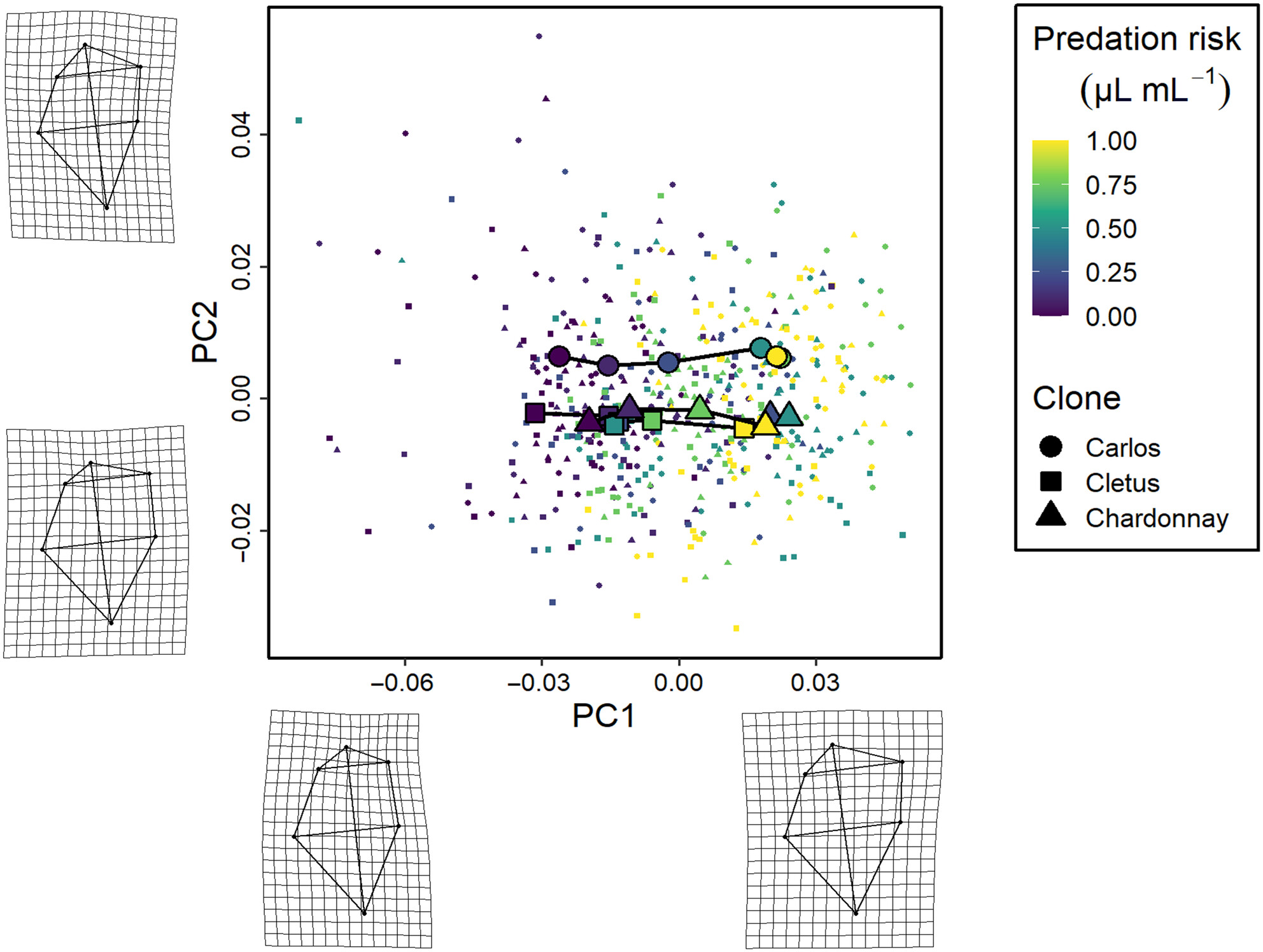
Recent advances in statistical methods for measuring shape were combined with a classic example of continuous phenotypic plasticity to measure the whole-organism shape response to predation in Daphnia pulex. We found complex, multi-faceted shape changes, with a mixture of locally and globally co-ordinated features.
Strawberry varieties differ in pollinator-relevant floral traits
- First Published: 05 February 2024
American marten occupancy and activity patterns at the southern extent of their range in the eastern United States
- First Published: 05 February 2024

Models of occupancy using detection data from camera surveys for American marten in southern Vermont indicated that detectability decreased with increasing distance from historical reintroduction sites. Unit-level occupancy models containing covariates did not perform better than the base model that assumes occupancy is homogeneous among units. Marten appears to be restricted by some attribute (e.g. vital demographic rate) that was not measured in the study.
Prey selection by leopards (Panthera pardus fusca) in the mid-hill region of Nepal
- First Published: 05 February 2024

We investigated the prey species and the proportion of each species in the leopard diet in a human-dominated mid-hill region of Nepal. The analysis of 96 leopard scats collected between August 2020 and March 2021 revealed 15 prey species consumed by leopards, including small- and medium-sized mammals and livestock.
Effects of river regulation on aquatic invertebrate community composition: A comparative analysis in two southern African rivers
- First Published: 07 February 2024
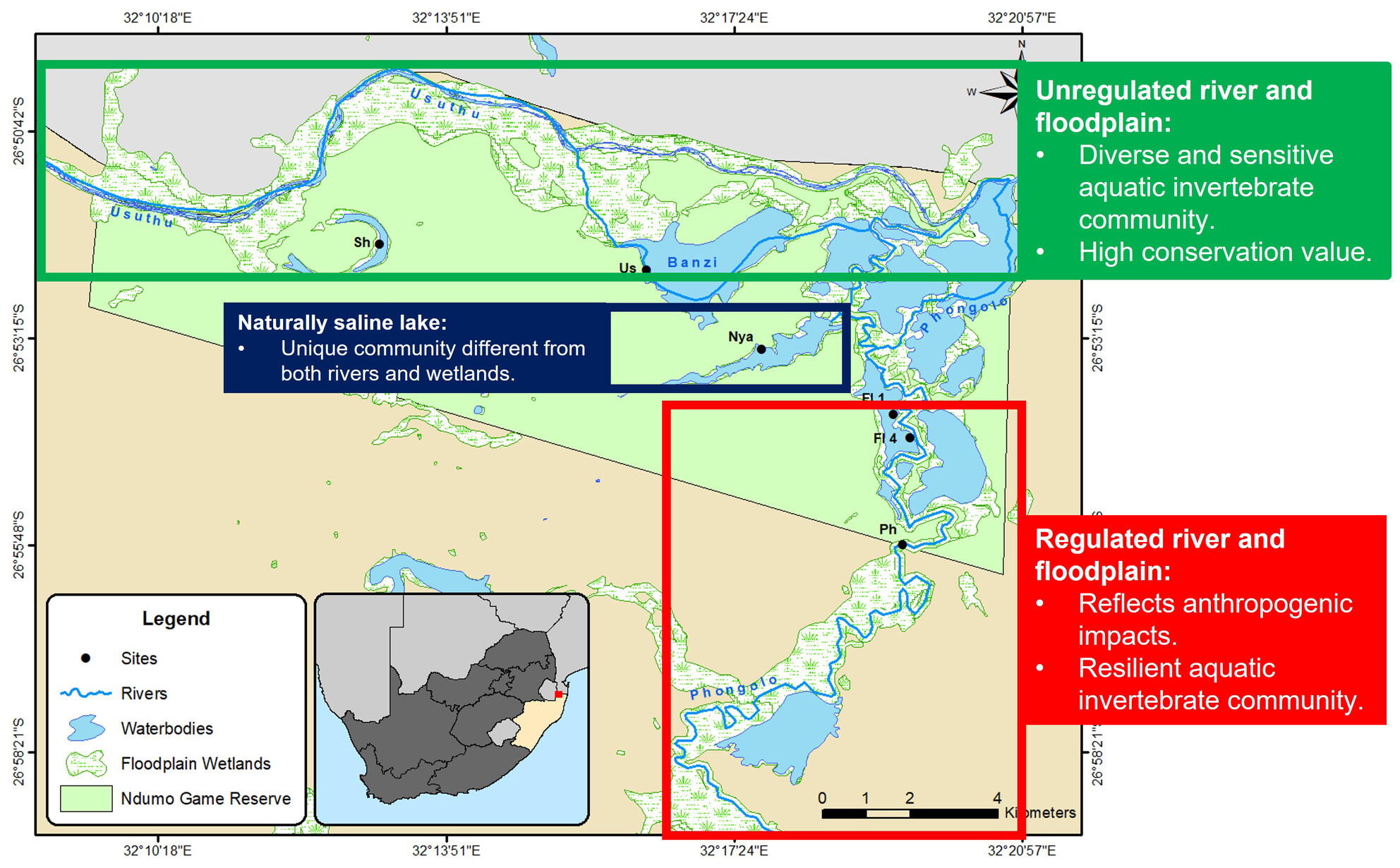
This study compared aquatic invertebrate communities between a regulated and unregulated river and sought to determine whether the largest inland lake of the region, which receives water from both rivers, resembles the aquatic invertebrate communities of either river. The unregulated river showed a diverse and sensitive aquatic invertebrate community, indicating its high conservation value, while the regulated river has experienced effects of anthropogenic impacts, with a greater presence of invertebrates resilient to changes in water quality. The inland lake displayed a unique aquatic invertebrate community, different from both rivers and their floodplains. This study underscores the importance of maintaining adequate water flow in rivers and floodplains to protect biodiversity and sensitive species.
Effects of dispersal and temperature variability on phytoplankton realized temperature niches
- First Published: 07 February 2024
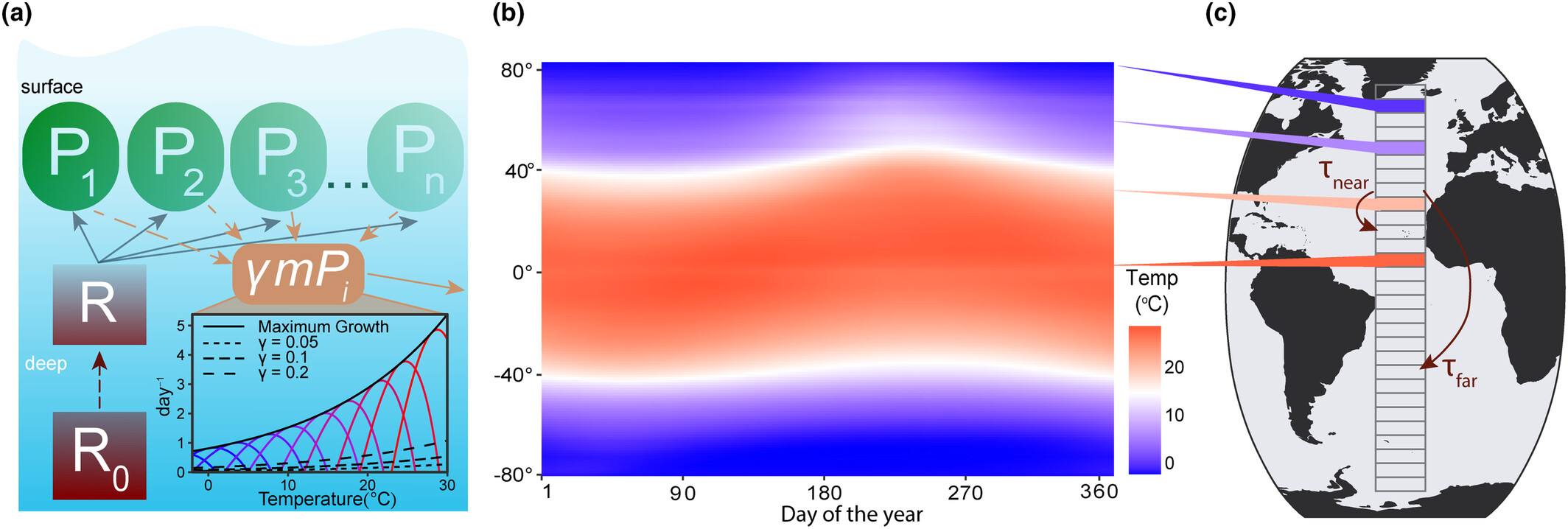
Using a simple trait-based metacommunity model that resolves fundamental temperature niches for a range of competing phytoplankton, we ask how dispersal and local temperature variability influence species distributions and diversity. We find that, independently, both dispersal and temperature variability increase realized temperature niche widths and local diversity but the combined effects result in high diversity and realized temperature niches that are consistently wider than fundamental temperature niches. These results have broad implications for understanding the drivers of phytoplankton biogeography as well as for refining species distribution models used to project how climate change impacts phytoplankton distributions.
An eDNA-based assessment of Garra cambodgiensis (stonelapping minnow) distribution on a megadiverse river, the Mekong
- First Published: 07 February 2024

This study developed an eDNA-based method to accurately monitor the distribution of Garra cambodgiensis in the Mekong River, where population declines have raised conservation concerns. The eDNA technique successfully detected G. cambodgiensis in water samples from 10 out of 21 survey sites, demonstrating its feasibility and effectiveness in the ecologically diverse Mekong River. This innovative approach can enhance conservation and management efforts by providing comprehensive data on species distribution, informing decision-making processes for fisheries management and conservation initiatives.
Dynamic, multi-scale analyses indicate site- and landscape-level forest cover drive Yellow-billed and Black-billed Cuckoo interannual turnover
- First Published: 07 February 2024
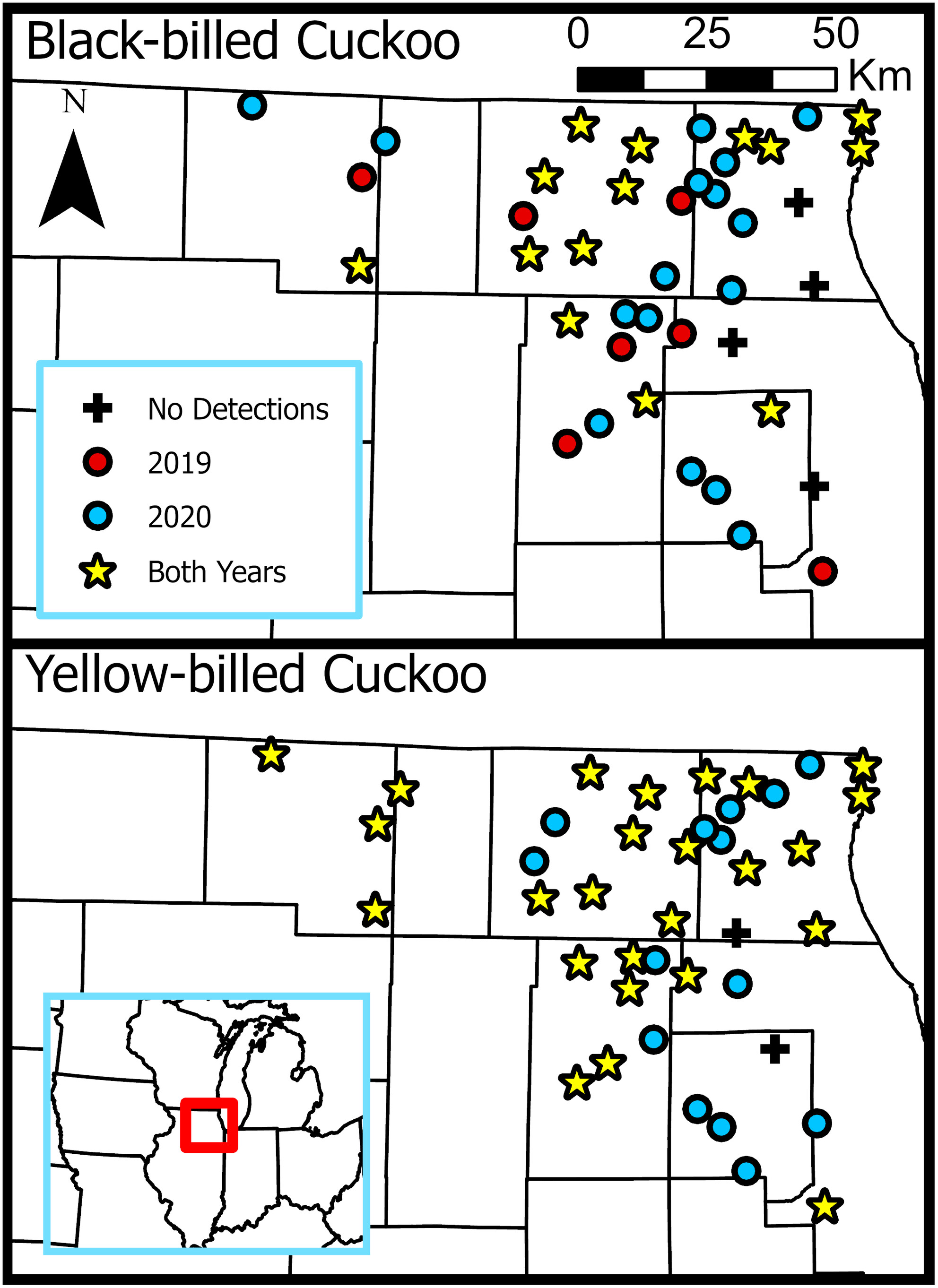
Both Black-billed and Yellow-billed Cuckoos showed significant site-level turnover between years. Black-billed Cuckoos were associated with greater vertical vegetation cover within sites and persisted at sites with less forest cover in the surrounding landscape, while Yellow-billed Cuckoos used areas with shorter or absent subcanopy layers within less-developed landscapes. Sites with greater canopy cover were more likely to be colonized by Yellow-billed Cuckoos.
Predicting the current habitat refugia of Himalayan Musk deer (Moschus chrysogaster) across Nepal
- First Published: 16 February 2024
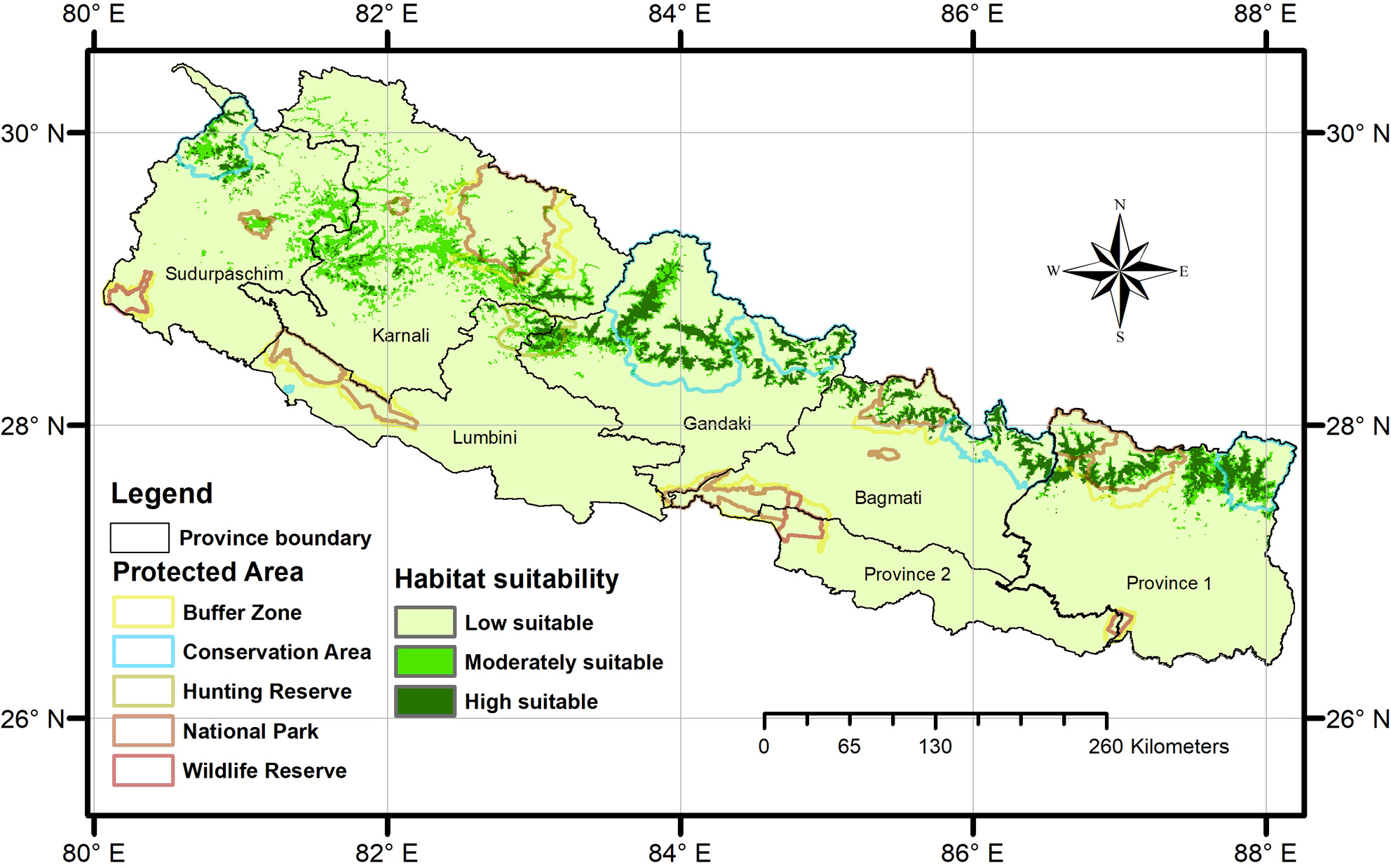
Himalayan Musk deer, Moschus chrysogaster (HMD) is widely distributed but one of the least studied species in Nepal. We used a combination of bioclimatic, anthropogenic, topographic, and vegetation-related variables to predict the current suitable habitat for HMD in Nepal using 16 predictor variables for habitat suitability modeling after the multicollinearity test. We explored the ensemble model outperformed single algorithm models in terms of predictive performance (0.966) showing 6973.76 km2 (5%) area of Nepal is highly suitable and 8387.11 km2 (6%) is moderately suitable for HMD.
Evaluating genotyping-in-thousands by sequencing as a genetic monitoring tool for a climate sentinel mammal using non-invasive and archival samples
- First Published: 07 February 2024
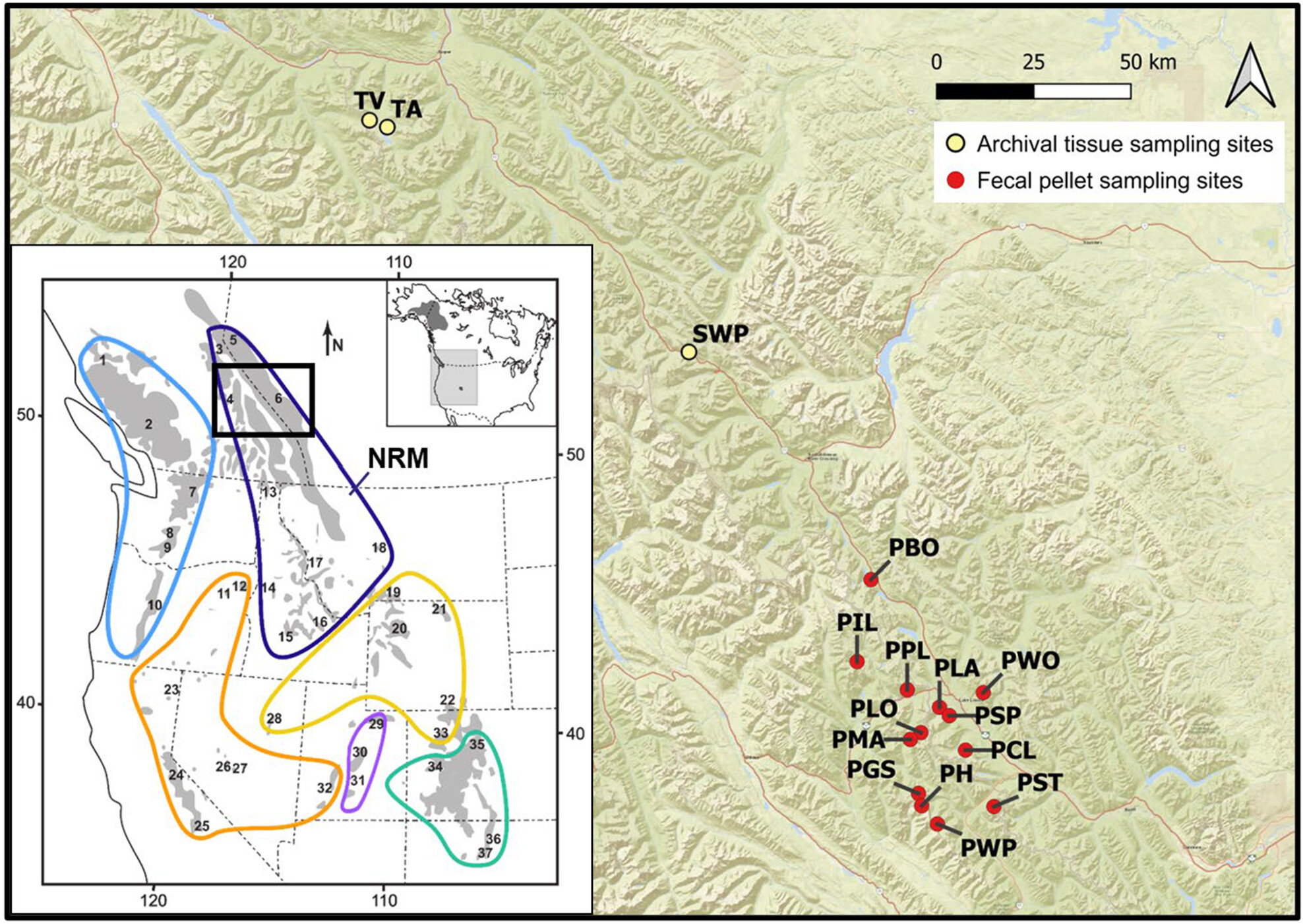
Genetic tools for wildlife monitoring can provide valuable information on spatiotemporal population trends and connectivity, particularly in systems experiencing rapid environmental change. Here, we developed a genotyping-in-thousands by sequencing (GT-seq) panel (307 SNPs) as a potential monitoring tool for the American pika (Ochotona princeps) and evaluated its performance when applied to traditional, non-invasive, and archival samples. The GT-seq panel demonstrated high genotyping success, low genotyping error, and excellent performance identifying individuals, sex, relatedness, and population structure from contemporary and archival tissue samples, but this was not the case for the fecal pellet samples suggesting additional optimization of sample and genetic data collection techniques are required.
Experimental evidence for adaptive divergence in response to a warmed habitat reveals roles for morphology, allometry and parasite resistance
- First Published: 07 February 2024
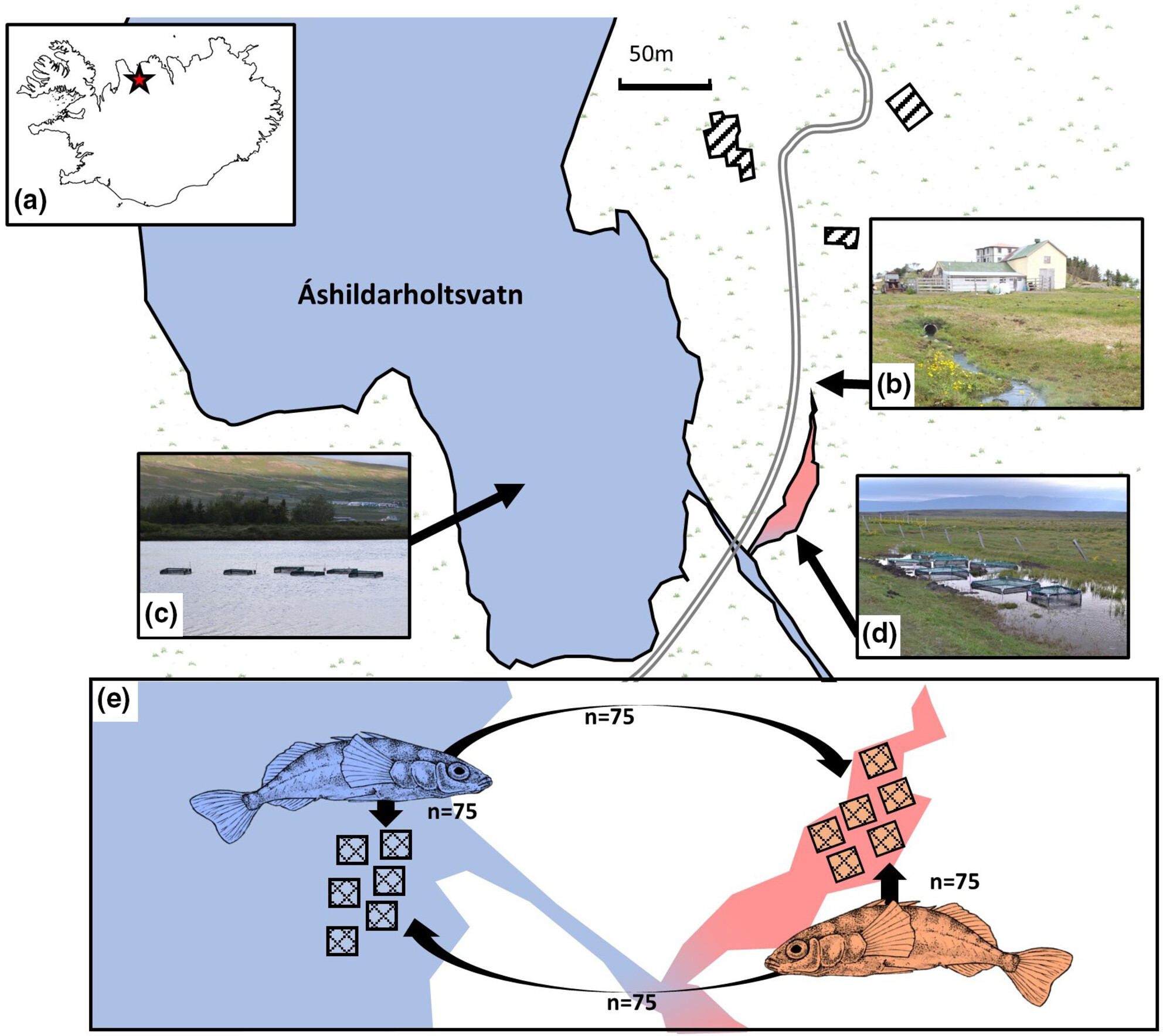
Geothermally warmed habitats provide a unique opportunity to test for routes of thermal adaptation in a natural warming experiment. We used a reciprocal transplant experiment to test for fitness consequences of morphological variation found in threespine sticklebacks (Gasterosteus aculeatus) originating from geothermal and cold habitats. We found evidence of unequal fitness consequences and some evidence that body shape and allometry play a role in this study system.
Does size-selective harvesting erode adaptive potential to thermal stress?
- First Published: 07 February 2024
Conservation genetics of Notelaea lloydii (Oleaceae) in south-eastern Queensland, Australia
- First Published: 07 February 2024
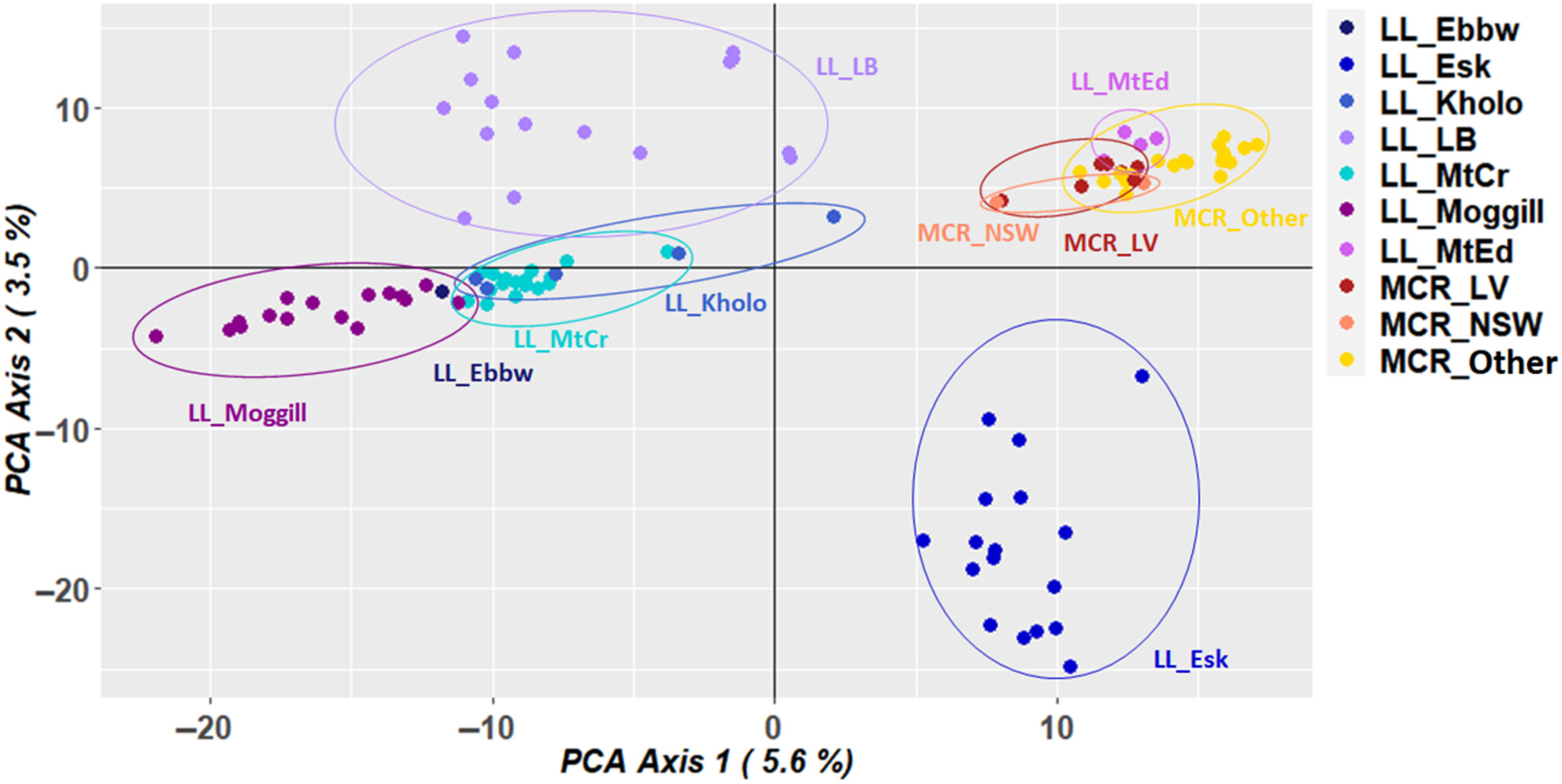
We have conducted a genome-wide single nucleotide polymorphism (SNP) analysis to determine levels and patterns of genetic diversity, inbreeding and gene flow within and among the populations of one of the threatened native species, Notelaea lloydii, restricted in south-eastern Queensland. Our SNP analysis revealed low genetic diversity, inbreeding and significant genetic structuring even among proximate populations, and conservation implications are discussed in the manuscript.
Feasting on the ordinary or starving for the exceptional in a warming climate: Phenological synchrony between spongy moth (Lymantria dispar) and budburst of six European tree species
- First Published: 15 February 2024
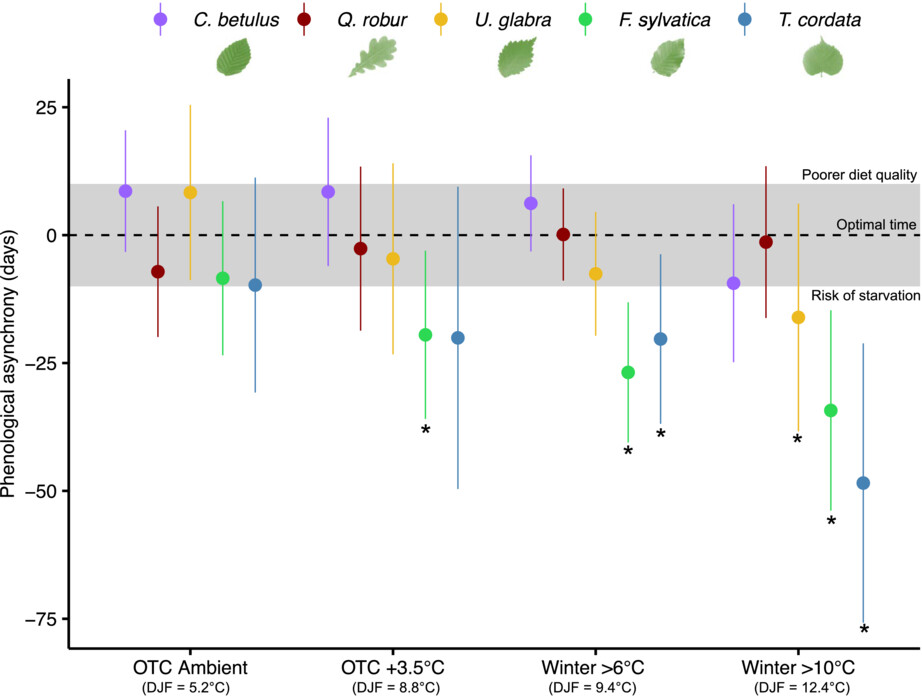
Our results show that under current winter conditions, the spongy moth egg hatch is well synchronized with the leaf emergence of a set of common European trees. However, under warmer winter conditions, we found an increasing mismatch in trees with high chilling requirement or photoperiodic sensitivity, such as European beech but still good synchronization with trees having low chilling requirement, such as pedunculate oak and hornbeam. Remarkably, Q. robur was the only species that advanced budburst to the same extent as L. dispar for all temperature treatments, demonstrating that both species do have similar temperature requirements for their ontogenetic development during winter and spring.
Origin of domesticated water chestnuts (Trapa bispinosa Roxb.) and genetic variation in wild water chestnuts
- First Published: 07 February 2024
Shifting patterns in fine root distribution of four xerophytic species across soil structural gradients and years of growth
- First Published: 07 February 2024
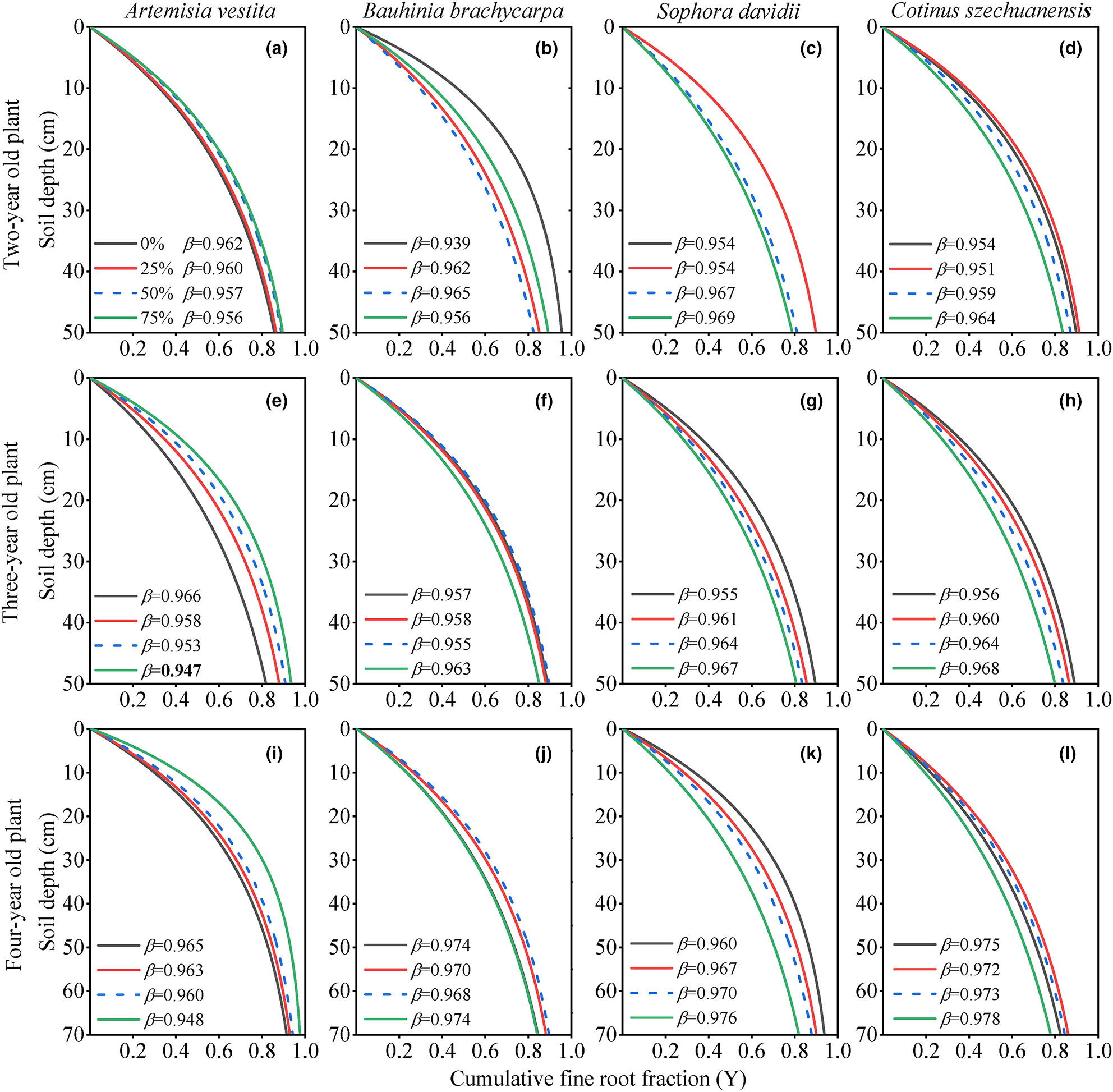
The increased extent of rooting depth in three woody species with increasing rock fragment content declined with plant growth years. Degrees of interannual decreases in fine root diameter of all species increased with increasing gravel content. The limited resource and deep penetration in high rocky soil led to deep fine root distribution.
Population and conservation threats to the vulnerable Sarus crane Grus antigone in Nepal
- First Published: 07 February 2024
Experimental evolution of hybrid populations to identify Dobzhansky–Muller incompatibility loci
- First Published: 08 February 2024
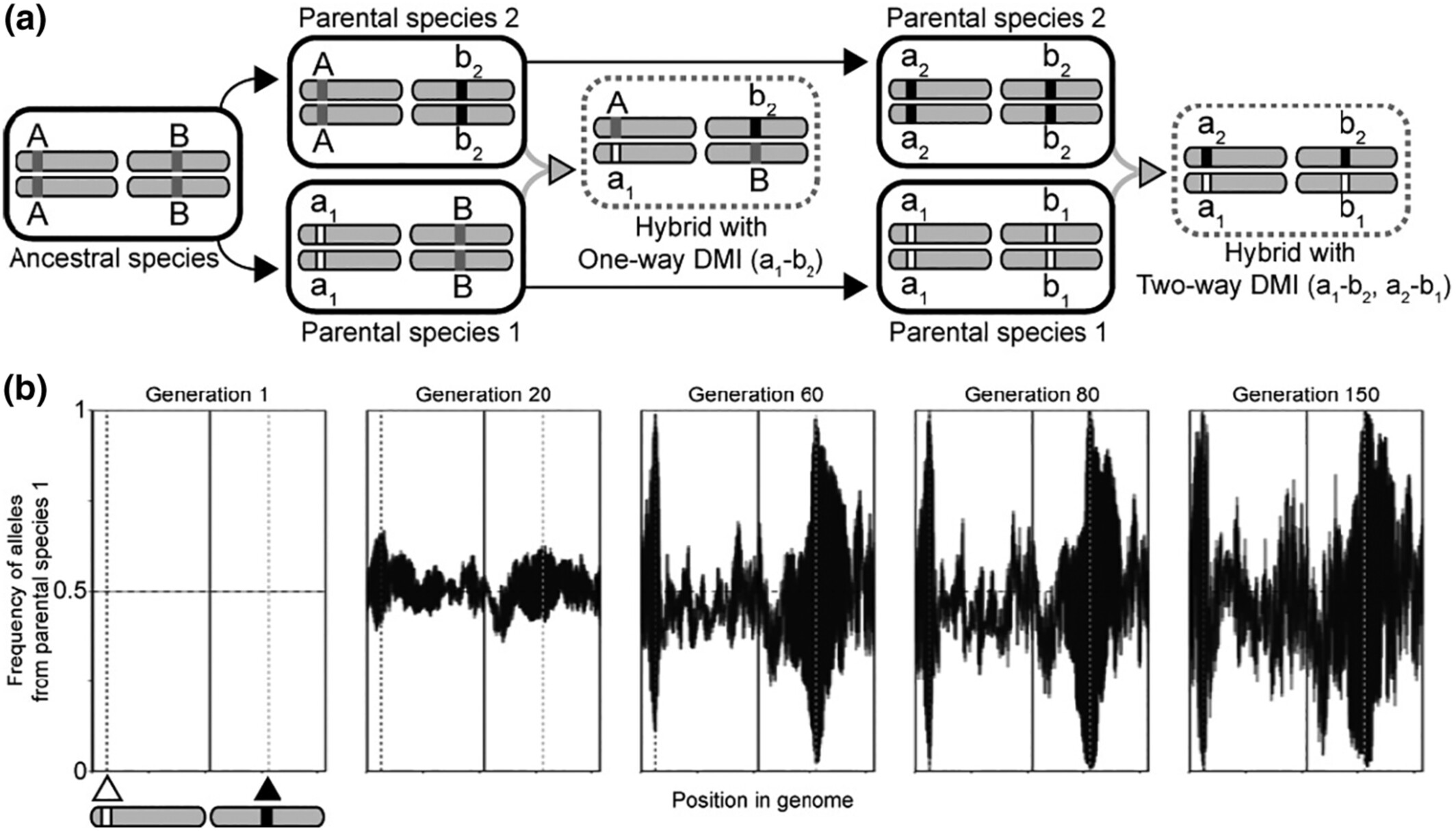
This study addresses a serious challenge in speciation genetics: how to identify loci responsible for reproductive isolation between species. Here we explore via computer simulation the neglected possible strategy of using experimental evolution of hybrid populations to map genetic incompatibilities.
Nutrients or resin? – The relationship between resin and food foraging in stingless bees
- First Published: 08 February 2024
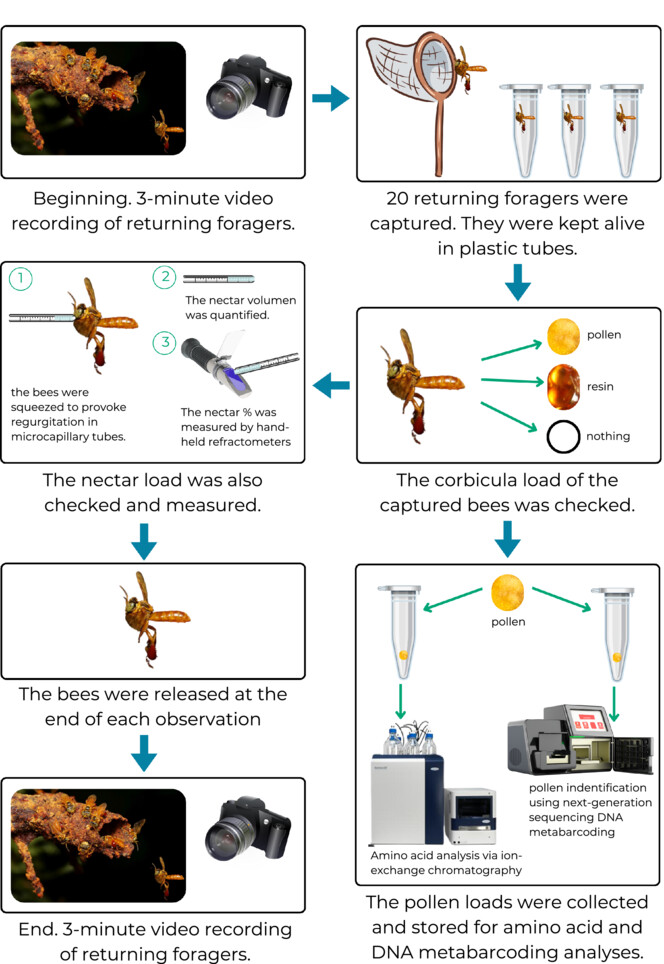
We analyzed the role of resin intake on the foraging behavior and resource intake of tropical stingless bees in Ecuador. We show that stingless bee species with a large workforce devoted to collecting resin were overall more active, and foraged on pollen from slightly different spectra of plants, suggesting that species engaging in high resin collection might compensate for their comparatively low number of food foragers by increasing overall foraging activity and exploring specific plants for resource allocation.
Resource instability undermines predictable plasticity-mediated morphological responses to diet in a postglacial fish
- First Published: 08 February 2024
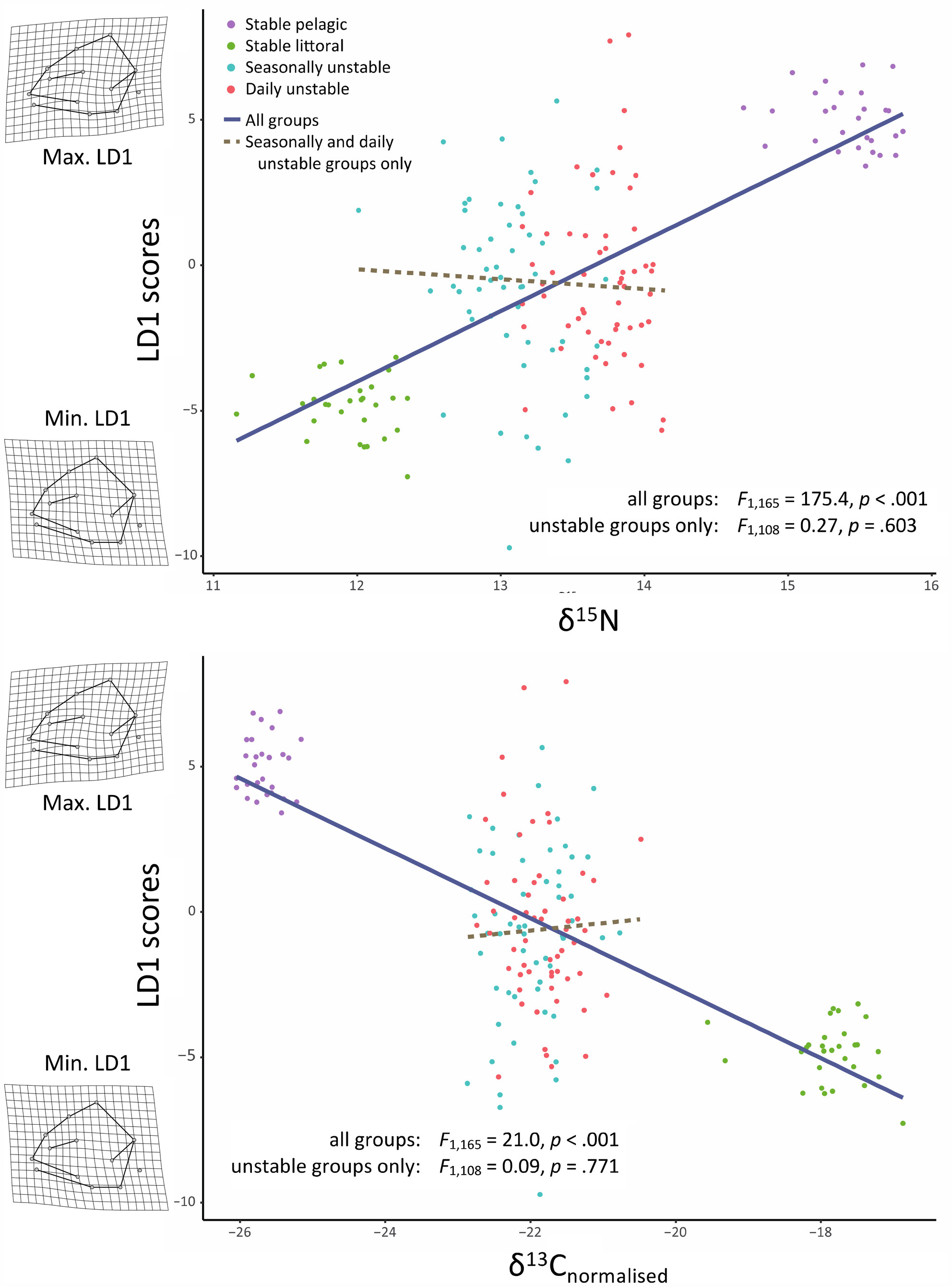
Phenotypic plasticity has been presented as a potential rapid-response mechanism with which organisms may confront swift environmental change and increasing instability. We subjected juvenile brown trout to diet regimes, traced by stable isotopes of carbon and nitrogen, alternating at various temporal scales. We found that with extreme or even sub-seasonal resource instability, the association of diet type with the phenotype was overwhelmed, calling into question the efficacy of plasticity as a means of adaptation to environments with rapidly fluctuating prey resources.
Habitat selection and refuge-use by a color polymorphic salamander reveal behavioral niche differences
- First Published: 26 February 2024
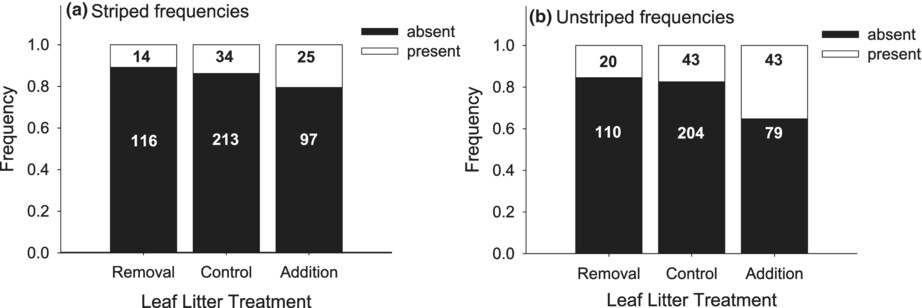
The red-backed salamander has two common color forms, striped and unstriped. In this study, the unstriped morph showed a stronger response to surface habitats with leaf litter addition, and they showed higher refuge-use in the laboratory. These behavioral differences are consistent with the view that the unstriped morph is more fossorial, and this niche difference combined with spatiotemporal variation in leaf litter accumulation on the forest floor may contribute to the maintenance of the polymorphism.
Could hybridization increase the establishment success of the biological control agent Aphalara itadori (Hemiptera: Aphalaridae) against invasive knotweeds?
- First Published: 08 February 2024
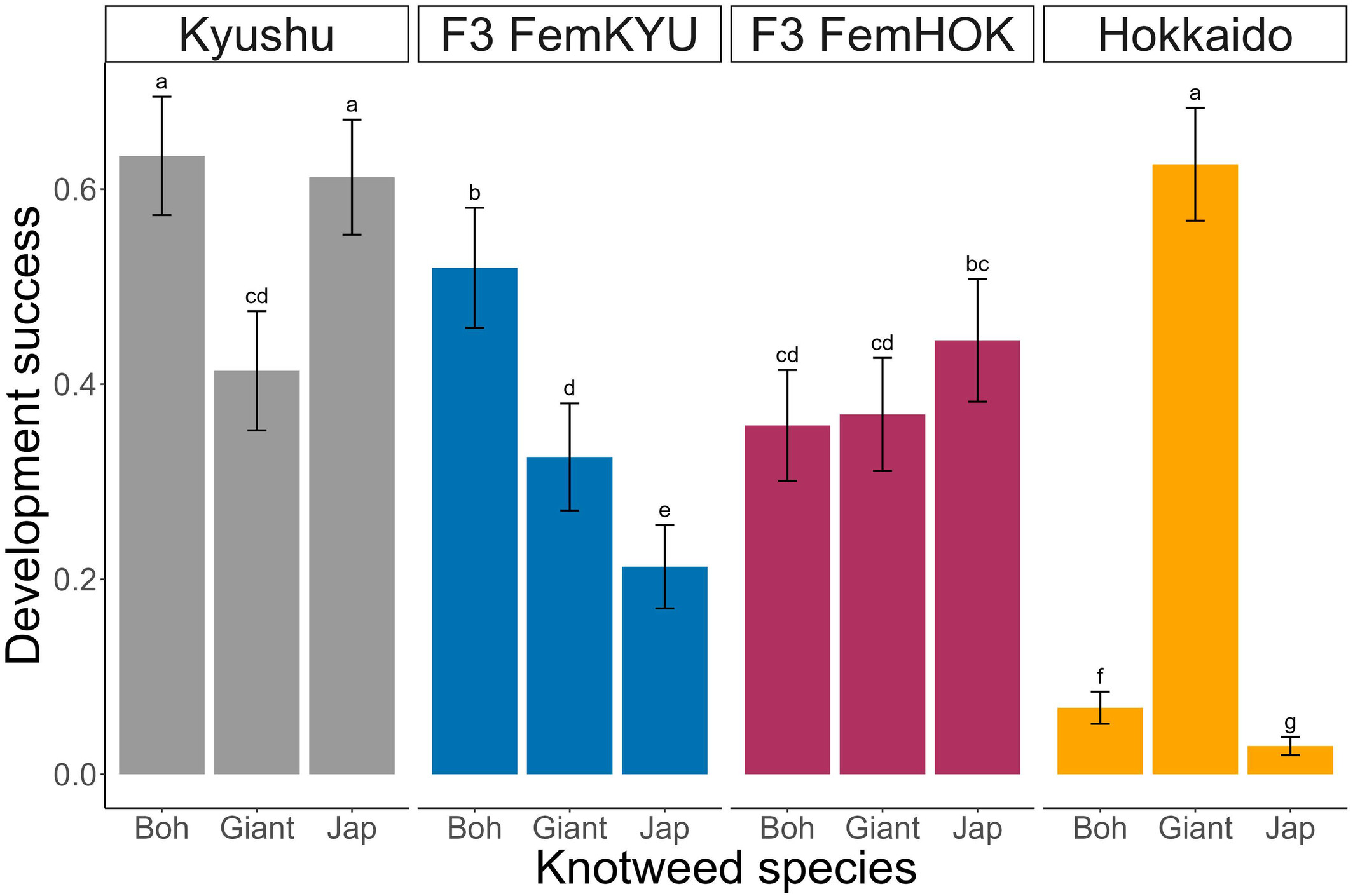
Intraspecific hybrids between two host races of a biological control agent did not show hybrid vigor in terms of fecundity. One of the parental populations made maladaptive oviposition choices that did not support offspring development. The hybrids had intermediate developmental success on three knotweed species that could make them suitable for field release in different regions.
Evolution of larval gregariousness is associated with host plant specialisation, but not host morphology, in Heliconiini butterflies
- First Published: 08 February 2024
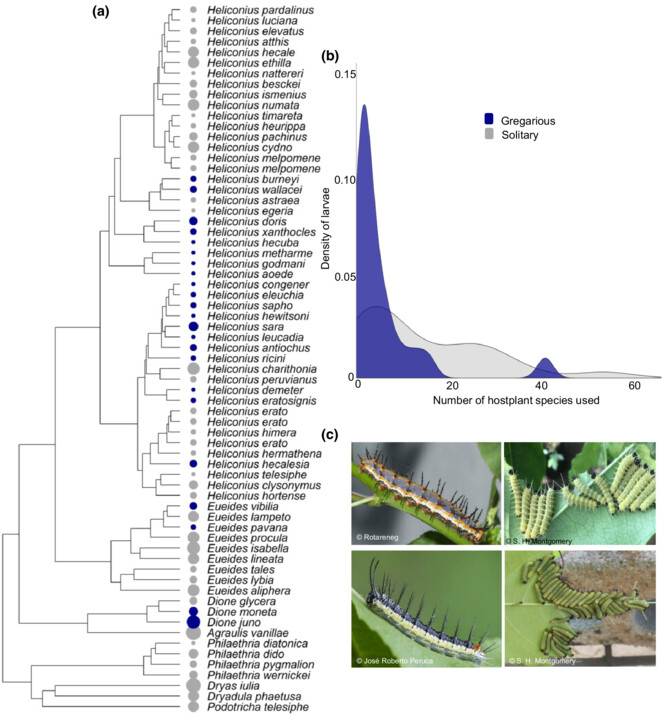
Heliconiini larvae are likely to be in an evolutionary arms race with their Passifloraceae host plants. By analysing larval social behaviour we investigate whether host habitat, leaf defences and leaf size are important drivers of, or constraints on, the evolution of larval gregariousness. Whereas our data do not reveal links between larval gregariousness and the host plant traits included in this study, we find that gregarious larvae are more likely to feed on a narrower range of host plant species than solitary larvae.
DNA barcoding, identification, and validation of the pufferfish (Order: Tetraodontiformes) in China coastal waters
- First Published: 08 February 2024

In this study, 616 samples of Tetraodontiformes were identified by using morphological characteristics and DNA barcoding technology. It provided molecular evidence for clarifying the valid species names of L. spadiceus and T. rubripes. The results can provide reliable DNA barcoding information for the identification and classification of Tetraodontiformes and also provide technical support for the development and utilization of puffer fish resources and the identification of the original components of related commodities on the aquatic product market.
Low diversity and abundance of predatory fishes in a peripheral coral reef ecosystem
- First Published: 09 February 2024
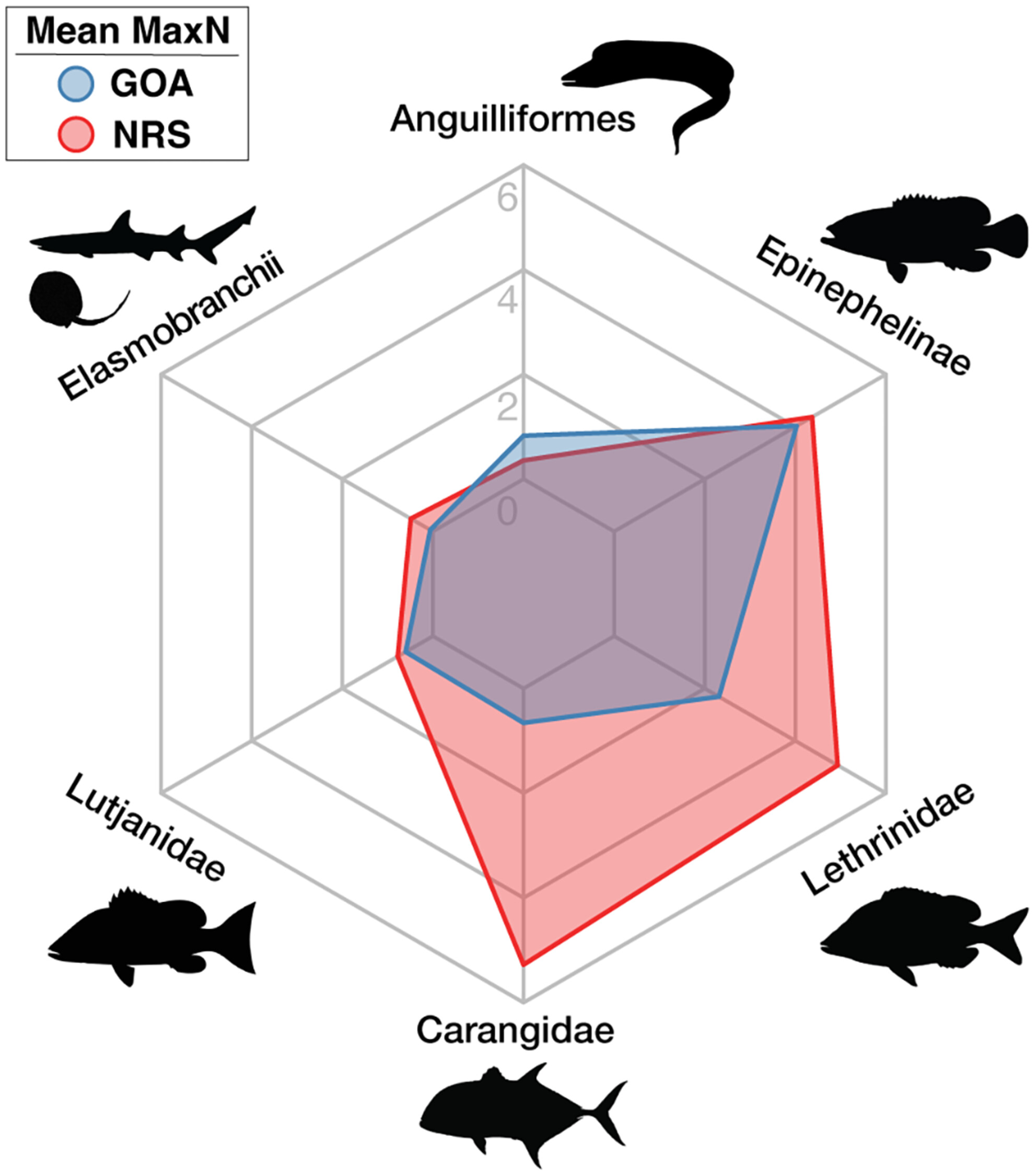
Our findings provide insights into the structuring of coral reef fish communities, demonstrating that distinct assemblages can occur within semi-enclosed seas at smaller spatial scales than previously documented. We also report a low abundance of threatened fish species in an area of rapid, large-scale coastal development, which identifies an urgent need to develop a regional management plan.
Genetic diversity assessment of Helichrysum arenarium (Asteraceae) for the genetic restoration of declining populations
- First Published: 15 February 2024
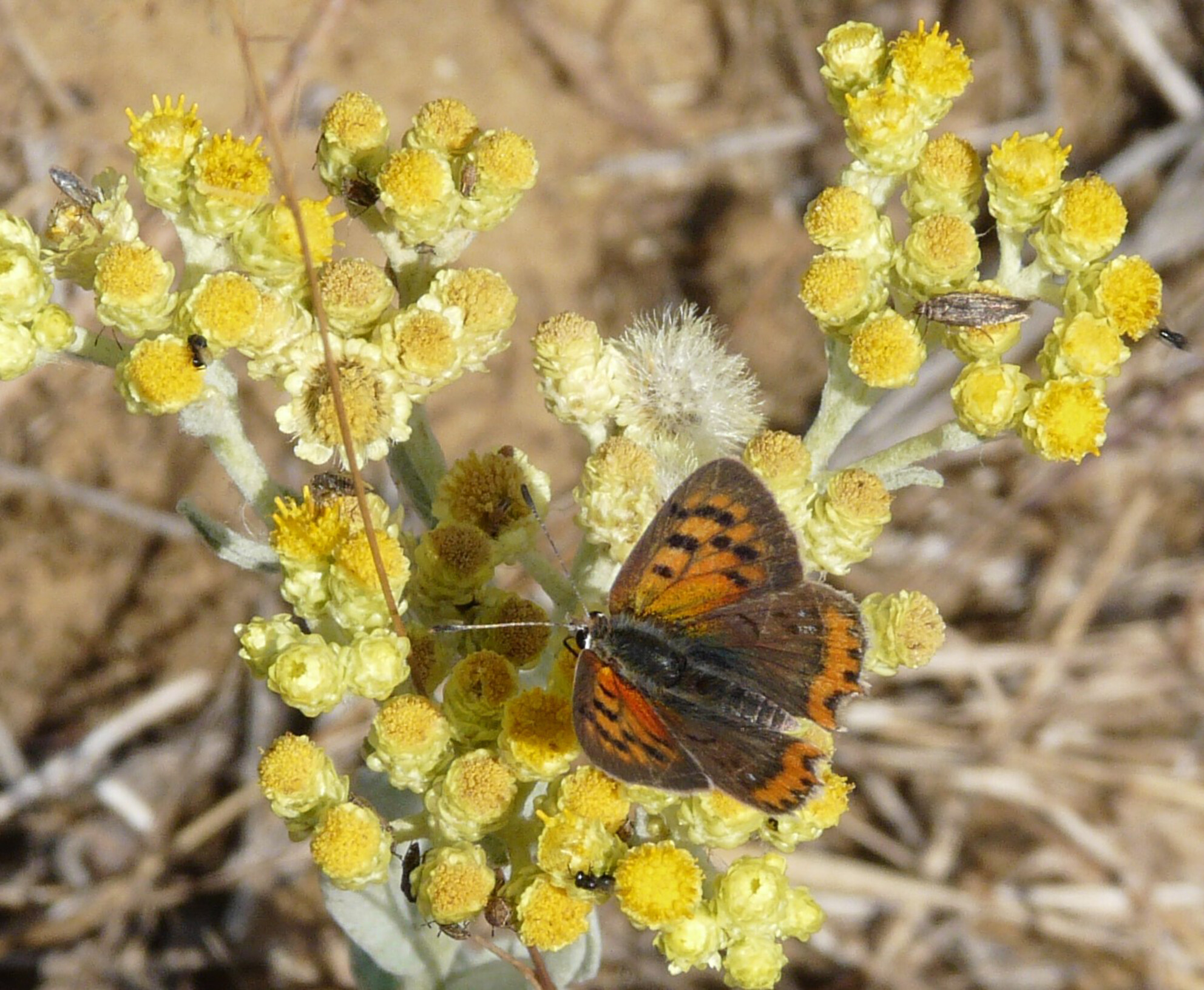
Helichrysum arenarium (Asteraceae) is a self-compatible, insect-pollinated herb from sand grasslands, and is declining and (critically) endangered in Europe. Genetic assessment using microsatellite markers of the only small remaining population in Belgium and of three large German populations revealed high clonality, with only two, however heterozygous, genets detected in the small Belgian population, and high genetic diversity and no significant inbreeding coefficient values, despite expectations of geitonogamous selfing, in the three large German populations, which will be used for plant translocations.
Constructing a database of alien plants in the Himalaya to test patterns structuring diversity
- First Published: 09 February 2024
Several reasons have been proposed for why alien species richness patterns vary across the globe, but they are rarely compared in a comprehensive test. Here we build a complete database of Himalayan alien plant species and show that both location of introduction and climate per se are likely important in explaining elevational and geographical patterns of species diversity.
Diet-induced plasticity of life-history traits and gene expression in outbred Drosophila melanogaster population
- First Published: 09 February 2024
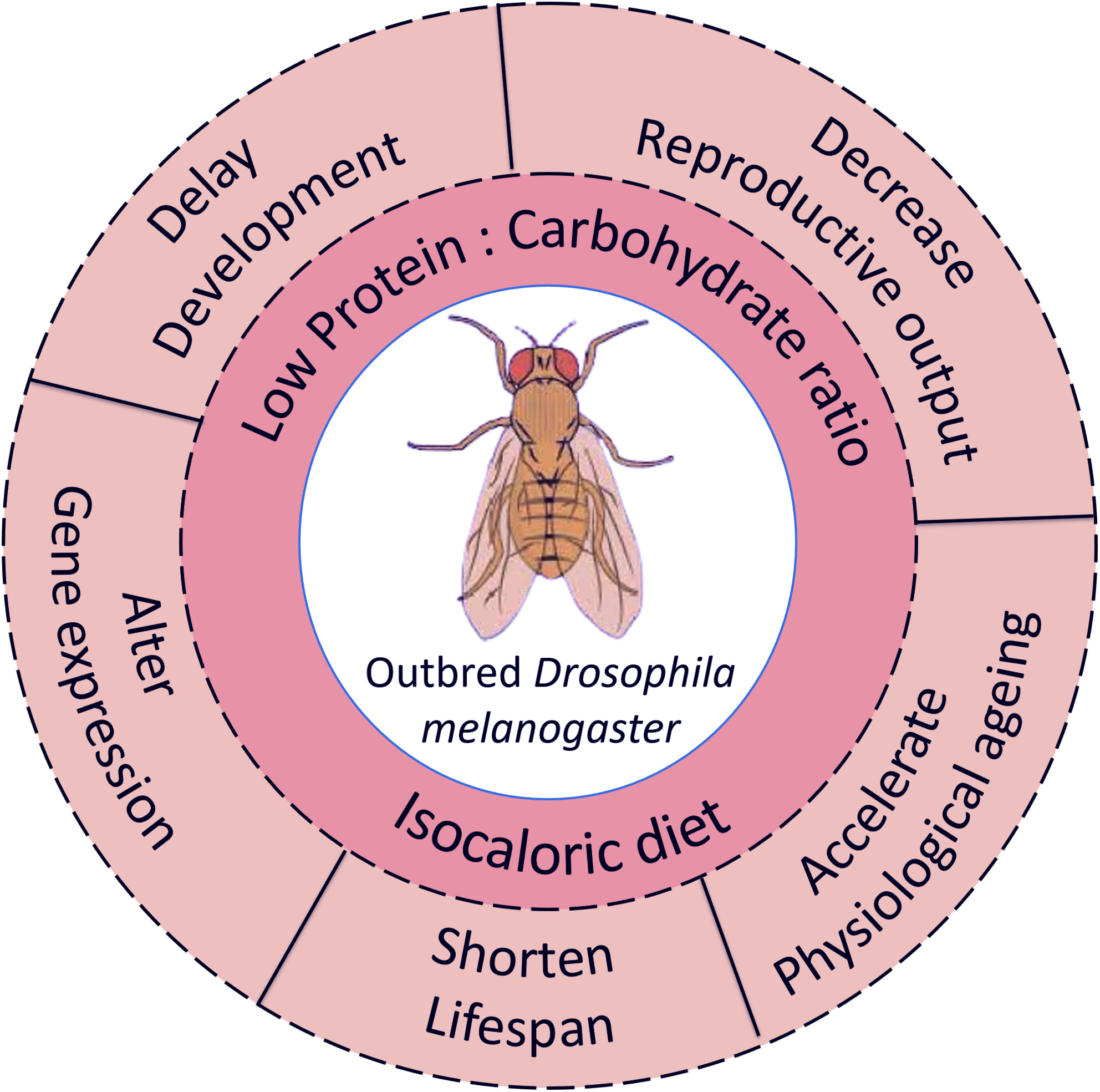
We investigated the effects of isocaloric diets with varying macronutrient compositions on key life traits in a large outbred Drosophila melanogaster population. Findings showed that reduced carbohydrate diets led to faster pre-adult development and increased reproductive output, while high carbohydrate diets shortened lifespan and affected fly health. Transcriptomic analyses revealed distinct gene regulatory patterns depending on the protein-carbohydrate balance, providing insights into adaptive strategies against dietary imbalances.
Mechanisms, costs, and carry-over effects of cannibal-induced developmental plasticity in invasive cane toads
- First Published: 09 February 2024
Drivers of geophagy by red brocket deer (Mazama americana) at Amazonian interior forest mineral licks
- First Published: 09 February 2024
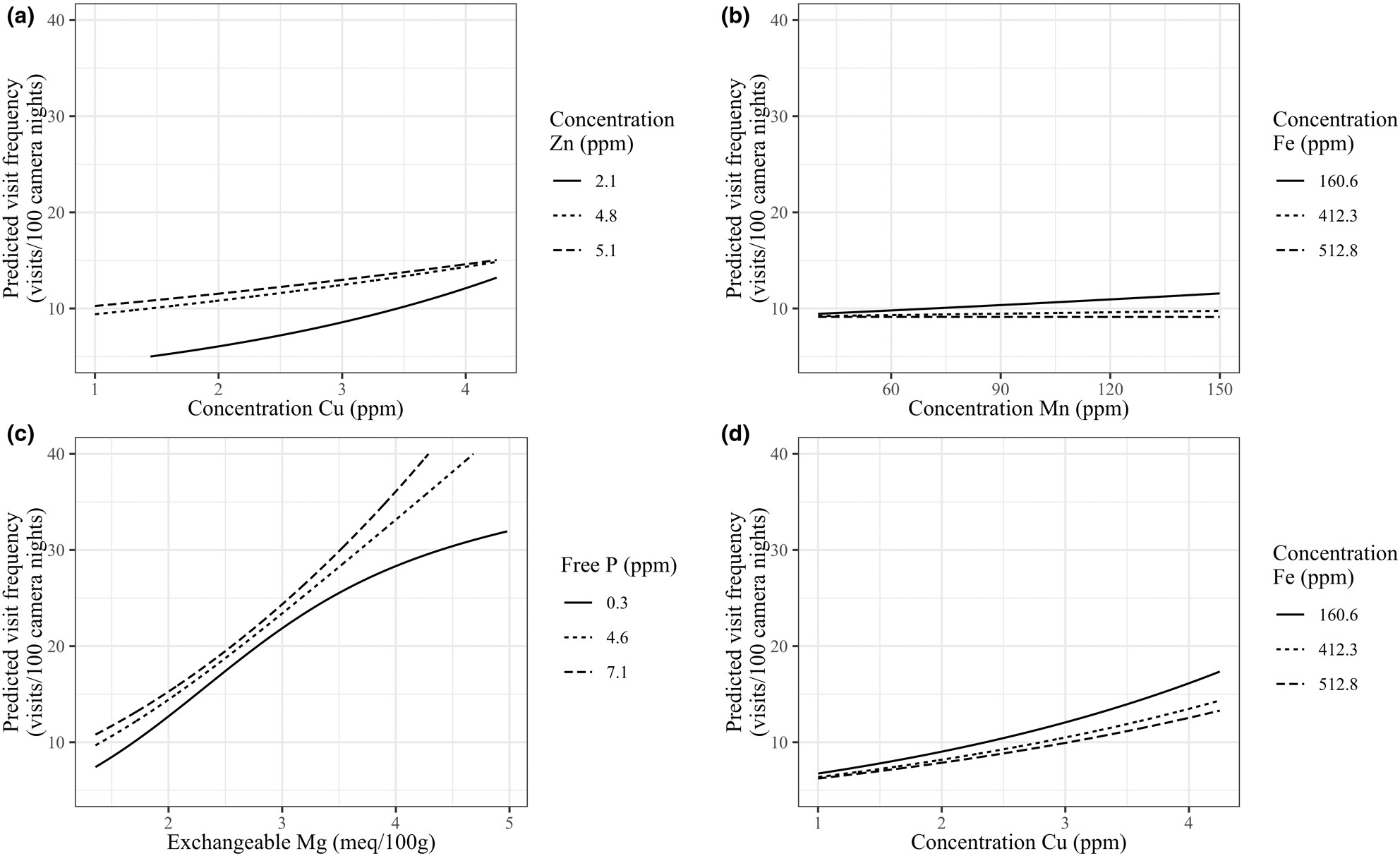
Mineral licks are critical resources for herbivores across the world, including the Peruvian Amazon, but the services they provide visiting animals are largely unknown. We tested three hypotheses for geophagical behavior in the red brocket deer, one of the most common visitors to Amazonian mineral licks, at mineral licks in the Peruvian Amazon using camera traps, soil sampling, and a modeling framework. We found that all three hypotheses had at least some support, but the mineral supplementation hypothesis was the most heavily supported.
Arthropod diversity in the alpine tundra using metabarcoding: Spatial and temporal differences in alpha- and beta-diversity
- First Published: 09 February 2024
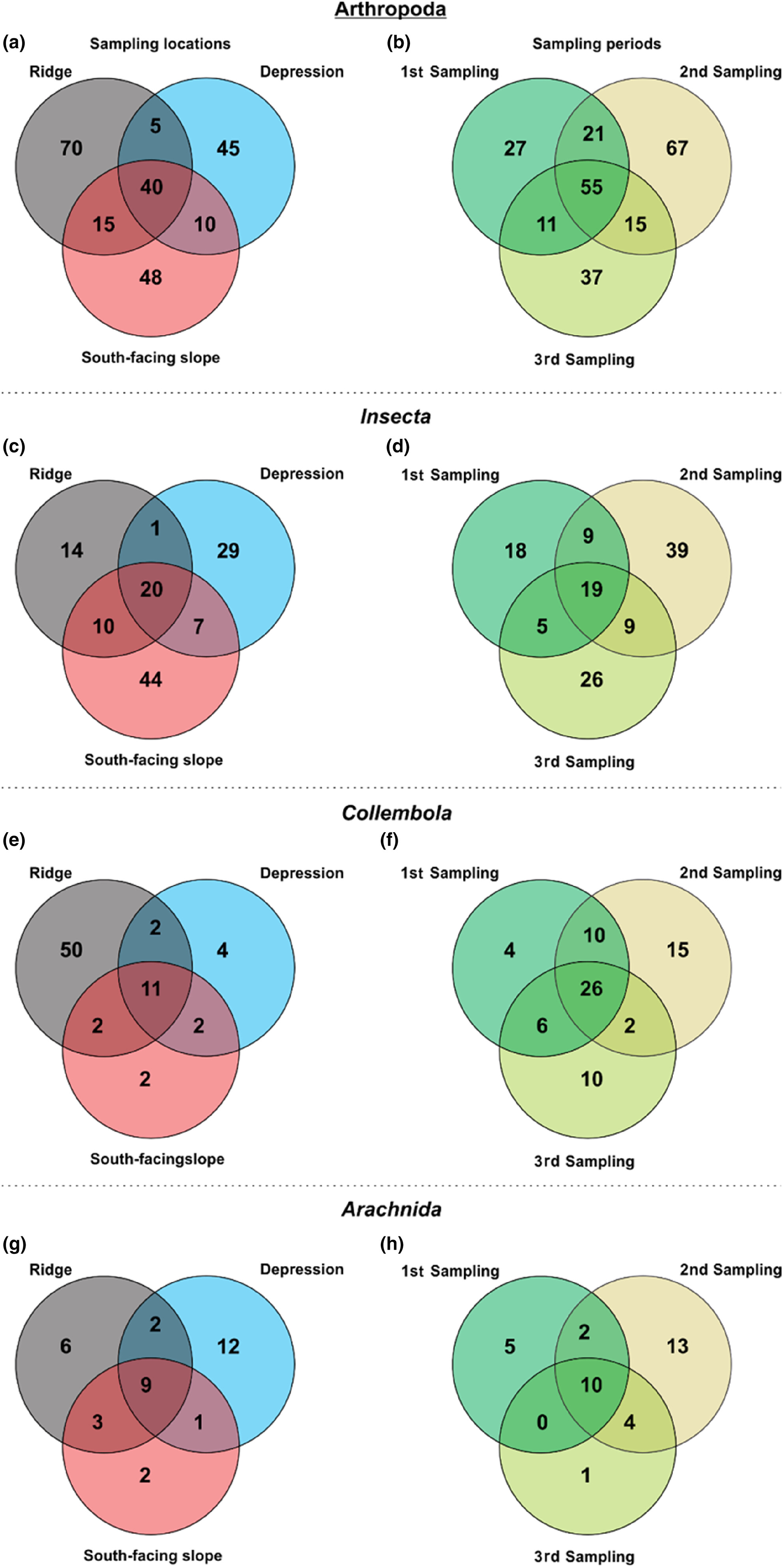
Our study examines the alpha- and beta-diversity of arthropods in the Arctic-alpine biomes of the Scandes using environmental DNA (eDNA)/metabarcoding. We found that micro-climatological parameters such as air/soil temperature and soil moisture significantly influence the arthropod community structure, highlighting the fine-scale heterogeneity of these ecosystems. Our study emphasizes the importance of integrating long-term functional environmental data and modern taxonomic techniques to accurately assess arthropod diversity and broaden our understanding of biogeographical patterns in alpine-tundra ecosystems.
Balancing between predation risk and food by boreal breeding ducks
- First Published: 09 February 2024
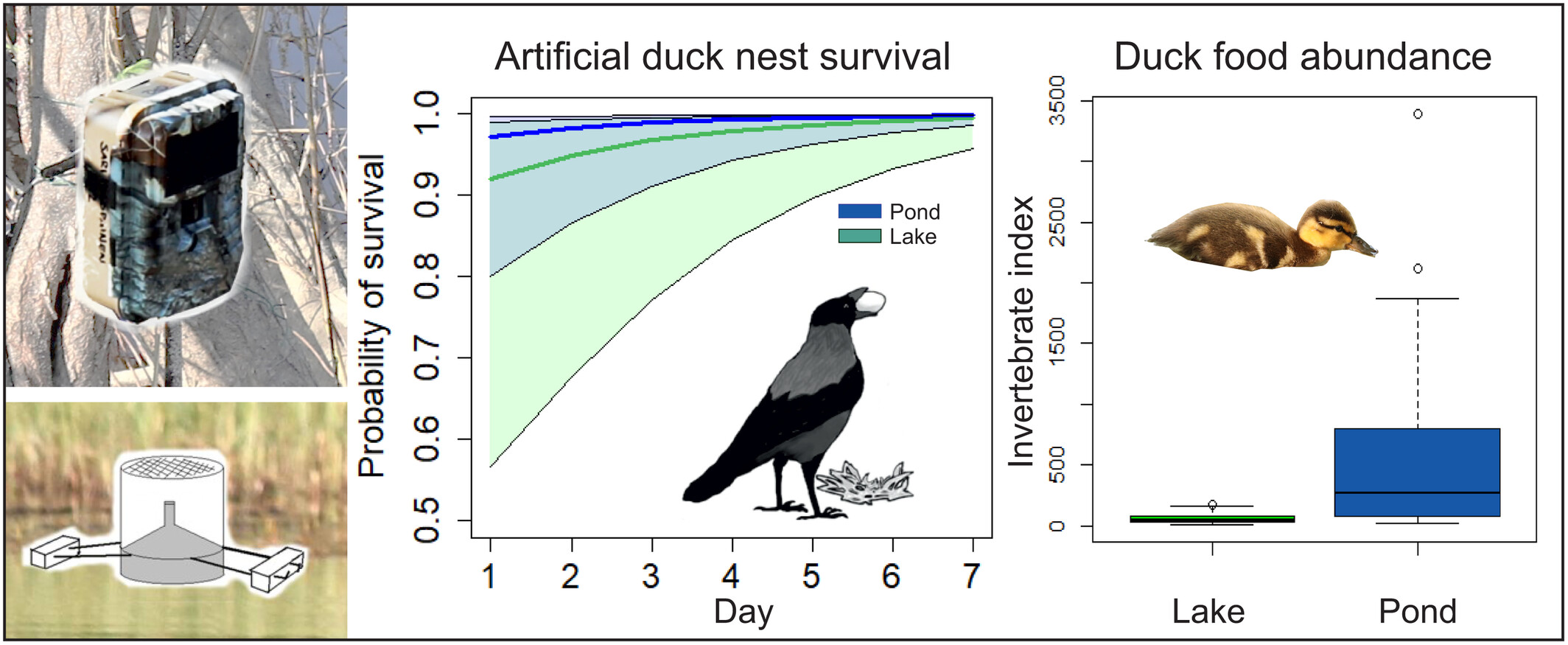
We studied the effects of wetland quality on boreal breeding ducks from two important aspects: nest predation and food availability. Duck food availability is low and nest predation pressure is high at permanent lakes, while ponds (seasonal, beaver, man-made) were shown to be food-rich habitats with low nest predation pressure. Our results emphasize the benefits of different wetland types in the landscape for the breeding ducks.
High intraspecific variability and previous experience affect polyphenol metabolism in polyphagous Lymantria mathura caterpillars
- First Published: 09 February 2024
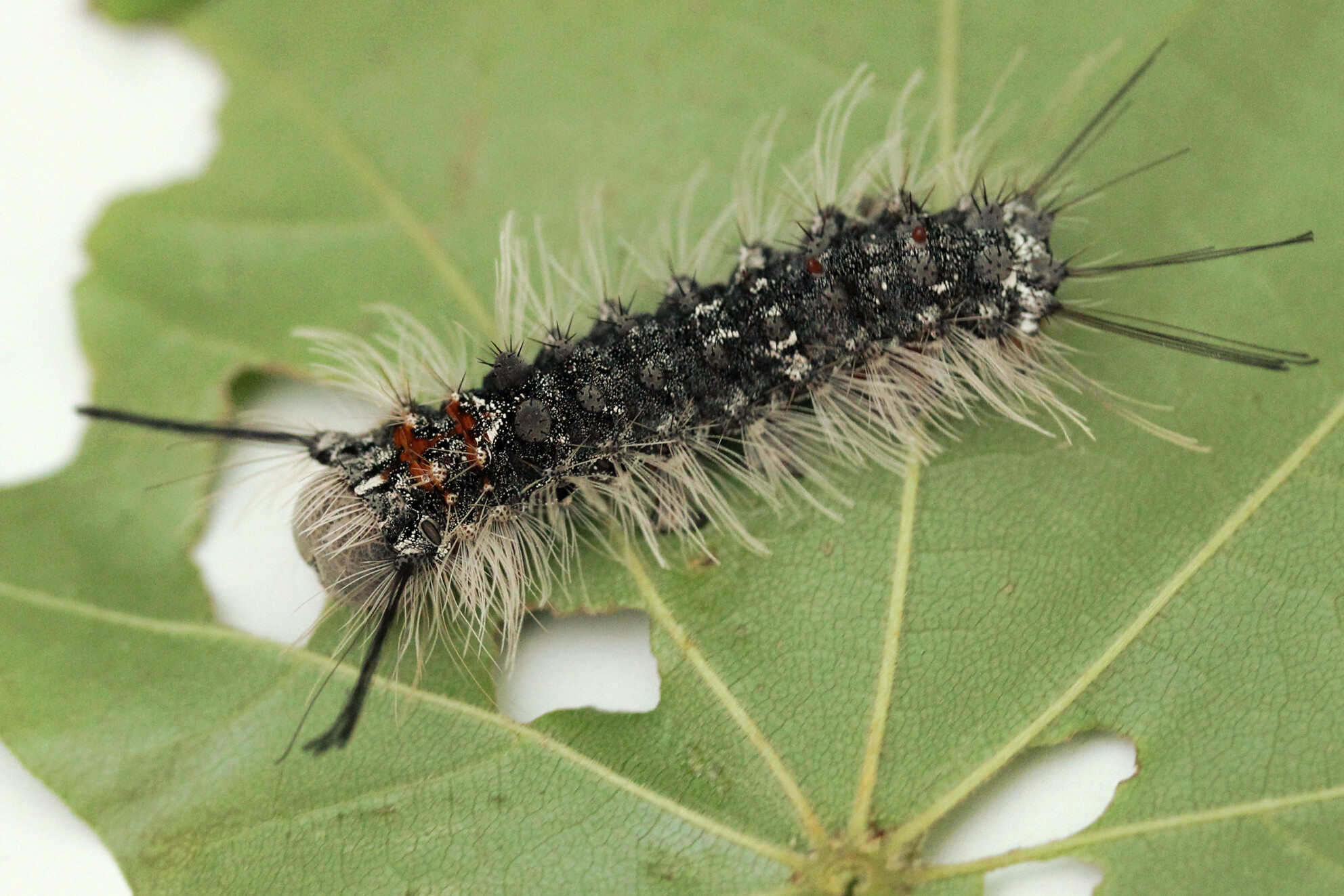
We studied polyphenol metabolism in polyphagous caterpillars of Lymantria mathura (Erebidae, Lepidoptera) to explore mechanisms that may contribute to its ability to feed on various host-plants. We detected pronounced intraspecific variation in polyphenol metabolism, an ability to excrete ingested metabolites and potential dietary habituation. Our results provide support for the hypothesis that generalists and specialists may have distinct metabolic strategies for dealing with secondary metabolites.
Long-term fertilization and cultivation impacts on nematode abundance and community structure in tall fescue turfgrass
- First Published: 09 February 2024

Turfgrass fertilizer applications over 11 years had variable effects on soil nematode abundance and community structure. Biosolid-based fertilizer applications where Cu, Fe, and Zn concentrations were highest resulted in the highest plant-parasitic Hoplolaimus abundance and lowest beneficial omnivore-predator nematode abundance.
Land cover preferences and spatiotemporal associations of ungulates within a Scottish mammal community
- First Published: 09 February 2024
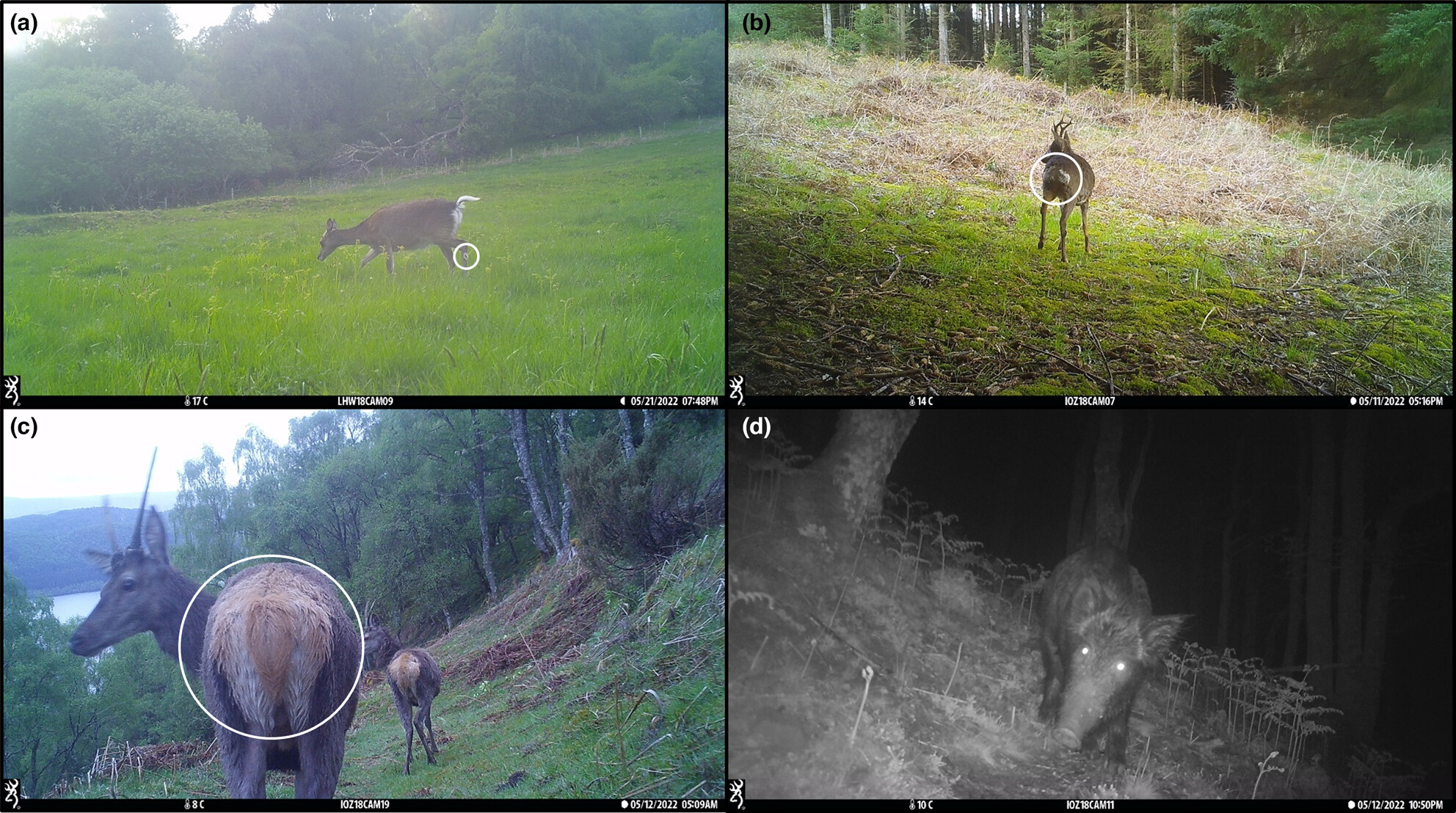
Using a camera trap survey, we investigated land cover preferences and spatiotemporal interactions within a Scottish ungulate community: the sika deer (Cervus nippon), the roe deer (Capreolus capreolus), the red deer (Cervus elaphus), and the wild boar (Sus scrofa). Ungulates showed some land cover preferences, whilst we found evidence of a spatiotemporal association between sika deer and roe deer. Although the underlying cause of this is unknown, we hypothesise that interactions such as grazing facilitation or an anti-predator response to culling could be driving this pattern.
Drivers of plant diversity, community composition, functional traits, and soil processes along an alpine gradient in the central Chilean Andes
- First Published: 09 February 2024
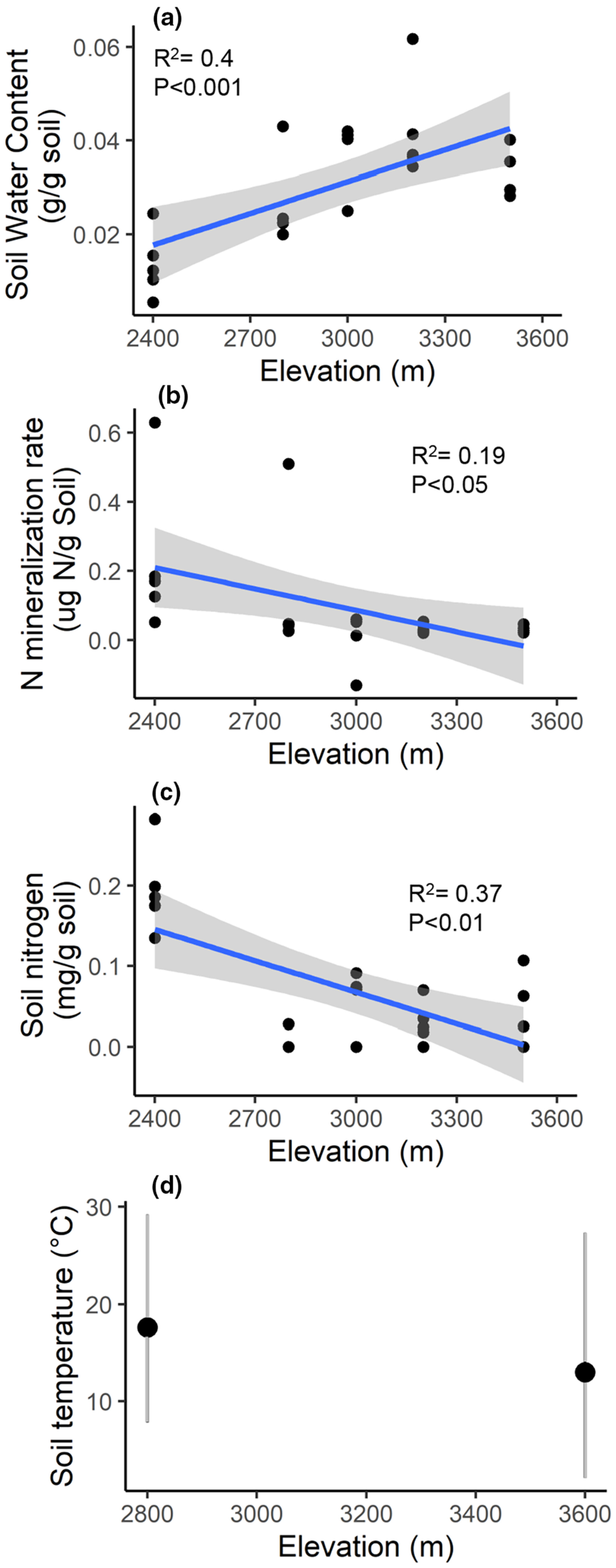
We tested the hypothesis that plant–soil feedbacks along a climatic and elevation gradient influence plant community assembly through shifts in habitat suitability, which drive plant functional, phylogenetic, and spectral diversity in a high mountain system (2400–3500 m) of Región Metropolitana in the Chilean Andes (33°S, 70°W). We found that leaf nitrogen increased with increasing elevation, and taxonomic and functional diversity associated with turnover in lineages peaked at mid-elevations, indicating that the ability to acquire and retain nitrogen in colder temperatures may be important in plant community assembly in this range. Such environmental filters have important implications for forecasting shifts in alpine plant communities under a warming climate.
Rutting and rambling: Movement characteristics reveal partial migration in adult male white-tailed deer at a latitude void of chronic and severe environmental fluctuations
- First Published: 13 February 2024
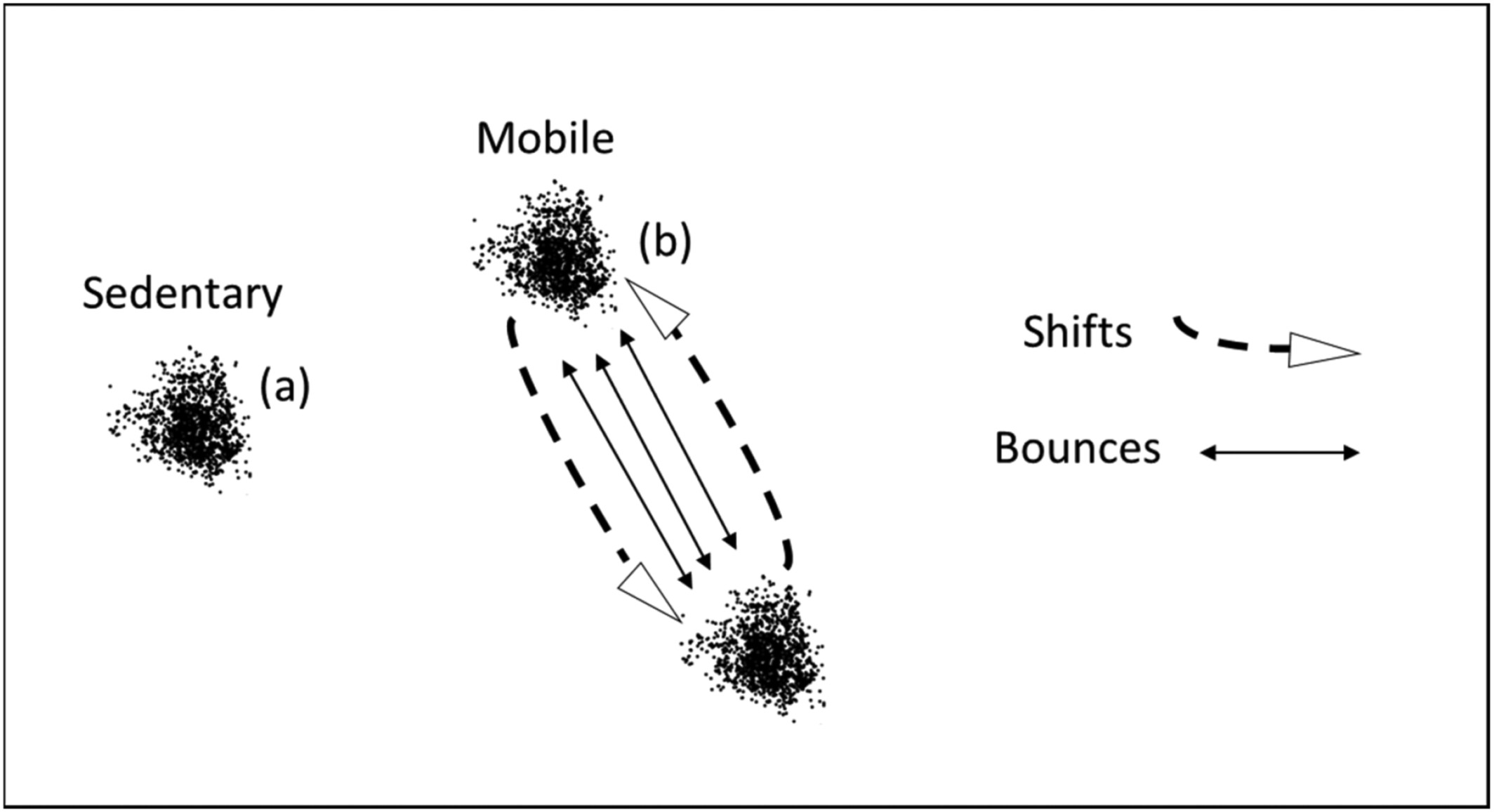
Some white-tailed deer populations are migratory in locations with severe and chronic seasonal resource limitations, but biological justification for such behaviors is lacking at lower latitudes. We document migratory behavior termed the "mobile" movement strategy in 33% of adult male deer in a low-latitude system void of such environmental pressures. Mobile deer had multiple home range segments separated by an average of 7 km and migrated at all times of year.
An Aspergillus flavus strain from bee bread of the Western honey bee (Apis mellifera) displays adaptations to distinctive features of the hive environment
- First Published: 22 February 2024
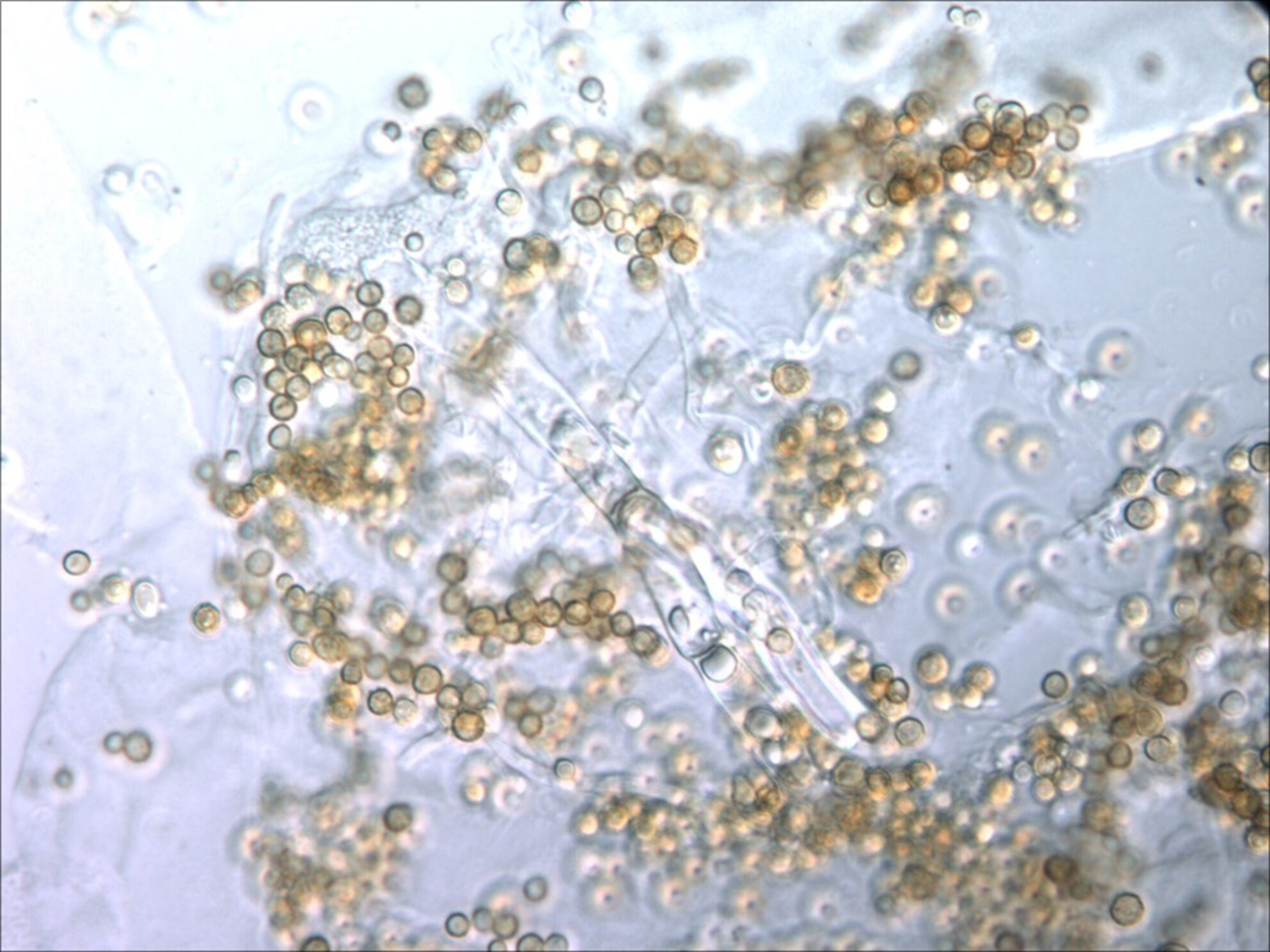
Aspergillus flavi are frequently found in beebread (pollen processed for long-term storage) and are thought to contribute to food preparation, processing, preservation, and digestion in the bee colony. We used quantitative and qualitative assays as well as genomic analysis to determine whether A. flavus isolated from beebread demonstrated tolerance for the hive environment in terms of temperature, pH, osmotic pressure, and propolis exposure. Both bioassays and molecular evidence suggest a history of coevolution between this strain of fungus and the western honey bee and a role for this fungus in bee food processing that could be disrupted by human activity.
Individual behaviour, growth, survival and vulnerability to hunting in a large mammal
- First Published: 13 February 2024
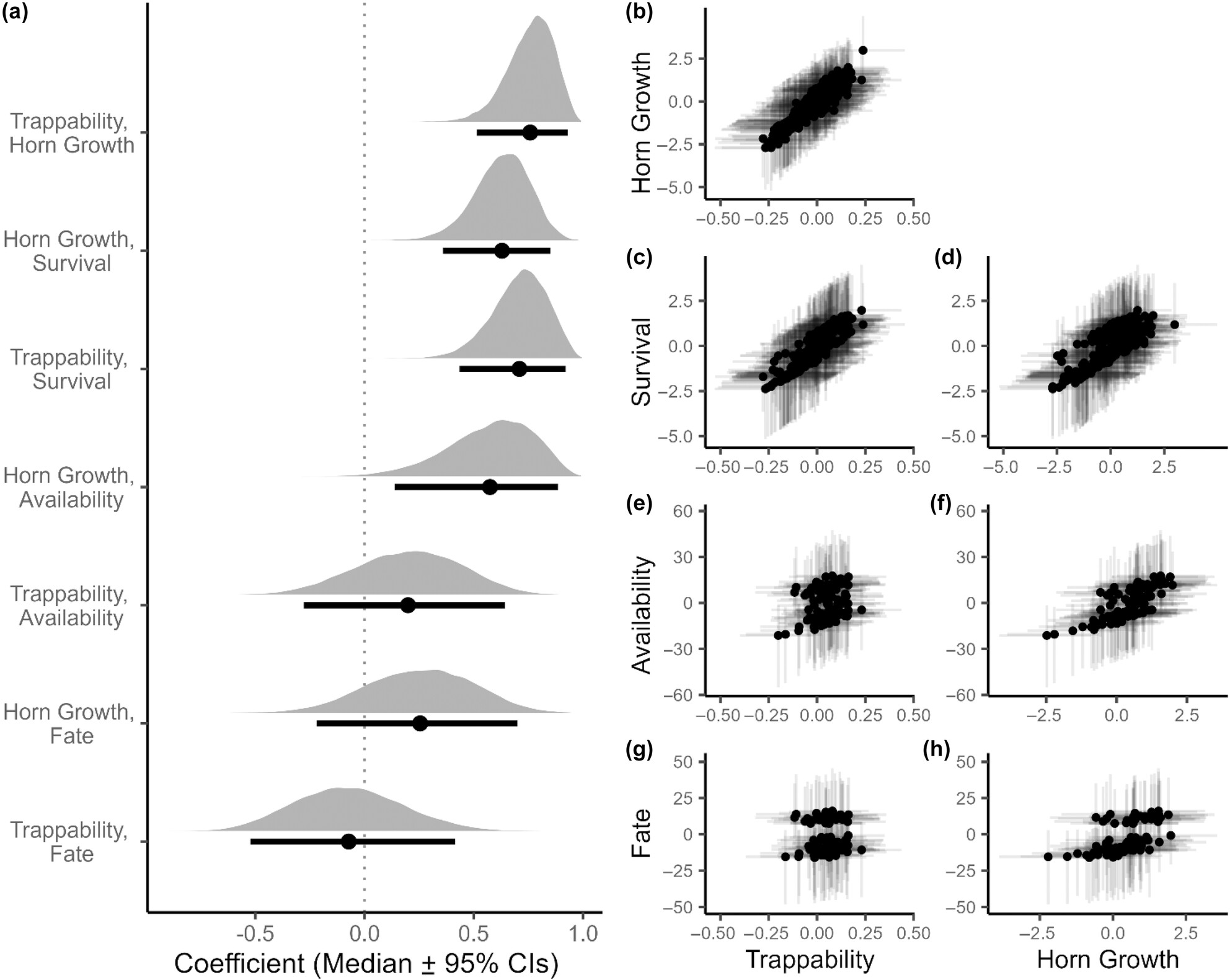
We quantified among-individual correlations in behaviour, growth and survival in a wild bighorn sheep population and assessed whether decades of size-selective hunting led to indirect harvest-induced selection on behaviour. We found positive among-individual correlations between early-life trappability, growth and survival but no correlations between early-life behaviour and vulnerability to hunters. Our results show that correlations between behaviour, growth and life-history traits can occur in wild terrestrial population but may be context dependent and highlight the difficulty in formulating general predictions about harvest-induced selection on behaviour.
Drones as a tool to study and monitor endangered Grey Crowned Cranes (Balearica regulorum): Behavioural responses and recommended guidelines
- First Published: 13 February 2024
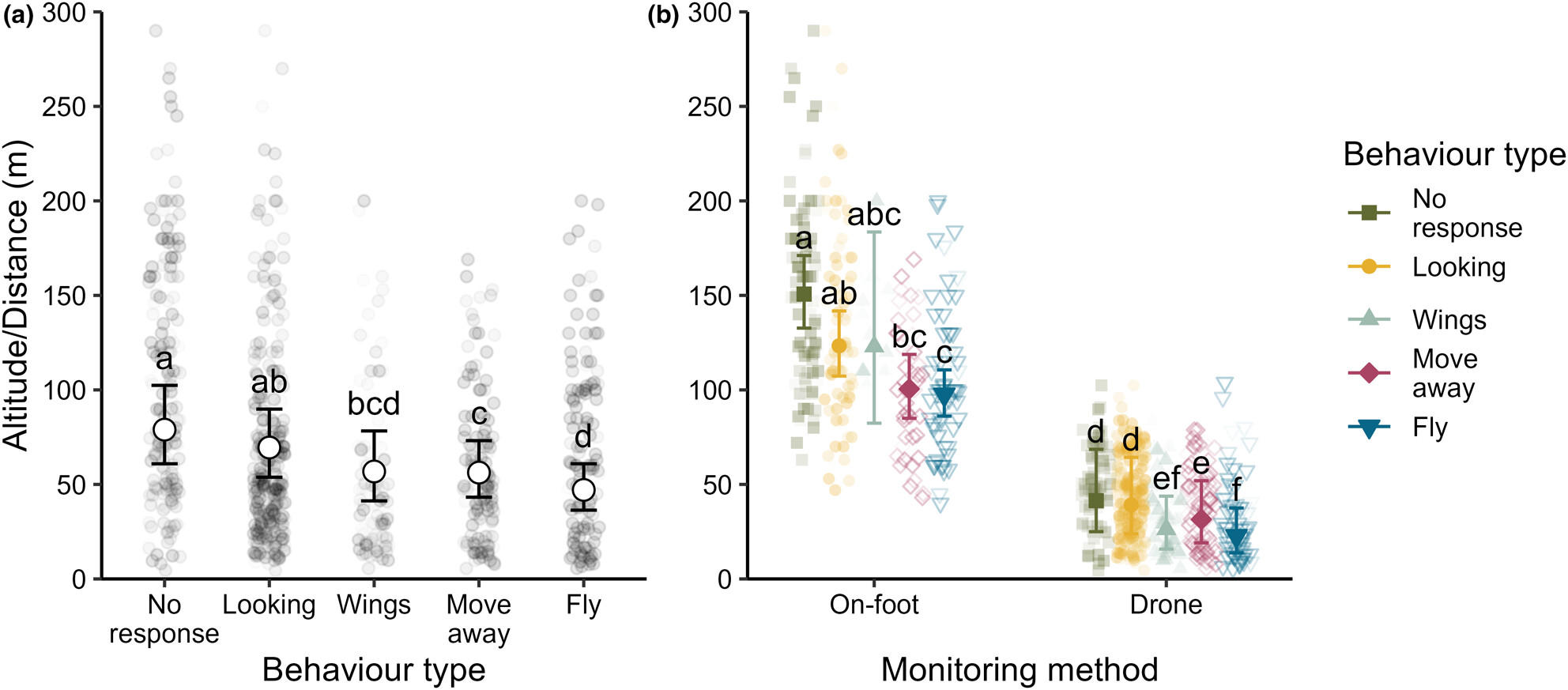
Grey Crowned Crane social groupings showed greater tolerance to drone monitoring, displaying evasive behaviours at 23 m compared with 98 m when monitored on foot. The behavioural response of flocks was minimal at flight heights above 50 m, whilst larger flocks were more likely to display evasive behaviours in response to monitoring by either method. Families displayed the least evasive behaviours to lower flights but we caution that nesting birds are sensitive to drone approach angle.
The relationship between the body and air temperature in a terrestrial ectotherm
- First Published: 13 February 2024
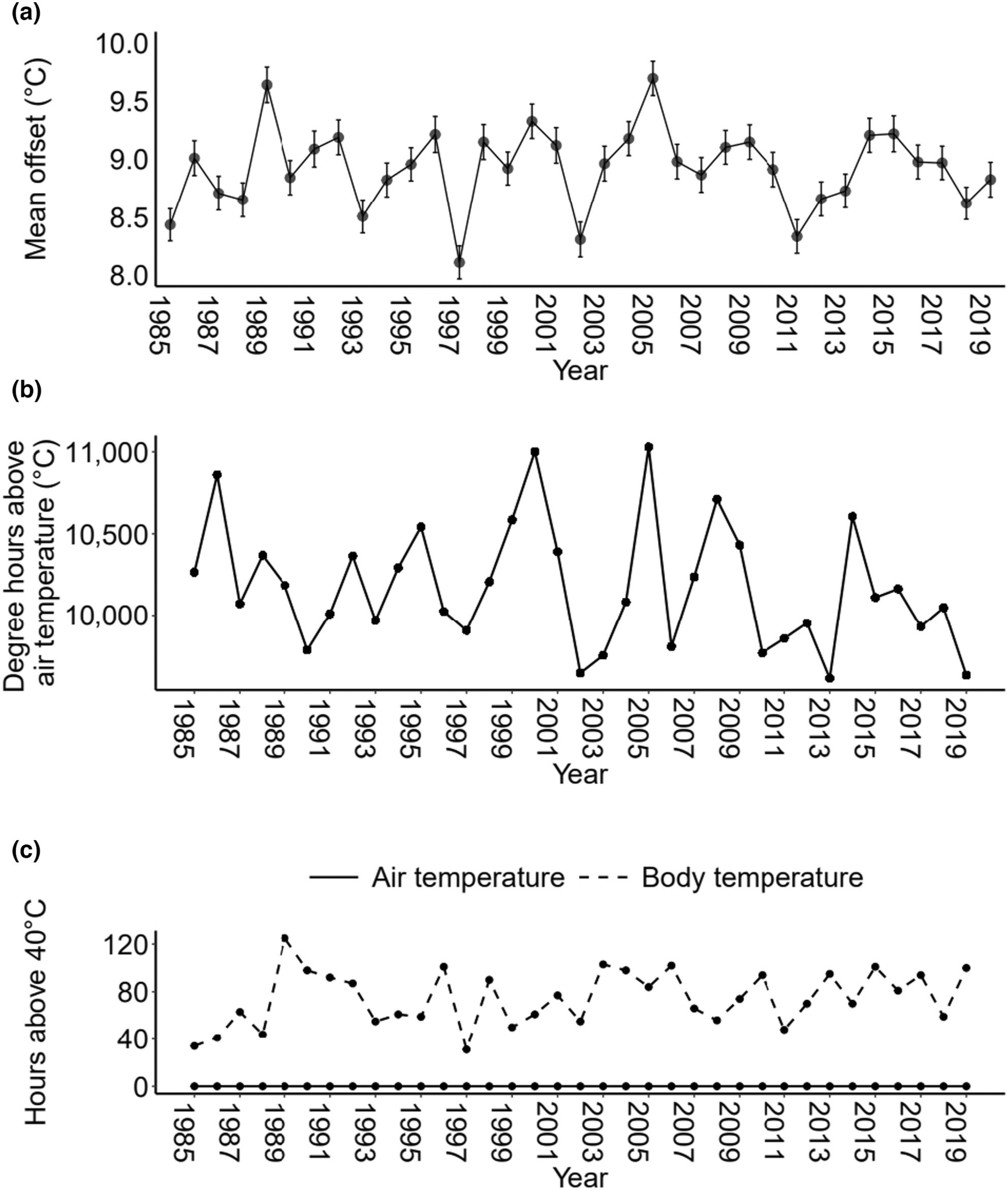
The relationship between the body temperature and air temperature 1985–2019. While the air temperature impacts the ectotherm body temperature, it captures only a fraction of its thermal experience. The body temperature is not predictable from air temperature alone, and differences between the air and body temperature (temperature offset) varies between years.
Demography and threats to population growth of Cirsium pitcheri, a threatened dune plant, in Wisconsin
- First Published: 15 February 2024
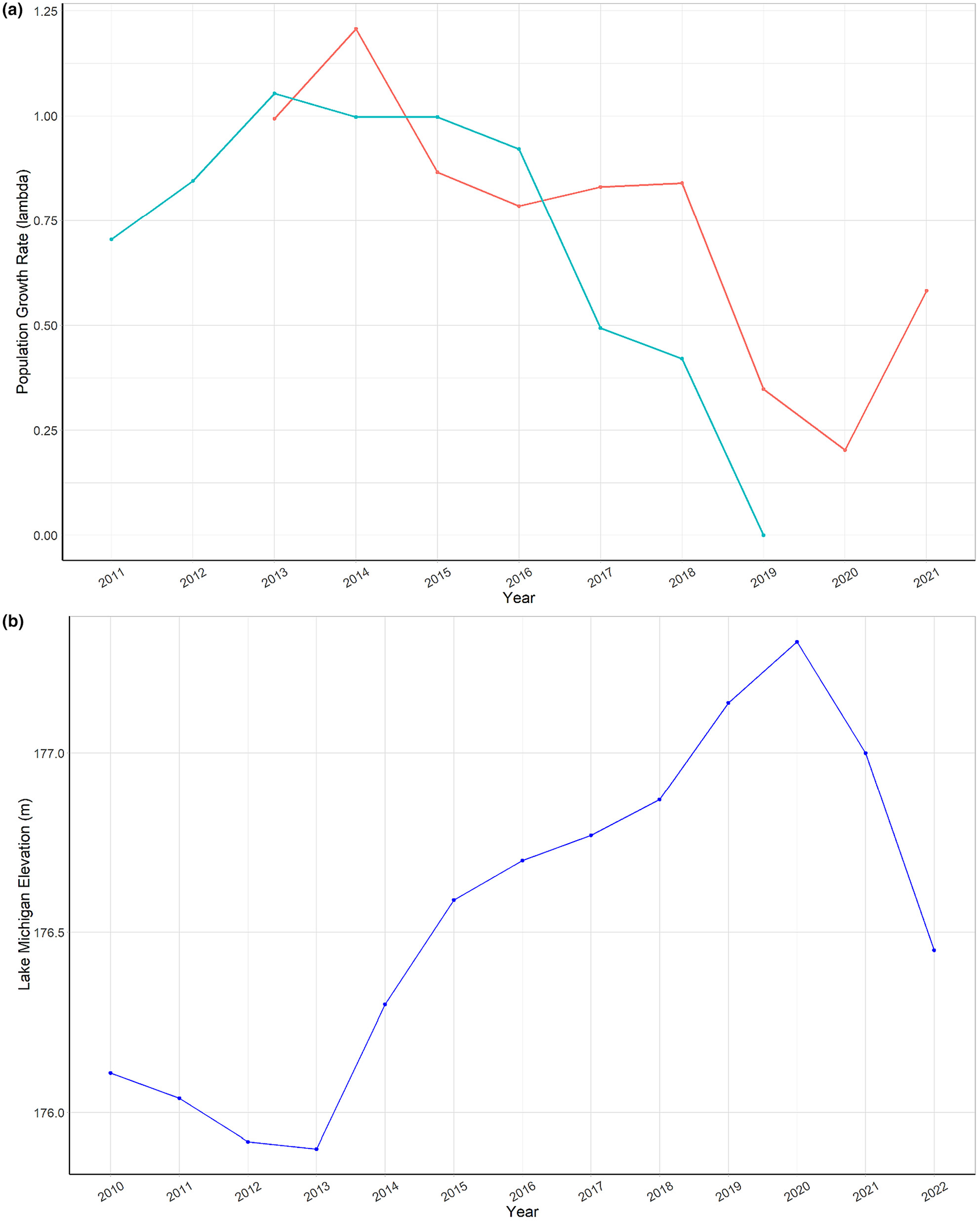
Populations of Cirsium pitcheri, a rare thistle endemic to the Great Lakes of North America, are impacted by external forces, or threats, such as habitat conversion, trampling, and exotic seed-eating weevils. However, populations in Wisconsin were adversely affected by changing lake levels, with dramatic declines in plant survivorship and population growth rates occurring in years with record or near-record high lake levels. High lake levels are expected to become more frequent with climate change and pose a significant threat to all near-shore populations of C. pitcheri.
Geomicrobiological characterization of the evaporitic ecosystem in the hypersaline lake Laguna Verde (Andean Puna, Northwestern Argentina)
- First Published: 12 February 2024
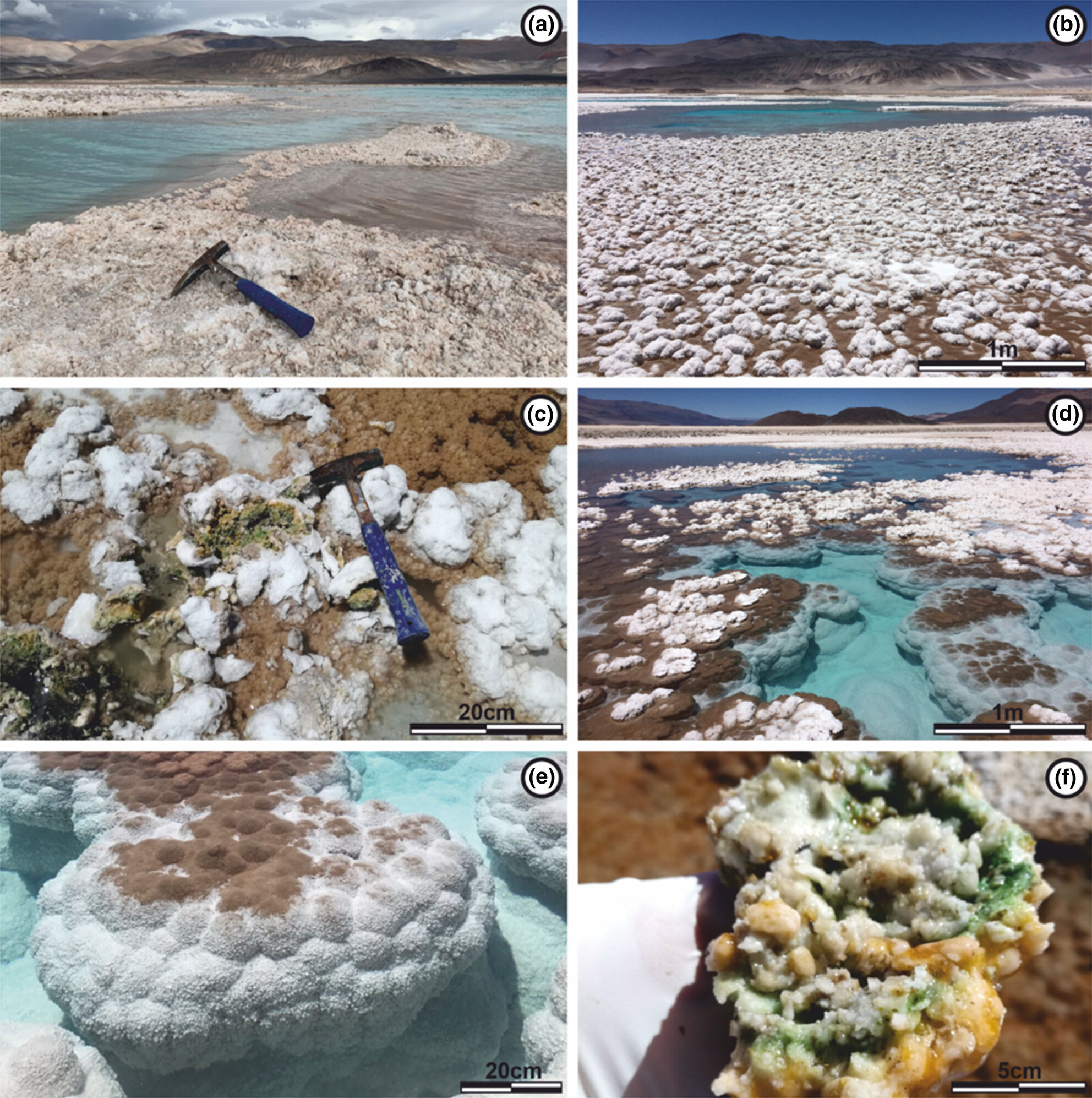
This study provides the first comprehensive geomicrobiological analysis of the dome-shaped structures in Laguna Verde, a crucial Andean Microbial Ecosystem (AME) in the Central Andes. The research unveils the structure's diverse micro-environments and the associated microorganisms, primarily Cyanobacteria, which play a significant role in the ecosystem's carbon fixation through oxygenic photosynthesis. This investigation into Laguna Verde's unique gypsum evaporitic microbial ecosystems (GEMEs) contributes critical insights into similar records throughout Earth's history, thus, aiding studies of life's origin and astrobiology.
Season-specific impacts of climate change on canopy-forming seaweed communities
- First Published: 13 February 2024
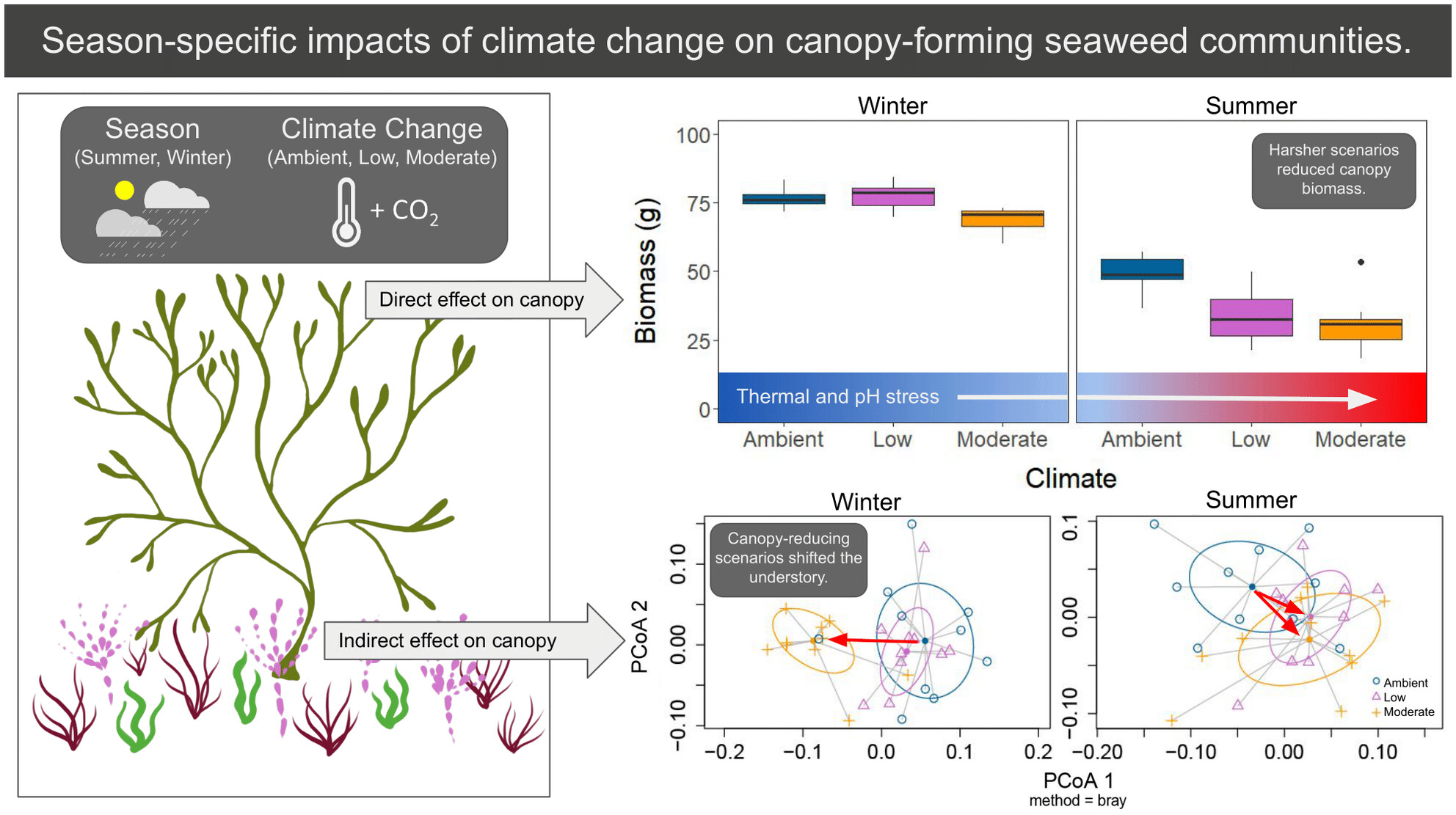
Climate change research has historically focused on single species responses to future climate conditions, leaving other factors that can alter these outcomes, such as climate scenario intensity, species interactions, and seasonality, understudied. We examined the effect of these additional factors on an intertidal rockweed community's response to climate change and found that different future climate scenarios interacted with the season, resulting in different rockweed communities.
Limited spatiotemporal niche partitioning among mesocarnivores in Gorongosa National Park, Mozambique
- First Published: 15 February 2024
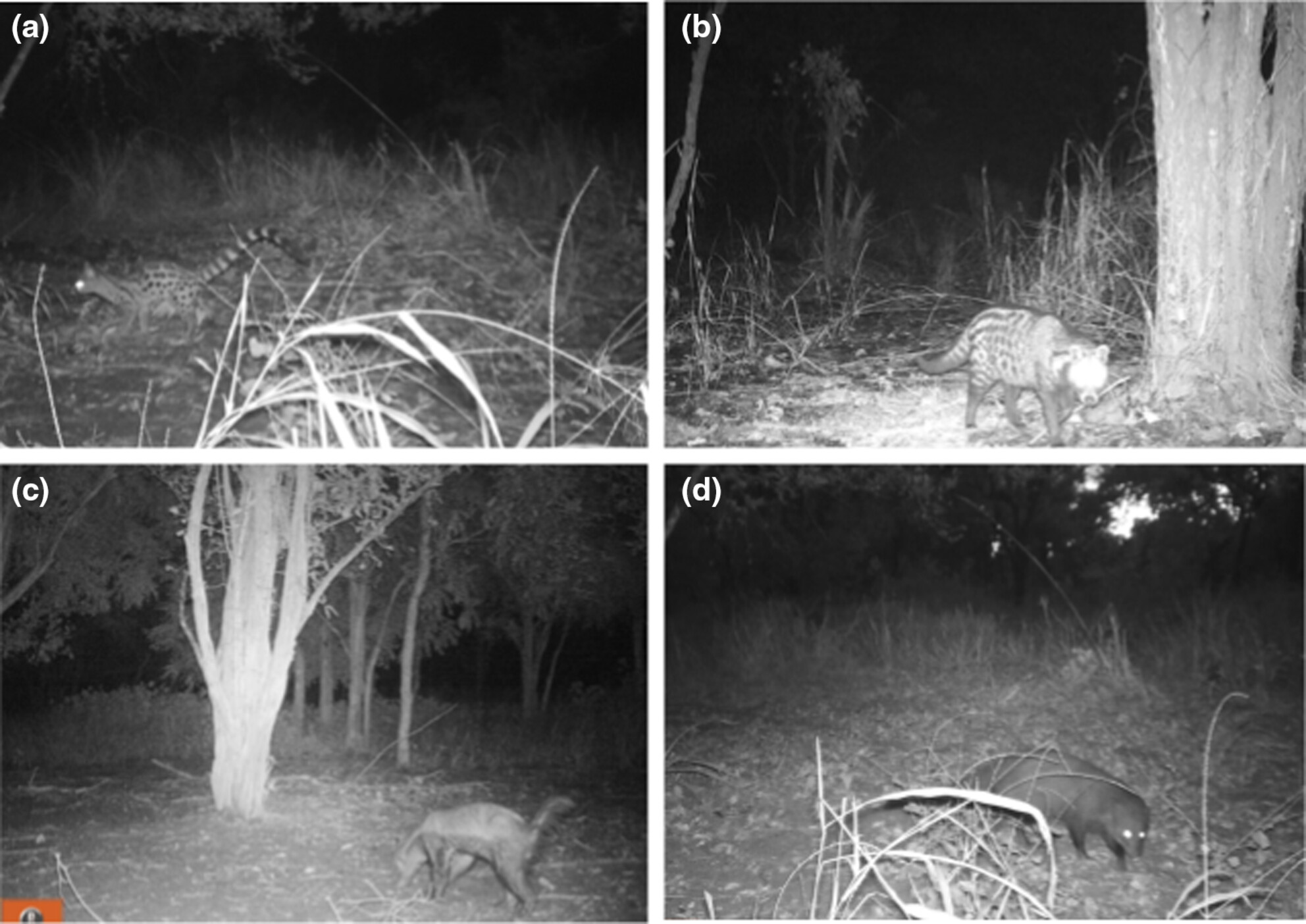
We used camera traps to explore patterns of spatial and temporal niche partitioning as mechanisms supporting coexistence among four mesocarnivore species in Mozambique's Gorongosa National Park. We found no evidence of spatial or temporal avoidance among species, and we documented species-specific environmental factors that affected detection probability. This study contributes valuable insights into African mesocarnivore ecology, particularly in the absence of apex predators, and highlights the importance of understanding these dynamics for effective conservation and restoration.
Biparental incubation behaviour under temperature extremes in sandbank nesting black skimmers
- First Published: 15 February 2024
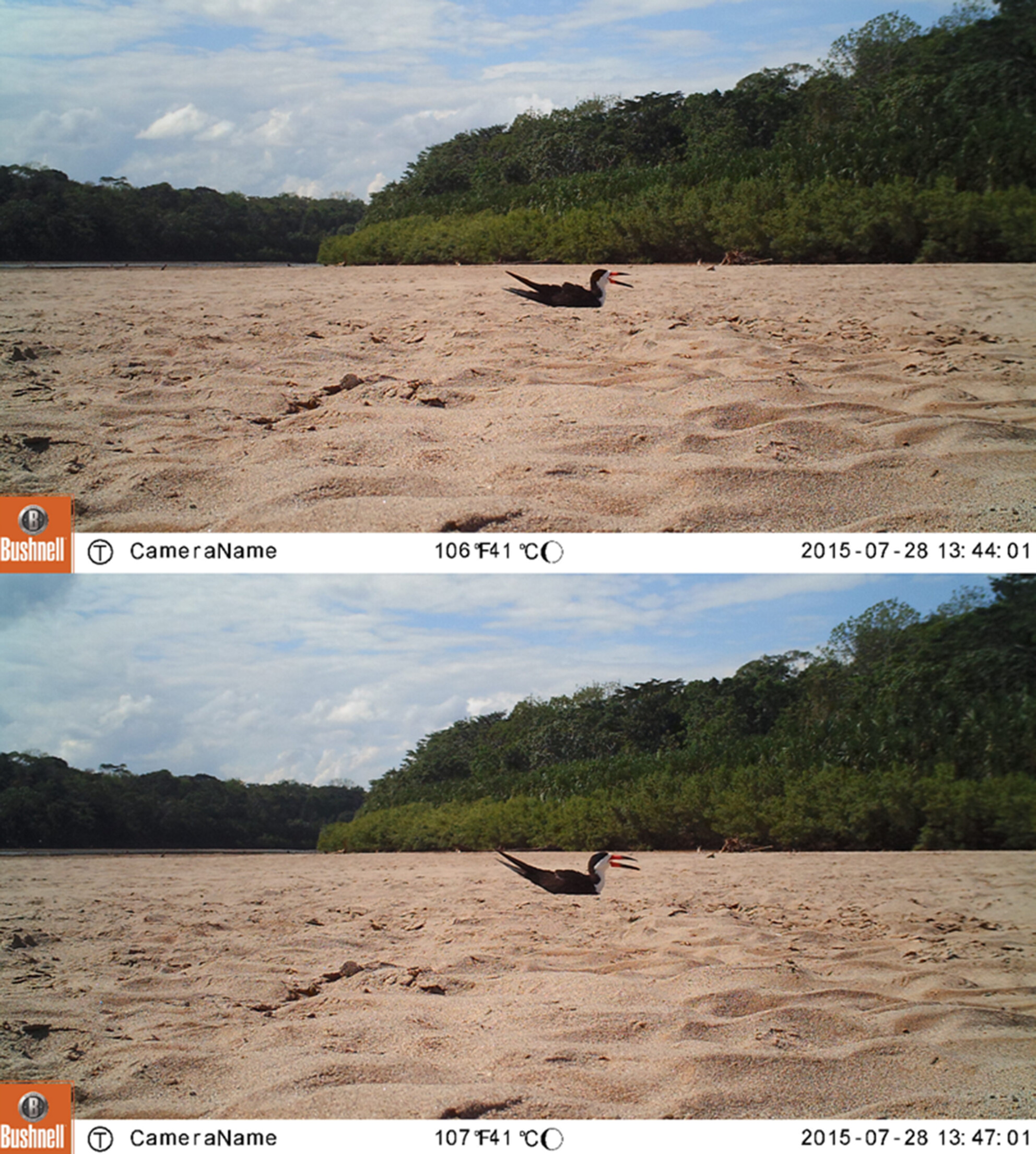
We investigated biparental incubation behaviour and nest temperature using autonomous recording devices and test whether male and female time budgets change across the diel cycle in a sexually dimorphic species. Black skimmers made use of several behavioural mechanisms, such as shorter incubation bouts, higher pair synchronisation and thermoregulatory postures to maintain high nest attendance even in the hottest part of the day. Our findings can inform habitat management and conservation which are increasingly needed for sandbank nesting species.
Genetic differentiation and bottleneck effects in the malaria vectors Anopheles farauti and Anopheles punctulatus after an LLIN-based vector control program in Papua New Guinea
- First Published: 15 February 2024
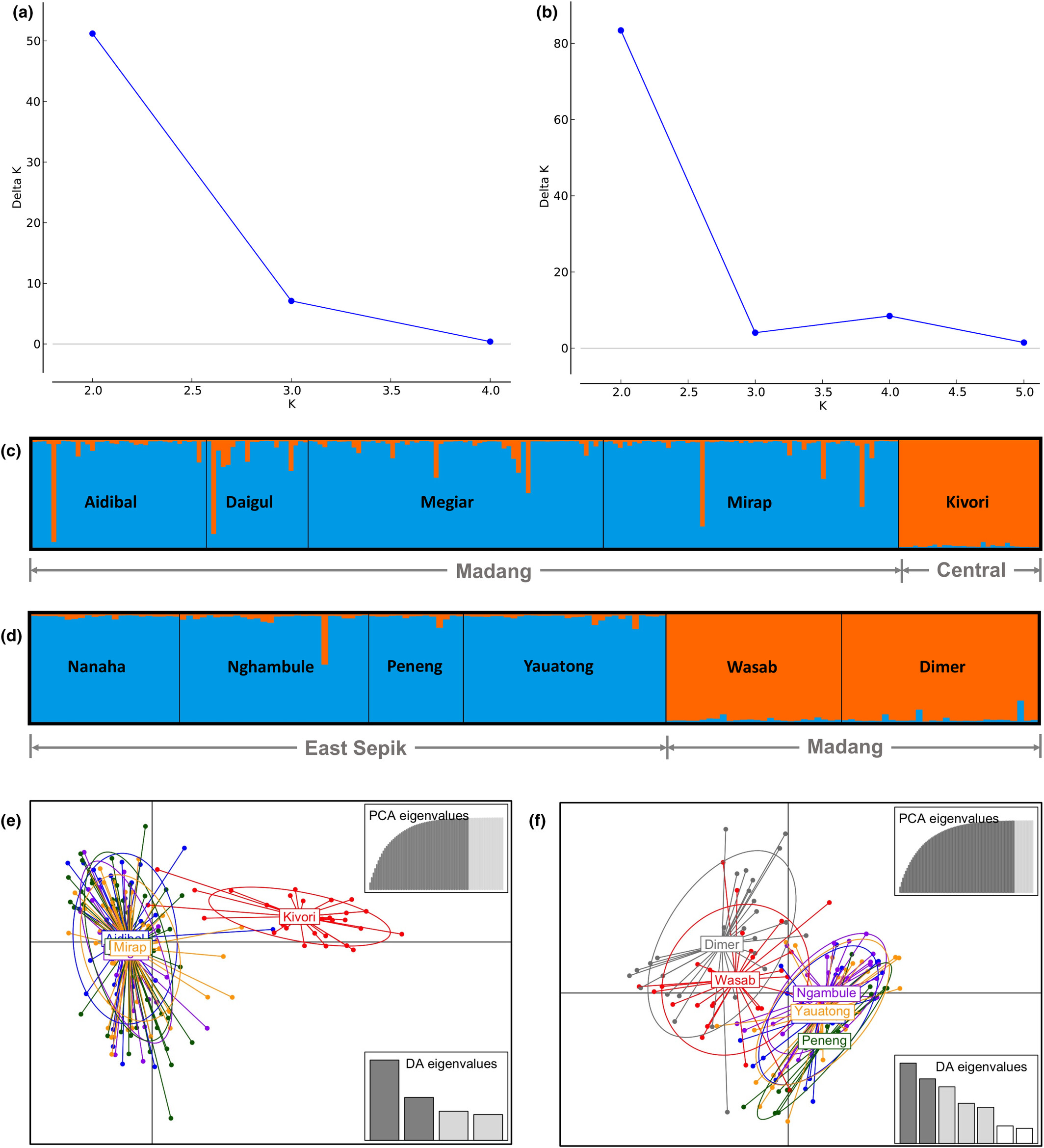
In Papua New Guinea, a nationwide vector intervention program based on the use of long-lasting insecticidal bed nets has been ongoing since 2009. While there are many reports of reduced vector abundance and malaria transmission rates attributed to the bed nets, the extent to which this outcome affected the population genetic structure and demographic parameters of the mosquito vectors in Papua New Guinea has not been investigated. This paper reports the findings of a study that addressed this knowledge gap.
Biogeography and assembly processes of abundant and rare soil microbial taxa in the southern part of the Qilian Mountain National Park, China
- First Published: 13 February 2024
The estimation of additive genetic variance of body size in a wild passerine is sensitive to the method used to estimate relatedness among the individuals
- First Published: 13 February 2024
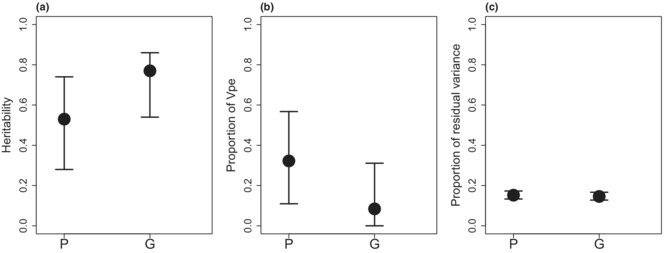
Here, we compared different methods for estimating relatedness among the individuals (based on social pedigree or genomic data) to investigate additive genetic variance and heritability in the tarsus length of a passerine. Our results confirm the potential for this crucial trait to respond to selection and highlight methodological concerns when calculating additive genetic variance and heritability in phenotypic traits, as the heritability estimates were higher when obtained with the genetic similarity matrix instead of the social pedigree.
Heat stress conditions affect the social network structure of free-ranging sheep
- First Published: 13 February 2024
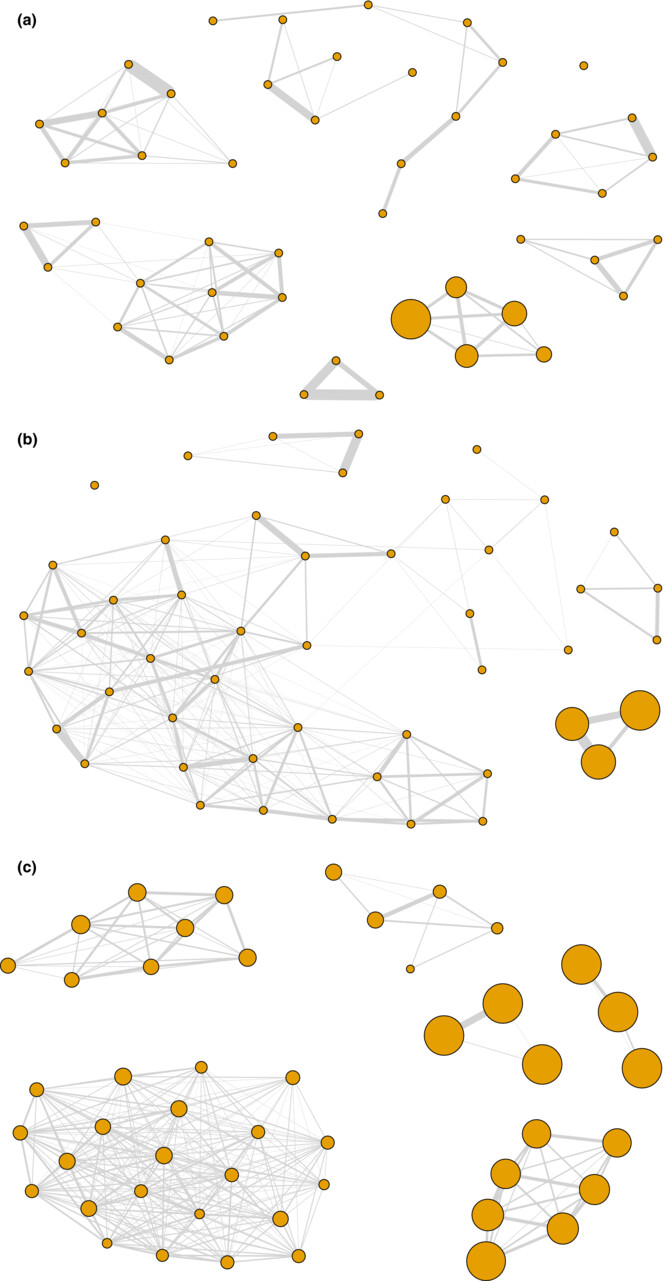
We GPS-tracked 48 free-ranging sheep in the arid zone of Australia. When heat stress conditions worsened, the social network was more connected (higher density) but with lower internal structure (lower modularity). Furthermore, an individual's social connectivity was affected by its shade use behaviour, and individuals with intermediate shade use were most strongly connected (degree, strength, betweenness).
The effect of urbanization and temperature on thermal tolerance, foraging performance, and competition in cavity-dwelling ants
- First Published: 21 February 2024

Human disturbance including rapid urbanization and increased temperatures can have profound effects on the ecology of local populations. Here, we asked how urbanization and incubation temperature influence critical thermal maximum (CTmax) and various ecologically relevant behaviors in three ant species in urban and rural locations. We found that incubation temperature, urbanization status, and species have varying effects on ant behavior and physiology, suggesting that responses to urbanization and shifting temperatures are not universal across species or context.
Individual recognition of Eurasian beavers (Castor fiber) by their tail patterns using a computer-assisted pattern-identification algorithm
- First Published: 13 February 2024
Decomposing diversity into measures of evenness, similarity, and richness
- First Published: 13 February 2024
Lactic acid bacteria in Swedish honey bees during outbreaks of American foulbrood
- First Published: 13 February 2024
stelfi: An R package for fitting Hawkes and log-Gaussian Cox point process models
- First Published: 13 February 2024
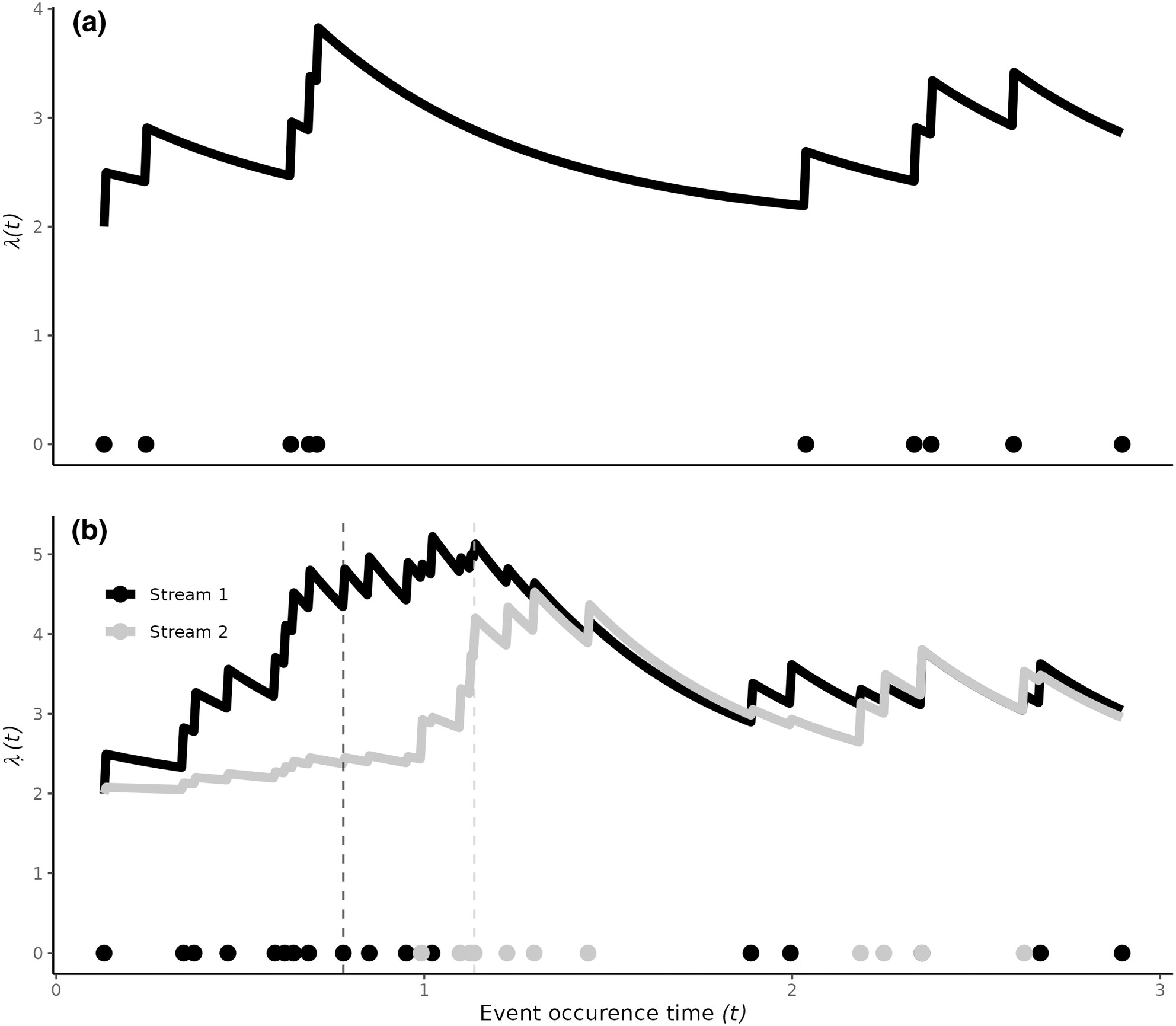
We introduce the R package stelfi, available from the Comprehensive R Archive Network. This package allows users to fit temporal self-exciting Hawkes models, spatial and spatiotemporal log-Gaussian Cox process models and self-exciting spatiotemporal models. The functionality of stelfi is illustrated using Sasquatch (bigfoot) sightings data shipped with the package.
The invasive legume Lupinus polyphyllus has minor site-specific impacts on the composition of soil bacterial communities
- First Published: 13 February 2024
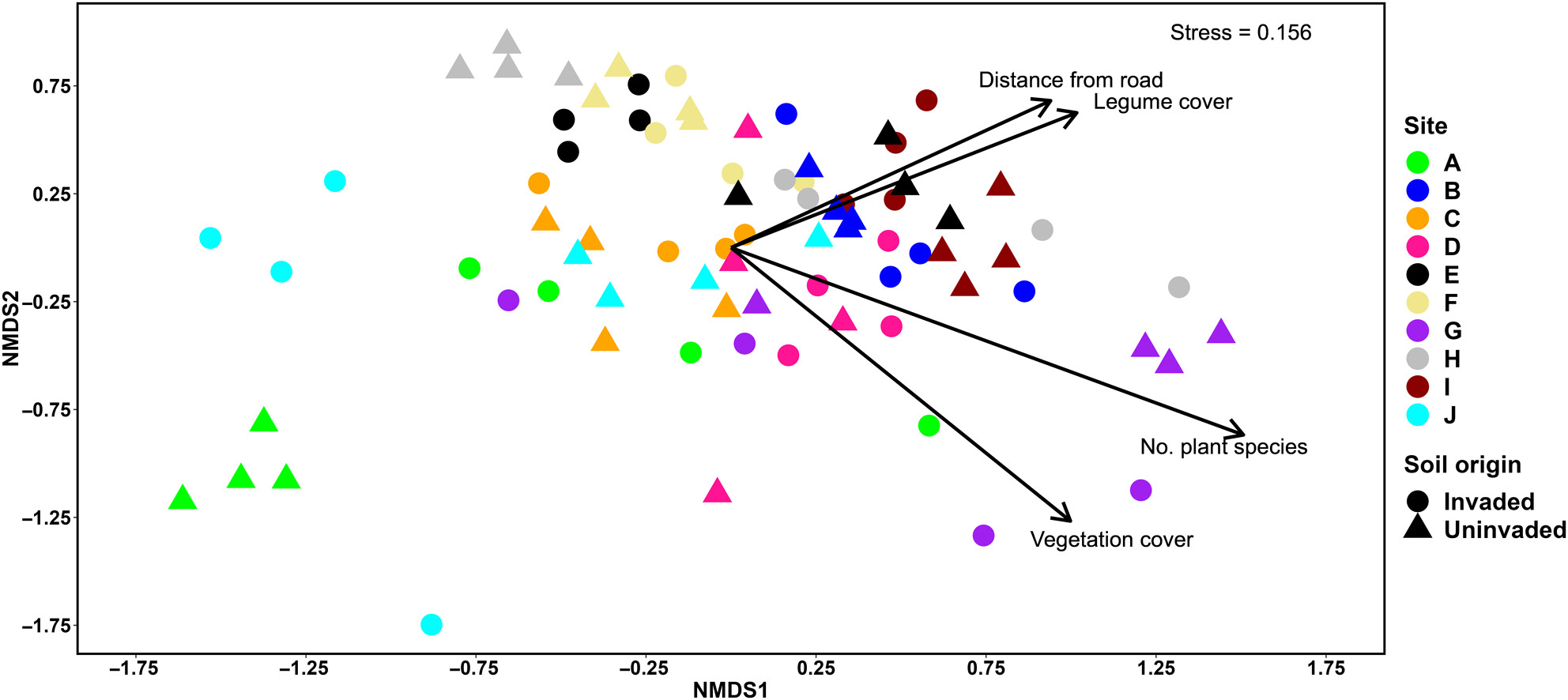
In our study, we investigated the impact of the invasive herbaceous legume, Lupinus polyphyllus, on soil bacterial communities in southwestern Finland. We used 16S rRNA gene amplicon sequencing to analyse soil samples collected from ten paired sites (invaded and uninvaded locations), and examined the potential influence of three vegetation variables (vegetation cover, legume cover, and number of plant species) on the soil bacterial community. Our findings indicate that L. polyphyllus has the potential to modify the composition of local soil bacterial community, at least in sites where it has been present for more than a decade.
Effect of ecological and anthropogenic factors on grouping patterns in African lions across Kenya
- First Published: 14 February 2024
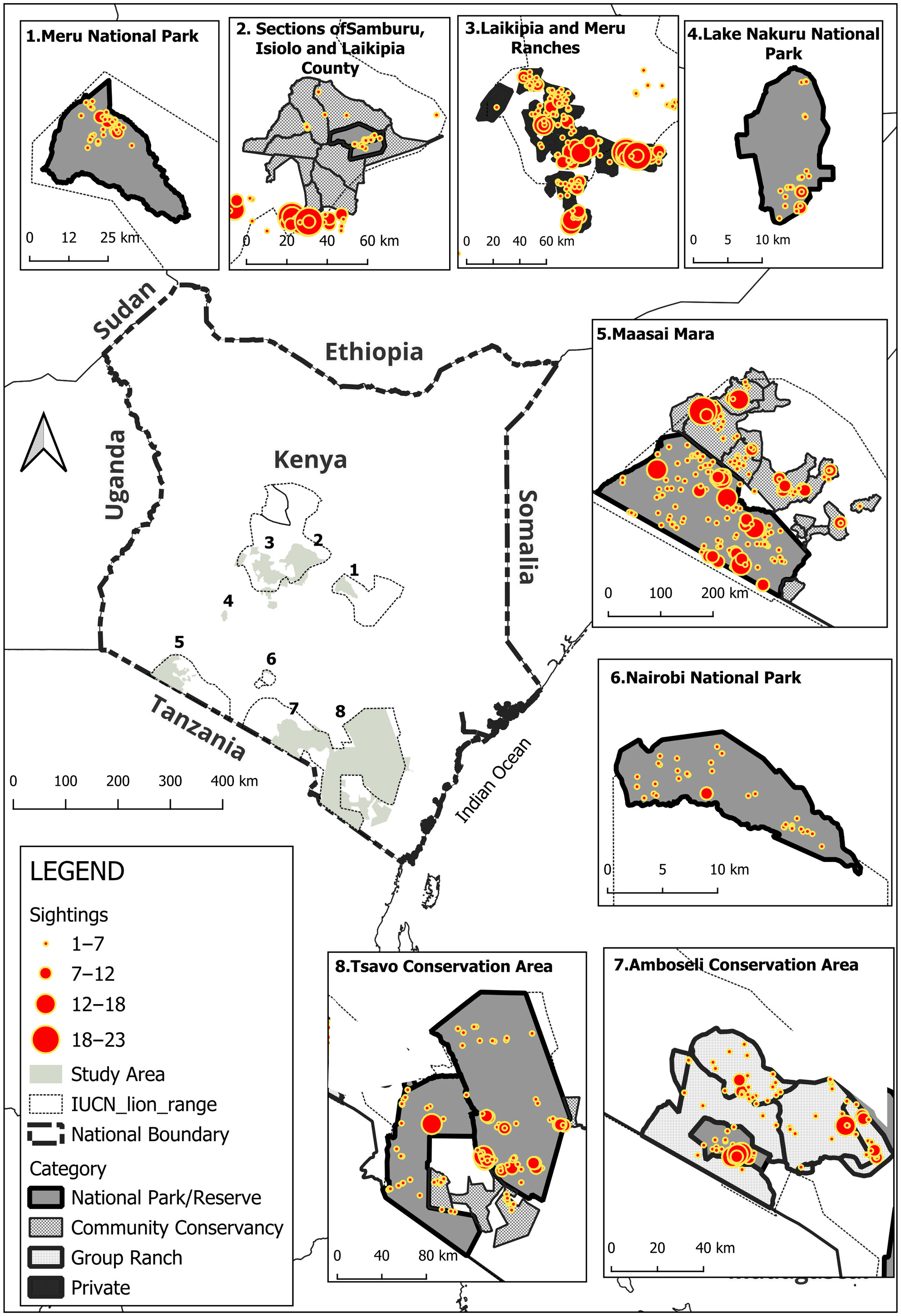
Social carnivores, such as lions, commonly reside in fission–fusion societies, where individuals may be found alone, in subgroups, or together within a shared territory. While the impact of ecological and anthropogenic conditions on grouping patterns is known at broader scales, the effects of fine-scale variations remain less explored. Lions, as the only truly social felid, exhibit fission–fusion dynamics with frequent and continuous changes in subgroup membership. Through data collected from eight sites across Kenya, we looked at the intricate relationship between ecological and anthropogenic factors and the grouping patterns of lions and observed distinct variations in both group and subgroup sizes at local scales.
Light–dark cycles may influence in situ soil bacterial networks and diurnally-sensitive taxa
- First Published: 13 February 2024

This study explores the impact of light–dark cycles and land cover types on soil bacterial communities. It finds that land cover type significantly affects bacterial diversity and that there are time-dependent variations in bacterial network complexity and relative abundance of individual taxa. These findings highlight the influence of light–dark cycles and land cover on soil bacterial composition, emphasising the importance of considering the time of day in soil bacteria sampling.
Effects of leaf herbivory and autumn seasonality on plant secondary metabolites: A meta-analysis
- First Published: 13 February 2024
Species identification through deep learning and geometrical morphology in oaks (Quercus spp.): Pros and cons
- First Published: 13 February 2024
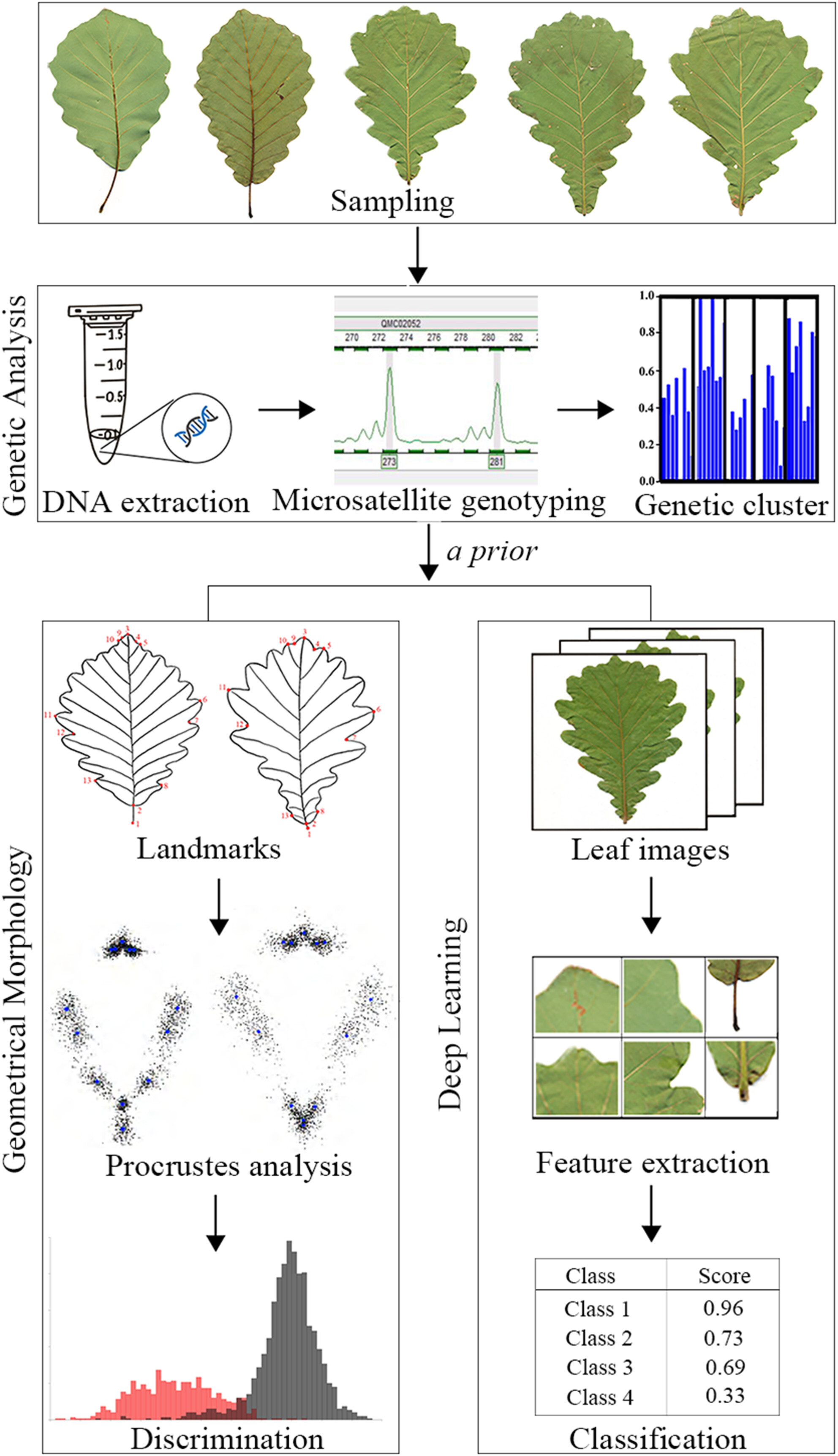
We conducted a comparative analysis to evaluate the accuracy and efficiency of the GMMs and deep learning methods in discriminating two closely related oaks, Q. aliena and Q. dentata, using genetics as a priori classification. We found that deep learning is the most cost-efficient method in terms of time and cost, whereas GMMs can confirm the leaf shape of admixture individuals and demonstrate the tendency of leaf contraction and expansion. Moreover, we found that the shape of admixture individuals was close to that of Q. dentata, suggesting that oaks retain high levels of fitness variation, with Q. aliena being more favored by selection in leaf morphological traits.
The gut microbiomes of Channel Island foxes and island spotted skunks exhibit fine-scale differentiation across host species and island populations
- First Published: 14 February 2024
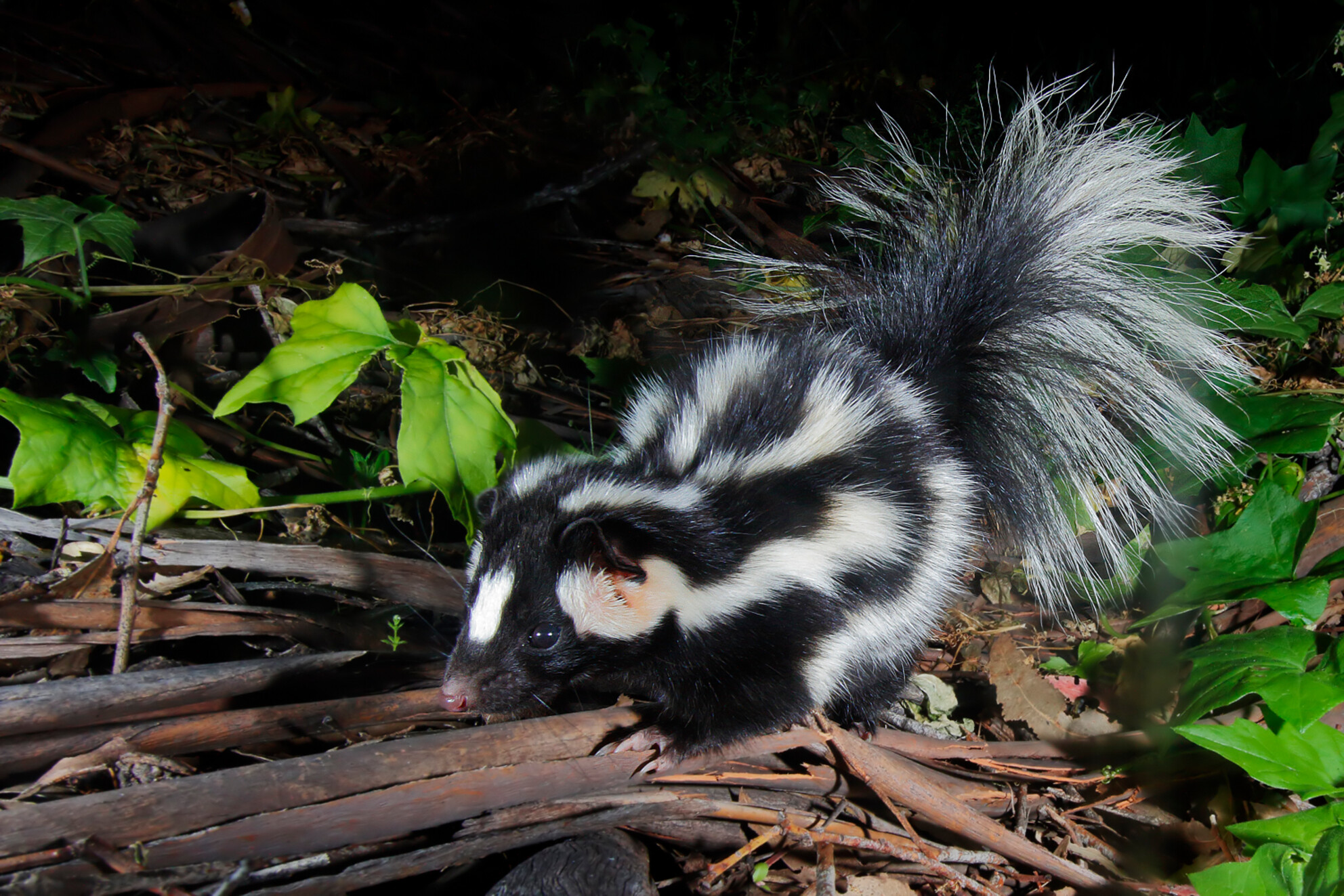
We examined the host-associated microbiome of Channel Island foxes and island spotted skunks in the context of fine-scale niche differentiation, as it is rare for two endemic, insular mesocarnivores to coexist. We found intraspecific variation between island populations, with greater differentiation observed between more specialist island spotted skunk populations compared to more generalist island fox populations. This pattern may reflect differences in resource utilization following fine-scale niche differentiation, as well as evolutionary differences regarding the timing of intraspecific separation.
Examining the associations between a generalist feeder and a highly toxic host
- First Published: 21 February 2024
Validating a molecular clock for nudibranchs—No fossils to the rescue
- First Published: 14 February 2024
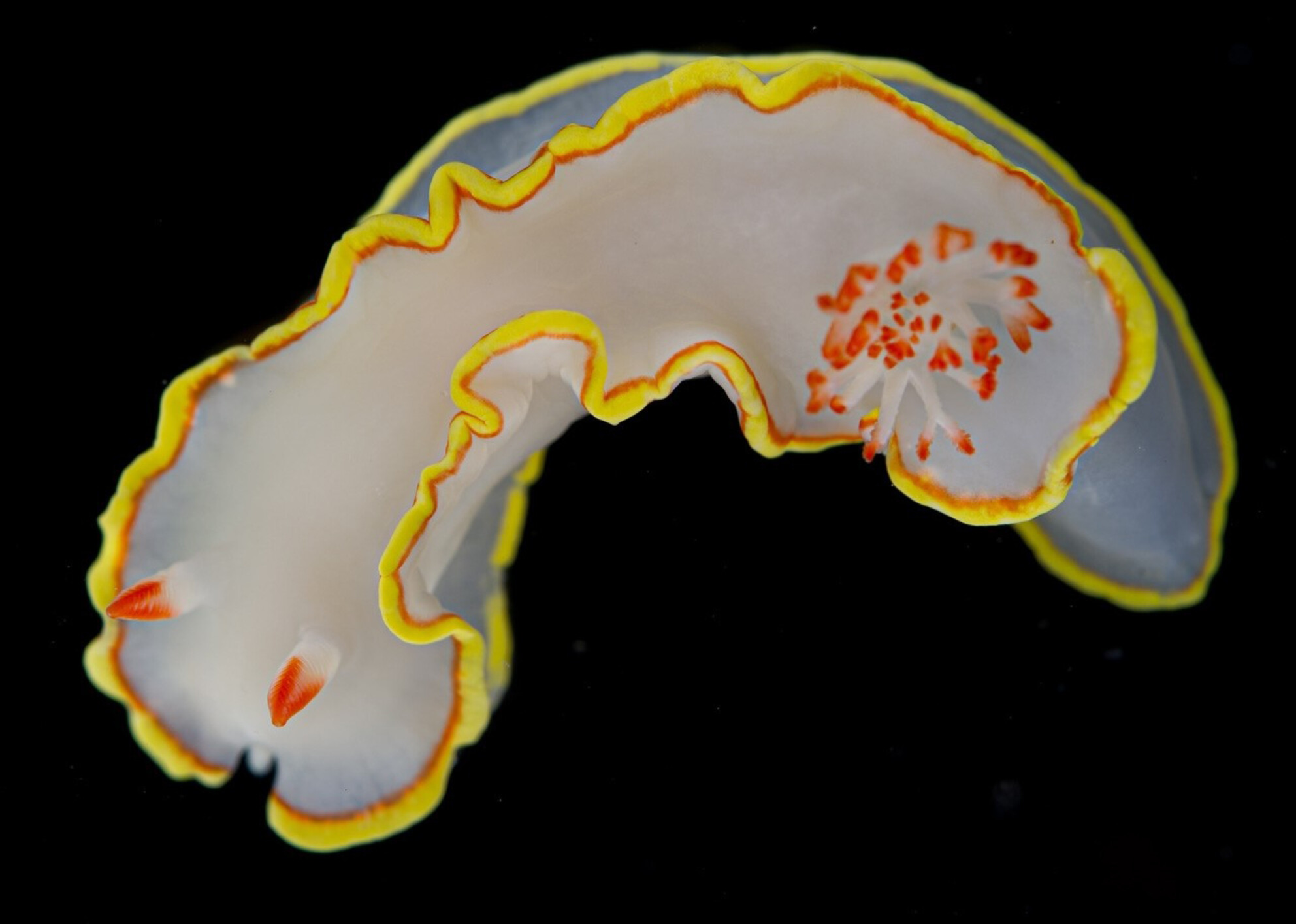
Here, for the first time, we derive divergence rates for nudibranchs using multigene data from a previously undetected geminate pair, with rates exceeding those reported for shelled gastropods. We also erect a new species designation for the Western Atlantic clade, Chromolaichma hemera sp. nov., and we uncover deep divergences within this clade.
Limited associations between MHC diversity and reproductive success in a bird species with biparental care
- First Published: 20 February 2024
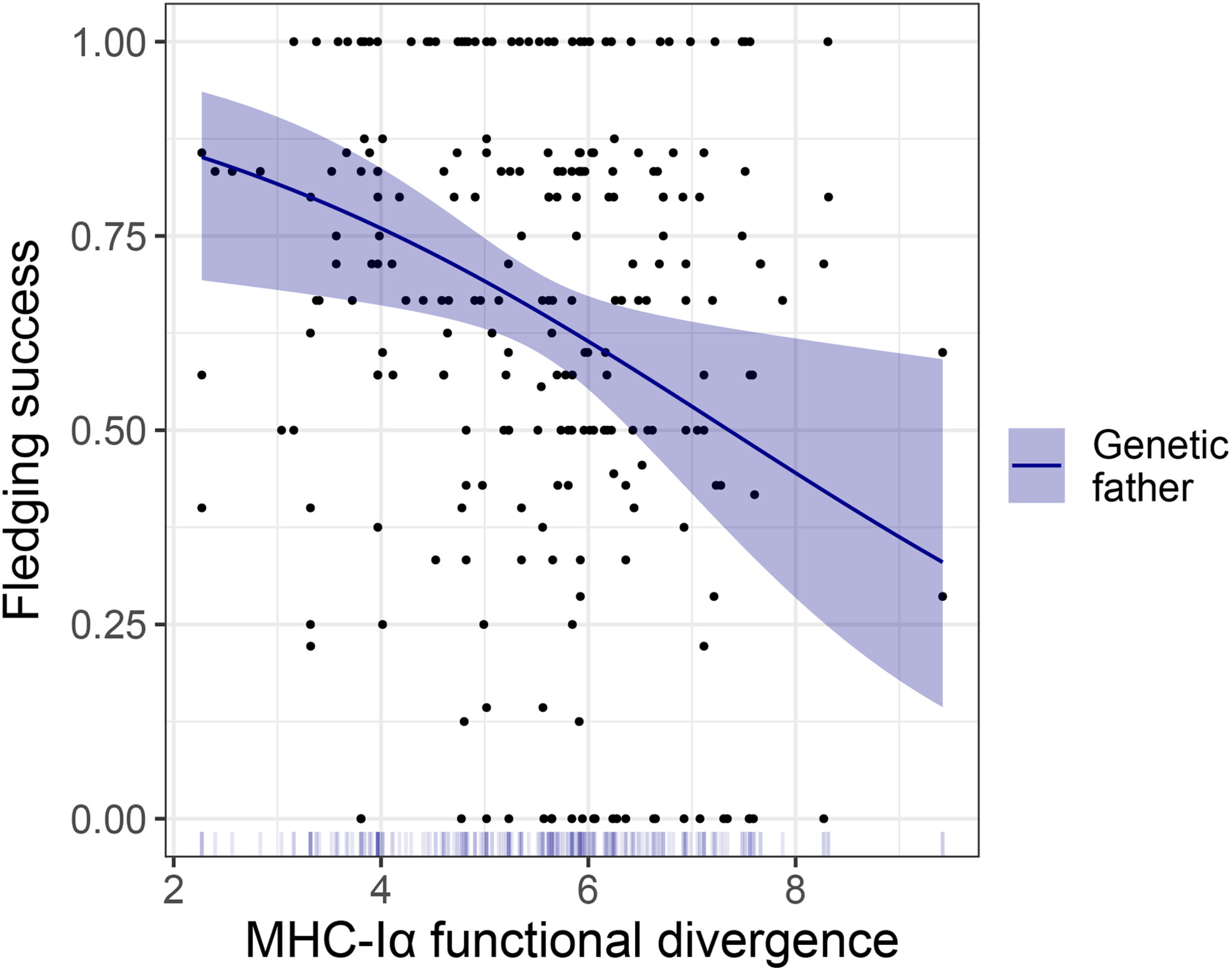
Using a long-term monitoring dataset of a wild barn owl population, we investigated how MHC diversity and supertypes are associated with clutch size and fledging success. We found a weak-to-moderate effect of the MHC diversity and specific supertypes of the fathers on the fledging success but not on the clutch size. We showed that the associations between MHC diversity and reproductive success remain scarce and of complex interpretation in the barn owl.
Predicting the potential distribution of 12 threatened medicinal plants on the Qinghai-Tibet Plateau, with a maximum entropy model
- First Published: 15 February 2024
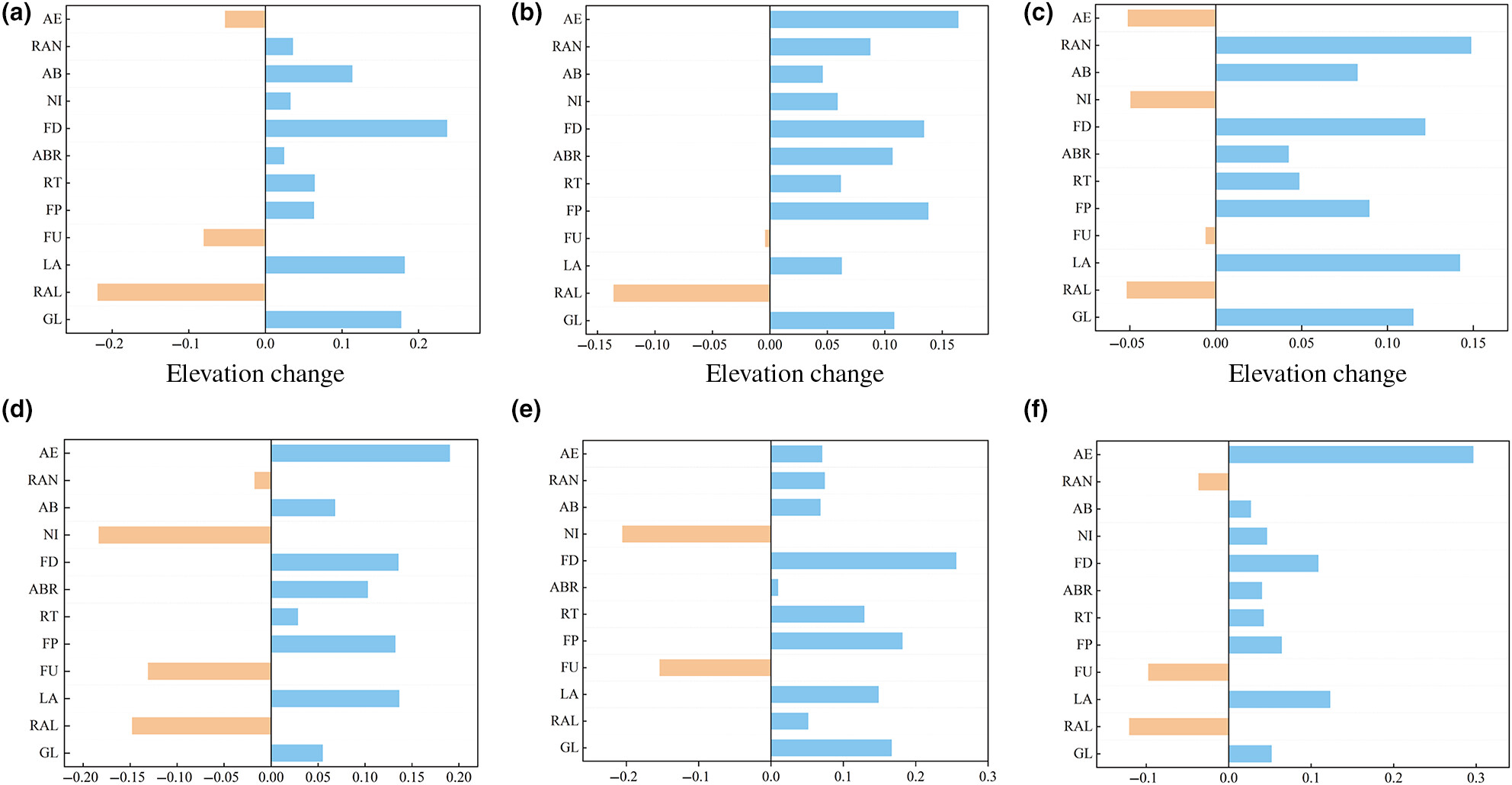
In this study, the MaxEnt model was used to predict the potential suitable area of 12 threatened medicinal plants in the QTP (Qinghai-Tibet Plateau) under the current and future (2050s, 2070s) three climate scenarios (RCP2.6, RCP4.5, RCP8.5). We found that the climatically suitable habitats for the threatened medicinal plants were primarily found in the eastern, southeast, southern, and some parts of the central regions on the QTP. Moreover, 25% of the threatened medicinal plants would have reduced suitable habitat areas within the next 30–50 years in the different future global warming scenarios. The climatic suitable habitat for 50% of the threatened medicinal plants would migrate to higher altitudes or higher latitudes regions.
Body mass, temperature, and pathogen intensity differentially affect critical thermal maxima and their population-level variation in a solitary bee
- First Published: 15 February 2024
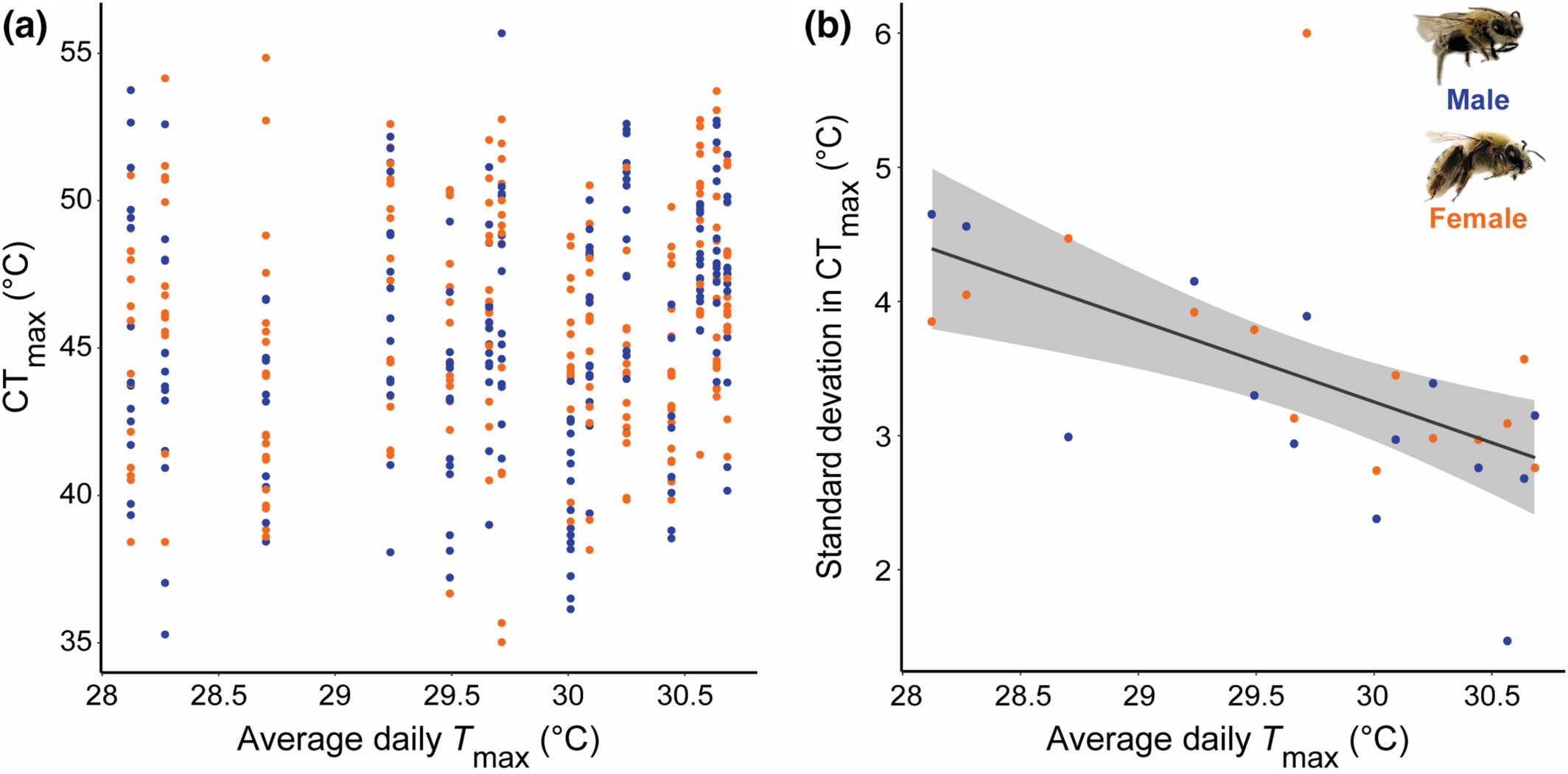
This study evaluates how body mass, local climate, and pathogen intensity influence heat tolerance and its population-level variation among individuals of the solitary bee Xenoglossa pruinosa. We did not find evidence of microclimate predicting mean heat tolerance in X. pruinosa, but we found that the population-level standard deviation in heat tolerance (CTmax) decreased by 0.72°C with every 1°C increase in maximum temperature. In addition, trypanosome parasite intensity negatively correlated with the CTmax of females, but not males. This study reveals that temperature may act as an environmental filter, and exemplifies the need to evaluate trends in heat tolerance variation within and between populations.
Environmental context shapes the relationship between grass consumption and body size in African herbivore communities
- First Published: 15 February 2024
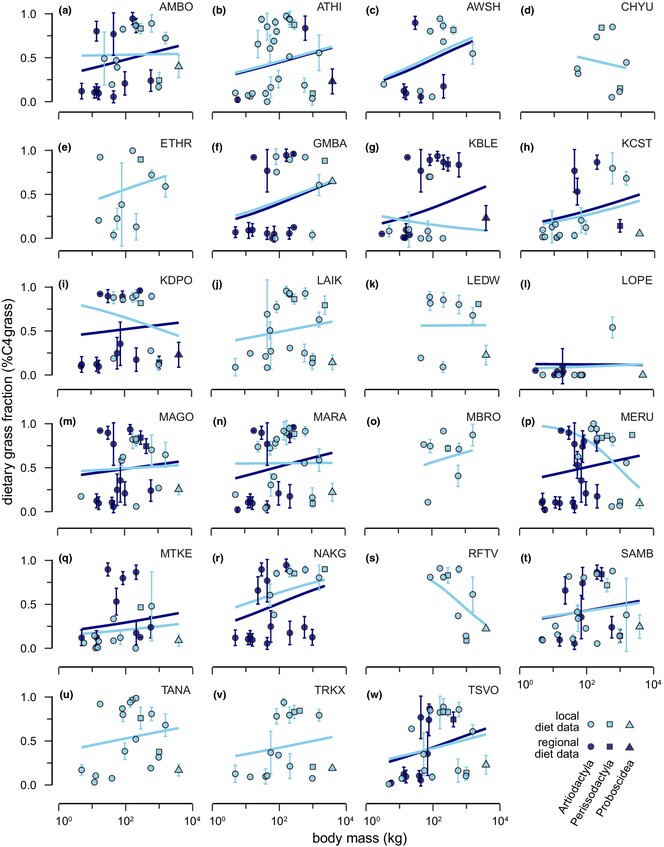
Though herbivore grass dependence has been shown to increase with body size across herbivore species, it is unclear whether this relationship varies between communities in relation to environmental variation. Here we use stable carbon isotope and community occurrence data to investigate how grass dependence scales with body size within herbivore communities throughout eastern and central Africa. We found that dietary grass fraction increased with body size for the majority of herbivore communities considered, but the magnitude of this relationship varied considerably with environmental context, underscoring the fact that, though general rules appear to govern herbivore foraging ecology, some aspects of foraging behavior are indeed dynamic.
Potential extinction cascades in a desert ecosystem: Linking food web interactions to community viability
- First Published: 15 February 2024
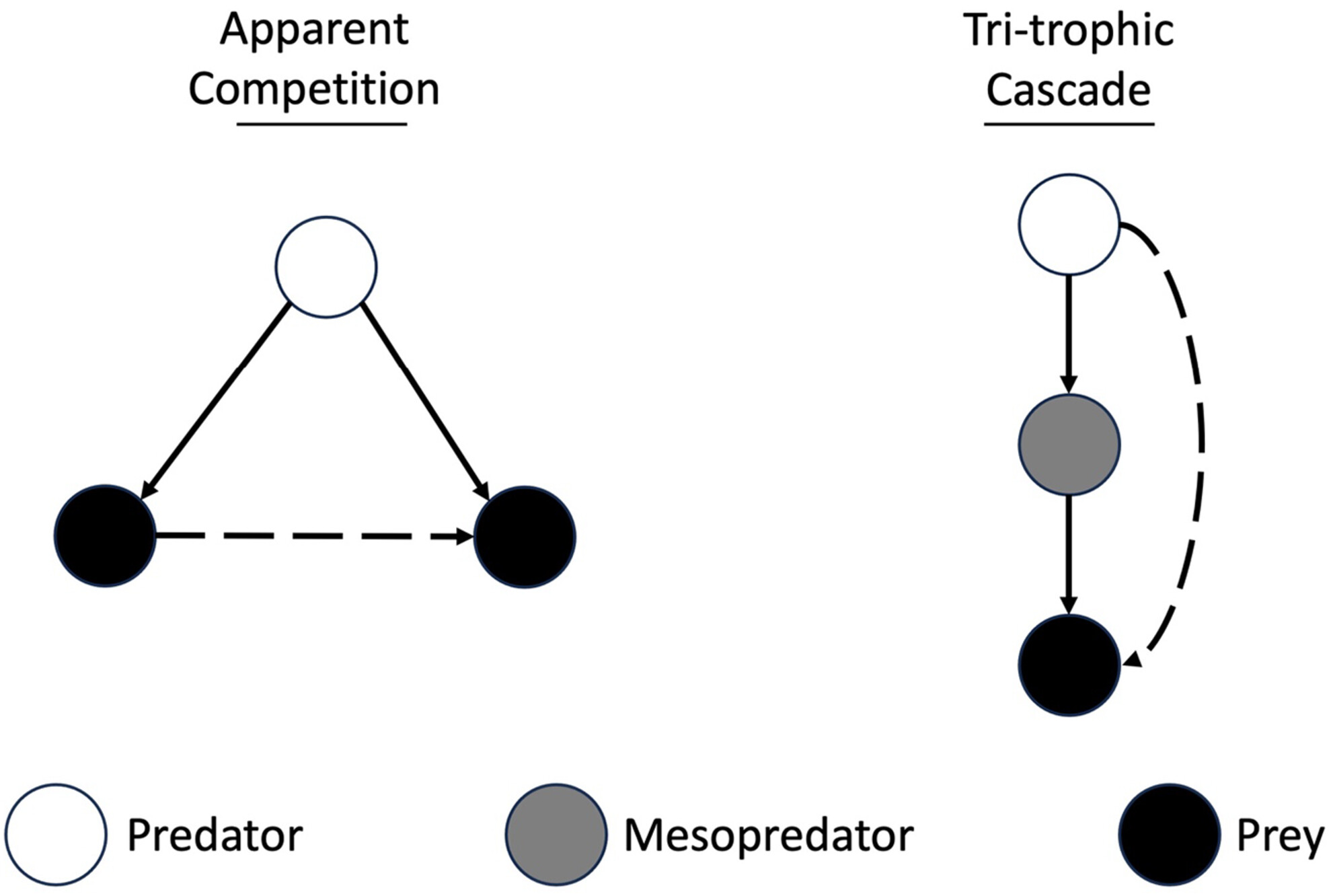
This study explores the potential cascading effects of bird extinctions on the Mojave Desert terrestrial community compared to losses of mammals and lizards. Bird species, which are already disappearing from the area, showed relatively low impacts on the modeled network compared to mammal or reptile loss. Avian extinction cascades with year-long resident birds resulted in more secondary extinctions than cascades involving all bird species, with the network's high interconnectivity among avian species enhancing comparative resistance to bird losses.
Assessing long-term diatom changes in sub-Arctic ponds receiving high fluxes of seabird nutrients
- First Published: 16 February 2024
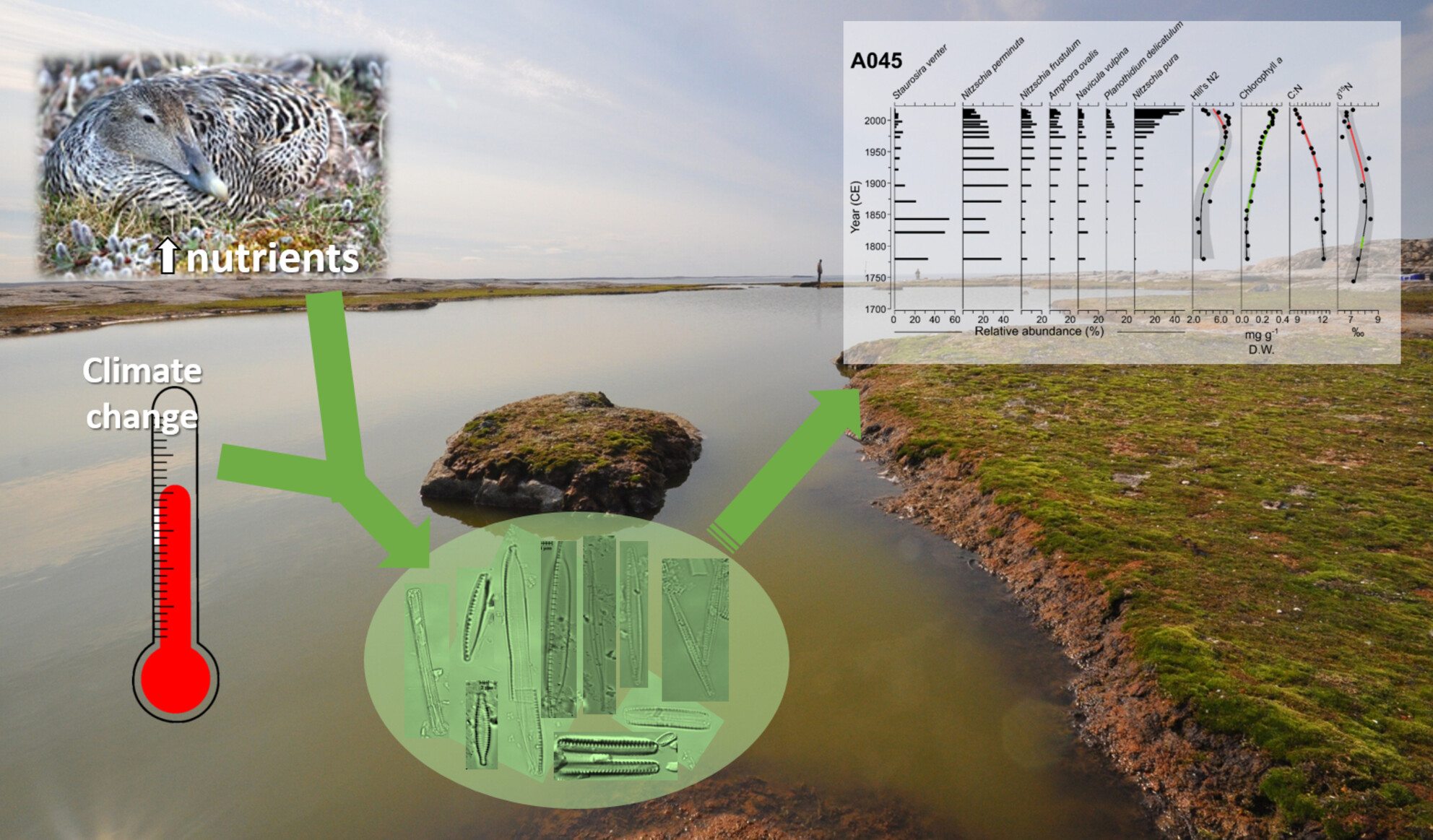
We document diverse epiphytic diatom assemblages to the base of all sediment cores, which is in marked contrast to seabird-free Arctic ponds—these oligotrophic sites typically record epilithic diatom flora prior to recent warming. Diatoms are likely responding indirectly to seabird nutrients via habitat as nutrients promote the growth of mosses supporting epiphytic diatom communities. Changes in sedimentary chlorophyll a were not consistently synchronous with large changes in ẟ15N values, suggesting that primary production in ponds is not responding linearly to changes in seabird-derived nitrogen.
Acoustic features as a tool to visualize and explore marine soundscapes: Applications illustrated using marine mammal passive acoustic monitoring datasets
- First Published: 21 February 2024
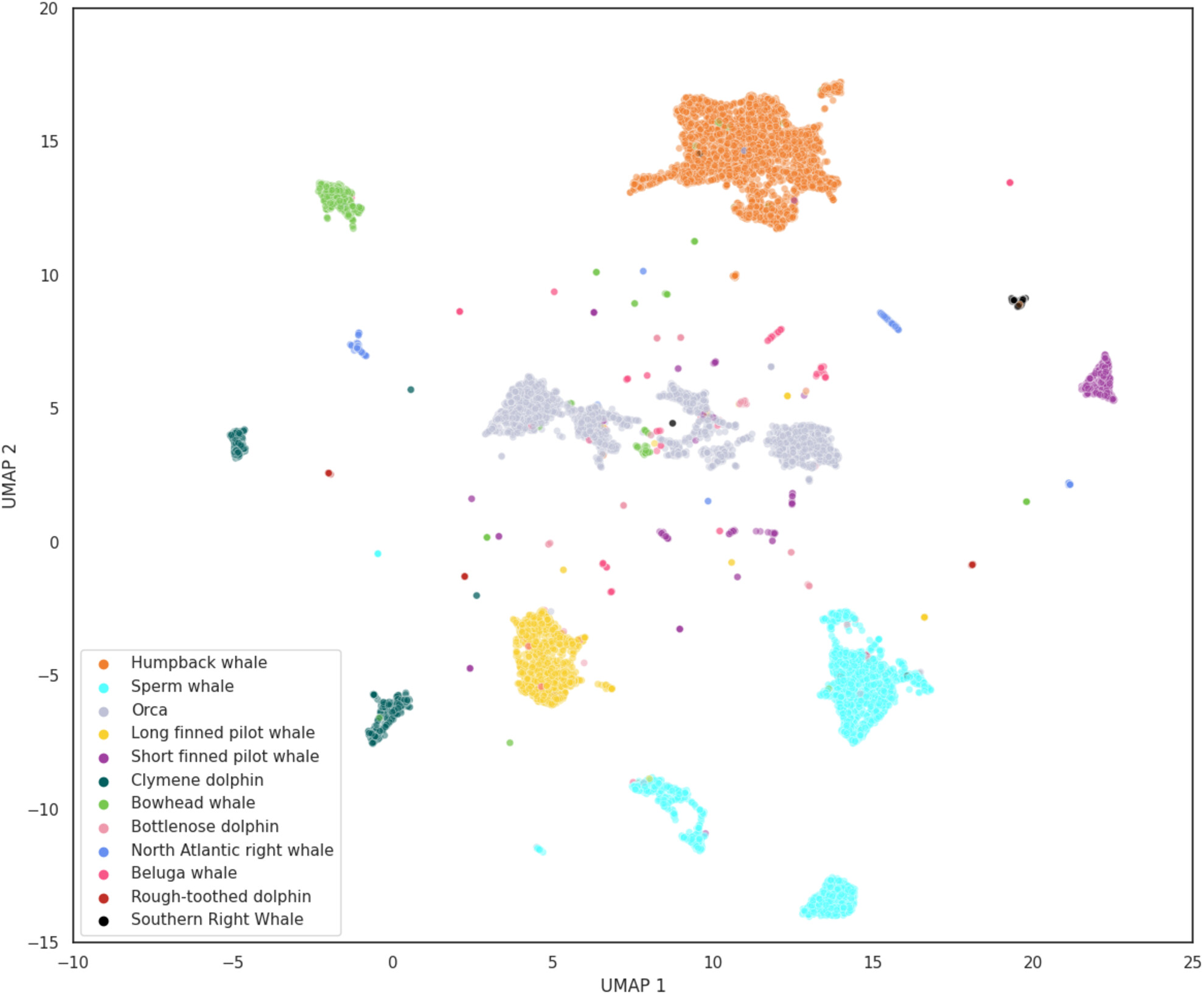
Our study explores the use of VGGish acoustic features and UMAP dimensionality reduction for the analysis of marine soundscapes. We combine pre-trained acoustic classification models, dimensionality reduction (UMAP), and balanced random forest algorithms to demonstrate how machine-learned acoustic features capture different aspects of the marine environment.
Linked selection and the evolution of altruism in family-structured populations
- First Published: 16 February 2024
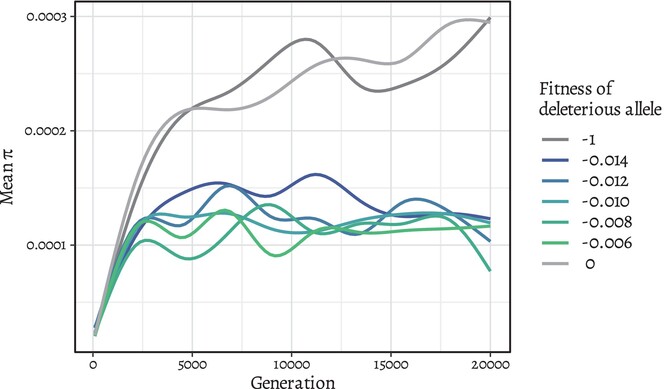
Very few studies have explored how linked selection, or selection at loci neighboring an altruism locus, impacts the evolution of altruism. We used population genetic simulations to study how negative selection at linked loci, or background selection, affects the evolution of altruism. When altruism occurs between full siblings, we found that background selection has the same effect on altruistic genes in family-structured populations as it does on other, nonsocial, genes.
Mapping endemic freshwater fish richness to identify high-priority areas for conservation: An ecoregion approach
- First Published: 16 February 2024
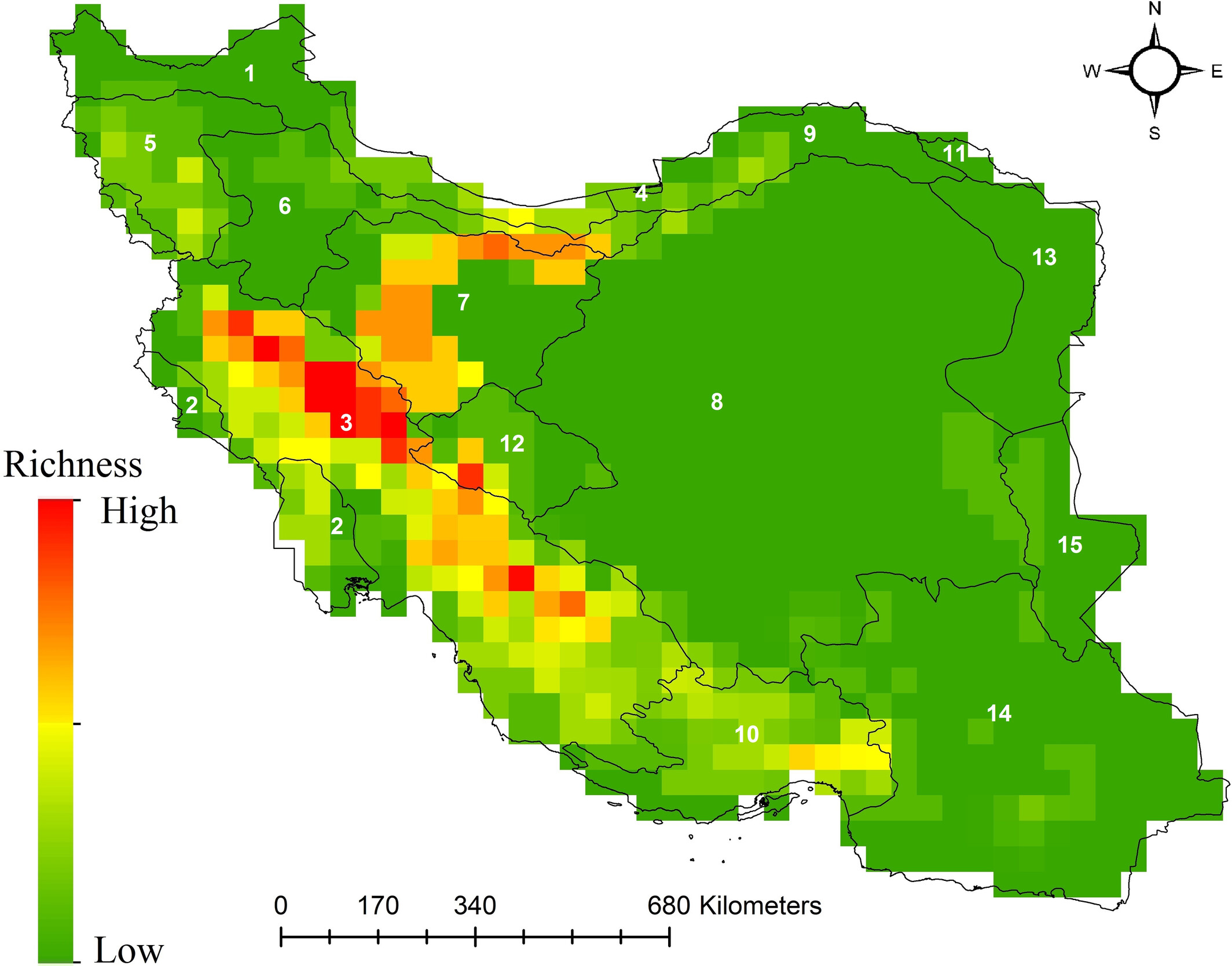
Iran's freshwater ecosystems are home to 85 endemic fish species. By analyzing distribution records and using a generalized linear model, the researchers identified the Zagros Mountains as having the highest endemic fish richness, followed by a moderate level between the Zagros and Alborz Mountains. They found that precipitation and precipitation change since the Last Glacial Maximum were the key factors influencing fish richness. These findings highlight the importance of prioritizing conservation efforts in the identified areas of high species richness for the protection of Iran's freshwater fish.
Genomics reveals repeated landlocking of diadromous fish on an isolated island
- First Published: 16 February 2024
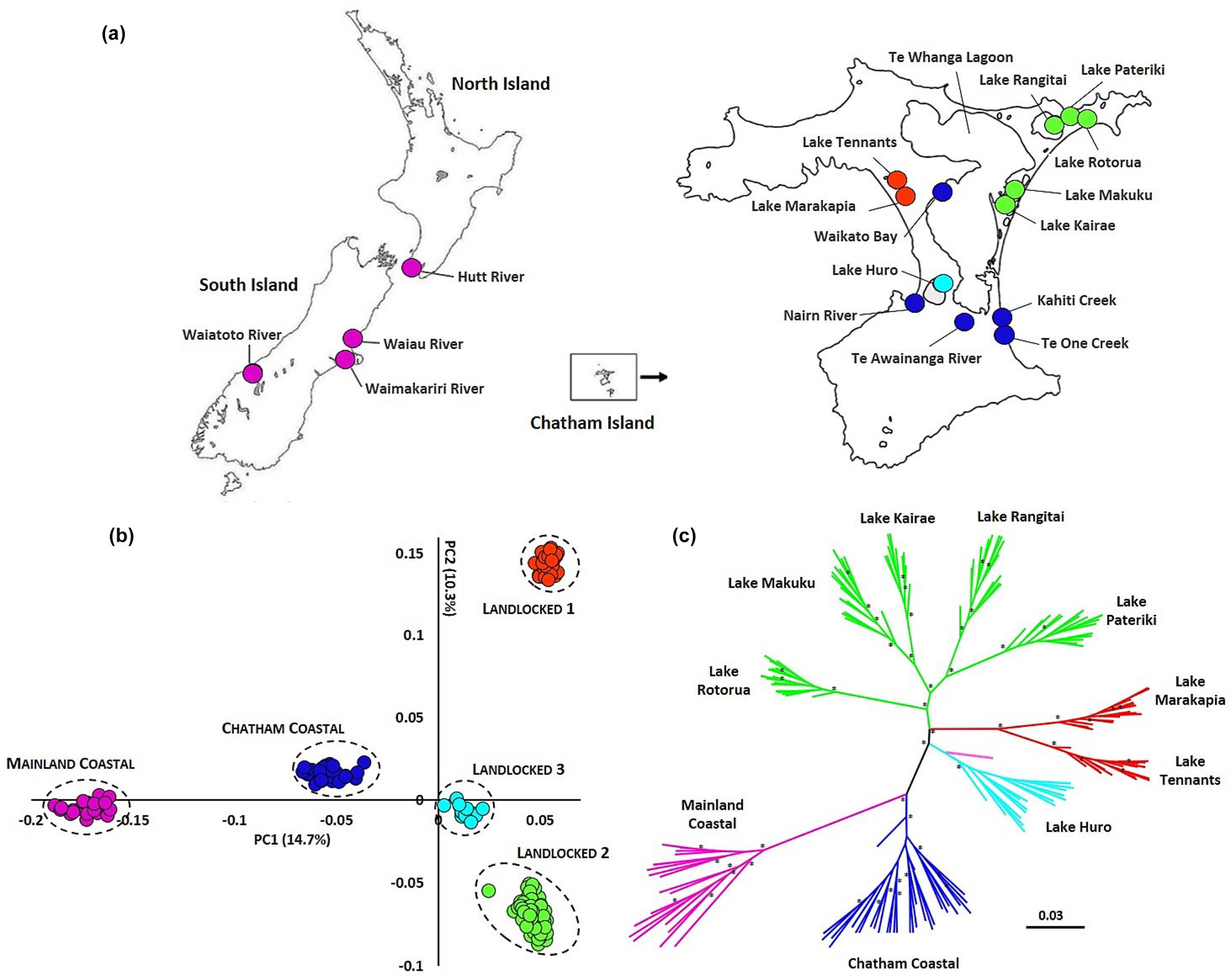
Our genomic analysis, based on 21,135 SNPs across 169 individuals, revealed that the Chatham Island smelt was genomically distinct from the mainland New Zealand fish, consistent with a single ancestral colonisation event of Chatham Island in the Pleistocene. Significant genetic structure was also evident within the Chatham Island smelt, with a diadromous Chatham Island smelt group, along with three geographically structured landlocked groups. Coalescent demographic analysis supported three independent landlocking events, with this loss of diadromy significantly pre-dating human colonisation.
Developmental temperature, more than long-term evolution, defines thermal tolerance in an estuarine copepod
- First Published: 20 February 2024
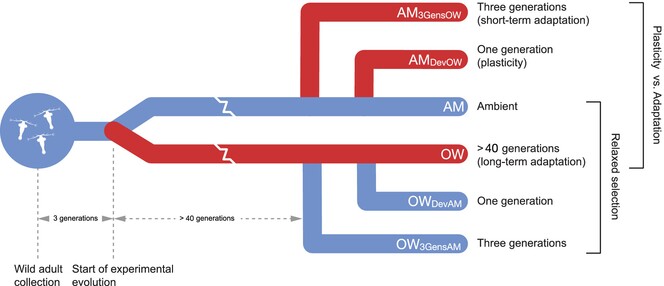
Copepods collected in the Long Island Sound were exposed to two different temperature conditions, ambient (18°C) and ocean warming (22°C). Copepods were in experimental conditions for one, three, and >40 generations before assessing temperature and salinity tolerance. Results highlight the importance of plasticity in defining the temperature response of copepods.
Insights into the spatial ecology of severely injured free-living felids: Iberian lynx, bobcat, and snow leopard
- First Published: 16 February 2024
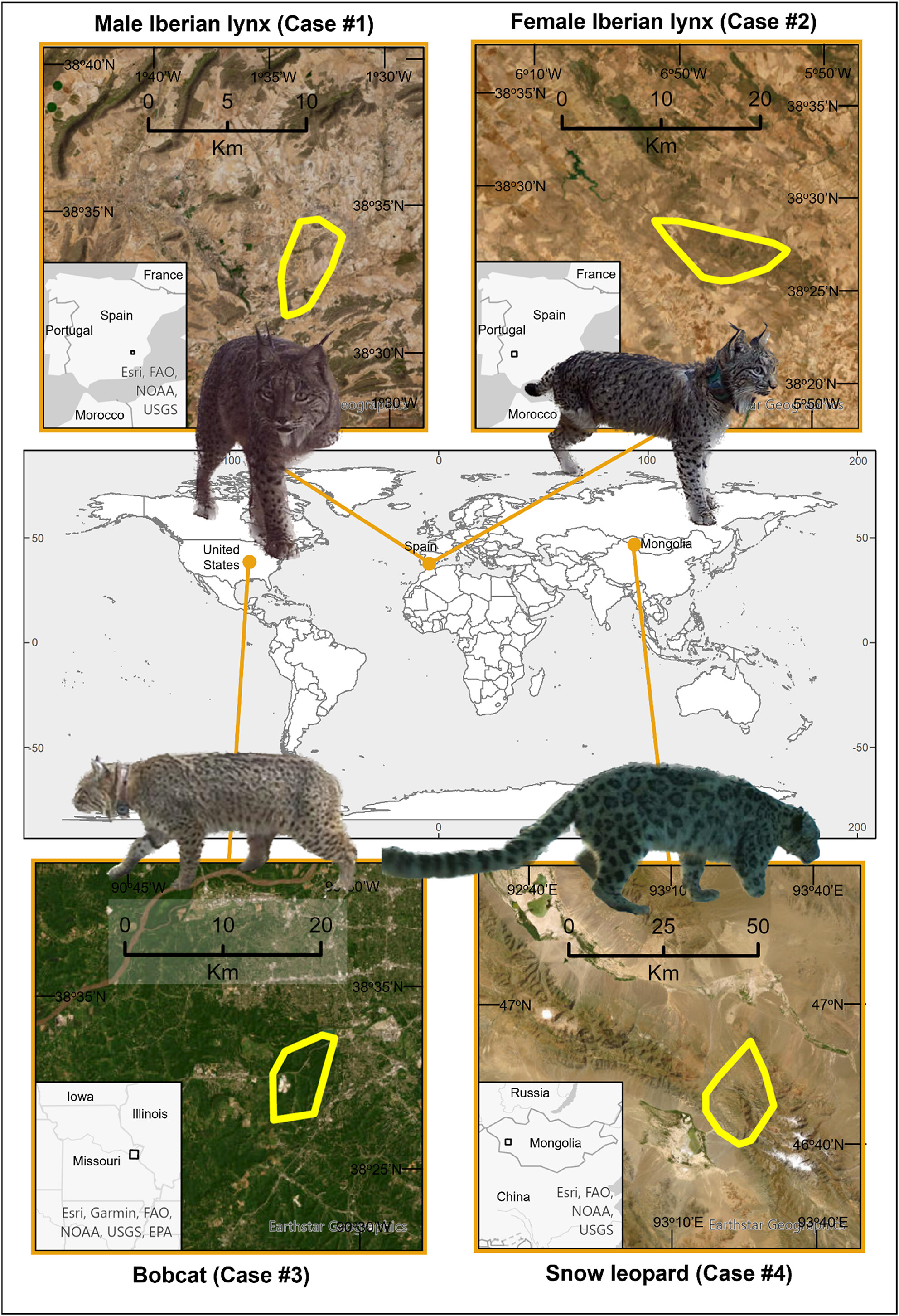
As a result of anthropogenic pressures, wild felids worldwide may suffer from severe lesions that may impact their overall fitness, behavior, and/or survival. Despite the severity of skeletal trauma that resulted in limb amputation, two Iberian lynxes, one bobcat, and one snow leopard tagged with telemetry collars didn't show differences in movement patterns compared with healthy conspecifics, highlighting the resilience, adaptation, and plasticity of these individuals.
Simultaneous species detection and discovery with environmental DNA metabarcoding: A freshwater mollusk case study
- First Published: 16 February 2024
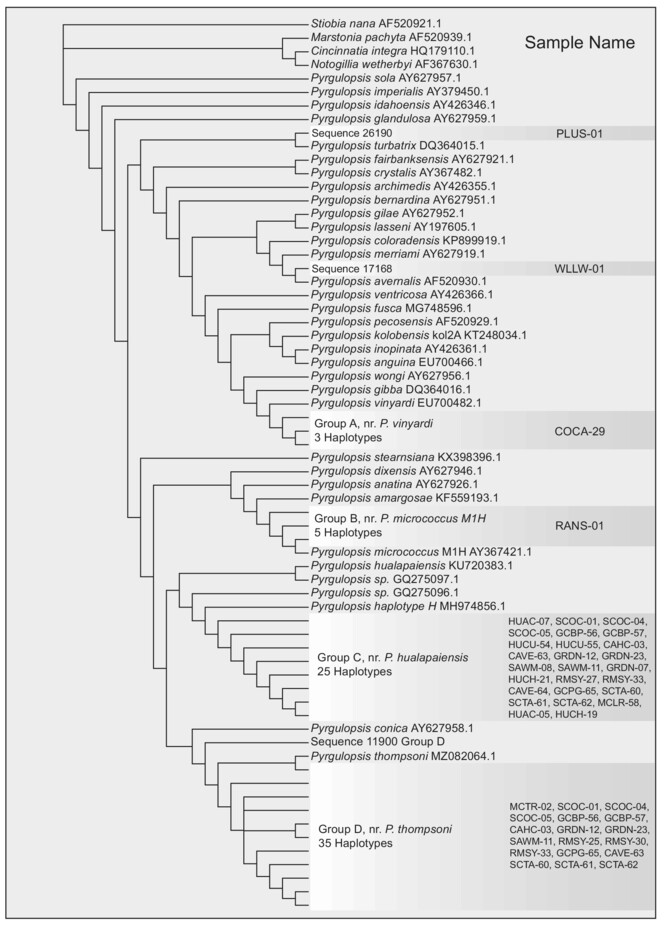
Springsnails of the genus Pyrgulopsis (Family: Hydrobiidae) are prevalent throughout the western United States where >140 species have been described. Many of the described species are narrow endemics known from a single spring or locality, and it is believed that there are likely many additional species which have yet to be described. We developed a metabarcoding strategy that uses modified COI primers for sensitive detection of Pyrgulopsis sp. springsnails that can be rapidly deployed at landscape scales for use by land managers and conservation efforts.
Sexual dichromatism in the fur of a bat: An exploration of color differences and potential signaling functions
- First Published: 16 February 2024
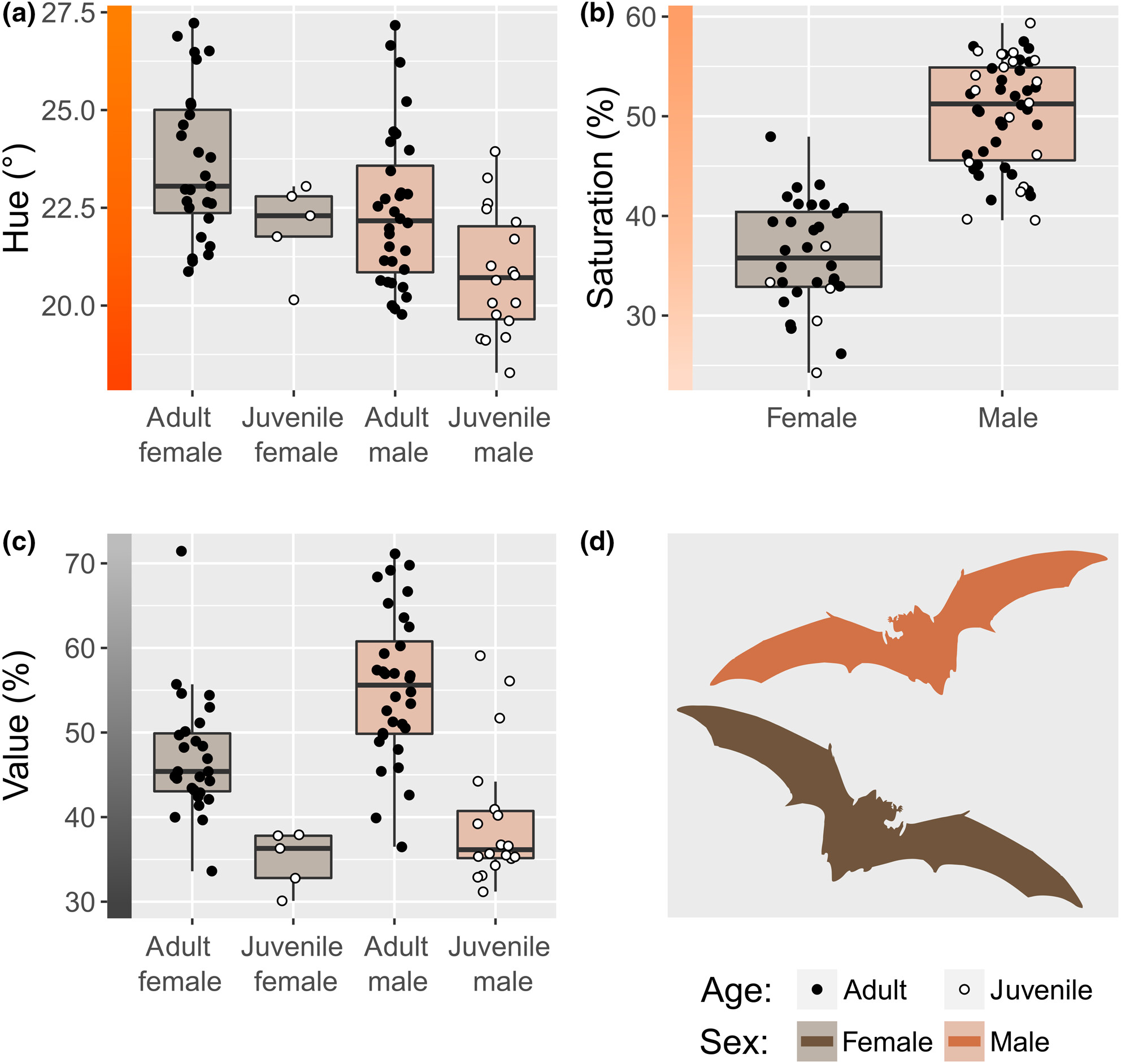
We quantified the fur color of live eastern red bats (Lasiurus borealis) and demonstrated that they are sexually dichromatic; males had redder, more saturated, and lighter pelages than females. Additionally, juveniles were darker than adults. In an exploratory post-hoc analysis, we showed that body mass (i.e., an index of body condition in bats) strongly predicted fur color, revealing the potential for color to be a sexual signal in this species.
Effects of landscape metrics on scorpion (Arachnida: Scorpiones) assemblage in a tropical urban ecosystem
- First Published: 16 February 2024
Drivers of desert plant beta diversity on the Qinghai–Tibet plateau
- First Published: 20 February 2024

The study investigated the beta diversity of plant communities in the Qinghai–Tibet Plateau desert, revealing that turnover components predominantly shape beta diversity. Environmental distance exerted a greater influence than geographic distance, with soil factors, such as total potassium content, significantly impacting beta diversity. The findings underscore the crucial role of environmental sorting in shaping plant communities and emphasize the importance of conserving diverse environmental conditions to maintain the region's plant diversity.
Bison and bighorns: Assessing the potential impacts of reintroducing a large herbivore to a mountainous landscape
- First Published: 26 February 2024
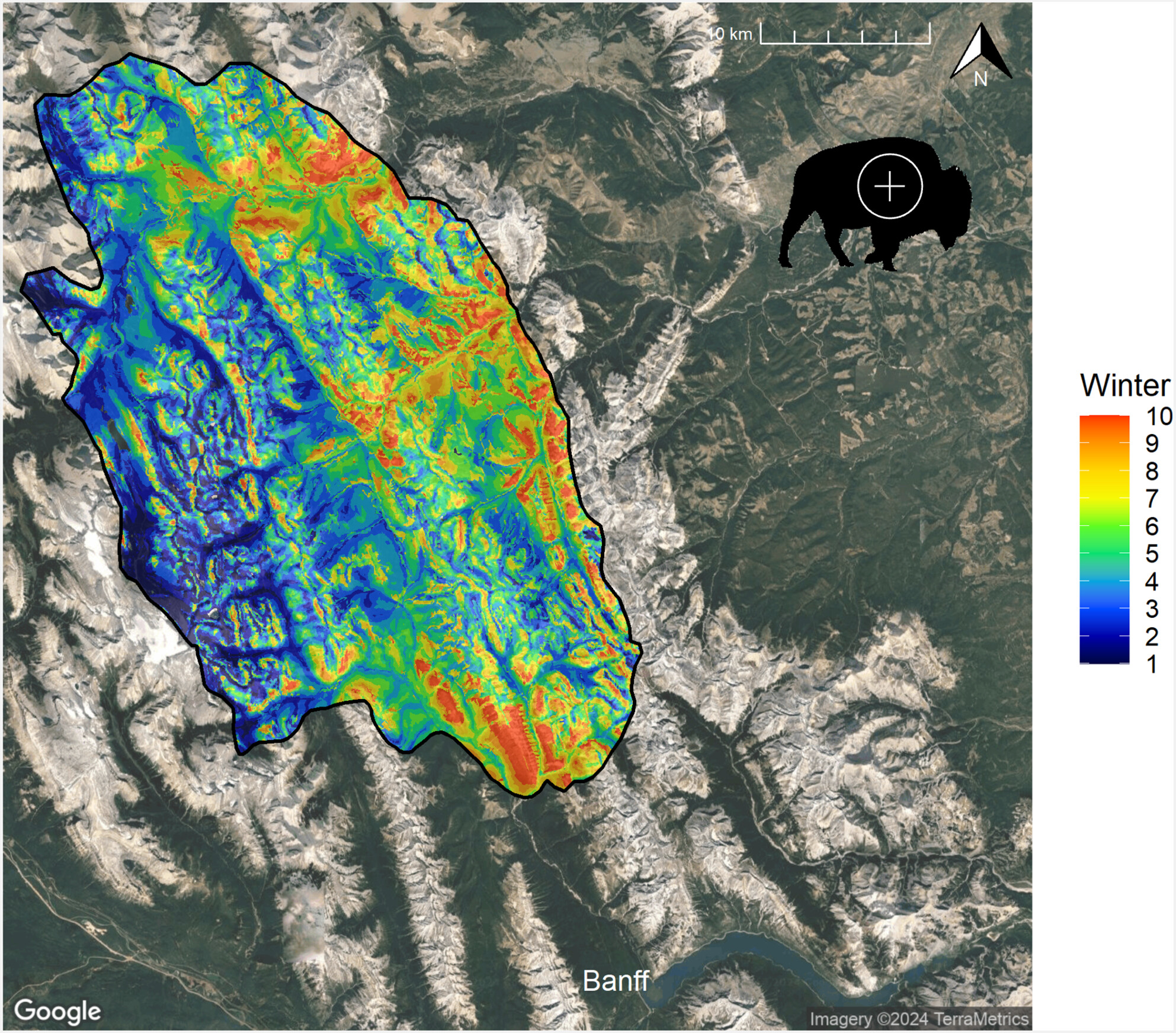
Reintroducing North America's largest land mammal can have significant ecological impacts, particularly on the species they interact with. Using GPS data, we analyzed space and resource use of a recently reintroduced herd of plains bison to Banff National Park, to investigate potential interactions with another co-occurring grazing ungulate, the Rocky Mountain bighorn sheep. Comparing the potential for interspecific mechanisms, our study provides further evidence, that where suitable habitat exists, co-existence between lost species assemblages may be achieved meeting social and ecological goals.
Trophic lengthening triggered by filamentous, N2-fixing cyanobacteria disrupts pelagic but not benthic food webs in a large estuarine ecosystem
- First Published: 20 February 2024
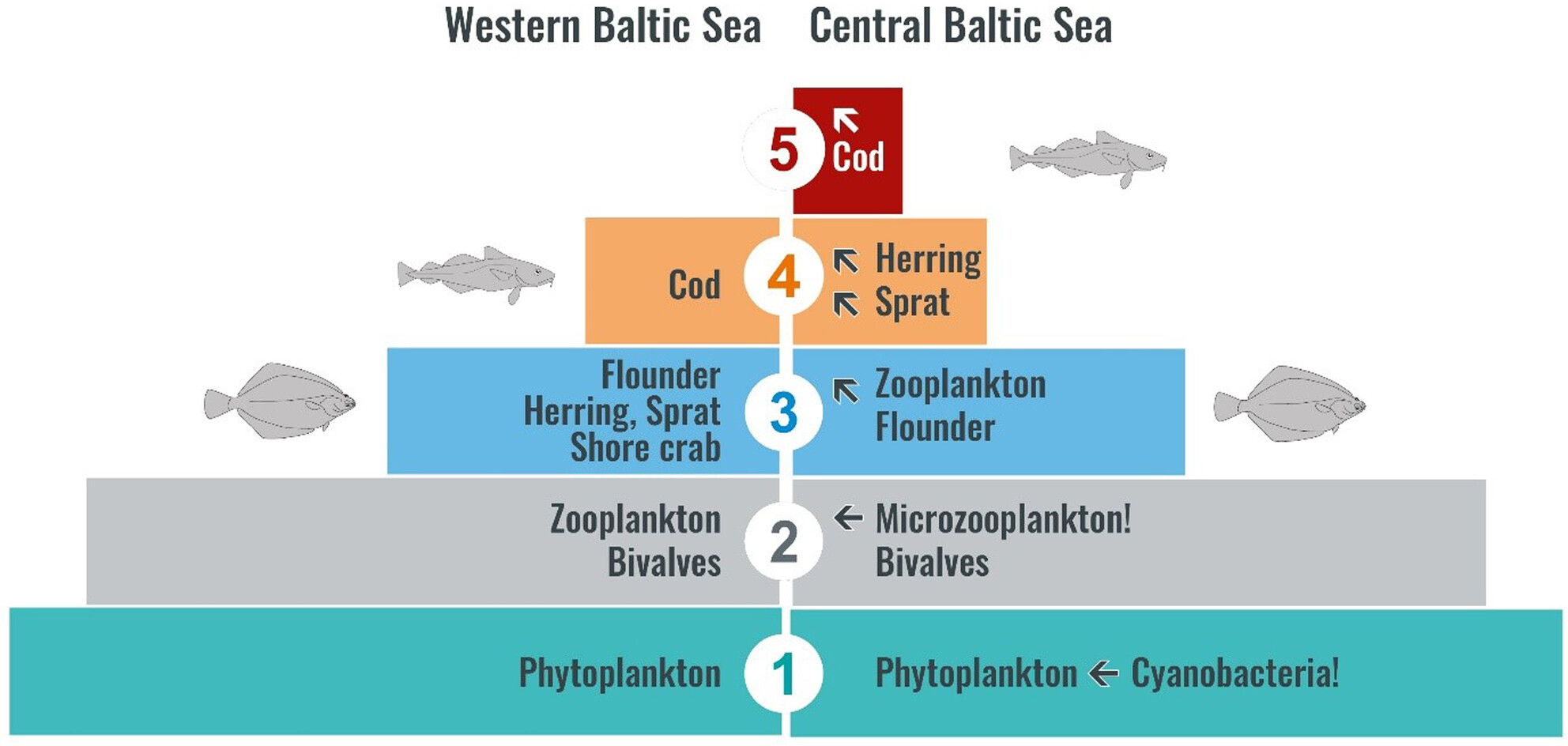
Trophic pyramid of pelagic and benthic food webs in the western (left) and central Baltic Sea (right) without and with impacts of filamentous N2-fixing cyanobacteria (FNC) blooms and massive influence of the microbial system, respectively, including the trophic positions (TPs) of the key species measured in this study, cod and flounder. Only the pelagic food web in the central Baltic Sea is affected by the carry-over effect of trophic lengthening (increase in TP compared to the local reference TP value and global mean TP value) at the dietary base due to the growth of FNCs and associated microzooplankton and influence of the microbial System, which together cause increased TPs in the pelagic food web up to the level of cod. In contrast, the benthic food web is largely unaffected by FNC-triggered trophic lengthening. FNC-triggered trophic lengthening inevitably leads to large losses of thermal and chemical energy in between primary producers and zooplankton that propagate through the pelagic food web in the central Baltic Sea.
Nutrients from spawning salmon influence leaf area, tissue density, and nitrogen-15 in riparian plant leaves
- First Published: 20 February 2024
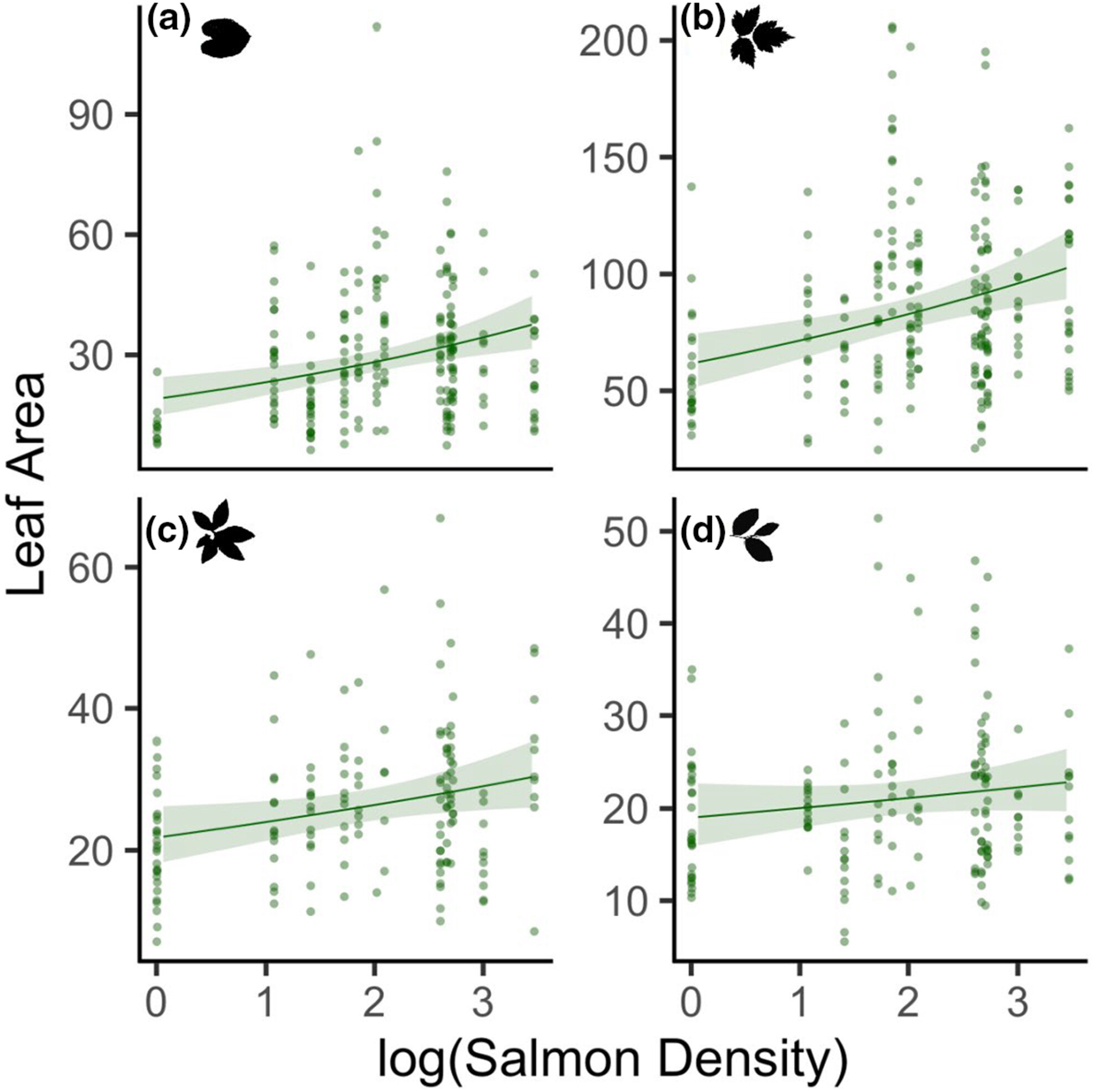
Salmon migrations on the North Pacific coasts provide these kinds of nutrient subsidies from senescent fish at the end of their life cycle, which can have significant ecological effects on terrestrial species, such as plants. We found that multiple plant species had larger leaves and higher foliar salmon-derived nitrogen on streams with a higher spawning salmon density.
Thermoregulatory response in juvenile Hippocampus erectus: Effect of magnitude and rate of thermal increase on metabolism and antioxidative defence
- First Published: 20 February 2024
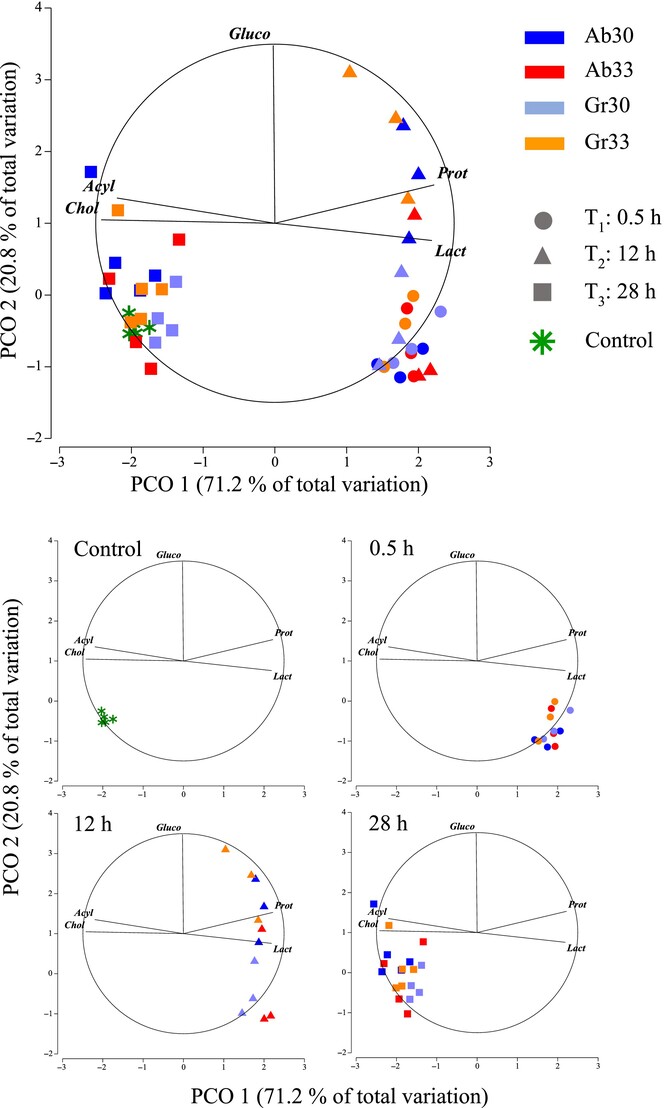
We selected a tropical population of Hippocampus erectus to describe the timing of the physiological and biochemical mechanisms in response to different magnitudes and rates thermal increase. A full thermoregulatory response was displayed within 0.5 h and all metabolite and antioxidant defence indicators had been restored to control levels (26°C) within 28 h of thermal exposure. These findings underline the sea horses' adaptive capacity to adjust to the rapid temporal fluctuations, but should not be interpreted as a robust shield against the deleterious effects of global warming on marine populations.
Body size and trophic structure explain global asymmetric response of tetrapod diversity to climate effects
- First Published: 20 February 2024
Oriental reed warblers retain strong egg recognition abilities during the nestling stage
- First Published: 20 February 2024
Resource asynchrony and landscape homogenization as drivers of virulence evolution: The case of a directly transmitted disease in a social host
- First Published: 20 February 2024
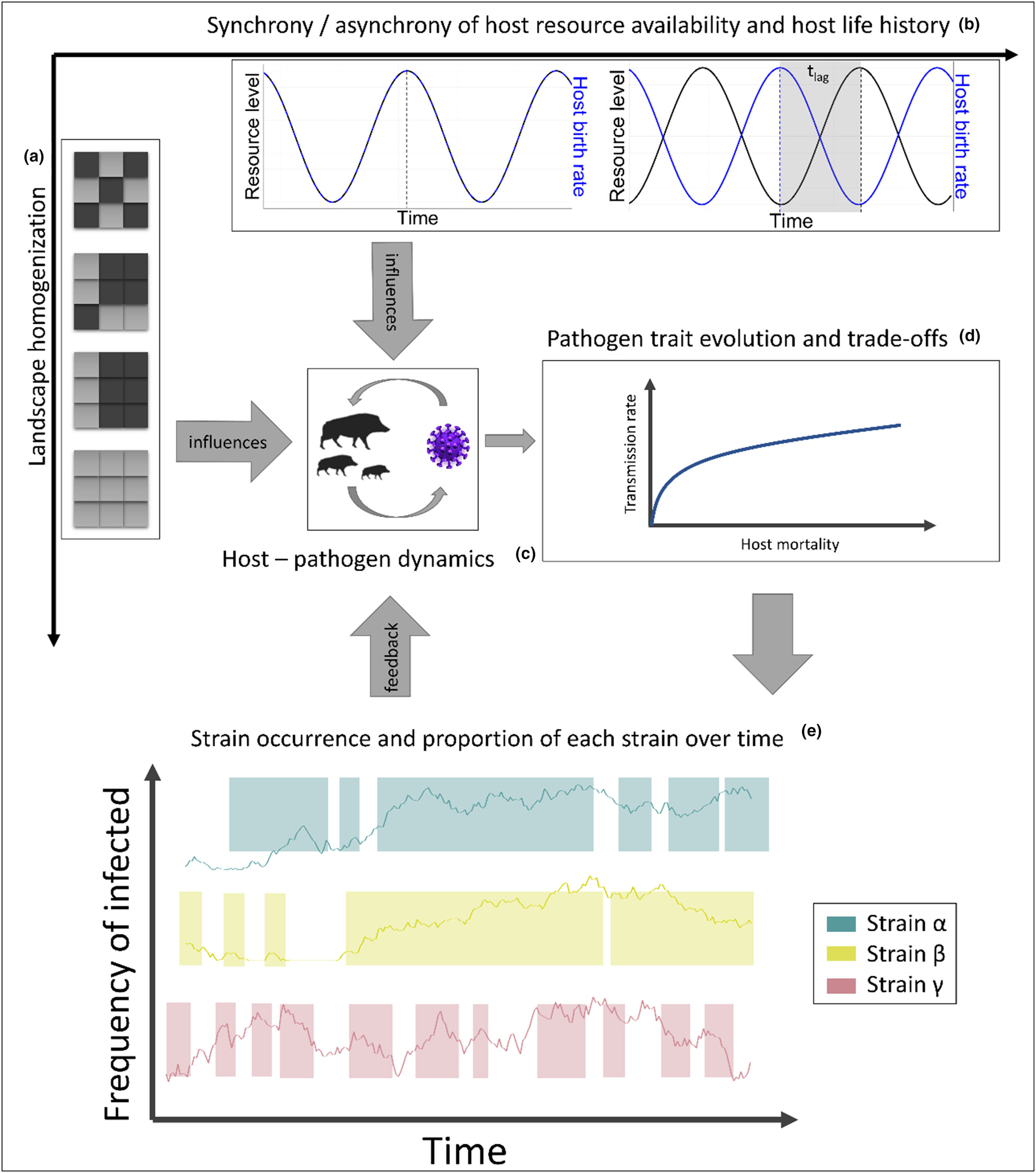
During disease outbreaks, pathogenic virulence is a key trait for successful spread. Global change comes with an increasing frequency of novel zoonotic diseases or disease outbreaks. Here, we use an individual-based host–pathogen model to study how global change drivers affect virulence in a directly transmitted evolving pathogen in a social host. Our results show an increase in pathogenic virulence as an effect of increasing landscape homogenization.
Pace and parity predict the short-term persistence of small plant populations
- First Published: 20 February 2024
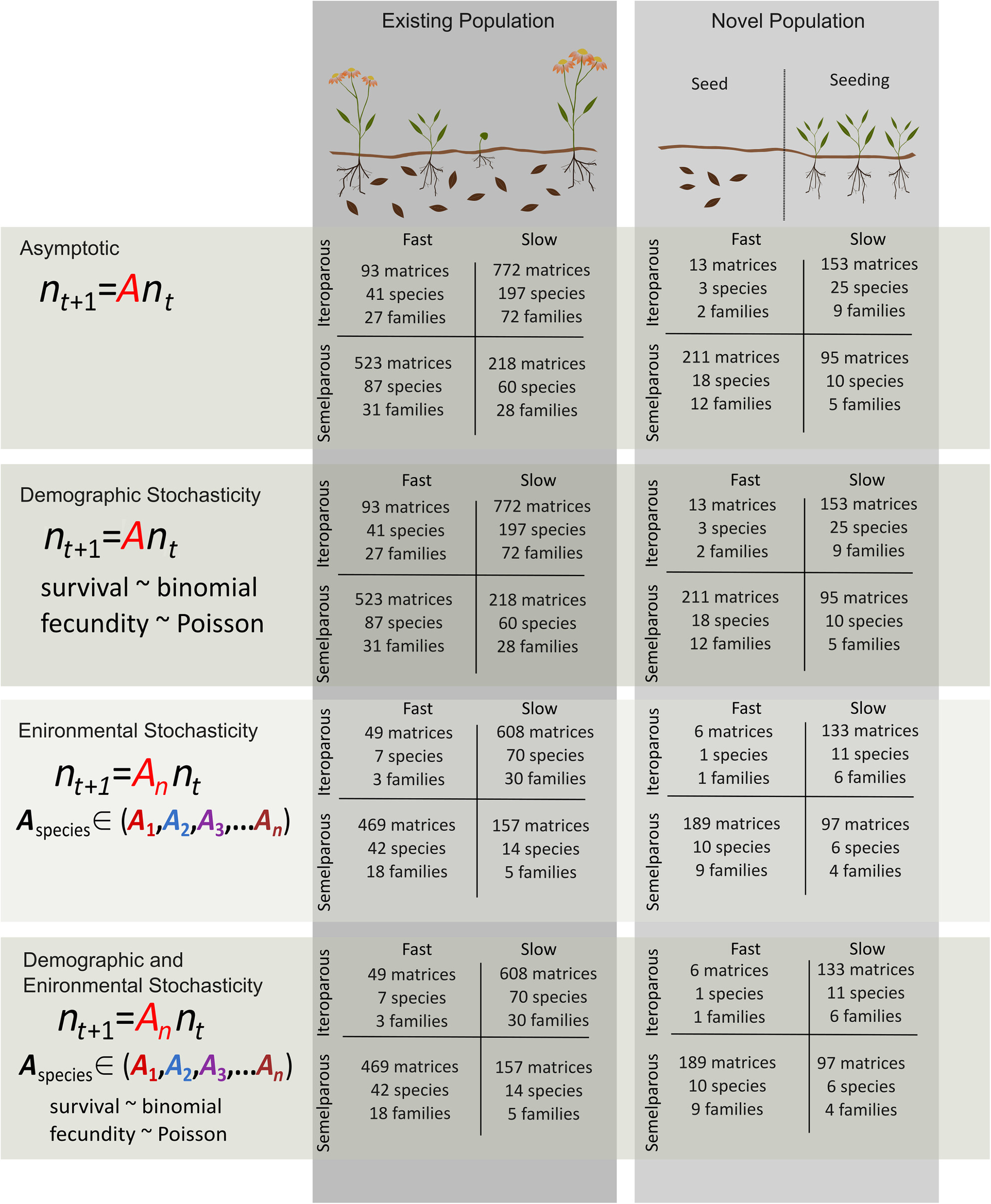
Through empirically parameterized matrix population models, we study the impact of life history (reproduction, pace), stochasticity (environmental, demographic), and population history (existing, novel) on the near-term population dynamics of finite populations of plant species. Among fast and slow pace and either a uniform or increasing reproductive intensity or short or long reproductive stage duration, slow, semelparous species are at the greatest risk of extinction. Our study highlights the importance of population structure, pace, and two distinct aspects of parity for predicting near-term extinction risk.
Coexistence mechanism of ecological specialists and generalists based on a network dimension reduction method
- First Published: 21 February 2024
Habitat diversification associated with urban development has a little effect on genetic structure in the annual native plant Commelina communis in an East Asian megacity
- First Published: 21 February 2024
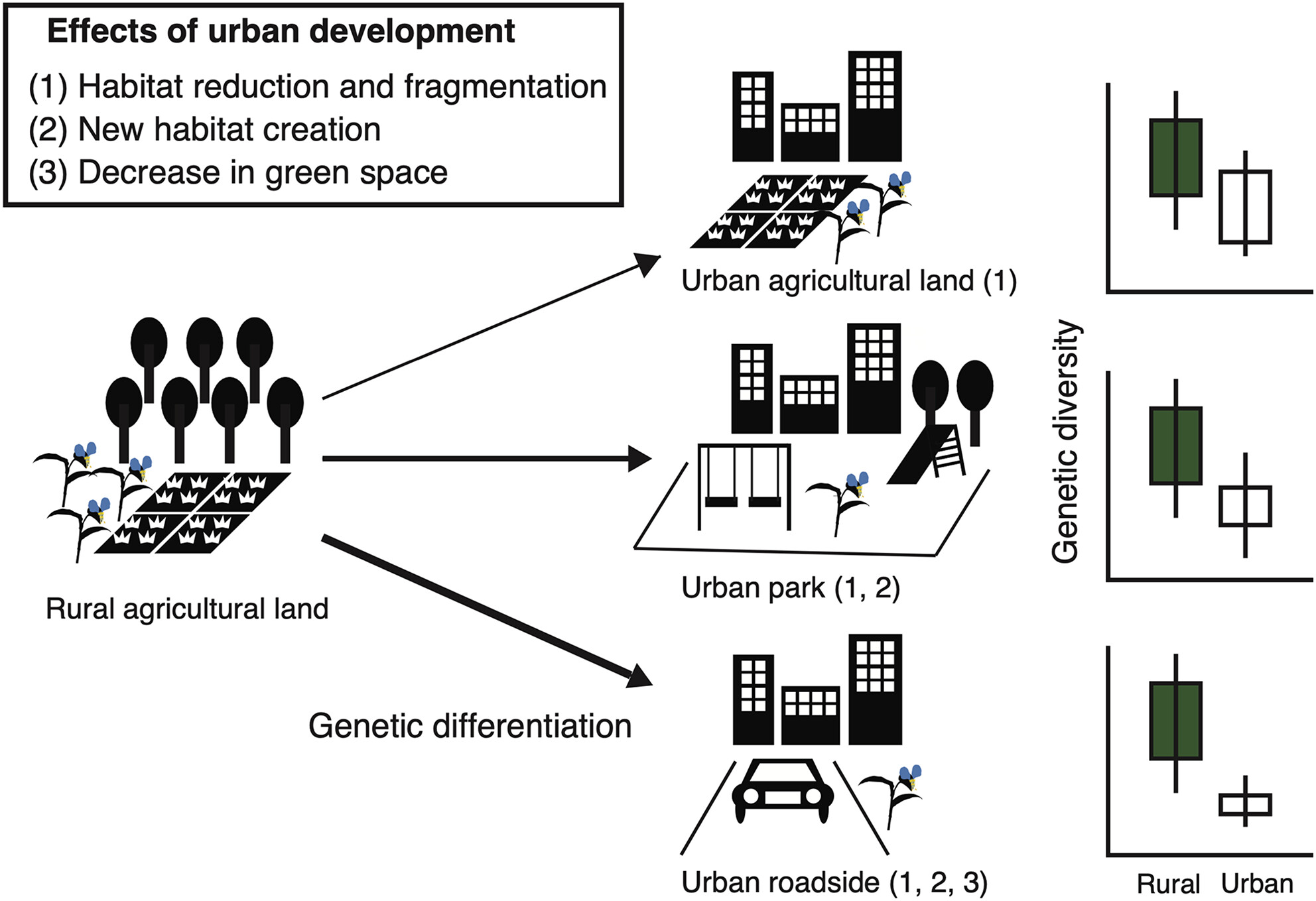
Our findings indicate that the establishment of diverse habitat types through urbanisation has no significant impact on genetic diversity and only a marginal effect on genetic structure in Commelina communis. This is likely attributed to its high selfing rate and its capacity to adapt to urban conditions.
The cumulative niche approach: A framework to assess the performance of ecological niche model projections
- First Published: 21 February 2024
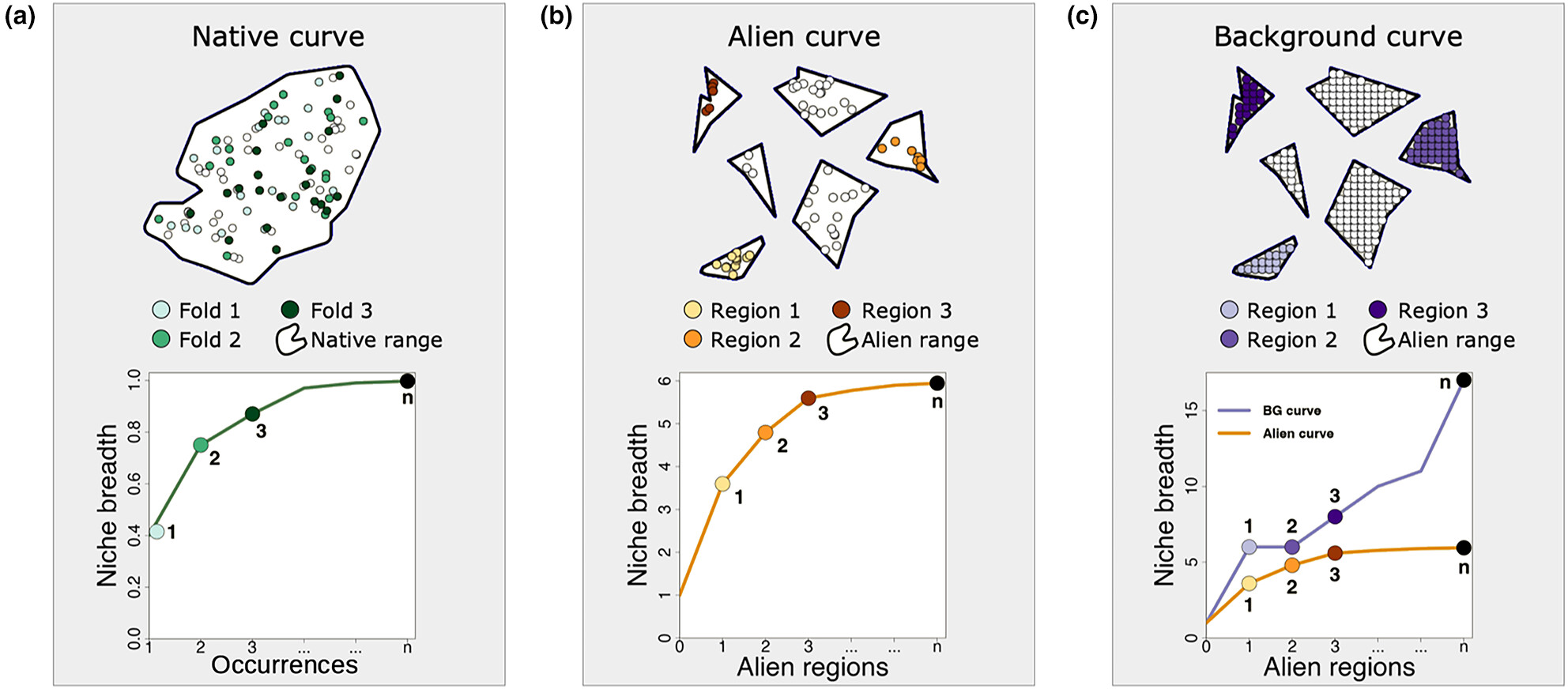
The Cumulative Niche Approach: a novel framework to estimate the predictive power of Ecological Niche Model projections. Our theoretical framework allows to quantify changes in the realised niche during invasion processes and to estimate the likely accuracy of model projections to new environmental conditions.
Species richness of Orthoptera declines with elevation while elevational range of individual species peaks at mid elevation
- First Published: 21 February 2024
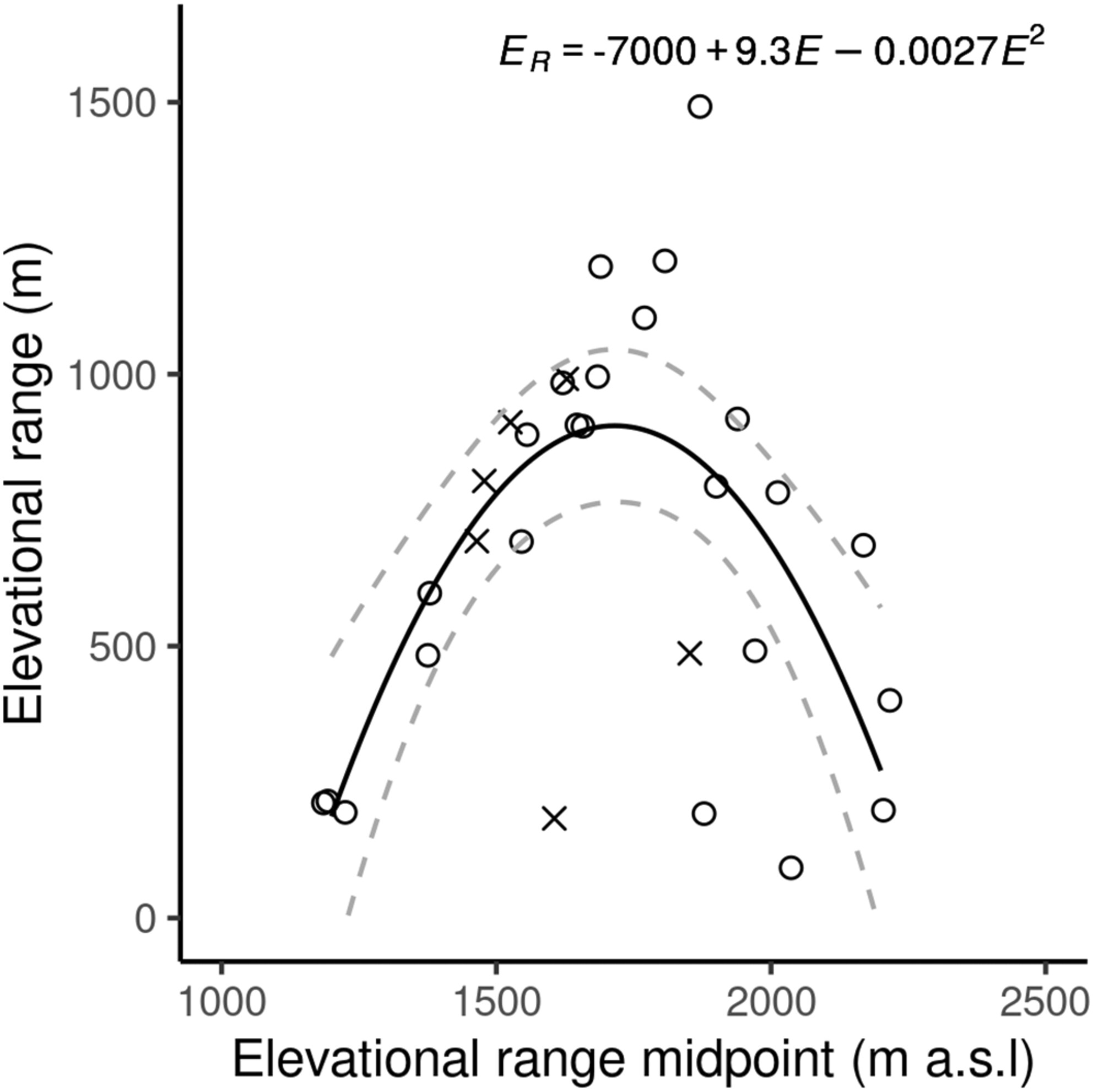
Understanding the distribution of organisms along elevational gradients across a range of latitudes and geographical areas is important to be able to inform conservation measures. Using Orthoptera in the Pyrenees as a study system, we found a decline in species richness with increasing elevation, but no evidence for Rapoport's elevational rule.
Evolution of sensitivity to warning cues from kin in plants with a structured population
- First Published: 21 February 2024
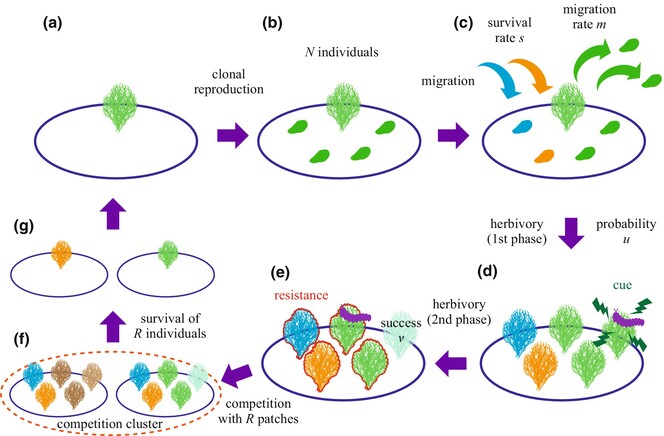
Plant individuals that are injured by herbivores release volatile chemicals, which induce receiver plants to express anti-herbivore resistance. Some plant species were known to represent kin specificity in the response, where the warning cues induce a higher level of resistance in a kin receiver than in a non-kin receiver. Why does the receiver become more sensitive to the cues sent by kin? To answer this question, we theoretically investigated mechanisms that drive the evolution of higher sensitivity to warning cues from kin.
Fungal communities associated with early immature tubers of wild Gastrodia elata
- First Published: 21 February 2024

Full myco-heterotrophic orchid Gastrodia elata Bl. is widely distributed in Northeast Asia, and previous research has not fully investigated the symbiotic fungal community of its early immature tubers. Illumina sequencing and a series of mainstream statistical analyses were utilized to compare symbiotic fungal communities in natural G. elata immature tubers and their habitats. Our results illustrate that the symbiotic fungal communities of immature G. elata tubers cannot be simply interpreted as subsets of the environmental fungal communities and the early growth was related to a small group of fungi, such as Sebacina, Thelephora, and Inocybe, which were also common mycorrhizal fungi from other orchids. Mycena, Auricularia, and Cryptococcus were unique fungal partners of G. elata, and many new species have yet to be discovered. Possible symbiotic Mycena should be M. plumipes and its sibling species.
Spatial distribution dynamics for Epimedium brevicornum Maxim. from 1970 to 2020
- First Published: 21 February 2024
Limited effects of population age on the genetic structure of spatially isolated forest herb populations in temperate Europe
- First Published: 26 February 2024
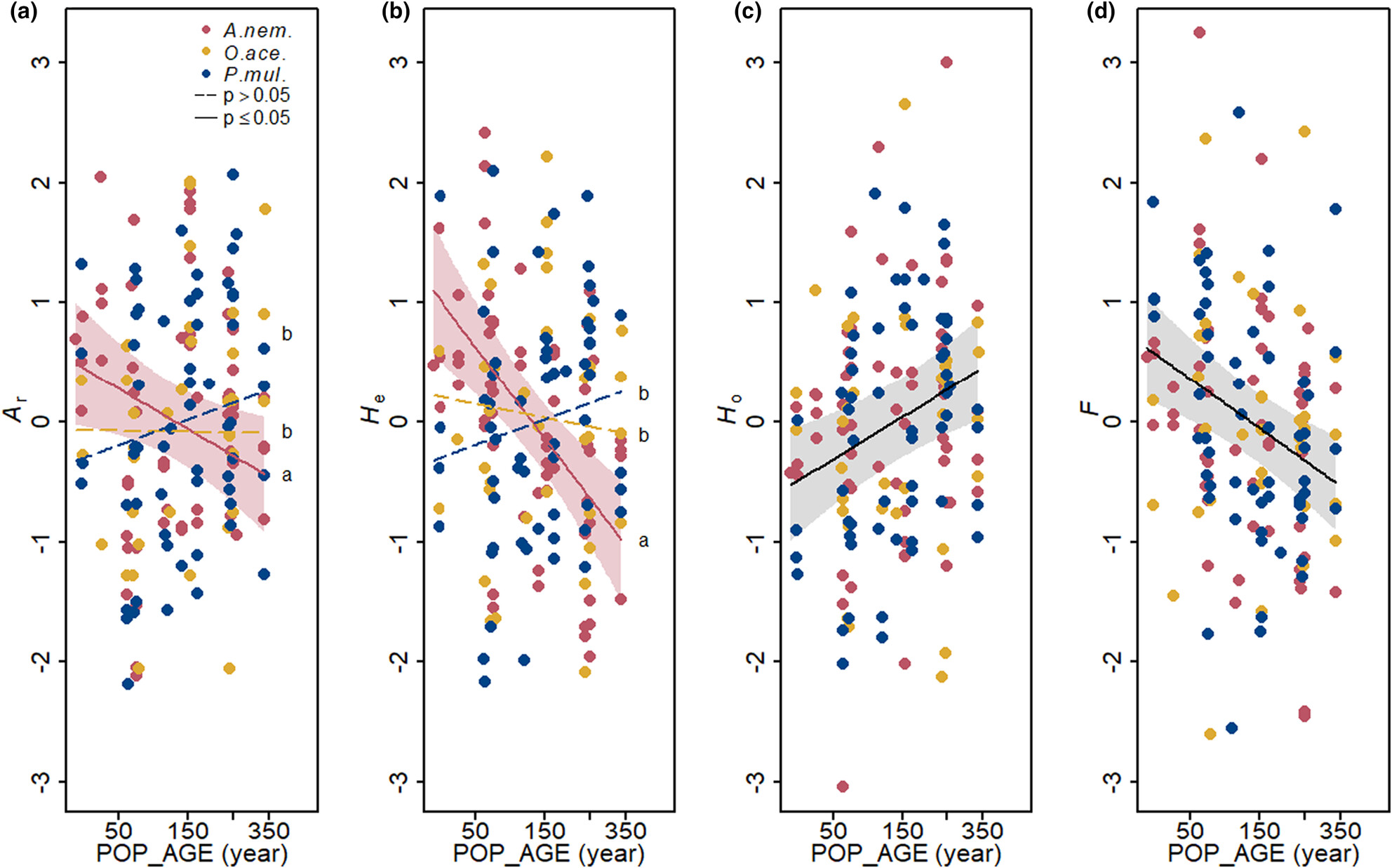
This study applied a multi-species multi-landscape setup to compare the genetic diversity and differentiation among forest herb populations of different ages in agricultural landscapes. We found that the slow-colonizer species populations of different ages can reach a similar genetic structure within decades and thus persist in the long term after habitat disturbance.
Environmental DNA reveals temporal variation in mesophotic reefs of the Humboldt upwelling ecosystems of central Chile: Toward a baseline for biodiversity monitoring of unexplored marine habitats
- First Published: 21 February 2024
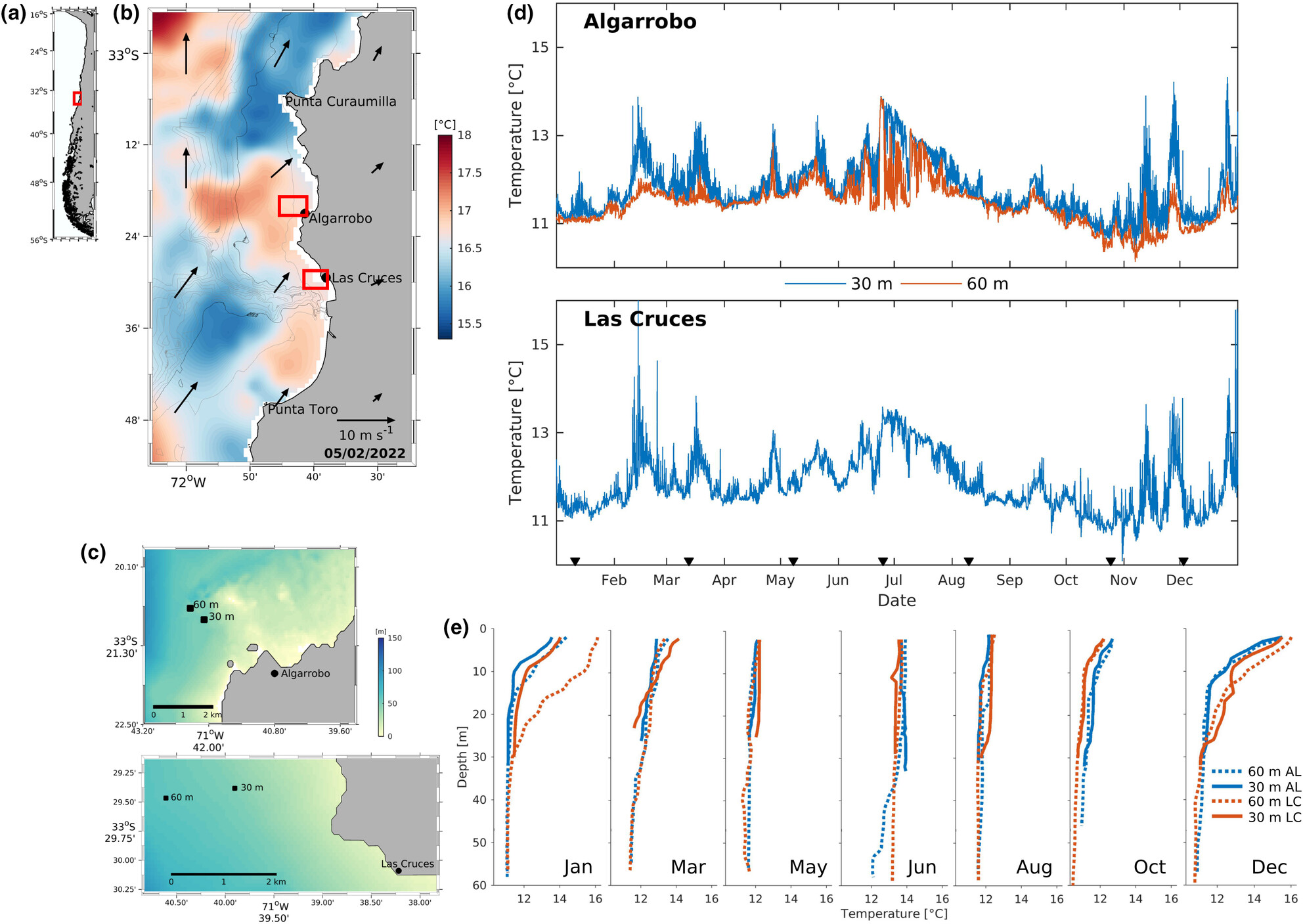
Here, environmental DNA (eDNA) was used to characterize temperate mesophotic reef ecosystems (TMREs) along the central Chilean coast, shedding light on their biodiversity. Through eDNA analysis at different depths and seasons, we identified 42 phyla and 237 orders, with Arthropoda, Bacillariophyta, and Chordata being the most diverse. Notably, TMRE community composition varied seasonally, particularly in summer, emphasizing the potential of eDNA for monitoring these ecosystems and the need to enhance reference DNA databases for the region.
Both evenness and dominant species identity have effects on litter decomposition
- First Published: 26 February 2024
Environment predicts Batrachochytrium dendrobatidis lineage distribution and zones of recombination in South Africa
- First Published: 22 February 2024
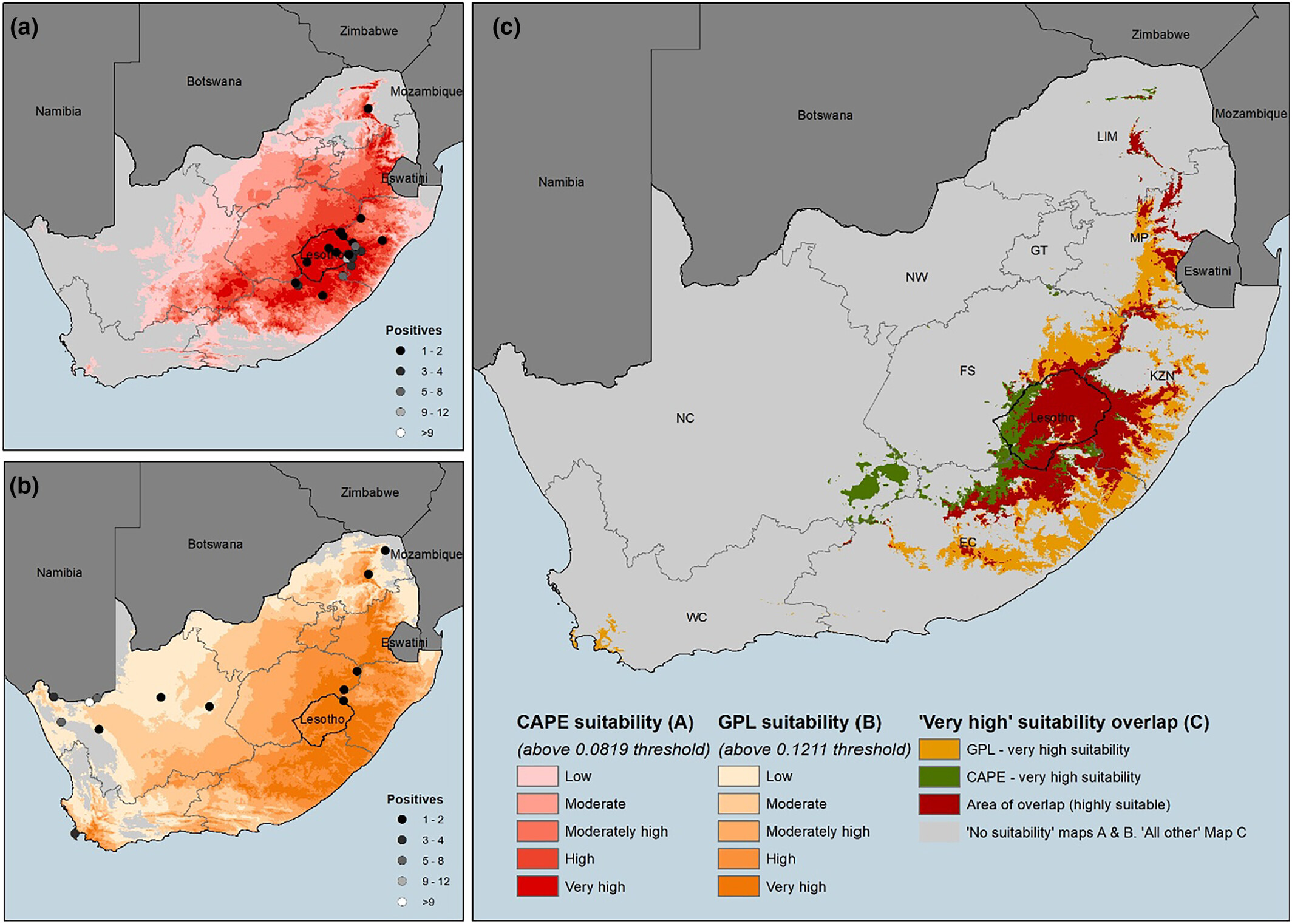
The amphibian chytrid fungus has been seen to be widespread around the globe and consist of different genetic lineages. This fungus has recently been found to be able to form recombinant lineages between these existing genetic lineages, with still unknown consequences for the amphibian host. In South Africa, it was found that the hypervirulent global lineage has a wide environmental envelope creating the possibility for a number of contact zones where interlineage genetic recombination can occur, leading to recombinant lineages and potential new threats to the amphibian hosts.
Temperature and nutrients alter the relative importance of stochastic and deterministic processes in the coastal macroinvertebrates biodiversity assembly on long-time scales
- First Published: 22 February 2024
The influence of climate oscillations and geological events on population differentiation of Camponotus japonicus in the Chinese mainland
- First Published: 22 February 2024
Microparticles from dental calculus disclose paleoenvironmental and palaeoecological records
- First Published: 23 February 2024
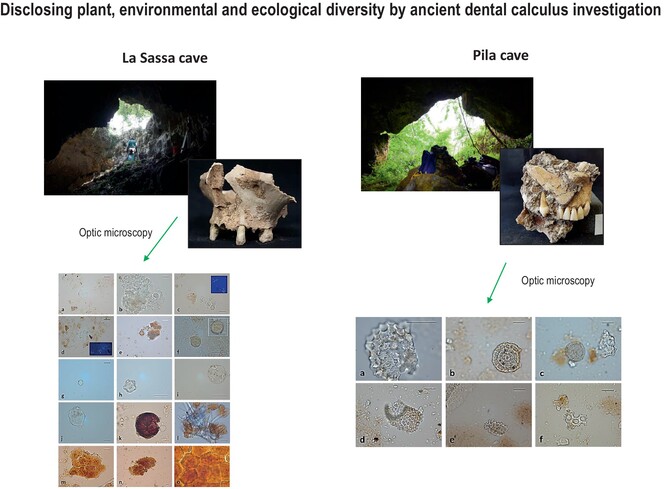
Dental calculus analysis reveals evidence about past dietary ecology and plant diversity. This multi-proxy study focuses on pollen and non-pollen palynomorphs. We detected plants referable to woody habitats and warm-temperate climates. Clues about past ecological and environmental issues of Central Italy were found.
Acoustic monitoring yields informative bat population density estimates
- First Published: 22 February 2024
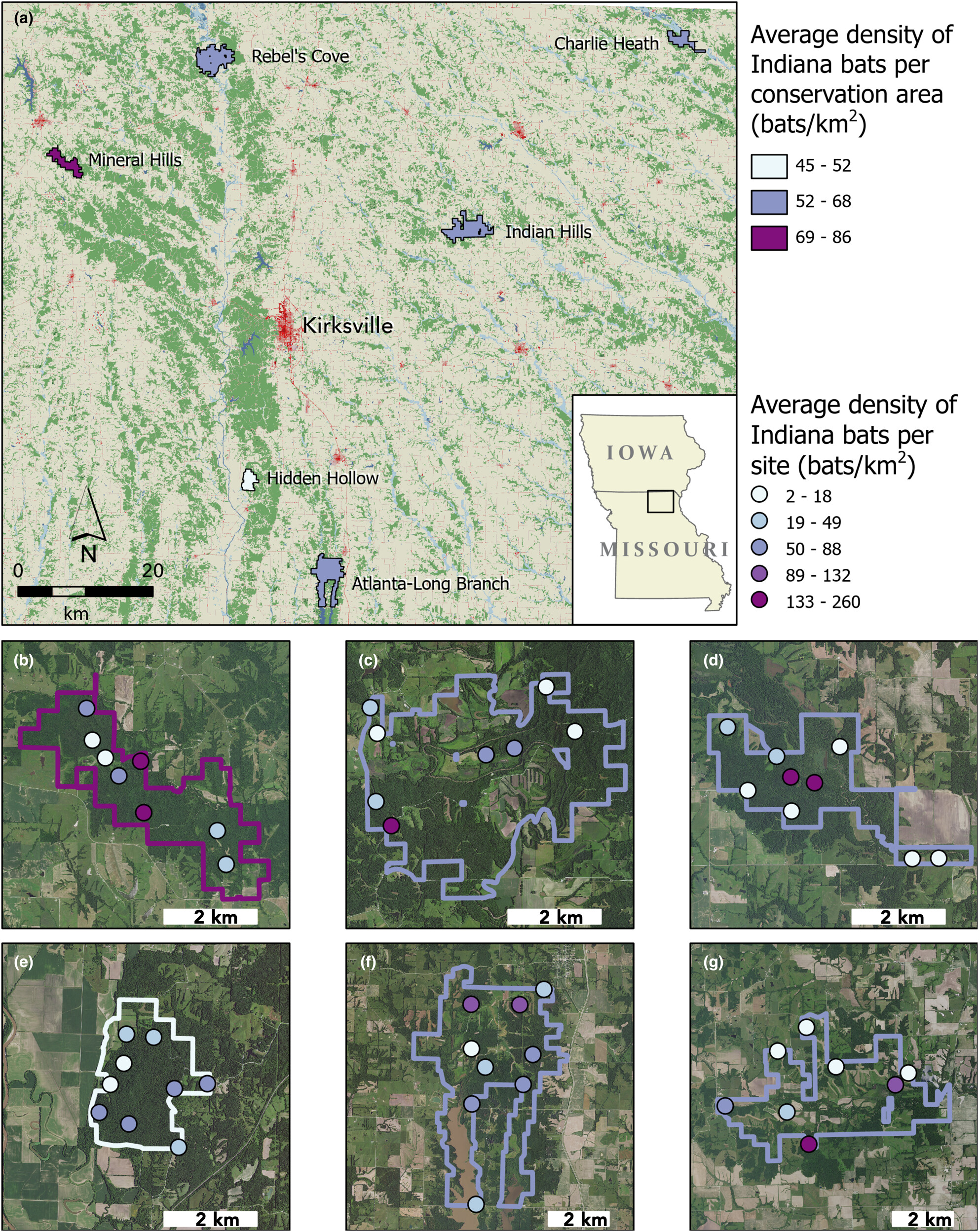
It is essential to measure summer bat population sizes for management, but we lack a reliable method. We assessed the utility of generalized random encounter models for estimating Indiana bat (Myotis sodalis) population density with acoustic data collected at 51 total sites in six conservation areas in northeast Missouri, 2019–2021. Acoustic surveys yield informative density estimates that are responsive to temporal changes in bat population size, which suggests this method may be useful for long-term monitoring.
Among-individual behavioural variation in the ornamental red cherry shrimp, Neocaridina heteropoda
- First Published: 22 February 2024
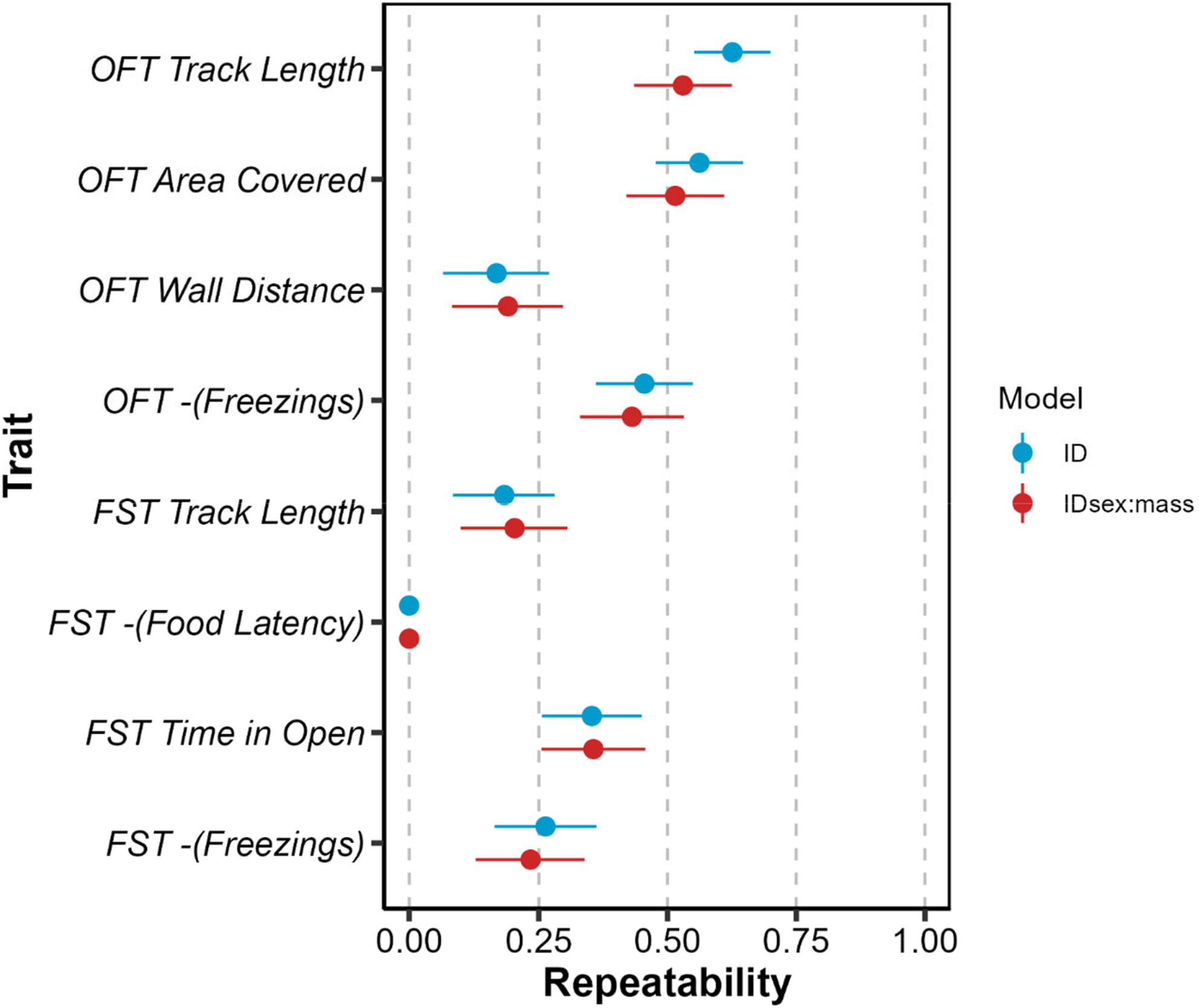
We investigate the structure, sex- and size-dependence of personality variation in the red cherry shrimp, Neocaridina heteropoda, a popular ornamental species that is readily kept and bred under laboratory conditions and is emerging as a decapod crustacean model across subfields of ecology and evolution. Using a multivariate approach, we find individual behavioural differences that are repeatable across time and context, but not fully consistent with our a priori expectations of a shy–bold personality axis. We find some limited support for size-personality association, but no evidence of sexual dimorphism.
Determinants of spring migration departure dates in a New World sparrow: Weather variables reign supreme
- First Published: 22 February 2024
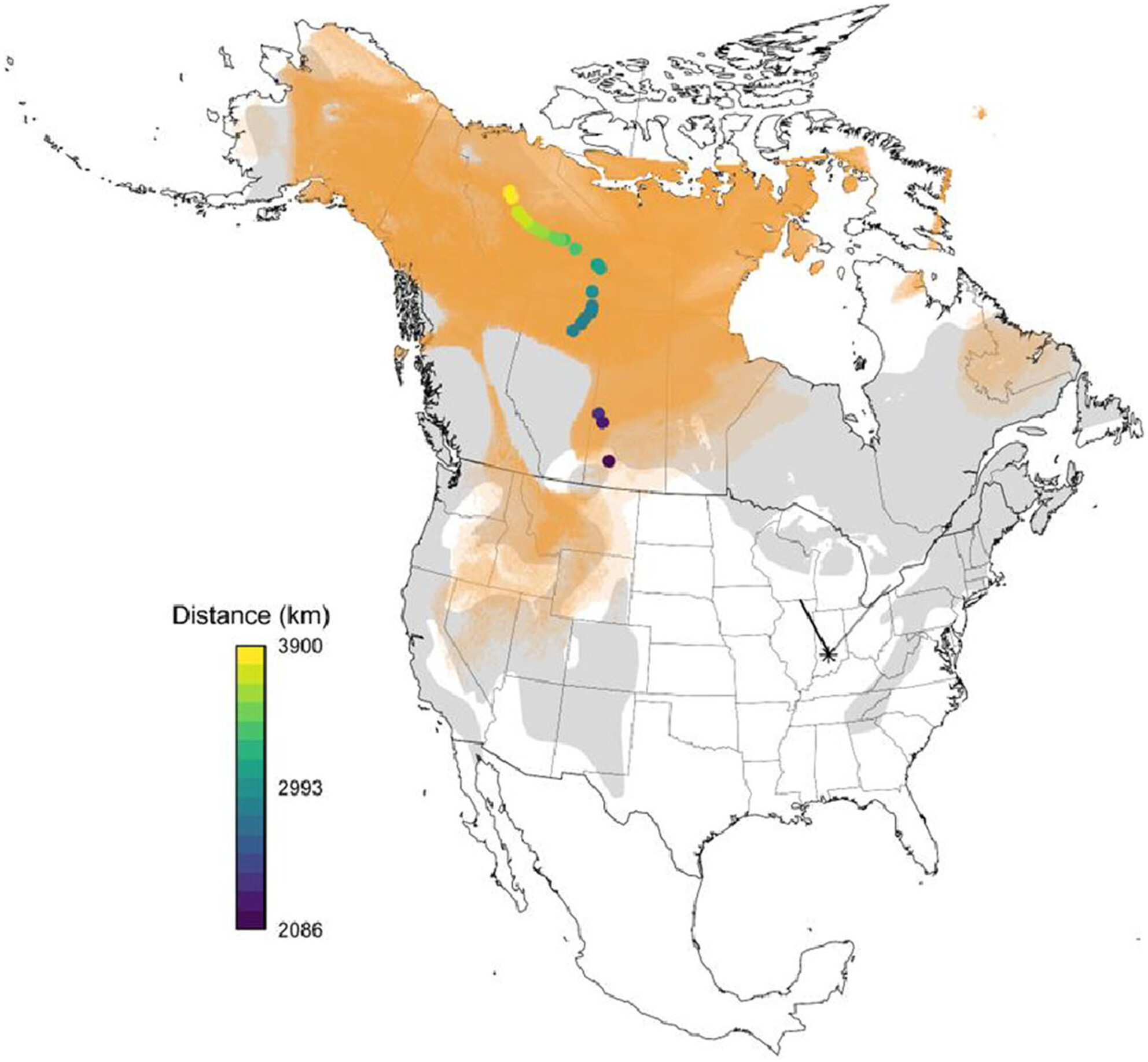
To test for interactions among weather, migration distance, parasitism, and physiology in determining spring departure date, we used Dark-eyed Juncos (Junco hyemalis) as a model migratory species known to harbor diverse and common haemosporidian parasites. The best predictor of spring departure date was average nightly wind direction and a principal component combining relative humidity and temperature. Juncos were more likely to depart for spring migration on nights with largely southwestern winds and on warmer and drier evenings (relative to cooler and more humid evenings).
High-resolution environmental and host-related factors impacting questing Ixodes scapularis at their northern range edge
- First Published: 21 February 2024
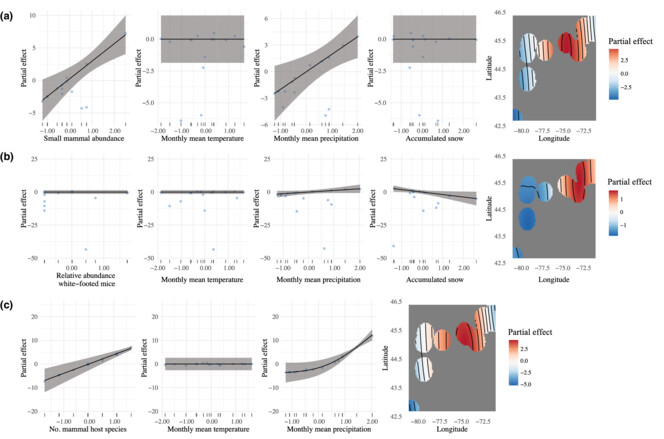
High-resolution environmental and host active surveillance data were concurrently evaluated for their impact on questing Ixodes scapularis abundances in Central Canada. Combinations of abiotic and biotic factors were identified as important drivers of abundances of questing I. scapularis, which included monthly mean precipitation, accumulated snow, and mammal species richness.
Gut microbiome of the sole surviving member of reptile order Rhynchocephalia reveals biogeographic variation, influence of host body condition and a substantial core microbiota in tuatara across New Zealand
- First Published: 22 February 2024
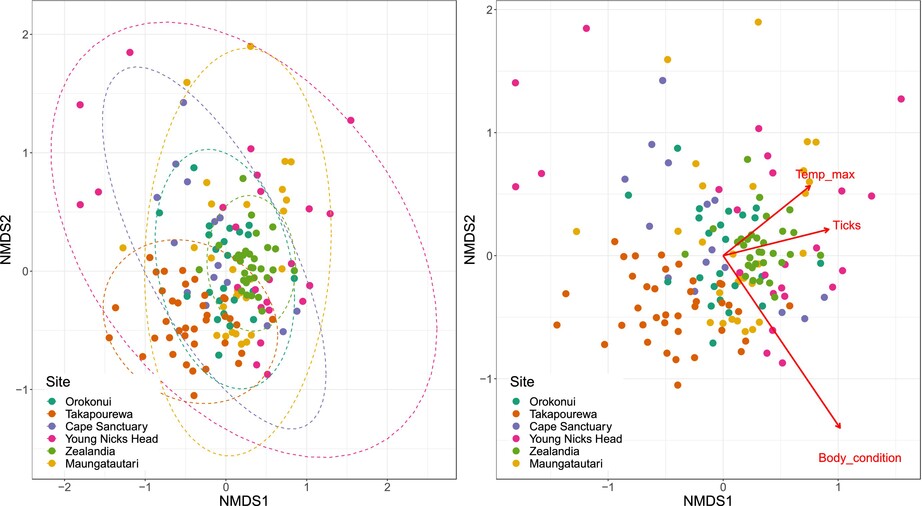
Tuatara, an endemic reptile to New Zealand, are a unique species in both their evolution and ecology, but have declined due to habitat loss and invasive predators. We here examine their microbial community to better understand their ecology and support their conservation. We found 70% of the tuatara gut to be populated with unknown bacterial genera and found significant impacts of temperature, parasitism and tuatara body condition on the tuatara gut community.
Migratory singers dynamically overlap the signal space of a breeding warbler community
- First Published: 24 February 2024
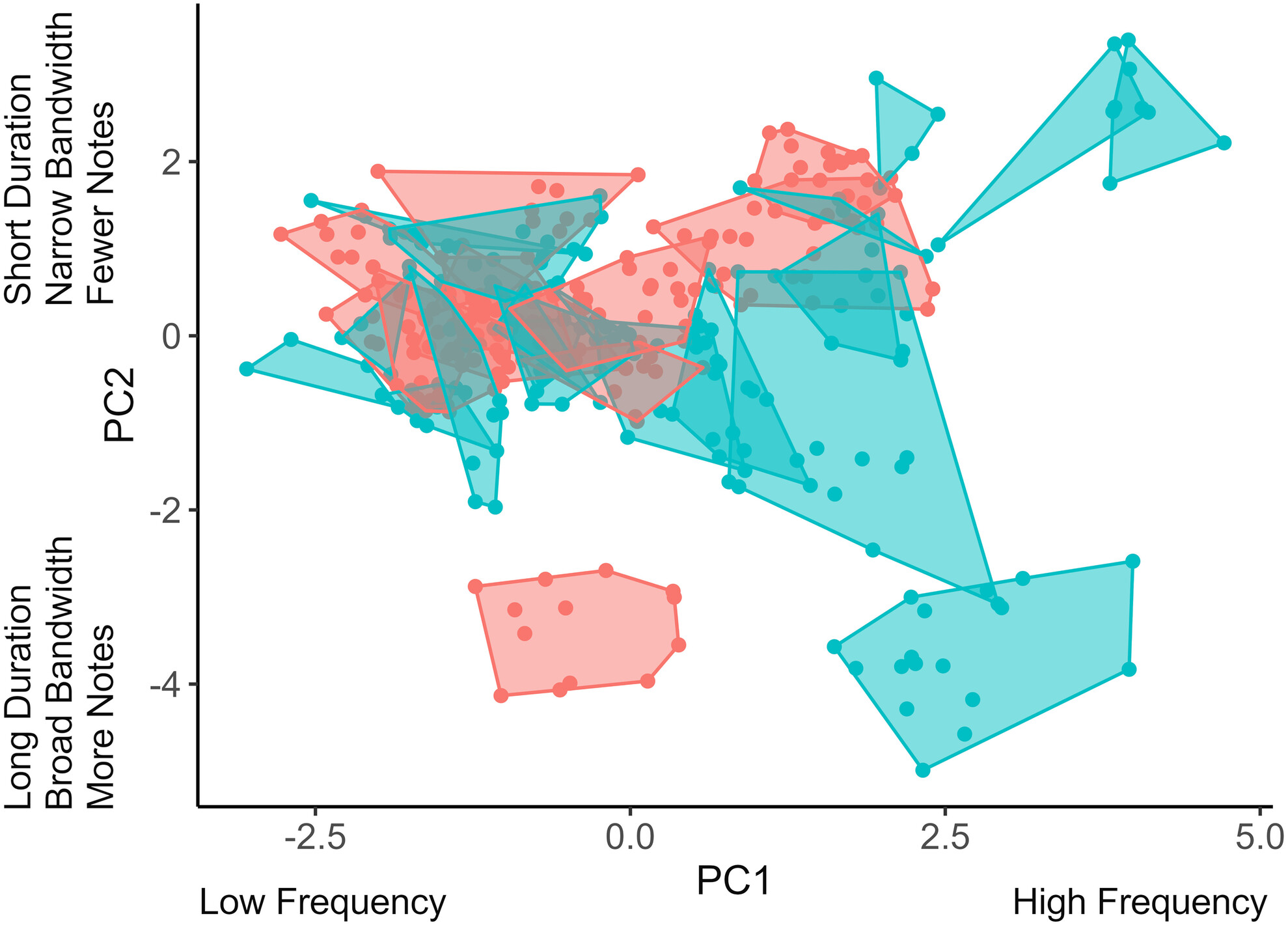
Migratory species inhabit ecological communities for short periods of time, with largely unknown impacts on breeding species and their interactions. Our study explored partitioning of signal space among migratory and locally breeding songbird species, finding that the songs of migrants overlapped those of many breeding species in signal space. Acoustic overlap occurred during critical periods of mate attraction and territorial defense, suggesting that singing by migrants could have important and unknown effects on communication, including signal detection and evolution, in breeding bird communities.
Mating strategies of Vitex negundo L. var. heterophylla (Franch.) Rehder (Lamiaceae): A mixed mating system with inbreeding depression
- First Published: 26 February 2024
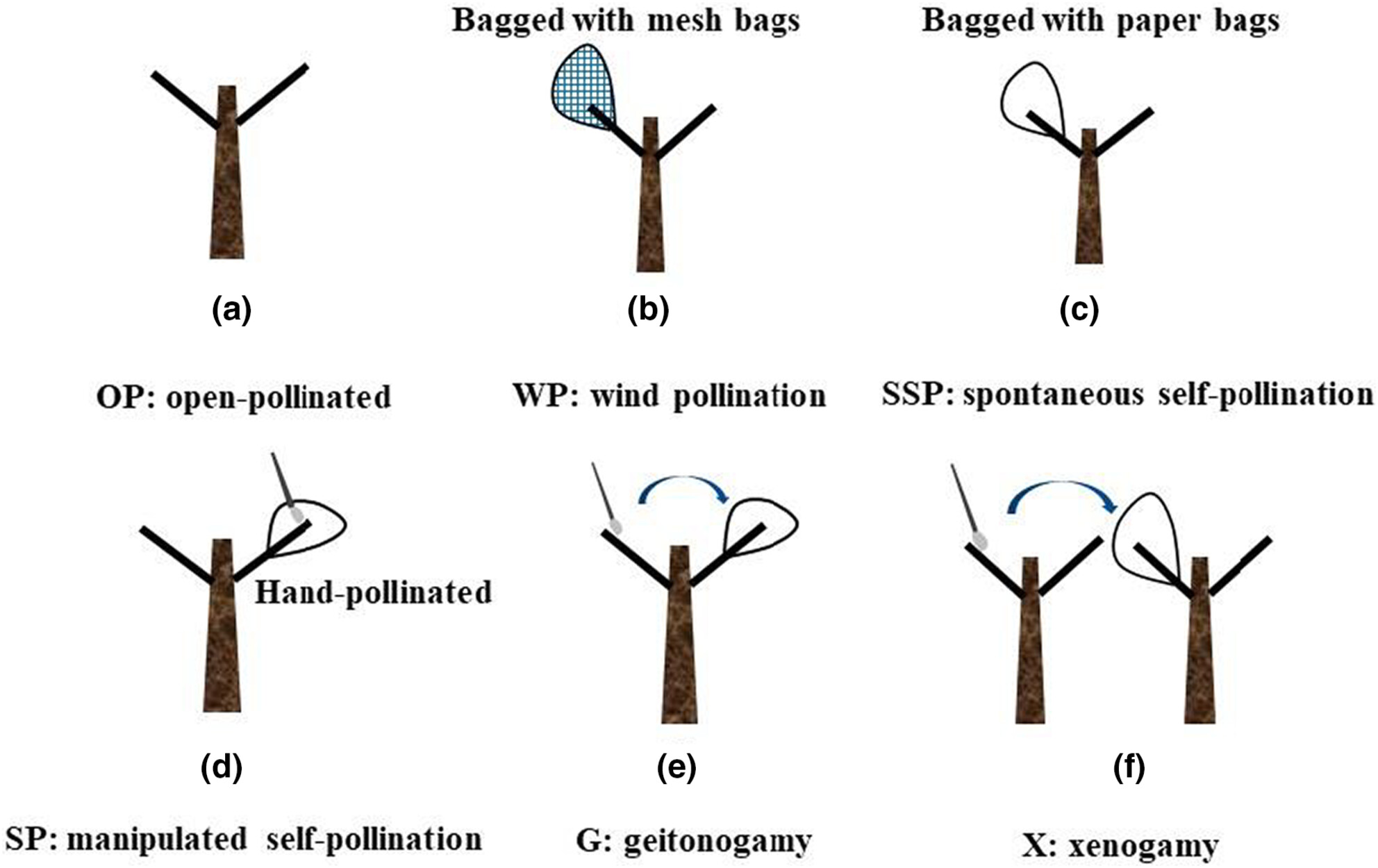
We evaluated reproductive success through artificial pollination to explore the reproductive characteristics of Vitex negundo var. heterophylla for the first time. From the results of fruit set, there is a mixed mating system dominated by outcrossing in V. negundo var. heterophylla accompanied by self-compatibility, and it cannot carry out autonomous selfing.
Fewer bowl traps and more hand netting can increase effective number of bee species and reduce excessive captures
- First Published: 26 February 2024
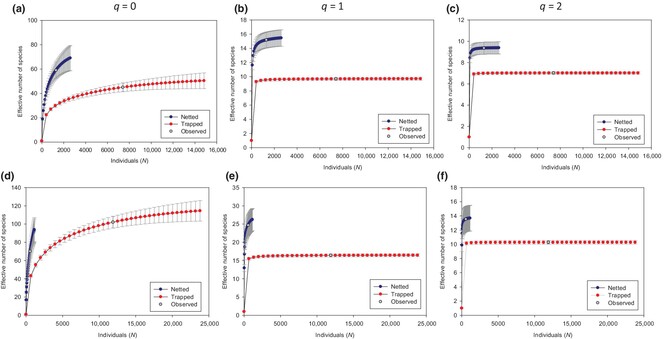
Reports increasingly point to substantial declines in wild bee abundance and diversity, yet there is uncertainty about how best to measure these attributes in wild bee populations. We compared two common survey techniques, trapping using cups filled with soapy water and targeted netting. Although both methods are needed to obtain the most complete species list, shifting sampling emphasis from trapping to netting will result in fewer bees, but more bee species captured.
Phenotypic plasticity in mass loss during chick rearing in the European starling (Sturnus vulgaris)
- First Published: 23 February 2024
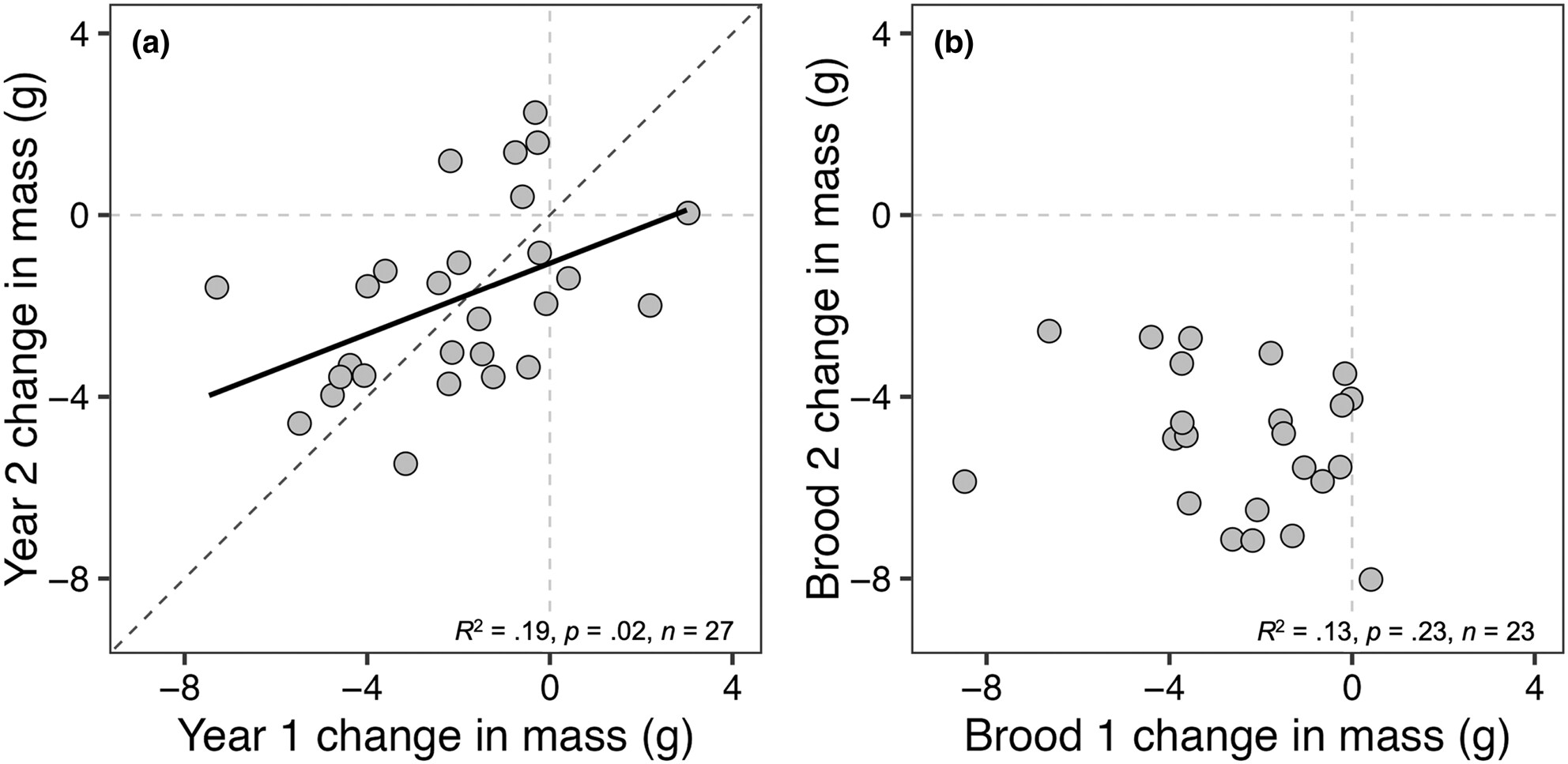
It has long been recognized that avian mass loss during breeding could be adaptive, though many studies still commonly interpret mass loss as evidence of “stress” or a cost of reproduction. Here, we used a long-term dataset from a breeding population of European starlings to investigate the ecological and/or life-history contexts under which mass loss may be viewed as a “cost” or an adaptive strategy and, specifically, test whether mass loss during chick rearing represents a phenotypically plastic trait that varies predictably in relation to ecological context and individual quality. Overall, we found no support for the idea that mass loss reflects “reproductive stress” in our system and instead suggest that mass loss may represent an individually plastic trait that individuals use to “level the playing field” and individually optimize reproductive effort and fitness.
The thermal breadth of temperate and tropical freshwater insects supports the climate variability hypothesis
- First Published: 23 February 2024
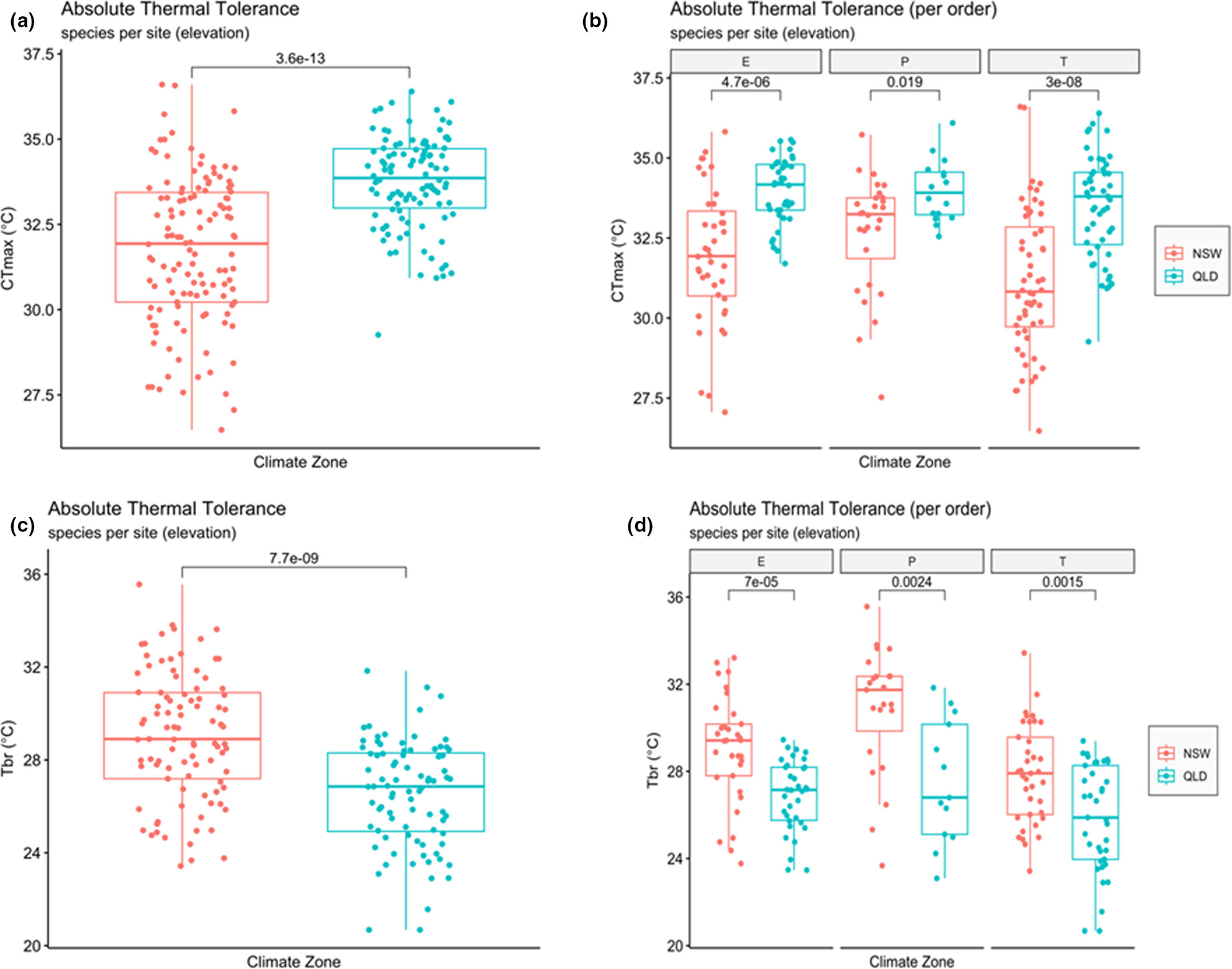
We measured the critical minimum and maximum thermal tolerances of freshwater insects of the orders Ephemeroptera (mayflies), Plecoptera (stoneflies) and Trichoptera (caddisflies) along a temperate and a tropical elevational gradient in eastern Australia. Temperate species generally tolerated a wider range of water temperature than the tropical species, and thermal breadth was positively correlated with annual temperature range. Our findings support the climate variability hypothesis that long-term exposure to high annual scale variability in temperature leads to the evolution of wide thermal tolerance.




